
Home » Travel Guides » Spain » 15 Best Things to Do in Córdoba (Spain)

15 Best Things to Do in Córdoba (Spain)
A thousand years ago Córdoba ( Spain ) was the largest city in the world, with a population three times its current 320,000. It was the capital of the Caliphate of Córdoba, which for several hundred years controlled much of the Iberian peninsula. The Umayyad Caliphate is long gone, but its heritage is visible throughout the historic centre, best represented by the spellbinding Mosque-Cathedral.
Be sure to wear comfortable shoes, as you won’t be able to resist wandering the labyrinthine cobblestone streets of the Jewish Quarter or the enigmatic ruins of the Medina Azahara just outside the city.
Let’s explore the best things to do in Córdoba :
1. Mosque–Cathedral of Córdoba

One of Spain’s cultural wonders, this astounding complex dates to the 900s at a time when Córdoba was Europe’s leading city for science and culture under the rule of Emir Abd-ar-Rahman.
There could be no finer symbol of this golden age than the forest of columns and horseshoe arches that greet you upon entry, with their two-tone brick and stone pattern.
There are 850 columns in total, and the effect of the sunlight that filters through the hall is unforgettable, as is the Mihrab (apse) with its gilded calligraphy.
The mosque became a church as soon as Córdoba was retaken in 1236, and from then a number of chapels were built, culminating with the cathedral nave in the 1500s.
2. Patio de los Naranjos

The main entranceway to the complex is the courtyard where Muslim worshippers would perform their ablutions before prayer.
Not a great deal has changed since then: The fountains are still here, as is the grid of 98 orange trees that are particularly pretty and fragrant in spring when they’re in bloom.
On the north west and east sides of the courtyard are arcaded galleries and if you walk along these and look up you’ll see their original delicately-carved coffered ceilings.
On the south side are the 17 horseshoe arches that lead to the Mosque.
3. Alcázar de los Reyes Cristianos

This marvellous royal compound has had a long and complicated history.
It was the site of a Visigothic fortress before falling to the Umayyad Caliphate, under which it was expanded in the early-medieval period as the city around it thrived.
Gardens, courtyards, baths and the largest library in Western Europe were all added.
After Córdoba fell to the Christian forces in the 13th century it became a palace and the seat of the Castilian Royal Court.
Later it was the headquarters of the inquisition for three centuries.
So as you can tell there’s a lot to discover! The gardens alone sprawl across 55,000square metres and were originally fed by the great Albolafia waterwheel that helped channel water from the Guadalquivir River.
Get your guided tour skip-the-line ticket by clicking here
4. Historic Centre

It will be very easy to lose yourself here – in a good way! Córdoba has one of the largest old-towns in Europe, and it’s protected by UNESCO. This city is famed for its patios, large interior courtyards that offered needed shade to the Romans and then the Moors.
Also devised to help Córdoba’s citizens keep cool are the twisting alleys, which are remain cloaked in shadow for much of the day.
Away from the big monuments just see where your curiosity carries you: A couple of the courtyard doors will be open and you can peek inside, or chance upon a secluded little square with orange trees.
5. Jewish Quarter

North and west of the Grand Mosque is the city’s Jewish quarter, which retains the street-plan it had as a ghetto hundreds of years ago.
The Jews were expelled from Spain in the late-15th century, but during the Caliphate Córdoba’s Jewish population thrived and it was home to Maimonides, the 12th-century Sephardic polymath.
In the 21st century it’s quite a posh part of the city, home to the Calleja de las Flores (little street of flowers), and true to its name it’s fragrant and colourful at any time of year.
The main indication that there was a Jewish population is the Synagogue, one of only three left in Spain.
6. Roman Bridge

Crossing the Guadalquivir along this Augustan footbridge is just one of those things every visitor to Córdoba has to do.
The panoramas are postcard-worthy, whether you’re on the south bank viewing the Calahorra Tower and 16 arches with the Great Mosque in the background, or making the exciting crossing to the old city.
It dates right back to the 1st century, but the structure today is completely medieval.
This helped earn it a role in Season 5 of the TV show, Game of Thrones.
Come at sunset when the stones of the bridge and cityscape are bathed in an orange glow.
7. Calahorra Tower

This is a Moorish fortification from the time of the Almohad Caliphate in the early-13th century and guards the southern entrance to the Roman Bridge.
Reinforcements were made in the 14th-century during the reign Henry II of Castile, and that’s exactly how it looks today.
It did a good job of keeping Henry’s brother Peter the Cruel out of the city in 1369 before becoming a prison and then a girl’s school in the 1800s.
Duck inside for a great little museum about life in Al-Andalus, with 3D presentations of the city in this era and insight about how Christians, Jews and Muslims coexisted in the city.
8. Medina Azahara

One of the world’s most beautiful vanity projects, this Moorish city to the west of Córdoba was built by Abd-ar-Rahman III to put the other rulers across the Islamic world in the shade.
It was to be the capital of the Caliphate, but despite 25 years of construction only stood for 65 years: It was sacked by North African Berbers and forgotten until 1911. What’s amazing is how well the site has been restored, as you pass through a mosque, marble-paved gardens, offices, bath houses, dignitary’s houses and military structures.
The hall is particularly special, where the Caliph received visiting politicians and civil servants.
You can book a guided tour of Medina Azahara right here .
9. Palacio de Viana

Get to the Santa Marina district to see this sumptuous Palace-Museum and its 12 exquisite courtyards.
The building is from the 14th-century with a renaissance facade that was added a century later.
A Spanish noble family that had owned the building for generations donated it to the bank Cajasur, which opened it up to the public in the 80s.
You’ll see their art and furniture collections in situ and tread with awe through the medieval internal courtyards, each with a slightly different theme and story to tell.
10. Archaeological Museum

When this attraction was being expanded a few years back the builders happened upon a Roman theatre, the largest in Spain, which was a happy coincidence! This site is has been fully excavated and is now a key part of the museum.
Most of the museum is in the eight halls and three courtyards of a renaissance palace that was home to the Páez de Castillejo family.
Collections go back to prehistory and up to medieval times, but the best bits are from the Iberian and Roman periods.
The Iberian Lion of Nueva Carteya is a must: It’s from the 4th century BC and was discovered when a motorway was being built.
11. Plaza de la Corredera

After your adventure through Córdoba’s exotic ruins and old city, here’s a reminder that you’re still in Spain.
It’s a classic Castilian plaza that was built in the late-1600s by the Salamancan architect Antonio Ramós Valdés, and measures 113 metres by 55. As with all Spanish central squares it’s one of the centres of daily life and at all sides are arcades that let you escape the glare of the sun in summer.
For many years the city’s bullfights were held right here and then it was the site of the city’s food market.
Now it’s a vast open space: A fine venue for summer concerts and the elegant backdrop for a stroll at any other time.

This amenity, a couple of minutes on foot from the mosque.
isn’t original, but instead recreates the experience of visiting real Moorish baths.
In the Caliphate there were literally hundreds of hammams around the city, but nearly all were demolished because of their dodgy reputation.
The building, with its horseshoe arches and gemoetric tiles, is a faithful copy of a bathing complex and was built in 2001, so it’s worth a visit for that alone.
And after days of trekking through the city streets you could probably do with a massage or relaxing in these soothing waters for a while.
13. Patios de Córdoba

May is when Córdoba celebrates, and in the 2nd week of the month the city throws open the doors to its many interior courtyards.
It’s the most fragrant time to be in the city, when jasmine and orange blossom fills the air and the residents compete to make their courtyards the best in the city.
It’s a fabulous way to nose around 50 or more courtyards that you wouldn’t normally see, and people take the competition very seriously, decorating their patios with colourful flower arrangements and mosaics.
The city’s many convents and other religious buildings also take part, and at night the city hums with the sound of flamenco guitar.
14. Feria de Córdoba

On the back of the Patios festival is Córdoba’s annual spring fair, which has its roots in the 13th-century.
It runs for a week at the end of May and is centred on the recinto, fairgrounds on the southeastern edge of the city, where huge Moorish-style arches invite you in.
There are some 100 tents, or casetas, where people go to eat, drink and make merry from the early afternoon until dawn the next day.
Sevillanas, classic dances influenced by flamenco and Castilian folk, are integral to the celebrations.
Also part of the fun are traditional fairground rides, equestrian shows, firework displays and all kinds of old-time amusements.
15. Aquasierra

Córdoba is landlocked, far from the Mediterranean, and when you factor in the sub-tropical climate with scorching highs that hit the 40s in summer you’re going to need to cool off.
The only water park in the province is one way to do it, and it’s open from June to September.
Teenagers and little ones will be most pleased with the seven plunges and the massive pool with an artificial beach.
If adults shell out a little more they can get a sunlounger and table at the VIP area, away from the crowds and noise.
Further reading: Best Destinations in Spain
15 Best Things to Do in Córdoba (Spain):
- Mosque–Cathedral of Córdoba
- Patio de los Naranjos
- Alcázar de los Reyes Cristianos
- Historic Centre
- Jewish Quarter
- Roman Bridge
- Calahorra Tower
- Medina Azahara
- Palacio de Viana
- Archaeological Museum
- Plaza de la Corredera
- Patios de Córdoba
- Feria de Córdoba

Visit Cordoba: Top 15 Things To Do and Must-See Attractions
Things to do in cordoba.
You’re planning to visit Cordoba during your next trip in Spain?
Cordoba, along Seville and Granada is one of the three most visited cities of Andalusia, and it is not by chance!
Visiting Córdoba in 1 or 2 days is discovering one of the most beautiful old town of Andalusia, as well as prestigious monuments like the mosque-cathedral of Córdoba or the Alcázar.
It’s also the perfect destination for a day trip from Seville (it’s only at 40 minutes by train!).
In order to help you plan your stay , I have created this guide of the best things to do in Cordoba , with all the best places to visit and points of interest. If you’re planning to spend more than a day in town, you should also have a look at the list of my favorite accommodations in Cordoba , for every budget. It’s located at the end of the article.
And as always, I will also give you my best tips to make the most out of your trip!
So, what are the best things to do in Cordoba? Where to stay?
Discover the top 15 must see attractions in Cordoba now!
1. Jewish Quarter of Cordoba (La Judería), the heart of the city
2. the mosque–cathedral of córdoba, 3. alcázar de los reyes cristianos, 4. cordoba synagogue, 5. chapel of san bartolomé, 6. the royal stables of cordoba, 7. the bridge gate, 8. the roman bridge, 9. calahorra tower, 10. plaza de las tendillas, 11. see the roman temple of cordoba, 12. plaza de la corredera, 13. viana palace, 14. visit cordoba’s museums, 15. try the salmorejo: cordoba’s typical dish, best things to do around cordoba, one day in cordoba, 2 days in cordoba, where to stay in cordoba, cordoba: tourist map, my impressions about cordoba, you’re traveling in andalusia these articles will help you, visit cordoba: the 15 must-see attractions.
To enter the historic center of Cordoba, you will pass through the Almodovar Gate, surrounded by its high walls and battlements. It marks the entrance to La Judería, the old Jewish quarter of Cordoba.
Stroll through its typical Andalusian streets with whitewashed facades and flowery balconies. Don’t miss la calleja de las Flores, Cordoba’s most famous little alley, which leads to a nice view of Cordoba’s Mosque-Cathedral.
This neighborhood is a UNESCO World Heritage Site and includes the majority of historical monuments to visit in Cordoba. It’s the place where you will find the city’s main attractions such as the Mosque Cathedral and the Alcázar . I will tell you more about them below.
In this area, you can also shop in the numerous lather crafts and jewellery stores.
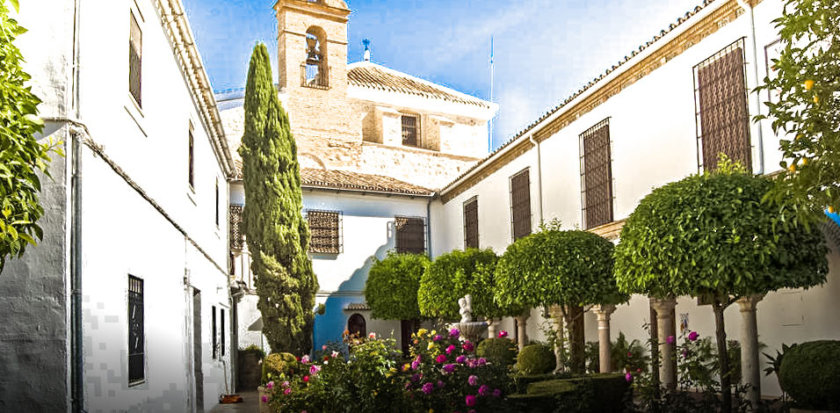
The mosque-cathedral of Cordoba (also sometimes called Mezquita ) is the city’s emblematic monument and certainly the most impressive.
Built in 785 by a Muslim emir on the ruins of a church, it has been enlarged and embellished over several centuries. Nowadays, it’s considered one of the most beautiful examples of Islamic art in Spain.
Following the Christian conquest, a cathedral was erected at its center, creating a singular architectural mix. Inside you can admire columns and endless red and white arcades, glorified by the beautiful lighting.
Spending an hour or two photographing the columns from every angle is the dream of every photographer.
This is one of the most impressive monuments I’ve had the opportunity to see, the atmosphere is really special there. You will love it!
All the important information you need to visit the Mosque Cathedral of Cordoba can be found on the Mezquita’s official website.
- Buy your tickets at the vending machines, to avoid the big waiting lines. They are located right next to the ticket booth.
- If you know the exact date of your trip to Córdoba, you can buy your tickets in advance here . They also include an amazing guided visit of the mosque-cathedral.
- Visit the Mezquita around 12:45 there are a lot less people and you can take beautiful pictures of the arcades without anyone around.
- It is also possible to climb the minaret of the Mezquita for 2€
And last but not least, here is a great tip to save money:
If you plan to visit Cordoba’s 3 main monuments (the Mosque-Cathedral, the Alcazar and the Synagogue) in one day, the best is to book a guided tour of the 3.
To book it, you just have to click on the following button:
Last but not least, if you also plan to visit Seville and Granada in addition to Córdoba , you can buy the Andalusia Pass. It includes:
- A skip the line ticket for the Alcazar of Seville
- A skip the line ticket for the Alhambra of Granada and the Nasrid palaces
- A guided tour of the Mosque-Cathedral of Cordoba
- An audio guide for Seville and Granada, to download on your smartphone.
To book your Andalusia Pass , you just have to click on the button below:
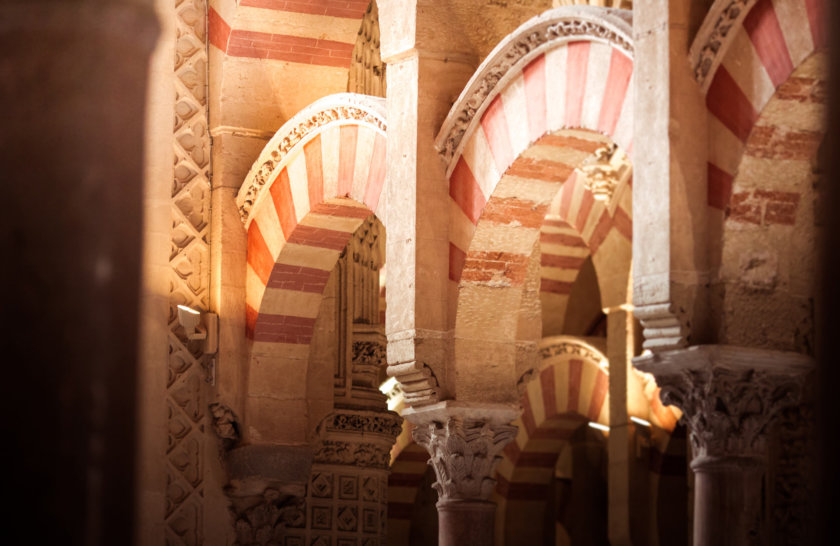
This is the other must-see monument when visiting Cordoba: the Alcázar de los Reyes Cristianos (“Alcázar of the Christian Kings” in English) . It served as a residence for Catholic kings, but was also the headquarter of the Holy Office during the inquisition. At that time, it was converted to a prison.
You can start your visit by climbing into one of the Alcázar’s 4 towers. You will end up on the ramparts, with a unique panorama of the city to enjoy.
Then go back downstairs to visit the interior of the Alcázar of Cordoba, with its mosaic salon, the royal baths and the moorish patio. You can then enjoy the highlight of the visit, the beautiful gardens. Large paths lined with trees and orange trees with beautiful fountains and ponds in the center.
Visiting the gardens is truly relaxing and refreshing, the perfect opportunity to have a break in the shade and quiet.
For only 4.50 €, the visit is really worth it. And if you want additionnal historical information during your visit, I highly recommend you to book a guided tour by clicking here (the guides are really good). The Alcazar of the Christian King is a must-do, very relaxing after a day of visit in Cordoba!
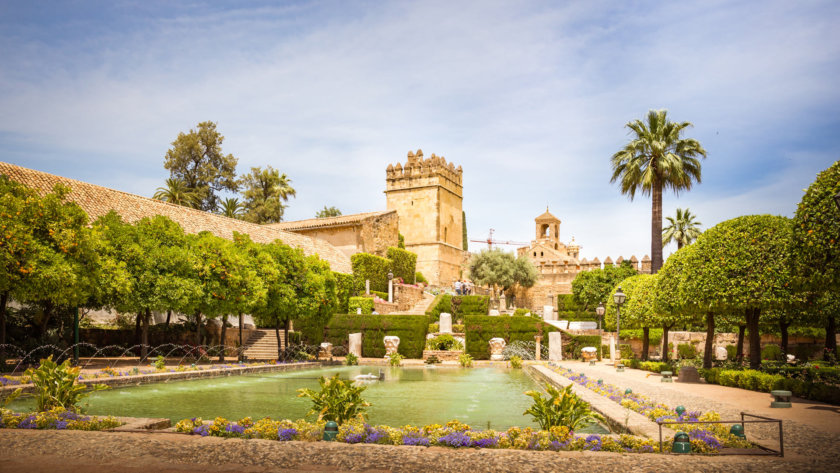
Located in the Jewish quarter, it’s the only existing synagogue in Andalusia and the third best preserved in Spain. Although small, it’s worth a visit especially for the nice stucco decorations of the main hall.
Until the expulsion of the Jews, Cordoba Synagogue served as a temple. Later, it has been used as a hospital and school before being recognized as a national monument in the 19th century.
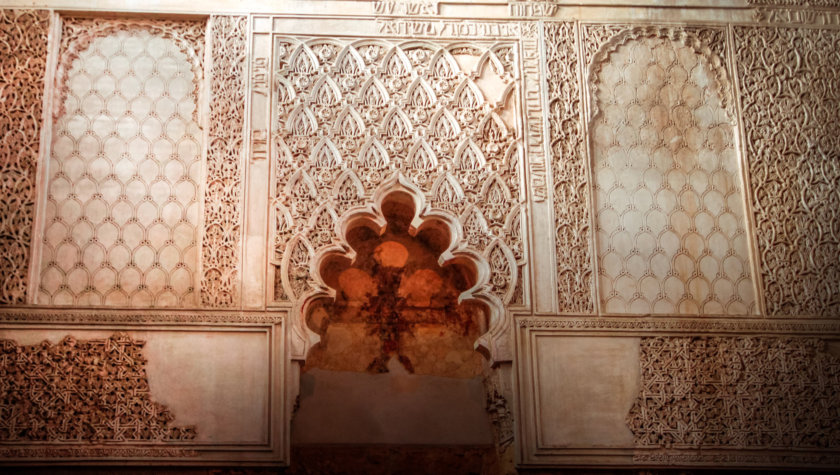
Very close to the synagogue, you can find the chapel of San Bartolomé. This chapel is a perfect example of Mudéjar art and architecture. Located inside the Faculty of Arts, it was built in the 14th century. Inside, you can admire its unique nave with a ribbed vault and walls decorated with earthenware tiles.
You’re going to Cordoba?
You probably know it: the hardest part of planning your trip is to find an hotel offering a good value for money!
The closer you get to your travel dates, the harder it will be to get a good deal. Lots of people will be visiting Cordoba on the same dates as you , so you can be sure that the best deals are booked extremely quickly!
Hopefully, there is a pretty simple solution to this problem: do like me and book your hotel as early as possible!
So, my best advice is to take 5 minutes (now) to have a look at the list of travelers’ favorite hotels in Cordoba.
And if you see a good offer, book it!
Most hotels offer free cancellation, so it’s quick, easy, and you will avoid the the inconvenience of finding nothing but mediocre rooms at exorbitant prices.
To check the current best deals for your hotel in Cordoba, simply click on the green button below 😎:
Once you’ve booked your hotel, it will be time to continue reading this guide and find out more about the best things to do in Cordoba!
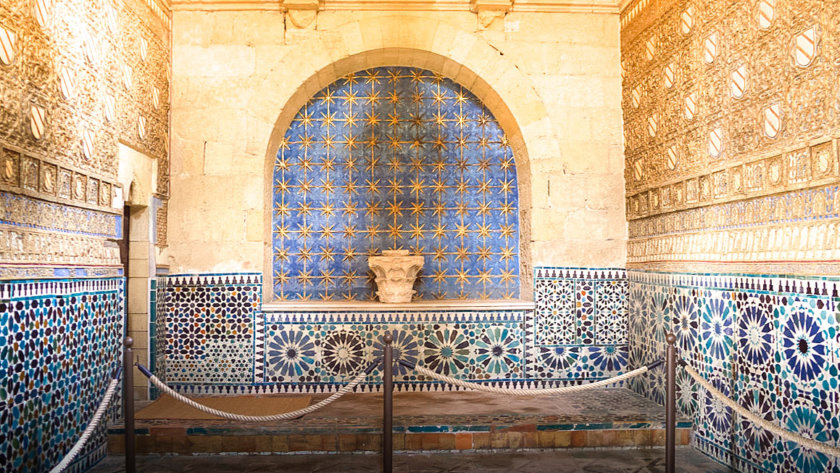
On a piece of land belonging to the Alcázar, you can find the royal stables of Cordoba (las caballerizas reales in Spanish) founded in 1570 by King Felipe II, a horse lover.
You may not know it, the famous race of Andalusian horses was created here.
The stables can be visited and you can also attend a horse show, held from Wednesday to Saturday at 9pm for about 17 euros.
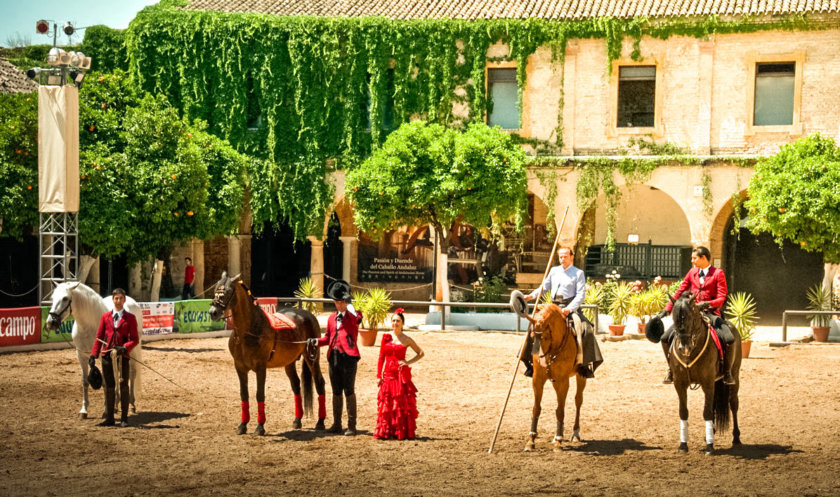
The bridge gate is as its name suggests, located just opposite the Roman bridge of Córdoba. It was built in the 16th century on the site of ancient Roman and Moorish gates. Pretty aesthetic, I must say!
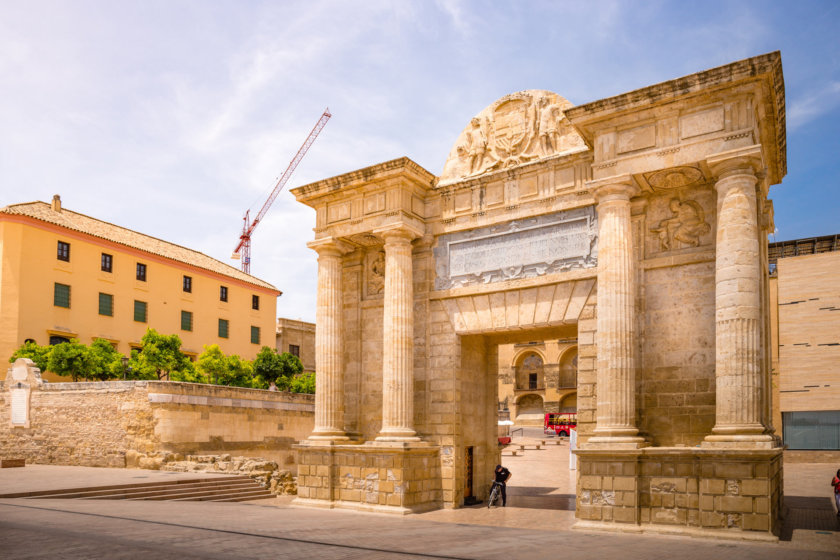
Now let’s head to the Roman Bridge, another must-see monument in Cordoba, great for beautiful shots of the old city, especially at sunset. The complex formed by the bridge over the Guadalquivir river and the view of the mosque-cathedral is one of the most beautiful views of the city.
Built in the 1st century BC, it was the only bridge in the city for nearly 20 centuries and the main access to Cordoba.
Crossing the bridge will take you directly to the Calahorra Tower.
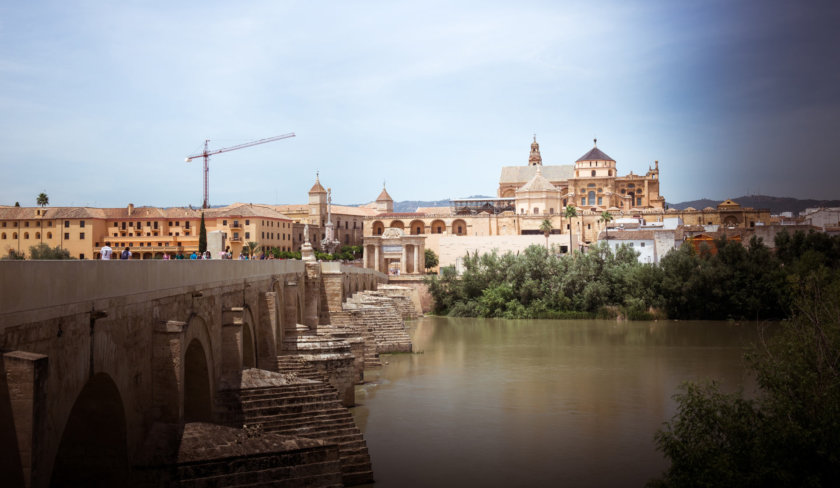
At the end of the Roman Bridge , you will find a defensive tower from the Muslim era: the Calahorra Tower
Declared as a national historical monument, after serving as a school and prison, it now houses the museum of Al-Andalus. This museum is about the coexistence of Jews, Muslims and Christians, a topical theme. You can also see a model of the mosque and access the tower’s terrace to enjoy the view of the bridge and river.
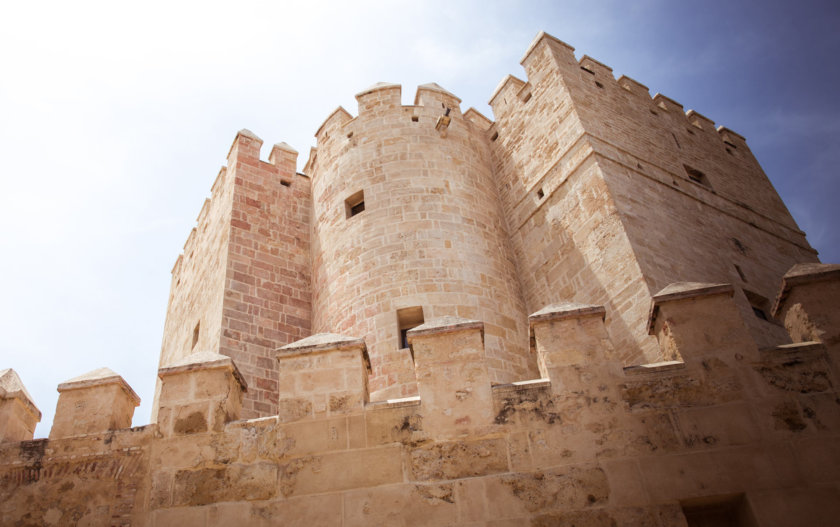
The plaza de las Tendillas is a very pleasant square, ideal for a break. Its water jets and fountain makes it even more enjoyable in Andalusia hot weather! I suggest you to extend this moment of relaxation in one of the many bars and restaurant terraces around. Don’t miss the magnificent buildings facades on the square.
If you’re staying 2 days in Cordoba , it’s also a good place to visit in the evening, when the fountains are illuminated and the Andalusian night life starts around tapas and sangria.
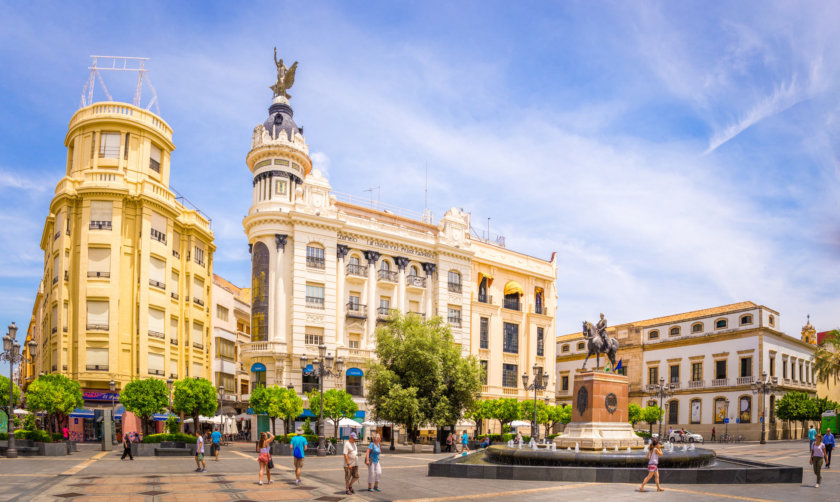
As it’s not far from the plaza de las tendillas, you should definitely go have a look at he the Roman temple of Cordoba. Located in front of the town hall, this temple impresses with its dimensions. The are no guided visits available, you can just see the columns from the street but since it is on the way between the two most famous squares of Cordoba, it is worth a brief visit.
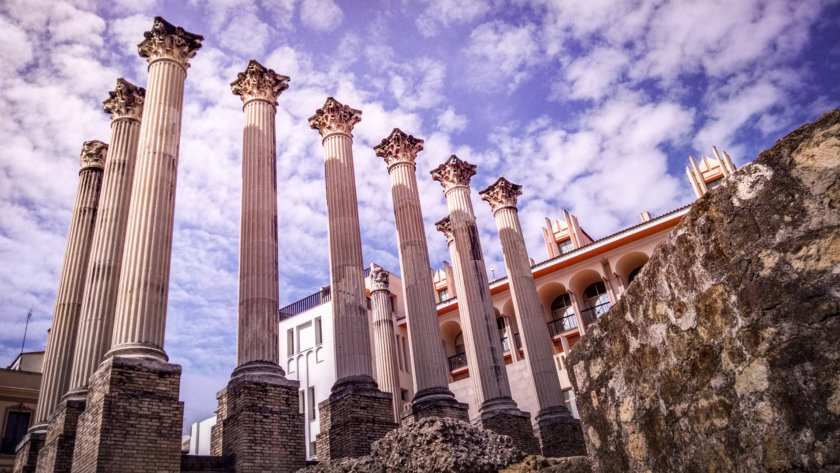
Your path will then take you straight to the most famous square in Cordoba: the Plaza de la Corredera (Corrodera Square) . Its rectangular shape and its arcades recall the classic “Plaza Mayor” of Castile but it’s actually the only square with such features in Andalusia. For centuries, it has been a gathering place for parties, markets, bullfights and even….executions!
Today it’s with the plaza de las Tendillas the best place in Cordoba to enjoy a drink or a lunch on a terrace. There is also a market, where you can buy fresh produce.
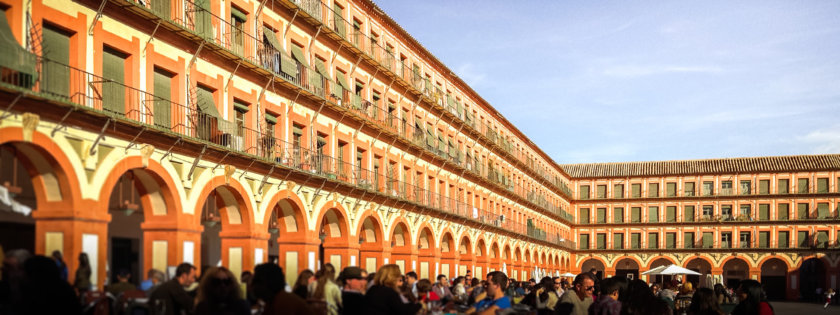
As it’s located about ten minute walk from the plaza de la Corredera , you should continue your visit of Cordoba with a stop at the Viana Palace (“Palacio de Viana”). The highlights of the visit are for sure the 12 magnificient patios and gardens. Art enthusiasts will also be delighted by the impressive collection of paintings, ancient dishes and tapestries that can be found in the palace’s multiple outbuildings.
All information for your visit can be found on the Viana Palace official website.
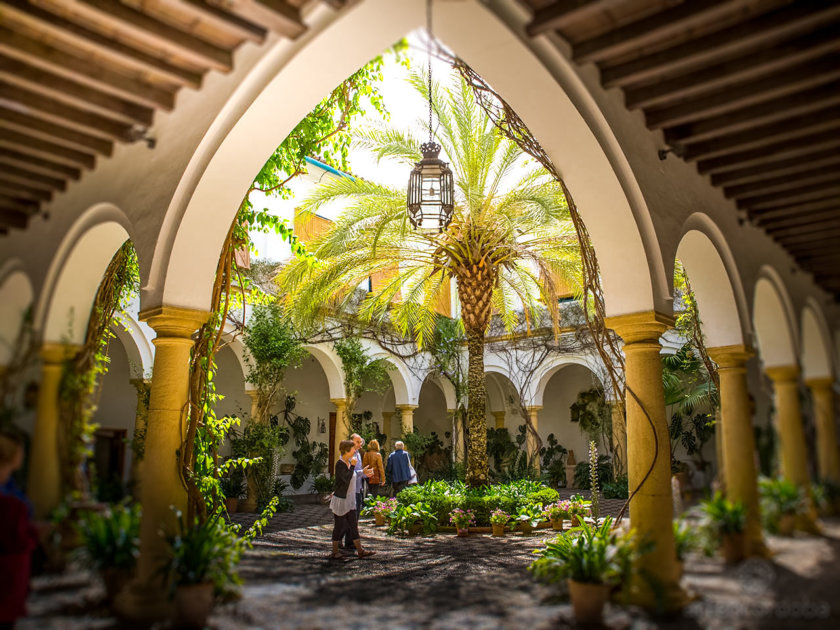
If you have more than one day to visit the city, here is a list of museums in Cordoba that might interest you:
- The archaeological museum and its collection of Roman objects discovered in Cordoba
- The fine arts museum : collections of modern Spanish and baroque art
- The bullfighting museum for those who are not opposed to this practice of course
- The ethnobotanical museum and the botanical garden
- The Julio Romero de Torrez museum, housing a collection of the famous local painter
- The gallery of the inquisition which presents the instruments of torture used in the inquisition. It’s not recommended for children.
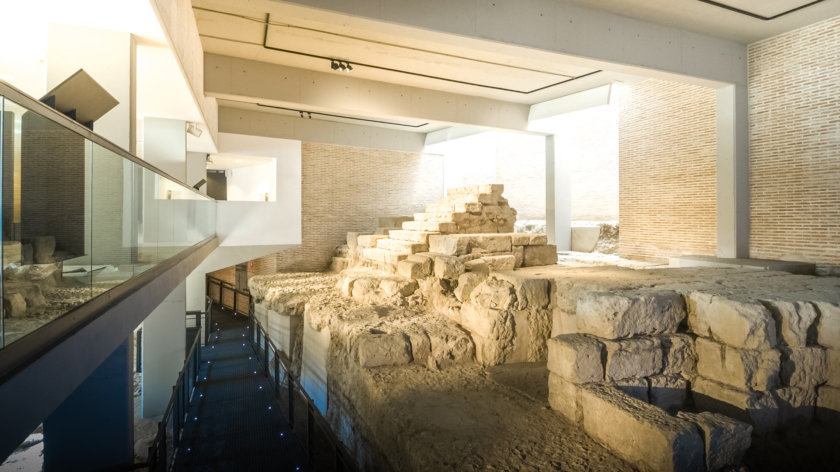
Finally, don’t leave Cordoba without tasting its typical dish: the salmorejo . It is a cold soup (perfect for the hot weather!) made of tomato, olive oil, bread crumbs, garlic, vinegar on which they put small pieces of Serrano ham and eggs.
And to finish with a sweet touch, why not give an ice cream a go? Personally, I have tried the one from Cremeria di Vaniglia , close to the plaza de las tendillas and they were amazing!
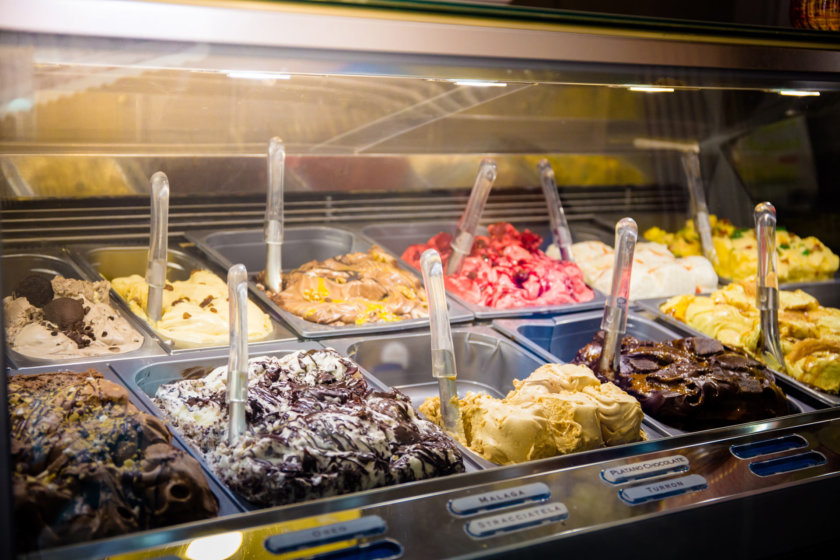
Madinat al-Zahra (Medina Azahara)
The remains of the mysterious city of Madinat al-Zahra (a UNESCO World Heritage Site) are located at 8 kilometers from Cordoba .
The this city was built by a caliph in tribute to his wife named “Azahara”. The palace was built with marble, gold and precious stones!
In addition to the palace, Madinat al-Zahra city consisted of 3 levels and there was also a mosque. Nowadays, it’s is in ruins but it’s a very interesting visit for history lovers!
The best way to enjoy the visit is for sure to book a guided tour from Cordoba.
Everything is included: transportation, the guide, and access to the historical site.
To book it, you just have to click on the button below:
Monastery of San Jerónimo de Valparaíso
In front of Madinat al-Zahra , you can find the impressive monastery of San Jerónimo de Valparaíso, built in the 15th century.
It was originally a Gothic building, but you can find some Renaissance and Baroque architecture elements.
For several years, the family of owners has done a great job of restoration and you can now admire a large art collection.
Be careful, visits are only private, so you need to make a reservation before going.
It’s totally possible to visit Cordoba in one day . Even without hurrying, you can see all of the most important attractions of the city.
- Start by visiting the Jewish Quarter and its flowery streets
- Then head to the Mosque-Cathedral of Cordoba, a unique place in Andalusia
- Lunch in a terrace at the Plaza de las Tendillas for example.
- Then go to the Plaza de la Corredera. Along the way you can see the Roman Temple of Cordoba.
- Walk along the Guadalquivir to get to the B ridge Gate and the Roman bridge of Cordoba
- Cross the bridge, and arrive at the Calahorra Tower
- Finally, end your day in town with a visit to the Alcázar of Cordoba and its magnificent gardens.
And if you don’t want to walk all day, you can opt for the Hop-on Hop-off tourist bus. It stops in from of every tourist attraction of the city!
You can click here to book it.
If you spend 2 days in Cordoba , you should do the program I recommended just above for the 1st day. However you can visit the Alcázar on the second day, in order to split the 2 longest visits.
- Start the day at plaza de la Corredera for a coffee on the terrace.
- Visit the Viana Palace and its 12 patios
- Why not try the Salmorejo for lunch? (Followed by an ice cream of course!)
- Visit one or more museums of Cordoba to choose from the list above. I personally recommend the museum of the inquisition
- If you have a car, visit Madinat al-Zahra or the monastery of San Jerónimo de Valparaíso
- Option Be : Hostel located in the district of Judería. Bed in dormitory from 22€, breakfast included. The positive aspects of this brand new hostel: perfect staff welcome, comfortable bed, very clean, outdoor pool and great location.
- Ayre Hotel Cordoba : Located within a 10 minute drive from the center of Cordoba, at the center of a beautiful and quiet garden. Room with classic decoration but very spacious from 61€, breakfast 10€. The best: quiet location, large outdoor pool and free parking. We love to be far from the crowds and the city.
- Hotel Boutique Caireles : Located in front of the Mosque of Cordoba, right in the historic district. Modern and bright room from 67€ breakfast included. The best: the view of the Mezquita from the rooms, the kindness of the staff who also speaks French. My favorite for its great value for money!
- Eurostars palace : Located on the paseo de la victoria, within a 5 minute walk from the entrance of Judería and Mezquita. Huge room and very good design from 110€ per night, breakfast at 14€. The best: good geographical location, swimming pool on the roof. The best choice in Cordoba for an affordable luxury stay!
To help you prepare for your visit to the city, here is the Córdoba tourist map, in very high resolution. I advise you to download it on your Smartphone, so you will have it during your trip!
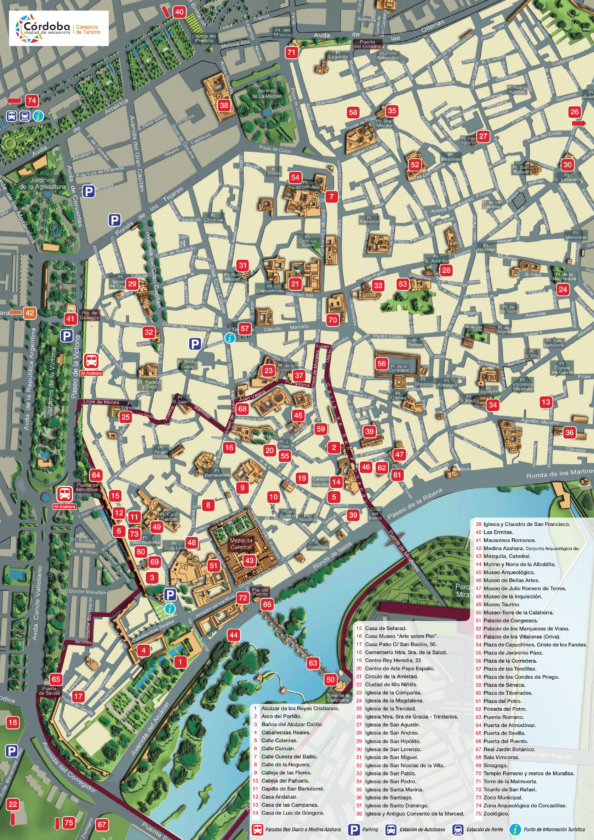
This other map of Cordoba, extremely complete and accompanied by the list of activities will also be very useful during your stay in Cordoba
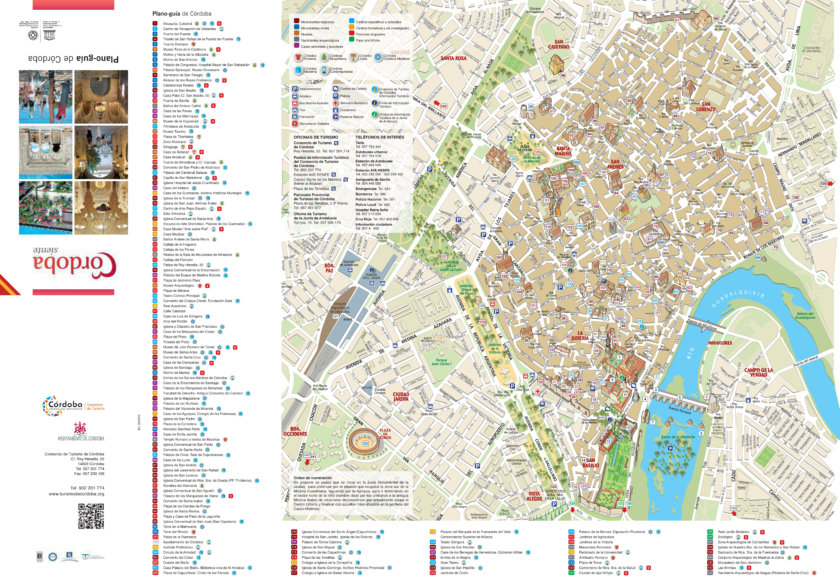
I loved the city of Cordoba , it’s easy to go over by foot and in one day in Cordoba, without much hurry, you can see all the must-see attractions of the city. As most alleyways and the historic centre are pedestrian only area, it’s very pleasant to walk around in complete safety, without noise.
The Mosque Cathedral of Cordoba particularly impressed me, even if I had seen several pictures before entering it in real. I really had the impression to discover it for the first time, it’s hard to realize how amazing it is before going there!
The Alcázar of Cordoba gardens are also particularly beautiful and well put together. Everything is very geometric and graphic, I liked that, in addition to being able to enjoy a little shade and quietness!
And you, have you planned to visit Cordoba during your trip to Andalusia?
Andalusia travel Guides
- Buy the DK Eyewitness Andalusia guide on Amazon.com or on Amazon.co.uk
- Buy the Lonely Planet Andalusia guide on Amazon.com or on Amazon.co.uk
- Buy the Rick Steves Snapshot Andalusia guide on Amazon.com
Discover all my articles about Spain : All my articles to help you plan your trip to Spain are listed there.
The 20 Best Things to Do in Andalucia : The ultimate bucket list!
- Itinerary: 4-5 days in Andalucia – The perfect itinerary for a short stay in Andalucia !
- Itinerary: 1 week in Andalucia – With all my best tips + accommodation suggestions!
- Itinerary: 10 days in Andalucia – Discover how to visit Andalucia in 10 days, with all my best tips!
- Itinerary: 2 weeks in Andalucia – The best itinerary to visit Andalucia in 14-15 days
- Cadiz: The 12 things you must-see in town!
- Granada: Top 15 best things to do
- Malaga: The 15 best places to visit
- Ronda: The 10 best things to do
- Seville: Top 15 best things to do and places to visit
You’re using Pinterest? Here is the picture to pin!
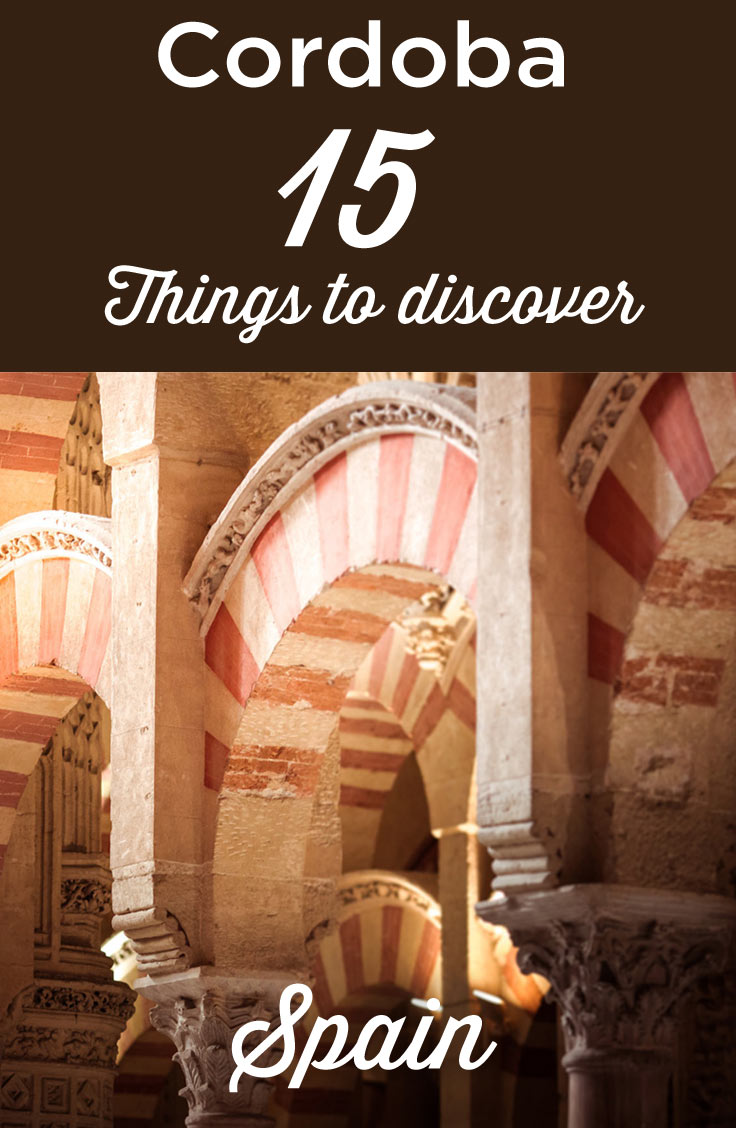
Creator of the Voyage Tips blog, travel and photography lover. I give you all my best tips to plan your next trip.
Related Stories

Where to stay in Copenhagen? The best areas and places to stay

Where to stay in Reykjavik? The best areas and places to stay

Where to stay in Bologna? The best areas and places to stay
Discussion 2 comments.
Good morning,
We contact you from Córdoba Ecuestre. We have our Equestrian Show at the Royal Stables of Córdoba.
We would like to modify some information. The show takes place from Wednesday until Saturday at 9:00 p.m.
The price for adults is 17,50€.
If you have any questions do not hesitate to contact me by e-mail: [email protected]
Best regards,
Thank you for the precision. I have uptaded the information about the show.
Have a nice day,
Leave A Reply Cancel Reply
Your Name (required)
Your Email (required)
Your Website (optional)
Save my name, email, and website in this browser for the next time I comment.
- Middle East
- North America
- Cheap car rentals: my best advice
- Back to Homepage

19 Top-Rated Tourist Attractions in Córdoba
Written by Lana Law , Michael Law , and Lisa Alexander Updated Dec 28, 2023 We may earn a commission from affiliate links ( )
Córdoba lives in the shadow of its monumental past. During the 10th century, it was the greatest capital city of Europe, surpassing Paris and Rome in its academic, architectural, and artistic achievements. Many of Cordoba's main attractions relate to the city's history.
This fascinating Andalusian city is still a kind of western Mecca because of La Mezquita , the UNESCO-listed mosque that is one of the most splendid Islamic buildings in Europe.
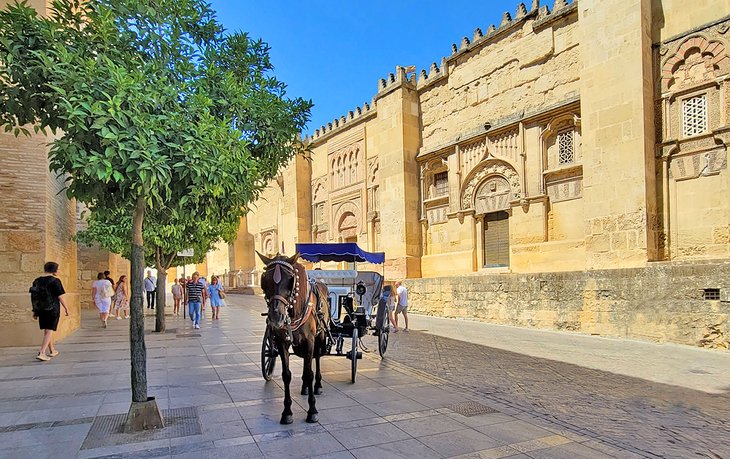
Wandering through the charming labyrinth of narrow, winding streets in the Judería (historic Jewish quarter) is one of best things to do if you are a first-time visitor. The quiet squares offer shady places to rest, and the whitewashed houses feature colorful flower-adorned patios.
Córdoba is also renowned for its artisan crafts and gastronomy. Be sure to sample the local specialties such as Naranja con Aceite y Bacalao (salt cod with olive oil and oranges); Salmorejo (fresh tomato soup, like gazpacho but heartier); and Pastel Cordobés , an Arab-influenced pastry filled with citrus-infused cream.
Discover the best places to visit with our list of the top attractions and things to do in Cordoba.
La Mezquita (The Great Mosque)
Wander through the judería (old jewish quarter), alcázar de los reyes cristianos, fiesta de los patios de córdoba, calleja de las flores (alley of the flowers), palacio de viana, puente romano (roman bridge) and calahorra tower, puerta del puente, see the andalusian horse equestrian show, museo arqueológico de córdoba (archeological museum), museo de bellas artes, museo julio romero de torres, jardín botánico de córdoba, iglesia de san lorenzo, iglesia de san miguel, medina azahara, las ermitas (hermitages of andalusia), visit nearby castillo de almodóvar del río, day trip to parque natural de las sierras subbéticas, map of tourist attractions in córdoba.
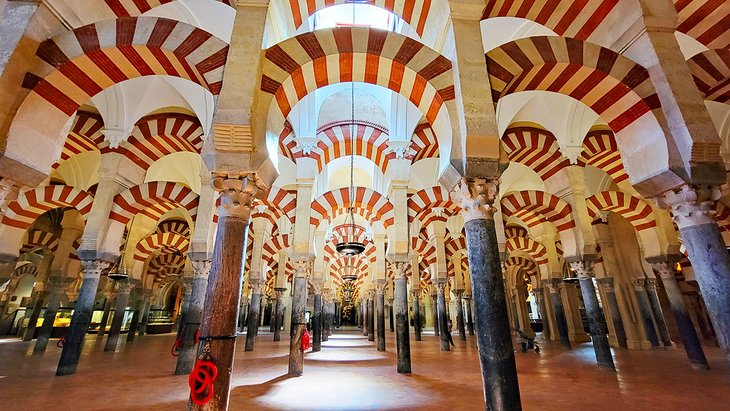
La Mezquita is the Great Mosque that was created for the Caliphate of Córdoba, an important Moorish kingdom of Andalusia. Built in the eighth century, the UNESCO-listed Mezquita is a masterpiece of Islamic architecture and is considered one of the most striking monuments of Moorish Spain.
The entrance is through the Puerta del Perdón gateway that leads into the picturesque Patio de los Naranjos (Patio of Oranges) that is planted with fragrant orange trees and palms. This patio is where the ablutions prescribed by Islamic law were performed.
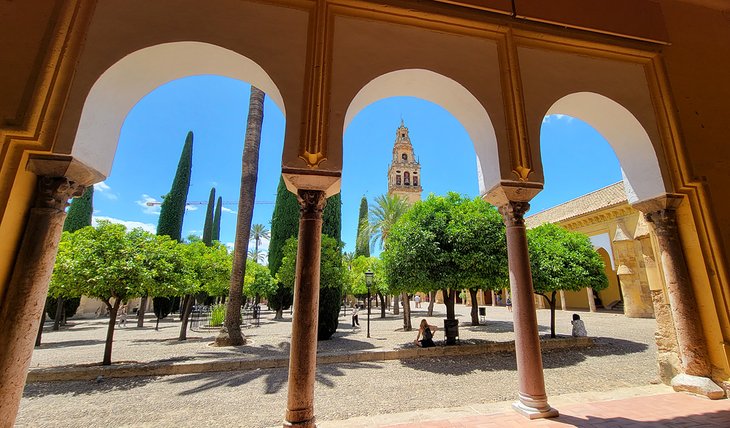
From the Patio de los Naranjos, you reach the Mudéjar-style Puerta de las Palmas , which opens into the prayer hall of the mosque . This impressive hall is an endless forest of 856 columns and awe-inspiring arches . The marble and jasper columns are linked by red and white horseshoe arches.
In the prayer hall, the mihrabs (prayer niches) mark the direction of Mecca. The Mihrab Nuevo , which displays the Koran , is an incomparable work of Islamic decoration. Crafted from a single block of marble, it is covered with a great profusion of floral and geometric patterns and verses from the Koran in Arabic script.
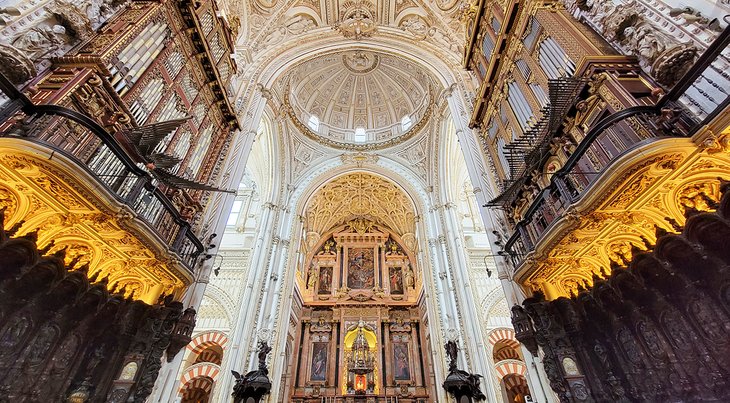
The mosque was converted to a cathedral in 1523 by the Catholic Monarchs. The cathedral's sanctuary, with its Gothic choir, was plopped right in the center of the mosque, while keeping the basic framework of the Islamic architecture. The mosque-to-cathedral conversion makes for an incongruous sense of design but serves as a reminder of Córdoba's multicultural heritage.
If all this information seems difficult to remember in advance of your visit, consider taking the one hour Mosque Cathedral of Cordoba tour . This includes your admission, so you can avoid the lines, and a knowledgeable guide to show you around.
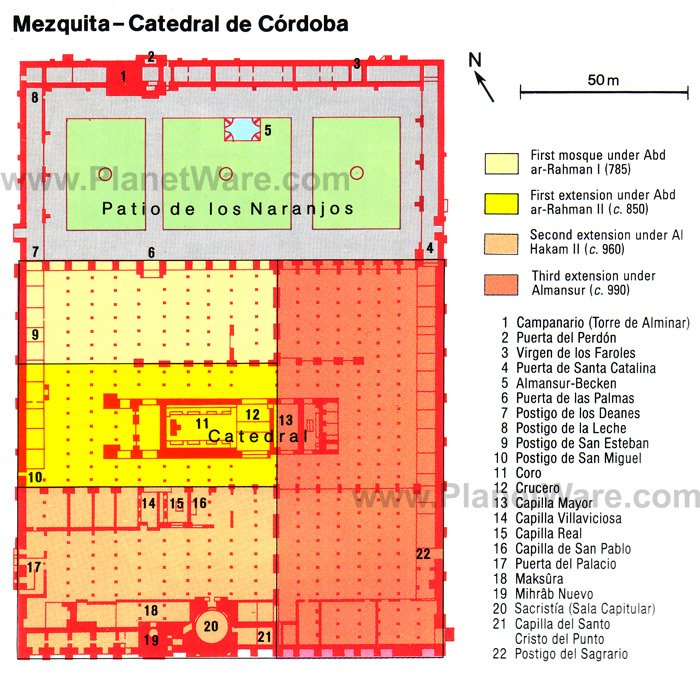
The old Jewish quarter is one of the most delightful areas of Córdoba to explore. With its narrow lanes, whitewashed houses, flower-filled patios, and quiet little squares, this area has an enchanting atmosphere.
Besides the Andalusian ambience, highlights of this historic neighborhood include two important Jewish monuments: the 15th-century Mudéjar-style synagogue at the center of the quarter and the Casa de Sefarad (House of Spanish Jews) museum; both sights are on the Calle Judíos.
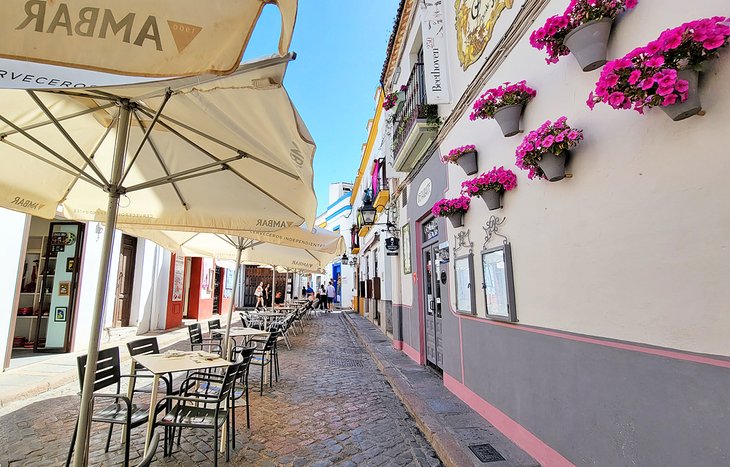
The Casa de Sefarad has been restored to its 14th-century glory and features five themed rooms that illustrate the history and culture of the Sephardi (Spanish Jews).
If you're looking for a special souvenir, wander through the Zoco Mercado Municipal Artesano to see artisans at work and to purchase some of their works. It's set in a quiet and scenic square not far from the historic Synagogue.
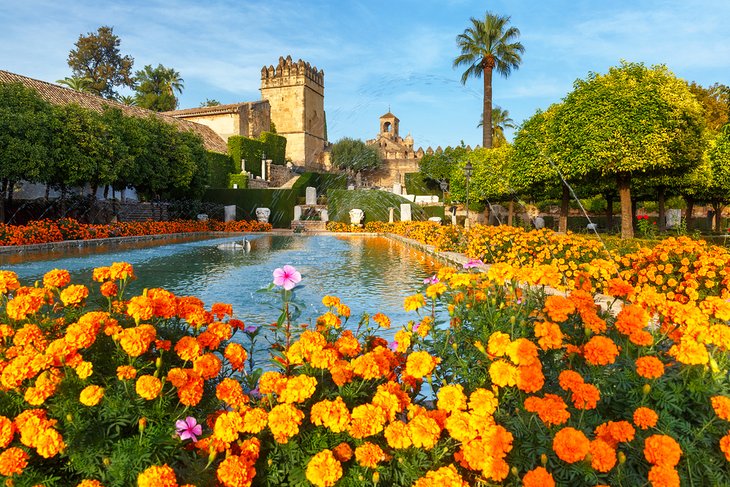
To further explore Córdoba's multicultural heritage, visit the Alcázar across from the Puente Romano bridge on a site that includes Roman and Visigoth ruins. This former Caliphal Palace was home to the Moorish rulers until the city was conquered by Catholic King Fernando III in 1236.
The square called the Plaza Campo Santo de los Mártires in front of the main building is the site where Christian martyrs were executed. Some of the castle's ancient defense walls and towers date back to the Moorish era, but most, including the Tower of the Inquisition, were built later when the Christian Monarchs improved the fortress' citadel.
Typical of Andalusian architecture, the Alcázar is made up of various halls around courtyards filled with exotic flowers, trees, and aromatic plants. The palace contains an antiquities collection including fine Roman mosaics in the Hall of the Mosaics where the items were discovered.
Within the ancient walls on the Alcázar grounds are beautiful Arabian-style gardens featuring ornamental pools, hedges, and decorative fountains. From spring through autumn, colorful flowers bloom throughout the grounds. On summer evenings, the fountains are illuminated.
Unlike the Mezquita, where admission waits are generally not an issue at any time (except for the Bell Tower), lines to get into the Alcázar can be long and tend to move slowly. It's best to visit here early in the day.
Address: Plaza Campo Santo de los Mártires, Córdoba
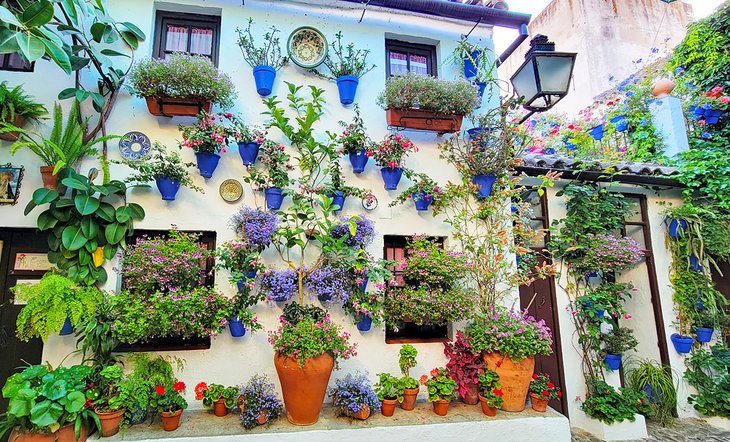
The beauty of Córdoba is in full bloom every year (usually in May) during the Fiesta de los Patios de Córdoba. This popular festival is a competition among Córdoba residents for the prestigious prize of most beautiful patio.
Locals welcome visitors into their patios (interior courtyards of private homes), bedecked with potted geraniums, carnations, and other colorful flowers. Fragrant jasmine and citrus blossoms perfume the courtyards.
These UNESCO-listed courtyards also feature flowing fountains, bougainvillea, and ornate Moorish architectural details such as arcaded porches and decorative ceramic tiles.
You'll find plenty of things to do during this festive event, from watching flamenco dancing and musical performances to sampling tapas from local restaurants.
To get a glimpse of the gorgeous patios bursting with vibrant blossoms, wander around the Alcázar Viejo district , between the Alcázar and the Iglesia de San Basilio; around the Santa Marina district ; around the Iglesia de San Lorenzo; and near the Iglesia de la Magdalena.
Many exquisite patios as well as the Calleja de las Flores (Alley of the Flowers) are found in the old Jewish quarter , the area surrounding the Mezquita.
The most elegantly decorated historic patios of Córdoba can be seen in the Palacio de Viana featuring 12 different courtyards.
Note that an admission fee is charged to enter many of the patios. You can collect a pass at the visitor center prior to starting your own tour. Alternatively, sign up for the Patios and Flowers Guided Tour . You'll get guaranteed admission to all the best patios with a local guide who will explain the history and highlights.
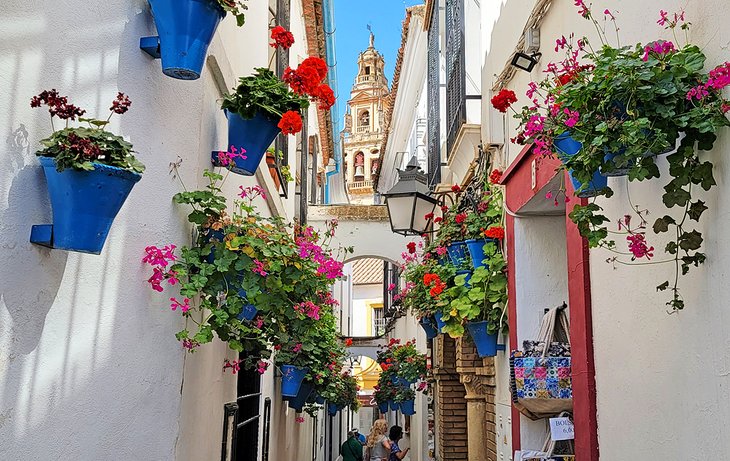
One of the highlights of the old Jewish Quarter in Cordoba is the narrow and colorful Calleja de las Flores. Located off Calle Velazquez Bosco, the street is easily missed if you aren't looking out for it.
Stroll slowly up the street and soak up the colorful and aromatic flowers. The street is relatively short, and before too long, you'll emerge into a small plaza. At this point, turn around and look back down the street and up. This view is an iconic Cordoba photo: the Calleja de las Flores with the Mezquita Bell Tower in the background.
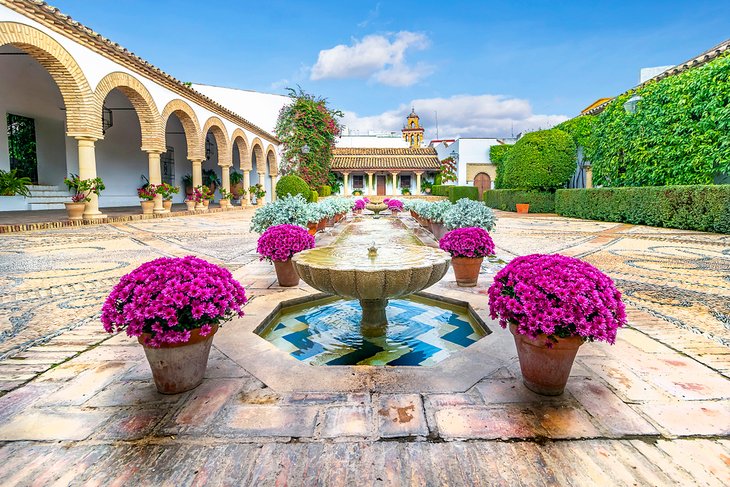
The Palacio de Viana is an aristocratic palace that dates back to the 15th century. Open to the public as a museum, the palace features the original decor of previous owners. You have a chance to admire an exceptional assortment of paintings, antique furniture, and tapestries.
A highlight of the Palacio de Viana is its outdoor space. The grounds include 12 patios designed in the Andalusian style with decorative fountains and lush landscaping. Each patio reveals a unique style, from the 16th-century reception courtyard with porticoed galleries to a courtyard filled with fragrant orange trees.
The garden is entered through an ornate stone gateway featuring the arms of the Viana family. Within the lavish grounds are fountains, formal parterres, pebbled paths, and elegant arcades. Lovely date palms, vibrant bougainvillea, and sweet jasmine are planted throughout the garden.
The Palacio de Viana and its patios are open to the public year-round, except on Mondays and some holidays. Entrance is free of charge on Wednesday afternoons.
Address: Plaza de Don Gome, Córdoba
Official site: https://www.palaciodeviana.com/
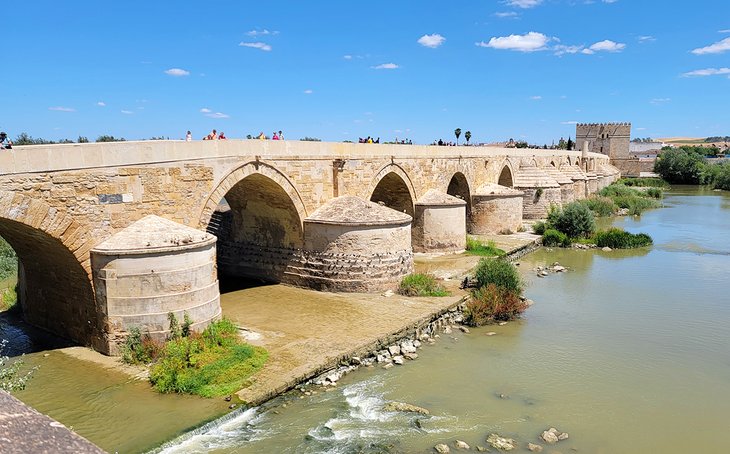
Another famous site in Cordoba is Puente Romano, a vestige of the ancient Roman era. The 16-arched bridge spans the Río Guadalquivir and is located directly behind the Mezquita.
The bridge was originally built after Caesar's victory over Pompey the Great. Later, a Moorish bridge was built on the foundations of the Roman bridge.
Sitting at one end of the bridge is the Torre de la Calahorra , a 12th-century gate tower. The tower once functioned as part of the city's medieval fortifications. During the Christian Reconquest in the 13th century, this gate tower made it difficult for the Catholic king, Fernando III, to enter Córdoba.
The Calahorra Tower now houses the Museo Vivo de Al-Andalus . This museum explores the religious and cultural elements that have formed the Andalusian identity. The museum celebrates the period in history when the Christian, Jewish, and Muslim communities of Córdoba lived together in harmony.
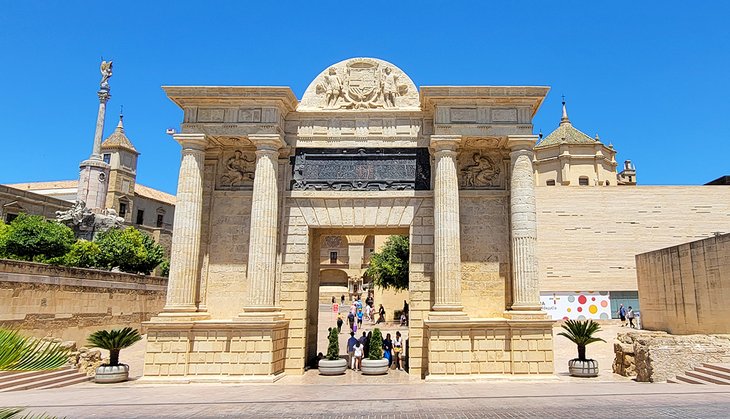
As you wander over towards the old Roman Bridge from the Mezquita, you'll pass through the impressive Puerta del Puente. This towering gate is an imposing structure dating from the mid 14th century.
Due to cost overruns, the gate was never quite finished. It wasn't until the early 20th century when Alfonso XIII ordered the creation of the structure you see today.
The soft yellow stones are especially photogenic late in the day, which is when you'll also find the best shots of the Puente Romano. If you find you've got a bit of hunger building from all your walking about, head east down Rda. de Isasa and grab a patio seat at Bodegas Mezquita (Ribera) for some of the best food in town.
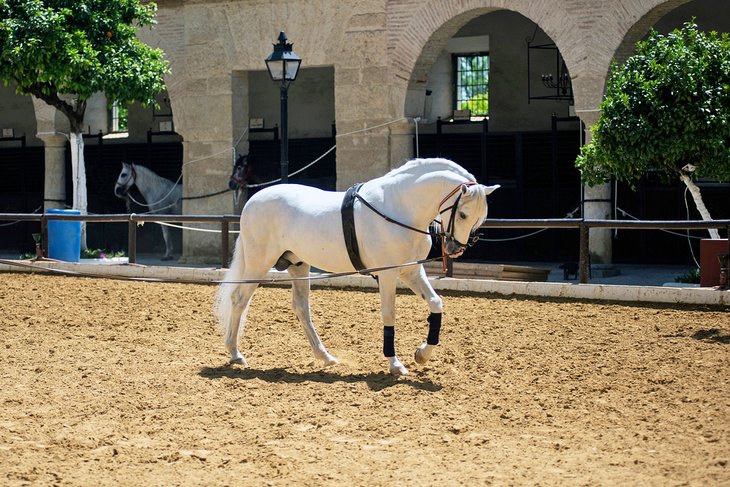
Cordoba is home to the ancient Royal Stables, commissioned by Felipe II, and dating from 1570. The impressive structure, complete with vaulted ceilings, cobblestone floors, and solid stone pillars, has survived almost intact (except for a fire in 1735). Today this spectacular setting is home to one of Cordoba's most impressive and enjoyable attractions, the Passion and Spirit of the Andalusian Horse Equestrian Show .
Every Wednesday, Friday, and Saturday a show takes place that showcases the incredible talent that the specially bred Andalusian horse has to offer. It's a horsey spectacle that the entire family will enjoy.
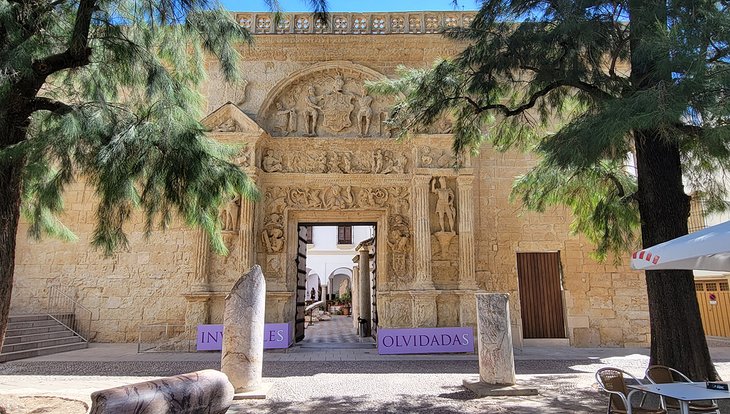
Set on the edge of a shady square, this museum has an inviting façade that begs to be entered.
Housed in the Palacio de los Páez de Castillejo , the museum also has an archaeological dig site on the premises. Here, you'll find the city's original Roman amphitheater, as well as homes and workshops dating back to the Middle Ages, all of which were discovered long after the museum found its home here.
This museum represents the most complete collection of historic Spanish artifacts in the world, with over 30,000 items in total. Exhibits include prehistoric artifacts; ancient Iberian items such as sculptures and reliefs, Moorish art, and Roman antiquities; and archaeological finds from Medina Azahara.
Address: Plaza de Jerónimo Páez, 7, 14003 Córdoba
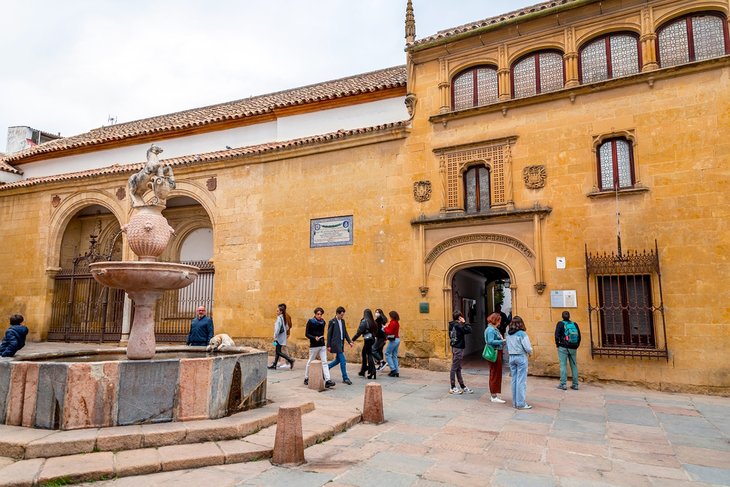
Córdoba's Museum of Fine Arts is housed in the former Hospital de la Caridad de Nuestro Señor Jesucristo, a 15th-century hospital that belonged to a Catholic monastery. The museum has an excellent collection of Spanish paintings from the 15th to the 21st centuries.
Highlights include the works by Zurbarán, Alejo Fernández, Antonio del Castillo, Valdés Leal, and Julio Romero de Torres. Visitors are also surprised by the interesting assortment of 17th-century, 19th-century, and contemporary sculptures displayed throughout the museum.
Address: 1 Plaza del Potro, Córdoba
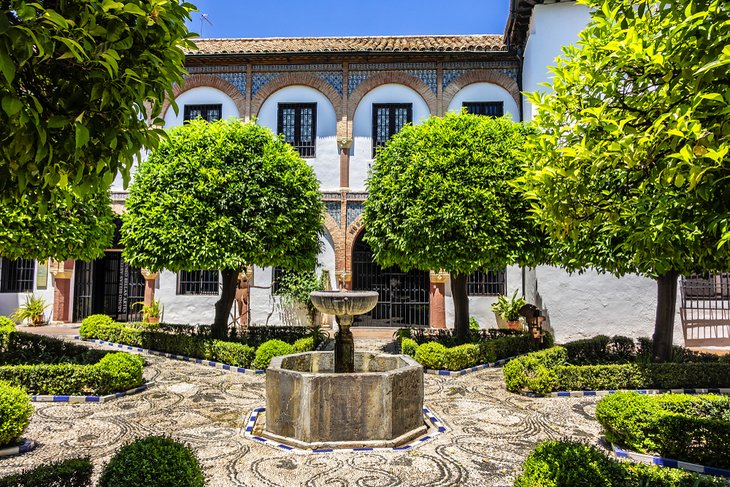
Born in Córdoba, Julio Romero de Torres was a renowned Symbolist painter and talented portrait artist. During his career, he painted more than 500 portraits, many featuring women. He was interested in every cross-section of society, from the aristocracy to the common people.
The Museo Julio Romero de Torres, housed in a renovated 19th-century building, exhibits the largest collection of the artist's work. The collection represents the entire span of the his career, from his early paintings to his more accomplished portraits.
Address: 1 Plaza Potro, Córdoba

An escape to nature right in the heart of the city, the Botanical Garden of Córdoba is filled with lush vegetation, spacious squares, and fountains. The garden is planted with native species typical of the Mediterranean, such as rosemary hedges and hackberry plants. One area is devoted to agricultural plants including aromatics, medicinal herbs, vegetables, and fruit trees.
Near the central square of the park is the Greenhouse . This glass-enclosed environment is divided into three sections, containing the species of specific locations: the Canary Islands, the Balearic Islands, and Andalusia.
The garden also has a pleasant shaded thoroughfare, three museums, and an Arboretum filled with a wide variety of trees and shrubs.
Across the street from the botanical gardens is a large green space with mature trees, extensive walking trails, and a zoo. It's a pleasant place to wander, especially after the tight confines of Cordoba's old city.
Address: Avenida de Linneo, Córdoba
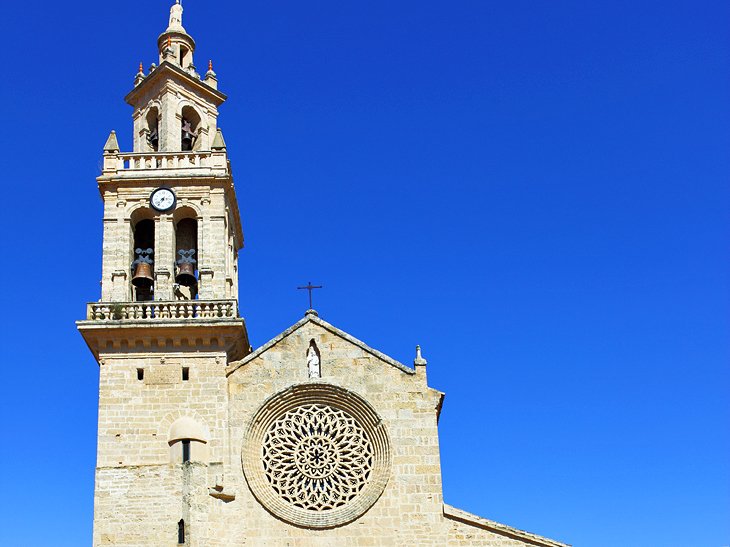
This 13th-century church, converted from a mosque, is considered to be one of the finest examples of medieval architecture in Córdoba . Recent renovations have restored much of the building's original appearance. In front of the main entrance, the church has a distinctive portico with three arches.
Other noteworthy features include a tower built on the minaret of the former mosque, with stylistic details that were a precursor to the Giralda Tower in Seville.
Inside the sanctuary, visitors are awed by the lovely rose window and the main altar with its Baroque altarpiece and abundance of Italian paintings.
Address: Plaza San Lorenzo, Córdoba
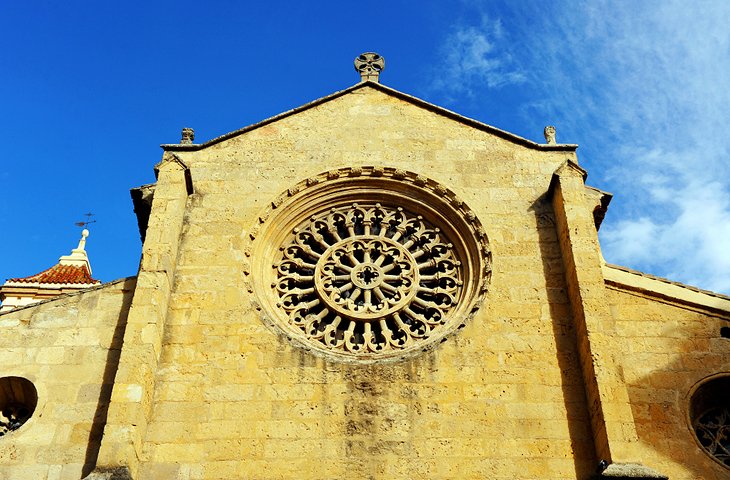
This church belongs to the group of 14 parish churches built after the Reconquest of Córdoba. These churches are called Fernandinas, and many were renovations of old mosques. Most of the Fernandinas were built with repurposed materials, which explains why they have Roman and Moorish columns.
The Church of San Miguel features Romanesque elements as well as Caliphate-era and Mudéjar details. The distinctive architectural styles are seen in the baptismal chapel and the Epistle side doorway. Some of the arches incorporate Hebrew characters.
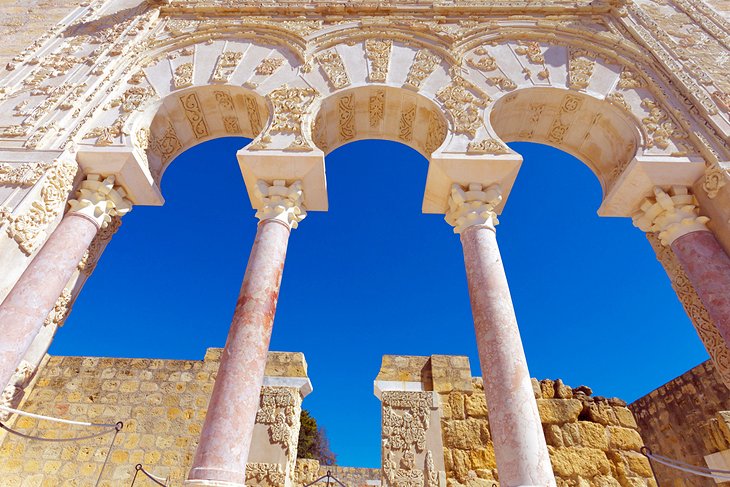
About seven kilometers west of the Córdoba city center, the UNESCO-listed Medina Azahara (Madinat al-Zahra) archaeological site is considered a must-see cultural attraction of Andalusia.
This evocative archaeological site encompasses the legendary royal city; opulent palace complex; and terraced gardens created by Abd al-Rahman III, caliph of the Umayyad dynasty, in the 10th century. Abd al-Rahman III named the town after his favorite wife Azahara.
The palace was destroyed in 1010 by the Almoravids and is now largely in ruins. It was said that the original palace was large enough to accommodate 30,000 people. Intricate carvings and horseshoe arches, typical of Andalusian (Moorish) architecture, are easily recognizable in the building elements that remain at the site.
To help tourists get the most out of their visiting experience, the site has a sleek modern museum. The exhibits display ancient objects and architectural elements that were uncovered at the archaeological site.
Address: Carretera de Palma del Río, Córdoba
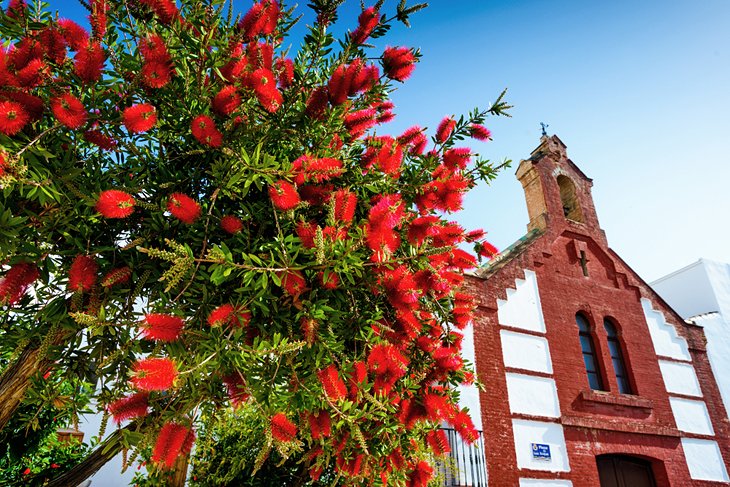
It is a delightful 15-kilometer journey from Córdoba to Las Ermitas in the Sierra Morena foothills. This soul-inspiring place includes a complex of 13 hermitages founded in the 18th century, which, since 1957, have been managed by the Discalced Carmelites.
This remote location has drawn hermits since the Middle Ages, because of its peaceful natural setting. Modern-day spiritual seekers and tourists alike will experience a sense of serenity in the mountainous landscape, while admiring views of the Guadalquivir Valley and Córdoba in the distance.
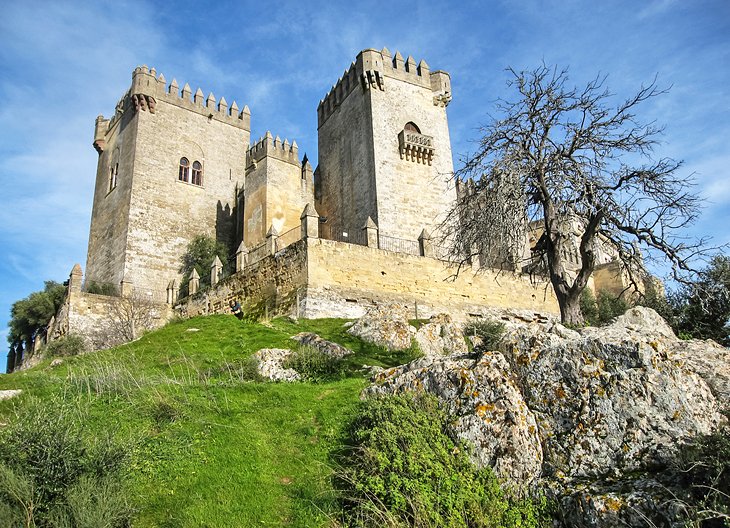
The Castillo de Almodóvar del Río lies 22 kilometers from Córdoba in the town of Almodóvar del Río. The castle is an ancient Moorish military fortress dating to the 8th century.
The castle stands in an advantageous position on top of a hill, surrounded by formidable battlements. The views of the countryside are truly spectacular. From its strategic location, the fortress provided defense for the city of Córdoba during the medieval era.
The castle is open to the public daily year-round, except on holidays. Visitors can see the old defense walls, towers, dungeons, and underground passageways.
Fans of the Games of Thrones series will enjoy visiting this site, because it was used as a filming location for the show's seventh season. A special guided tour takes visitors to the specific scenes that appeared in the series.
Address: Calle del Castillo, Almodóvar del Río
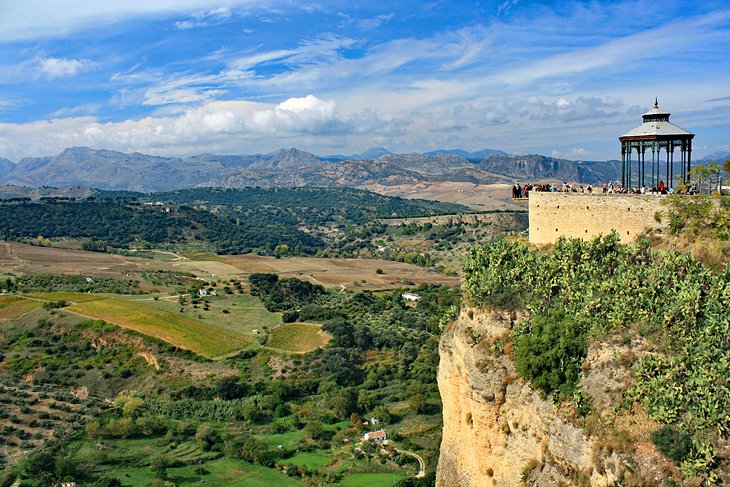
The Sierras Subbéticas Natural Park is found in the dramatic limestone mountains, about an hour outside of Córdoba. This rugged landscape is distinguished by its jagged mountain ridges, verdant plateaus, and dense woodlands. The lush Mediterranean vegetation includes elm trees, poplars, and oak groves.
Bird-watchers will appreciate that abundance of species found in the park, including eagles, vultures, peregrine falcons, and storks. It's also possible to spot nuthatches and golden finches.
The natural park also contains a few small rural towns perched on hilltops. With their picturesque whitewashed houses, these ancient Pueblos Blancos (White Villages) are full of Andalusian country charm.
More Related Articles on PlanetWare.com
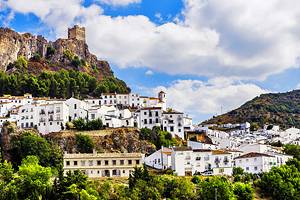
Highlights of Andalusia : Córdoba is nestled in the heart of southern Spain's Andalusia region , which is known for its diverse cultural influences and stunning landscapes. For a more laid-back alternative to the region's bigger cities of Córdoba, Seville, and Granada, consider a road trip to explore Andalusia's Pueblos Blancos (White Villages).
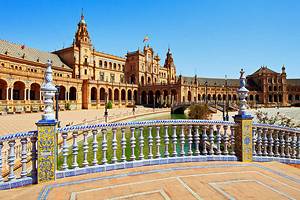
Cultural Attractions in Seville : Seville's numerous attractions , charming neighborhoods, and architectural splendor make it the most-visited of Andalusian cities. Among its top tourist sites are the Gothic 15th-century Seville Cathedral , the Moorish Real Alcázar , and the Parque de María Luisa.
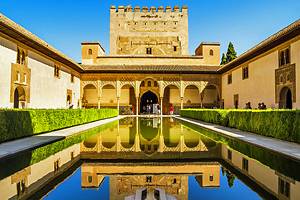
Andalusia's Glorious Islamic Architecture : Not far from Córdoba are many breathtaking sights in the area around Seville , including the beautiful city of Granada , which was once the capital of a Moorish kingdom. Granada's most magnificent attraction is the UNESCO-listed Alhambra , a complex of palaces that epitomize the region's exquisite Islamic architecture.
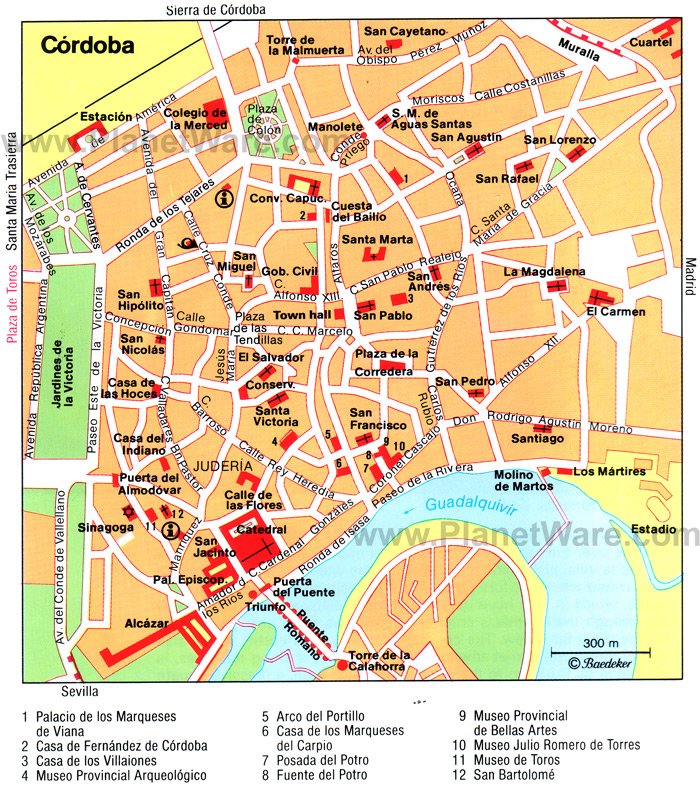
More on Spain

Must-see attractions in Córdoba

It’s impossible to overemphasise the beauty of Córdoba’s great mosque, with its remarkably serene (despite tourist crowds) and spacious interior. One of…

Palacio de Viana
A stunning Renaissance palace with 12 beautiful, plant-filled patios, the Viana Palace is a particular delight to visit in spring. Occupied by the…

Medina Azahara
Eight kilometres west of Córdoba stands what's left of Medina Azahara, the sumptuous palace-city built by Caliph Abd ar-Rahman III in the 10th century…

Alcázar de los Reyes Cristianos
Built under Castilian rule in the 13th and 14th centuries on the remains of a Moorish predecessor, this fort-cum-palace was where the Catholic Monarchs,…

Centro Flamenco Fosforito
Possibly the best flamenco museum in Andalucía, the Fosforito centre has exhibits, film and information panels in English and Spanish telling you the…

Constructed in 1315, this small, probably private or family synagogue is one of the best-surviving testaments to the Jewish presence in medieval Andalucía…
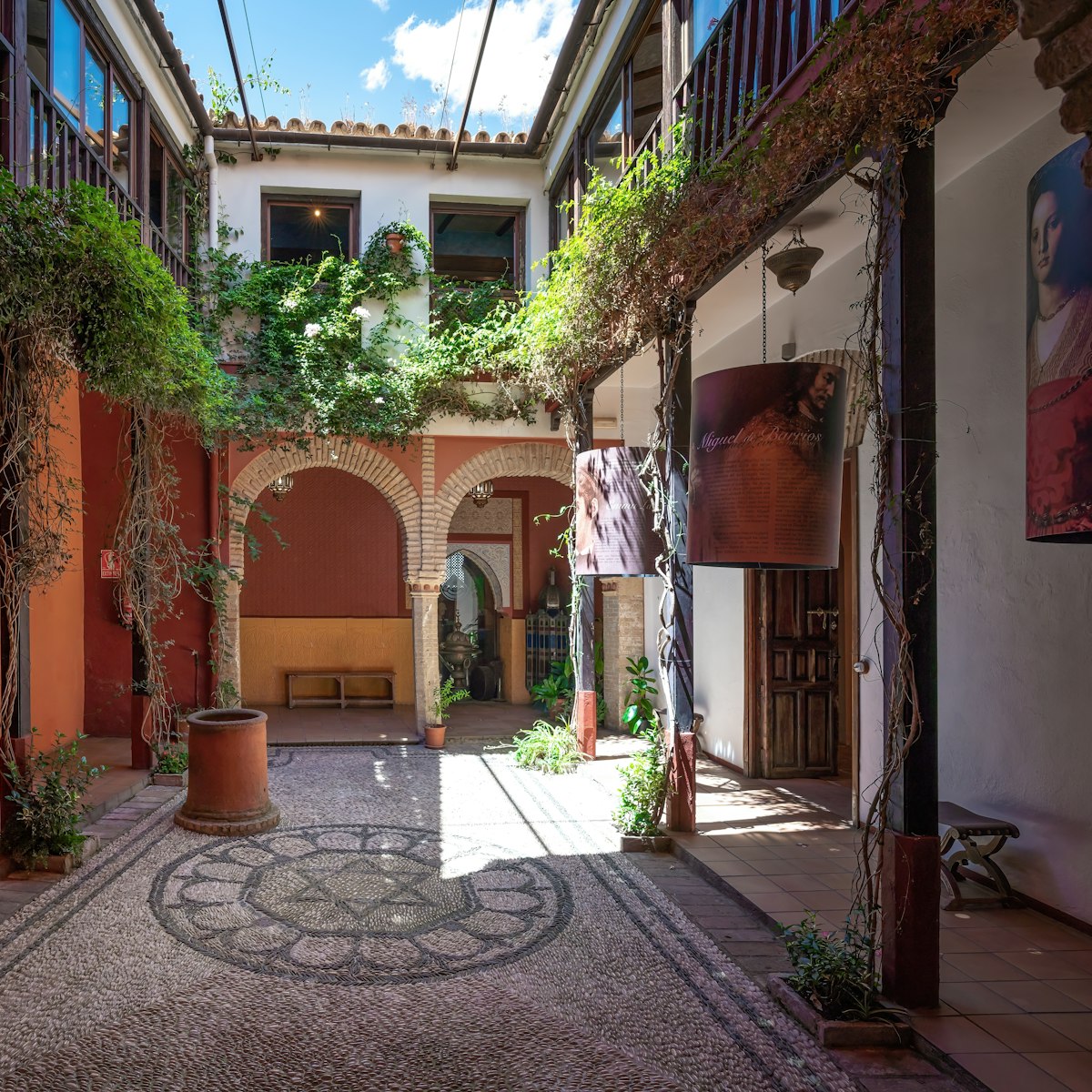
Casa de Sefarad
In the heart of the Judería, and once connected by tunnel to the synagogue, the Casa de Sefarad is an interesting museum devoted to the Sephardic (Iberian…

Caballerizas Reales
These elegant stables were built on orders of King Felipe II in 1570 as a centre for developing the tall Spanish thoroughbred warhorse (caballo andaluz)…
Museo Arqueológico
The well-displayed Archaeological Museum traces Córdoba's many changes in size, appearance and lifestyle from pre-Roman to early Reconquista times, with…
Puente Romano
Spanning the Río Guadalquivir just below the Mezquita, the handsome, 16-arched Roman bridge formed part of the ancient Via Augusta, which ran from Girona…
Museo Julio Romero de Torres
A former hospital houses this popular museum devoted to much-loved local painter Julio Romero de Torres (1874–1930), who is famed for his paintings…
Baños del Alcázar Califal
The bathhouse of the 10th-century caliphs, part of the Moorish Alcázar complex that was later replaced by the Alcázar de los Reyes Cristianos, is the most…
Templo Romano
Though generally not open to visitors, this 1st-century AD Roman temple can be viewed perfectly well from the street. Its 11 tall white columns make a…
Plaza de la Corredera
This grand 17th-century square has an elaborate history as a site of public spectacles, including bullfights and Inquisition burnings. Nowadays it's…
Patios de San Basilio
You can visit this group of three interesting and well-tended Cordoban patios in the Alcázar Viejo area, about 400m southwest of the Mezquita, most of the…
Casa Andalusí
The Casa Andalusí is a restored 12th-century house that attempts to recreate an ambience of caliphal times. It has a tinkling fountain in the patio and a…
Asociación de Amigos de los Patios Cordobeses
This particularly lovely patio, dripping with bougainvillea and other plants, can be visited free year-round. Its colourfulness depends on the season, but…
Torre de la Calahorra
At the south end of the Puente Romano stands this squat tower, erected under Islamic rule. It now houses the Museo Vivo de Al-Andalus, a museum…
Puerta de Almodóvar
The only survivor of the nine city gates built by emir Abd ar-Rahman I (though what you see today is mainly 14th-century Christian work), the Almodóvar…
Museo de Bellas Artes
Occupying part of the old charity hospital on the Plaza del Potro, the city art museum displays mainly Cordoban masters, with much of the work culled from…
Casa Ramón García Romero
A display of beautiful embossed leather work (one of Córdoba's traditional crafts), reviving techniques used by 10th-century Umayyad artisans.
Noria de la Albolafia
This ancient, much-restored water wheel on the edge of the Río Guadalquivir was originally built by emir Abd ar-Rahman II in the 9th century to send water…
The Unknown Enthusiast
The Perfect 2 Days in Cordoba Itinerary (The Most Gorgeous Spanish City)
Looking for the best 2 days in Cordoba itinerary? I’ve got you covered!

Cordoba, Spain is an insanely cute and enchanting mid-sized city in Southern Spain, full of flowers, white and yellow streets, and of course, one of the most famous sites from the Moorish inhabitation of Andalucia.
In all of the places that we visited in Southern Spain, Cordoba actually was probably my favorite (it’s so hard to choose though!). I would go back in a heartbeat, and I’d definitely recommend you make time for Cordoba on your Spain itinerary.
While many people just do Cordoba in a day (even daytripping from nearby cities), I’d actually recommend two full days in Cordoba. There’s a lot to see and do and you can definitely spend two entire days here!
In this post, I’m going to walk you through what I believe is the ideal 2 day Cordoba itinerary, and exactly what you should see and do in those days in this super cute Spanish city.
This post contains affiliate links. When you buy through these links, I may earn a small commission at no additional cost to you. These commissions help keep this site running. Thank you so much for your support!
Short on Time?
If you’re short on trip-planning time, I’ve got you covered. These are some top rated excursions, tours, and hotels in Cordoba!
Top Excursions and Activities in Cordoba:
- Entry Ticket for the Mezquita Mosque Cathedral (definitely buy in advance)
- Guided Tour of the Mezquita (top rated tour)
- Bike Tour Around Cordoba (small group tour that bikes all over the city)
Top Hotel Options in Cordoba
- Mayflowers Hotel (lovely historic guesthouse on a quiet street)
Day 1 Cordoba Itinerary
Patio de los naranjos.

Start your day in Cordoba in the Patio de Los Naranjos, located just outside of the Mezquita Cathedral Entrance. The lovely Patio of the Orange Trees is a courtyard filled with symmetrical rows of orange trees surrounded by pretty stone buildings, with the Mezquita bell tower on one end.
Depending on the time of year you visit, the orange trees may have the sweet fruit hanging on them. There are also cypress trees planted down the middle of the courtyard (cypress trees are the long, skinny evergreens), and an old fountain roughly in the patio center.
This is a beautiful courtyard worth spending a few minutes strolling around, and if you visit before the Mezquita opens at 10, crowds are much, much lower.
Mezquita Mosque Cathedral

You can’t come to Cordoba and not visit the Mezquita – the famous, massive mosque that is now a Christian cathedral.
Completed in 987, the Mezquita was the second largest mosque in the entire Islamic kingdom, and today, its size still blows you away – it is absolutely enormous. There are over 850 of these candy cane double arches in the mosque-cathedral, which extend as far as the eyes can see.
When the Christians re-conquered Cordoba from the Muslims in the mid-1200’s, the building was thankfully not demolished, but converted to a cathedral. Over the years, chapels were added to the exterior of the building, and a traditional nave and transept (the center spot and focal point of a traditional cathedral) were installed right in the center of the building.
Make sure you stop by the Parroquia del Sagrario chapel. This chapel is located kitty corner to the Mezquita entrance, and is absolutely enchanting with its painted arches that are practically murals.

Really, the pictures you see don’t truly capture just how sprawling the building is or how incredible the mix of Islamic and Christian architectural styles is.

But really, the most impressive part of the Mezquita are the rows and rows and rows of candy cane arches arranged in perfectly symmetrical rows and columns throughout the entire cathedral.

Tips for Visiting the Mezquita:
- Buy tickets online in advance. You do not want tickets to sell out.
- Most people congregate in the entrance area. Head to to the left hand side when you enter the building, and the area that is kitty corner from the entrance for the fewest people.
- The Mezquita is a good place for a guided tour , as there is a lot of history to this building and its influence in southern Spain. This tour is very highly rated, in English, and with a relatively small group.
Hours : 10am-7pm Mon-Sat, Sunday from 8:30-11:30am and 3-7pm
Torre Campanario (Mezquita Bell Tower)

The bell tower of the Mezquita, known as Torre Campanario, stands tall and proud over Cordoba, and is visible from several places in the city. You can climb to the top of the tower for views over the Mezquita, the river and old Roman Bridge, and the rest of the city of Cordoba.
Hours : 9:30-6:30 Cost : 3 euro
Buy Ceramics

Handmade ceramics are a very traditional handicraft made in Andalucia, and you can find shops selling beautiful, artisanal pieces throughout the region (you can also find plenty of pieces that feel a lot more mass-produced). Personally, I love picking up beautiful hand-crafted and hand-painted bowls and plates in my travels, so this was extremely fun for me.
I walked by several artisan ceramic shops in Cordoba, but I particularly liked the Artesania Los Patios, which is right across from the Mezquita. Despite its location in a prime tourist spot, the pieces in the shop were beautiful and high quality.
Address : 18, Calle Cardenal Herrero
Calleja de Las Flores
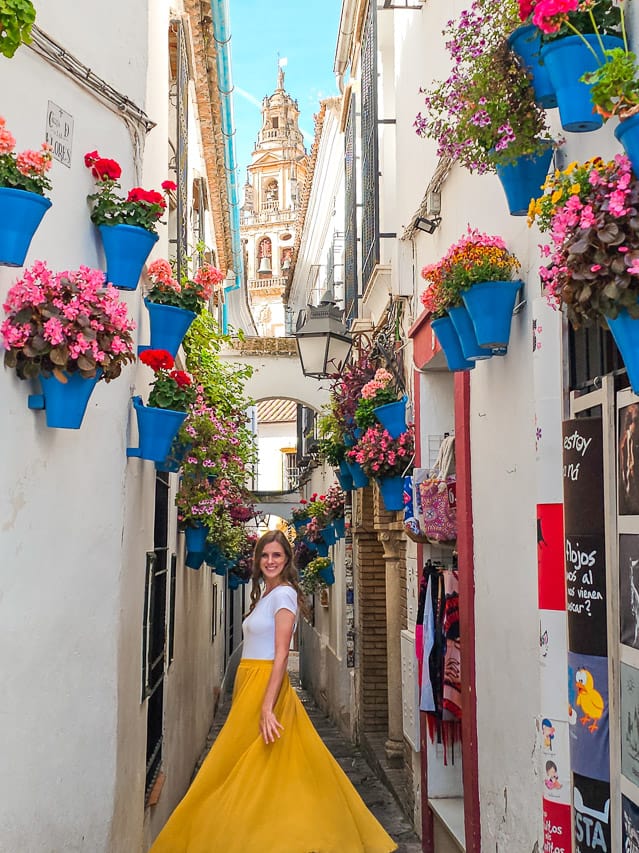
Calleja de Los Flores is an insanely adorable alleyway with white walls, geraniums in blue flower pots, arches, and a straight shot view of the Campanario Tower rising up between the streets. You really can’t get more picture perfect than this.
Unsurprisingly, Calleja de Los Flores can get busy, although I was surprised that there were some lulls when we visited during the middle of the day in March.
You can go early in the day and have the alleyway to yourself, but I did find that the lighting in the morning was tricky (if you’re trying to get a great picture). The tower was a lot more washed out in the early morning light. This is definitely one of the best photo spots in Cordoba.

La Juderia is the historic Jewish neighborhood located right around the Mezquita. It has some of the prettiest streets in the city, with narrow, cobblestoned lanes, flower pots hanging outside of windows and doors, and white walls with colorful accents.
It is a touristy area, but there’s also no denying its also incredibly charming. You can find plenty of shops, restaurants, cafes, and gelato shops in this neighborhood.

Roman Bridge

The Roman Bridge dates all the way back to the 1st century BC – making it one of the oldest structures in the city. This scenic bridge has the Puerta del Puente (or “Bridge Gate”) on one side, which was the main gate to the city, and the Torre de Calahorra (Calahorra Tower) on the other.
On the tower side of the bridge, there is a sidewalk running parallel to the river which gives fantastic views of the arches under the bridge and a view to the old town (including the Mezquita in the background).
Tower de Calahorra

The Torre de Calahorra, or Tower of Calahorra, sits on the far side of the Roman Bridge. Entrance to the tower includes the viewpoint at the top, the museum inside the tower, and an audioguide for the museum exhibits. The museum is actually decently interesting, and has some cool models of the different Roman and Moorish structures in the area.
But even if you aren’t interested in the museum, there are great views looking back over the bridge, river, and the city from the top that are worth the price of admission.
- Cost : 4.50 euro, which includes the audioguide.
- Hours : 10am-7pm, daily
Palacio de Viana

The Palacio de Viana is a gorgeous 14th century palace, that was originally named the Palacio de las Rejas de Don Gome, after the original owner. Over the following centuries, the palace has been expanded and redesigned many times. In the mid-1800’s, the palace belonged to the Marquis de Viana (who the palace today is named after), who did substantial restorations, bringing the palace into its splendor of today.
Fun Fact: The two times that the Spanish dictator of the 20th century, Fransisco Franco, visited Cordoba, he stayed at the Palacio de Viana.

Today, the Palacio de Viana is a National Monument, and has 12 named patios with different themes to wander through and delight in. The patios are all unique, and are really just stunning with their fountains and greenery, flowers galore, arches and pretty floor tilework.
- Hours : 10am-7pm Tues-Sat, 10am-3pm Sun, closed Monday
- Cost : 7 euro
Templo Romano

The Roman temple is the ruins of an ancient temple that was both very grand and, archeologists believe, very important in the city of Cordoba, but was also only discovered in the 1950’s. The ruins were discovered during the process of excavation for the planned expansion of the City Hall.
Today, you can only walk by and admire the temple ruins, as there is no entrance into the actual site. Still, it’s a very striking structure to just suddenly pass in the middle of the white-washed city streets.
Bonus options:
Depending on your interests, I would recommend stopping by either the Palacio de la Merced or some of the churches of Cordoba next. If you still have plenty of time, you can do both!
Palacio de la Merced

Palacio de la Merced used to be a convent and is now used as a governmental building in Cordoba. Today, you can admire the impressive Baroque exterior façade or visit the patios inside.
Entrance is from the right side of the building (when looking at it), and the patio pictured above is the second patio you’ll walk through in the building.
With its large marble courtyard and distinctive orange, cream, and green arches, doors, and ornamentation, Palacio de la Merced is a beautiful gem in Cordoba.
Churches on the Fernandine Churches Route

If you enjoy visiting old churches, Cordoba has an entire Fernandine Church Route through the city. When Ferdinand III re-conquered Cordoba in 1236, Catholicism replaced Islam as the dominant religion in the city, and to really reinforce that change, he commissioned many churches to be built throughout the city.
The first church that you visit on the Fernandine church route will give you a very well-designed booklet with information about all the churches that you can visit, and the most prominent and important features of each church or convent.
The following are four churches from the Route that I would definitely recommend you visit:
- Iglesia de San Pablo (pictured above)
- Iglesia de San Francisco y San Eulogio
- Real Iglesia Conventual de San Agustín
- Parish of San Lorenzo Martir
- Entrance Fee: Your ticket to the Mezquita provides free entrance to all the churches.
- Hours : Monday-Friday 10am-2pm, 3-6pm
Day 2 Cordoba Itinerary:
Alcazar of the christian kings.

While the palace part of the Alcazar isn’t the most impressive palace in the Andalusia region (it’s a Christian palace, and not nearly as grand and ornate as the Moorish ones), the palace complex is still worth visiting, even if just for the gardens.
The gardens are absolutely lovely – with a long water basin that extends for several levels, and lush flower beds, pathways, and carefully groomed trees lining the sides of the basin.
The palace area has several other features, too: there are ruins currently being excavated, a courtyard, rooms in the palace to walk through, and towers to climb.

- Entrance fe e: 5 euro – you can buy your tickets on-site, no need to buy in advance
- Hours : 8:15am-8pm Tues-Fri, 9:30am-6pm Sat, 8:15am-2:45pm Sun, closed Monday
Besides the Mezquita, Cordoba is known for her flower-filled, picture perfect patios. Many of these patios, or courtyards, are in private residences that open their doors to the public.
Hours vary – some of the patios are open in the morning, take a break midday, and then open again mid-afternoon, while others are only open from 10-2. Many of these patios are closed on Tuesdays.
De Patio Tour

The De Patios Tour is a series of 5 patios that you can enter on one ticket as a self-guided tour. Tickets can be bought at 14 Calle de San Basilio. You will be given a map of the five patios you can visit in the neighborhood, which are all a short walk from each other.
The actual location of 14, San Basilio is a little funky (it’s not where I thought it would be based on the rest of the street numbers on San Basilio), so definitely look at the map at the end of this post to see the location of the ticket office.
All of these patios are small, intimate, and serene oases, filled with flowers, greenery, flowerpots, arches, fountains, staircases, ladders, and other accents and features.

You are welcomed to each patio by the owner, and if you speak Spanish, they will tell you about the flowers and arrangements. Whether you speak Spanish or not, most owners will offer to take pictures for you in the patios, which is really nice!
- Hours : 10am-2pm, 5pm-8pm Monday to Saturday (closed Tuesday), 10am-2pm Sunday
- Entrance Fee: 6 euro
Patio at 44, Calle de San Basilio

Number 44, Calle de San Basilio is one of Cordoba’s famed private patios that open their doors to visitors. This patio was free to visit and literally took my breath away with the flowers cascading down over the walkway and arches.
- Hours : 10:30am-2pm, 5-7:30pm Mon-Sat, 10:30-2 Sunday, closed Tuesday
- Entrance Fee: Free
Patio on 2, Calle de Martin de Roa

This patio is just around the corner from the DE Patios ticket office, has lovely blue flower pots, a beautiful flower design on the floor tilework, and a cute, tall, blue ladder around the corner.
Entrance Fee: None, though a donation plate was out
Synagogue of Cordoba

The synagogue of Cordoba is a small site, but it has some beautiful details and is very culturally significant. Built in 1315, this is one of only three synagogues left in all of Spain after the expulsion of the Jews in 1492. Today, it is a National Monument, free to visit, and worth the quick stop.
Hours : 9am-9pm Tues-Sat, 9am-3pm Sunday, closed Monday
I don’t even want to call these day trips because both are within 30 minutes of the city and only take a couple hours to visit. But they are both really cool sites and worth the time to explore!
Medina Azahara

Medina Azahara is the ruins of a grand, important city that was inhabited during the 900’s AD by the Moors. Today, you can visit the archeological site and explore the ruins, which include some well-preserved archways and walls, as well as stables, gardens, government buildings, and smaller, private rooms.
Visiting Medina Azahara takes about 2-3 hours total and is an easy trip from Cordoba.
Castillo de Almodovar del Rio

Castillo de Almodovar del Rio is a pretty awesome castle perched right on the top of a hill, just 30 minutes from Cordoba. It’s filled with tours and turrets, jousting grounds, historical objects (old swords and weaponry, coinage, chainmail, etc), and receiving rooms, chapels, and lots of other spots to explore.
It’s one of the most aesthetically “stereotypical” castles I’ve ever visited, and I mean that in the absolute best way.
Castillo de Almodovar del Rio is just 30 minutes from Cordoba and just a little bit past Medina Azahara. Plan for about 1.5 hours to visit the entire site.
Where to Eat in Cordoba
I wish I had more recommendations here, but a few of the places that we ate at were misses for me, unfortunately. Still, two delicious spots I did love were:
Churro Bar Marta

Churro Bar Marta is a little bit north of most of the tourist sites in Cordoba (it’s right by Palacio de la Merced, however), but this café serves up excellent, hot fried churros and thick, creamy hot chocolate. Bonus – this meal was only 2.70 euro.

Manolas serves “Cordoban empanadas,” and these little pastries are actually really good. The dough is flaky and crispy, and the fillings are savory and flavorful. The takeaway restaurant is located on 8, Calle de Cardenal Herrero, right by the Mezquita walls, and I can confirm that enjoying this little flaky pastry while sitting on the steps under the bell tower is a great way to enjoy an afternoon snack.
Sit Down Restaurants
While there are a lot of great restaurants in Cordoba, many with beautiful patios, unfortunately the two that I went to were both misses, and I can’t recommend them. I can say that I would avoid eating at Agora Mezquita, and Restaurante Los Patios.
Spending Two Days in Cordoba – The Wrap Up
Even after spending an entire two days in Cordoba, I was still so sad to leave – this city is just enchanting. There are so many vibrant colors, a deep, complex history to explore, and beautiful architecture, and plenty of things to do to fill a two day itinerary. You will love you time in Cordoba!
Stephanie is the author of The Unknown Enthusiast. She's visited 21 countries and 37 of the 50 US states (but her first love will always be France). When she's not traveling, she enjoys reading, taking naps, playing games, eating popcorn, and spending time with her husband (Matthew) and 4 daughters. Stephanie lives in Alabama, USA.
Similar Posts

One Unforgettable Day in Malaga – The Perfect Itinerarary

Guide to Visiting Frigiliana: Spain’s Prettiest White Village

Setenil de las Bodegas Travel Guide: Top Things to Do & See

14 Picture Perfect, Instagrammable Places in Cordoba, Spain

14 Gorgeous, Most Instagrammable Places in Seville, Spain

Your Guide to Visiting Grazalema: Top Things to Do & See
Travel Safe
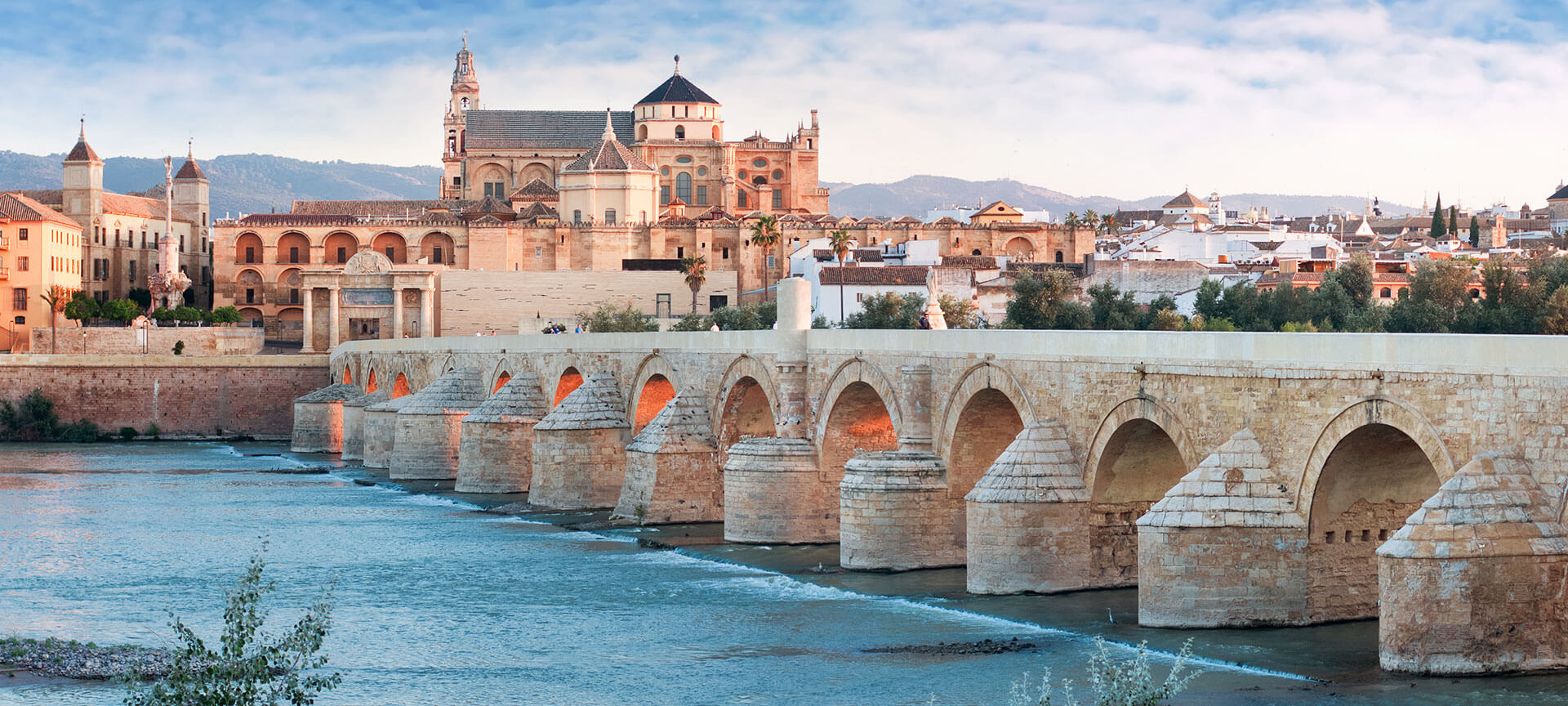
The city of flowers
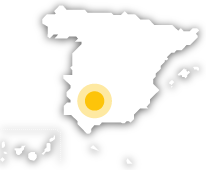
What to visit
Select from the list or hover over the map to find out about points of interest.
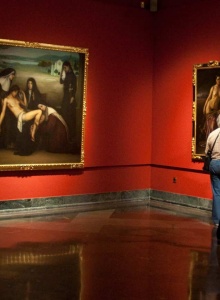
Julio Romero de Torres Museum

Roman Bridge and Bridge Gate
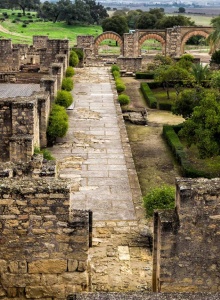
Medina Azahara
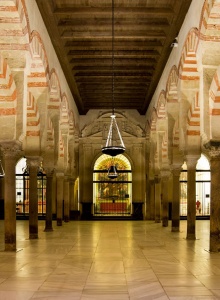
Great Mosque of Cordoba
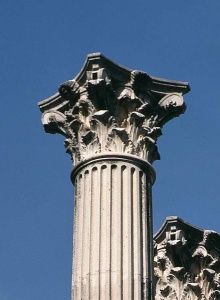
Roman temple
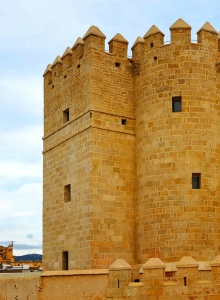
Calahorra Tower
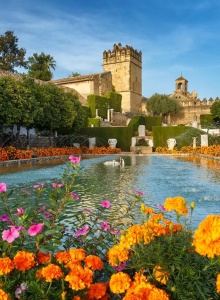
Alcázar fortress of the Christian Monarchs
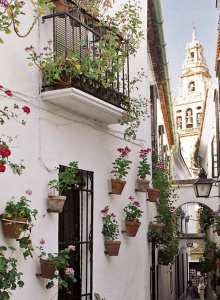
Calleja de las Flores Alley

Palace of the Marquises of Viana
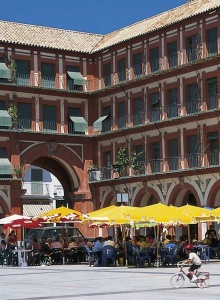
Plaza de la Corredera Square
Other ideas for your trip
The Al-Andalus experience, total harmony
Spending some of your holiday time on self-care is always the right decision. The fusion of Spanish and Arabic cultures in cities like Cordoba (Andalusia)…
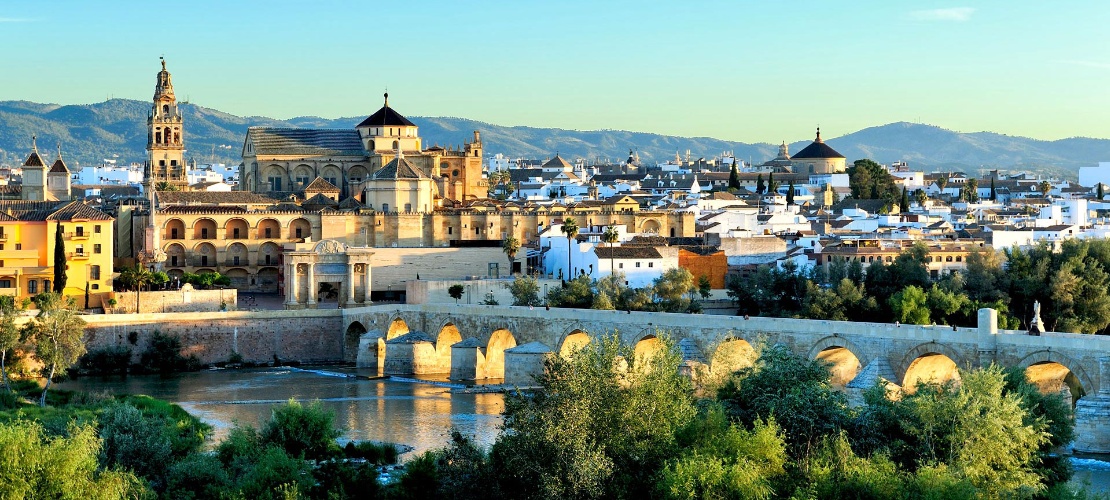
How many of Spain’s Heritage Cities do you know?
Visiting Spain brings you into direct contact with the history of its civilizations.…
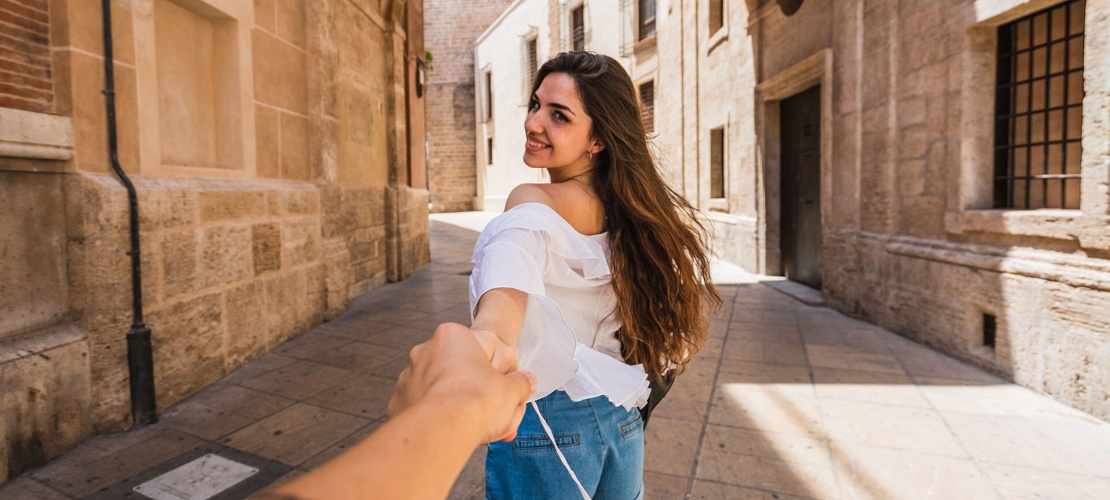
Cordoba: one destination with four World Heritage sites
Art, culture, tradition, history... Cordoba combines all of this within only 10 kilometres.…
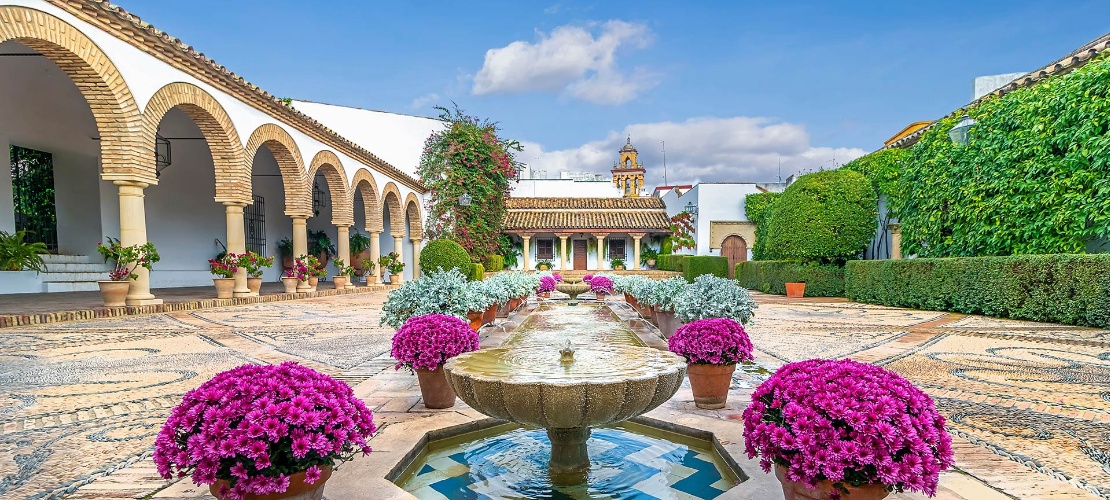
Four art centres with cutting-edge architecture in Andalusia
Think of a museum. What do you imagine? Maybe a place full of works of art? Now think of Andalusia. What images pop into your mind?…
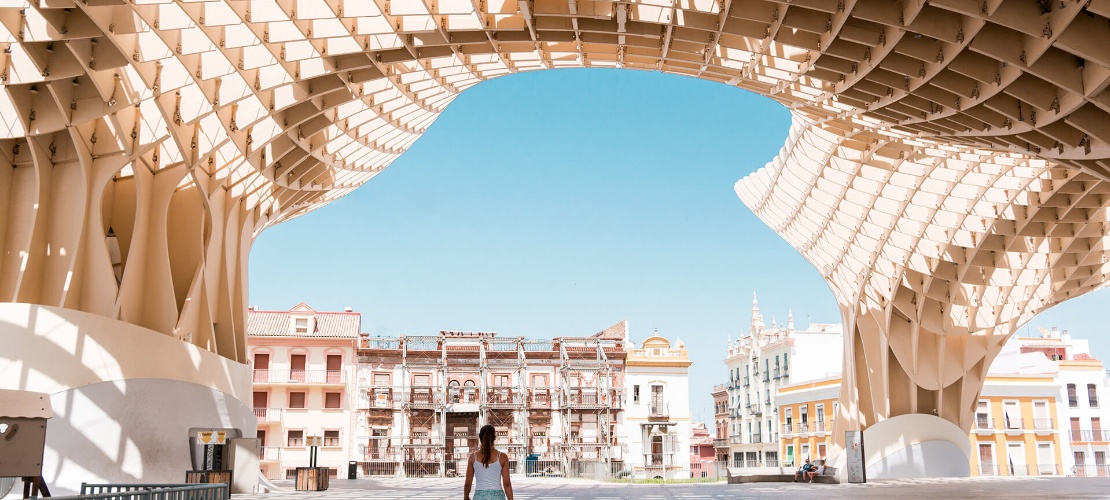
Visiting Spain brings you into direct contact with the history of…
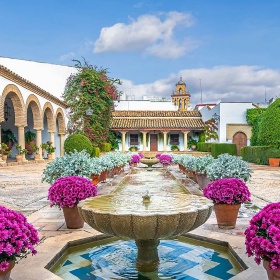
Art, culture, tradition, history...…
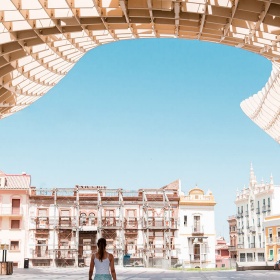
Think of a museum. What do you imagine?…
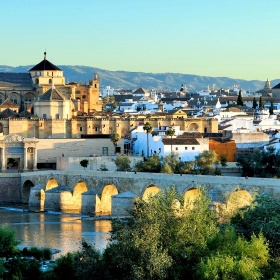
Spending some of your holiday time on self-care is always the…
How to get there - transport information
Select the means of transport to see how to get there or how to get around at your destination.
How to get to aeroplane
The nearest airports with international connections are: Seville airport , 125 kilometres away, Malaga airport , 175 kilometres away, Madrid airport , 400 kilometres away.
How to get to train
Approximate journey times by high-speed train : Madrid-Córdoba: 1 hour 40 minutes. Seville-Córdoba: 40 minutes. Málaga-Córdoba: 50 minutes. Granada-Córdoba: 1 hour 30 minutes. Valencia-Córdoba: 3 hours. Alicante-Córdoba: 4 hours. Barcelona-Córdoba: 4 hours 35 minutes.
The Córdoba railway station is very close to the old town, and less than two kilometres from the Great Mosque (just over a 20-minute walk). There are also several bus routes que you can take to the city centre.
Ticket booking
How to get to bus
Córdoba bus station is located very close to the historical part of the city, just two kilometres from the Mosque-Cathedral. The journey on foot is around 25 minutes, or there are several city bus routes .
You can check the bus routes to Córdoba on the bus station website .
How to get there by road
From Madrid, via the A-4 motorway.
From Seville, via the A-4 motorway.
From the Costa del Sol, via the A-45 motorway.
From Valencia via the A-4, the A-3 and A-4, or the A-3 and the A-43.
you can check where to park your car on the Córdoba Tourist Board website .
Practical information
The city is easy to explore on foot.
How to get around in bus
Córdoba’s city buses usually run between 6 am and 11.00 pm. On Saturdays and Sundays they start 30 or 60 minutes later. More information
There is a bus from Cordoba to Medina Azahara, with daily departures between Tuesday and Sunday at 10:00 a.m. and at 10.45 a.m. On Fridays and Saturdays, it also leaves in the afternoon at 5:00 p.m. More information
There is also a tourist bus that runs between 9.30 am and 5 pm. More information
How to get around in other means of transport
Córdoba taxis are white with their official number marked on the door. More information
An unusual way to see Cordoba is from a horse-drawn carriage. You can find these opposite the Mosque-Cathedral, next to the Alcázar de los Reyes Cristianos, and at the Glorieta de la Cruz Roja (Red Cross roundabout).
Excursions to nearby destinations
Costa del Sol
Endless beaches to stroll along, hidden coves, white villages that appear l...
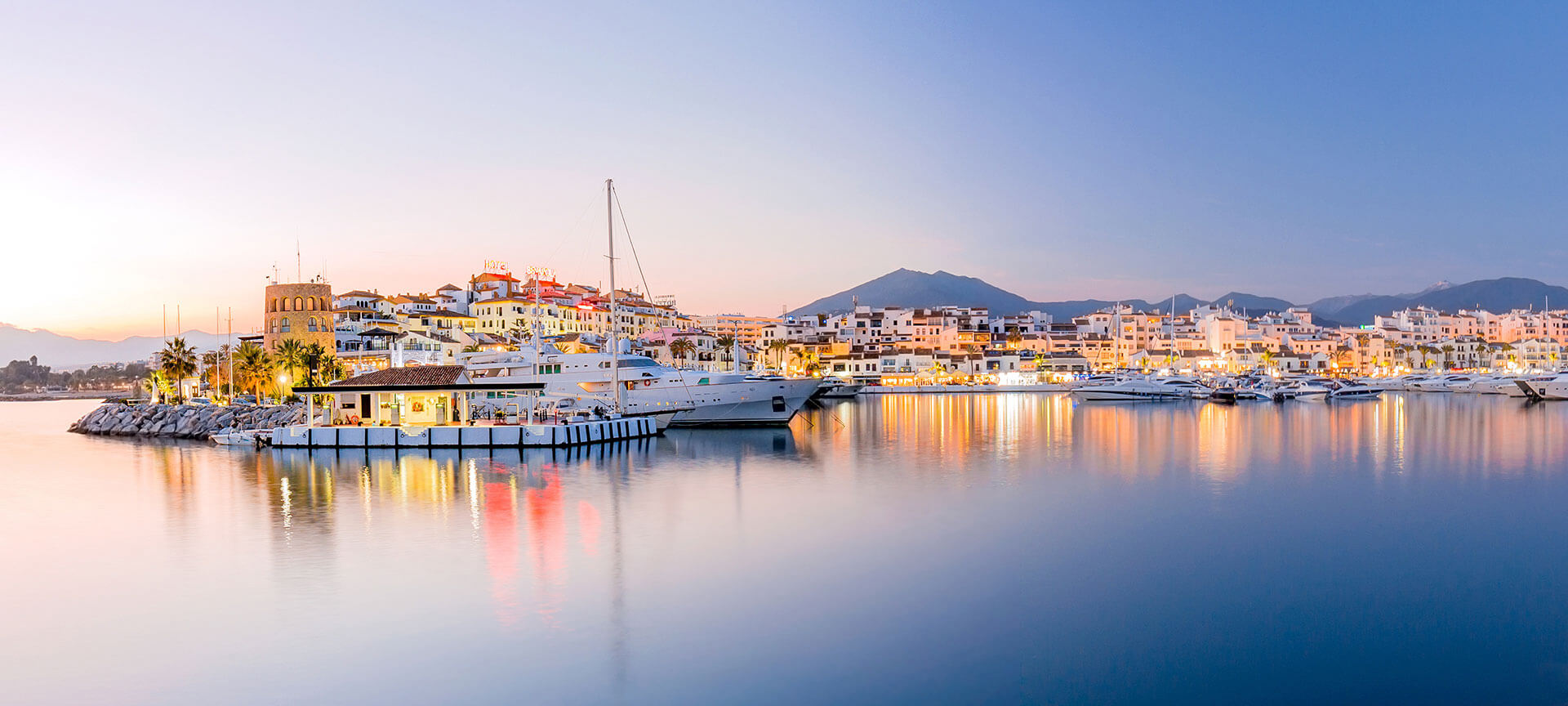
Seville is a city that leaves its mark, and many people define it as specia...
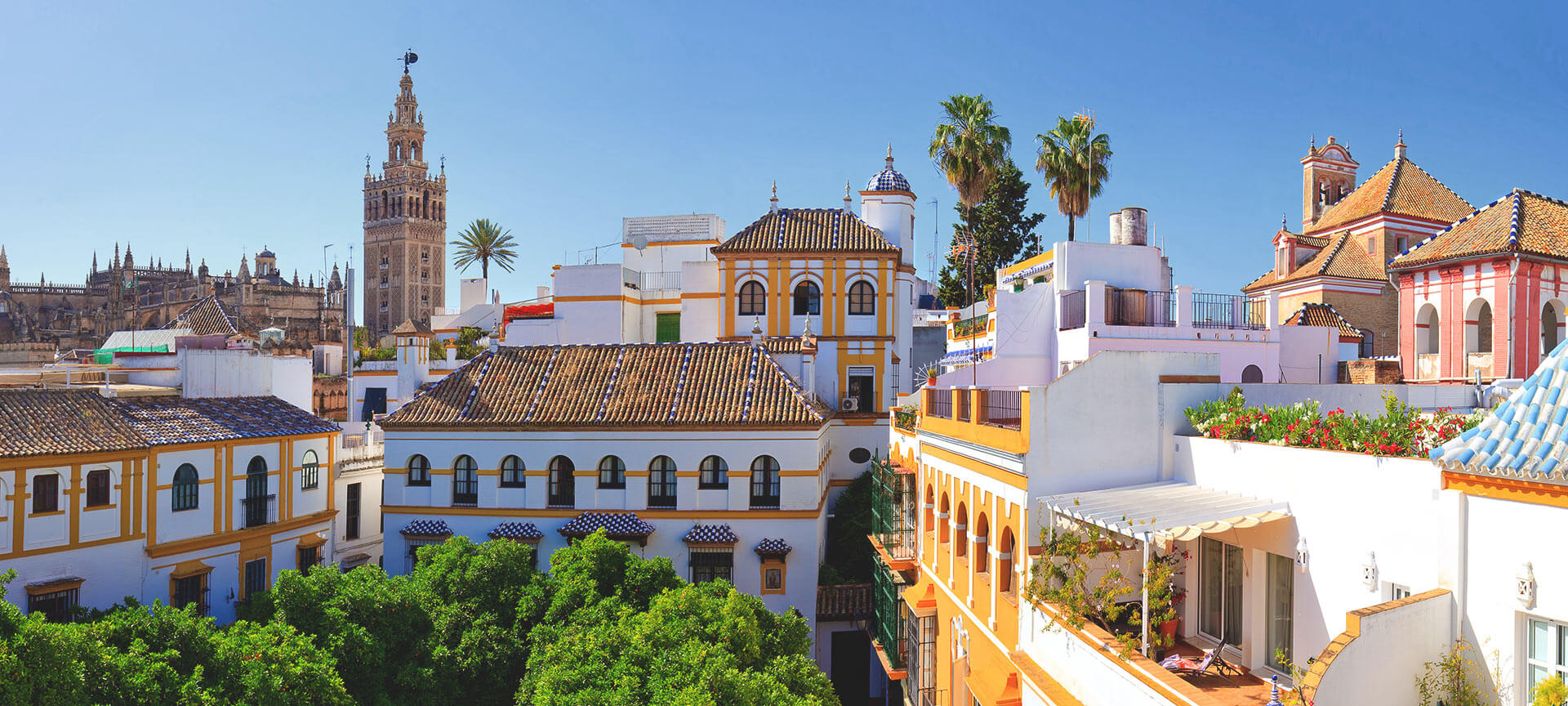
Beyond its 16 sunny beaches, this Andalusian city on the shores of the Medi...
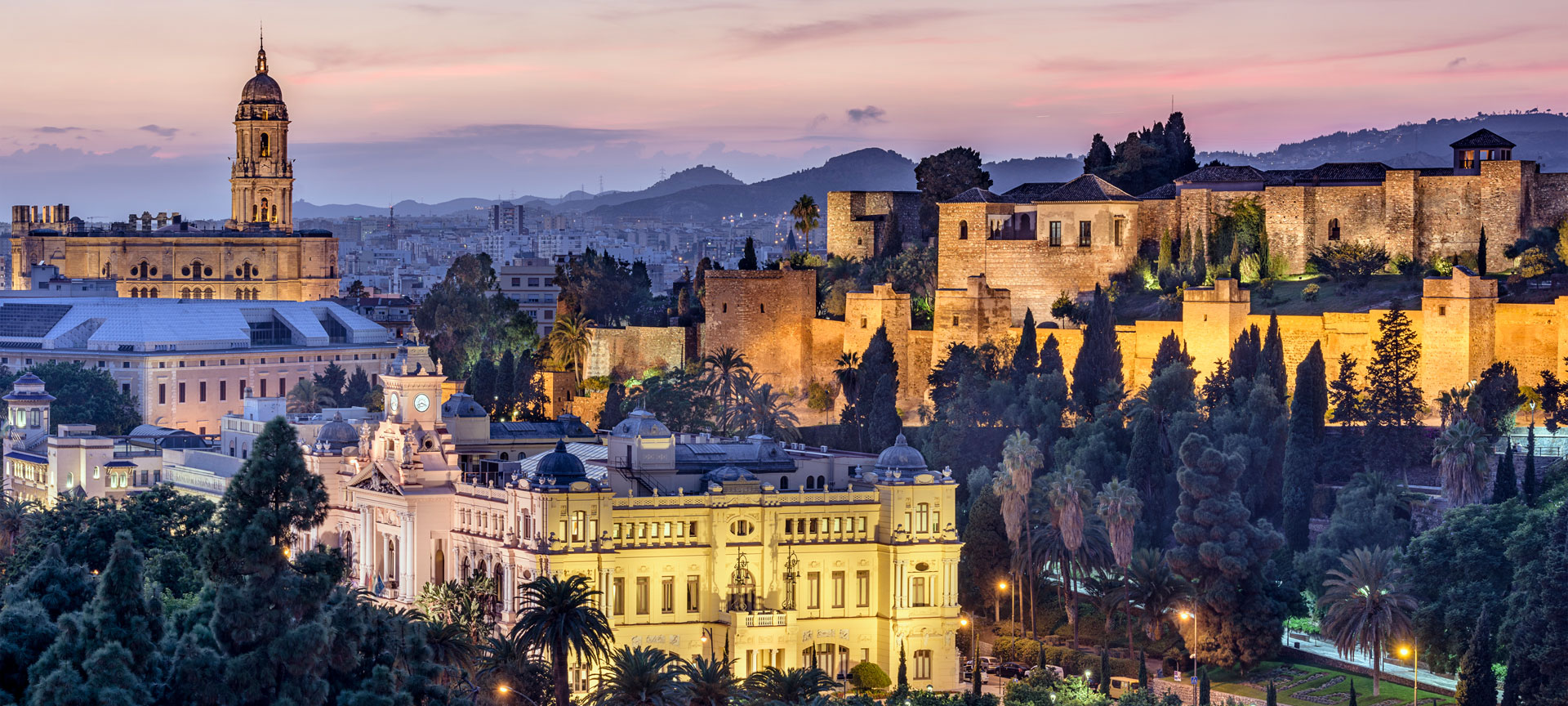
Priego de Córdoba
In the southeast of the province of Cordoba, at the foot of fertile plains ...
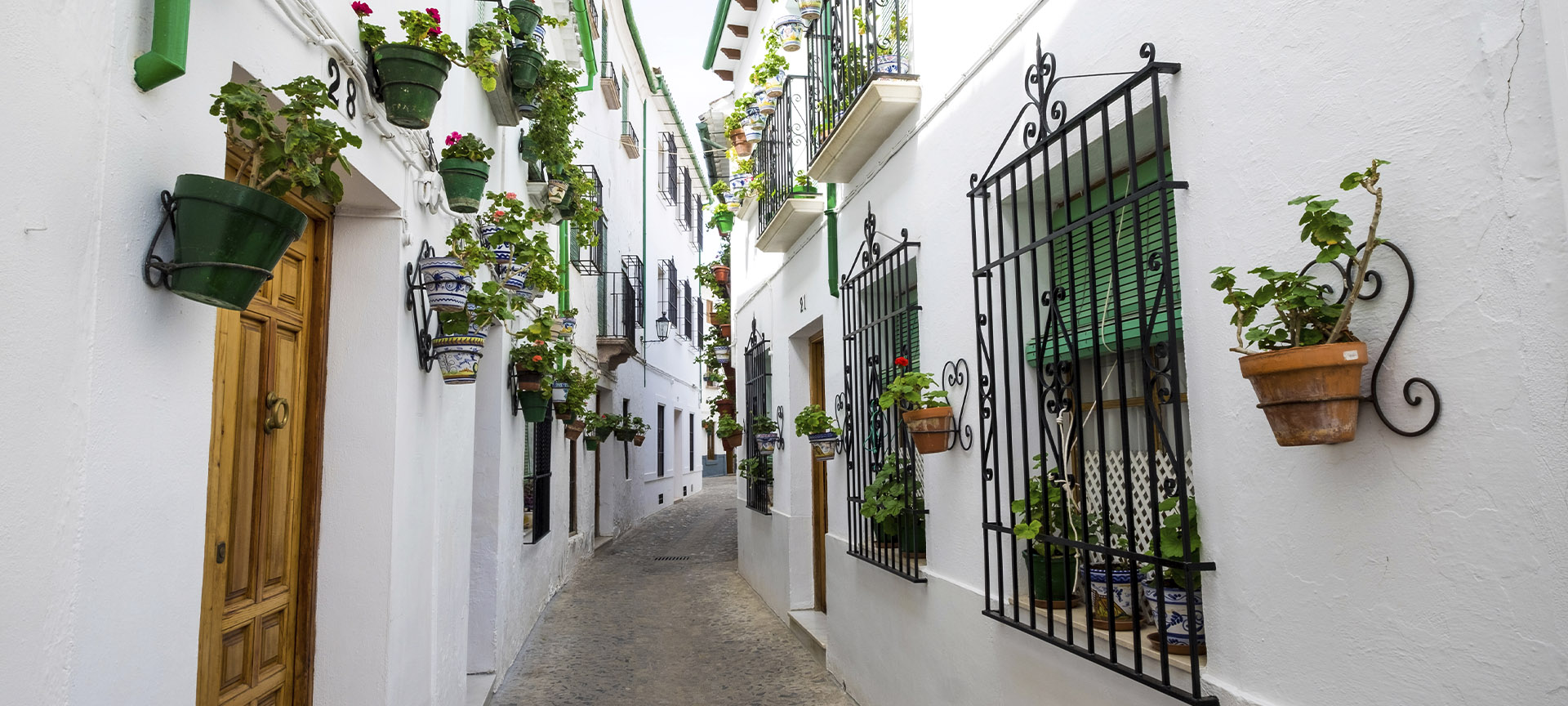
This provincial capital boasts the largest number of protected spaces and c...
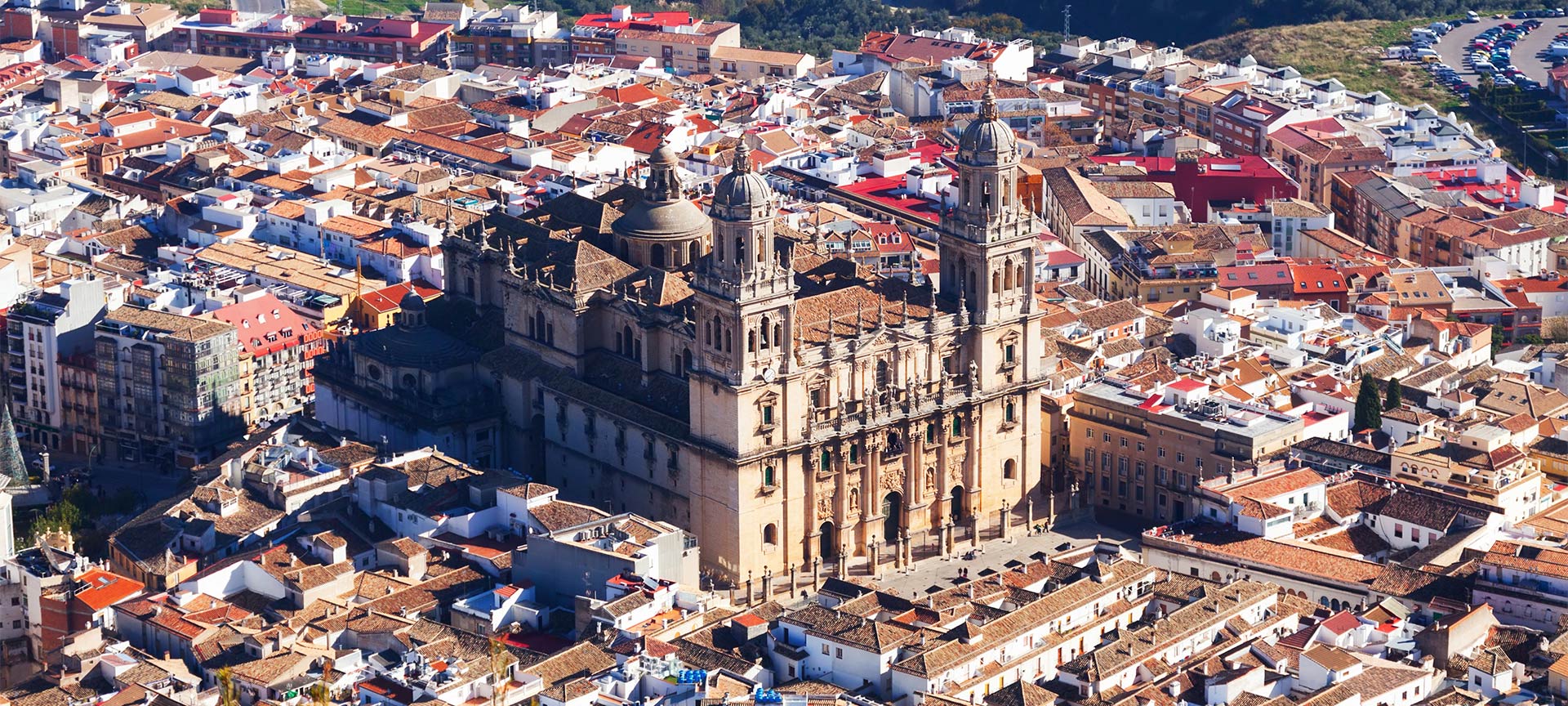
At the foot of the Sierra Nevada mountains, between the rivers Darro and Ge...
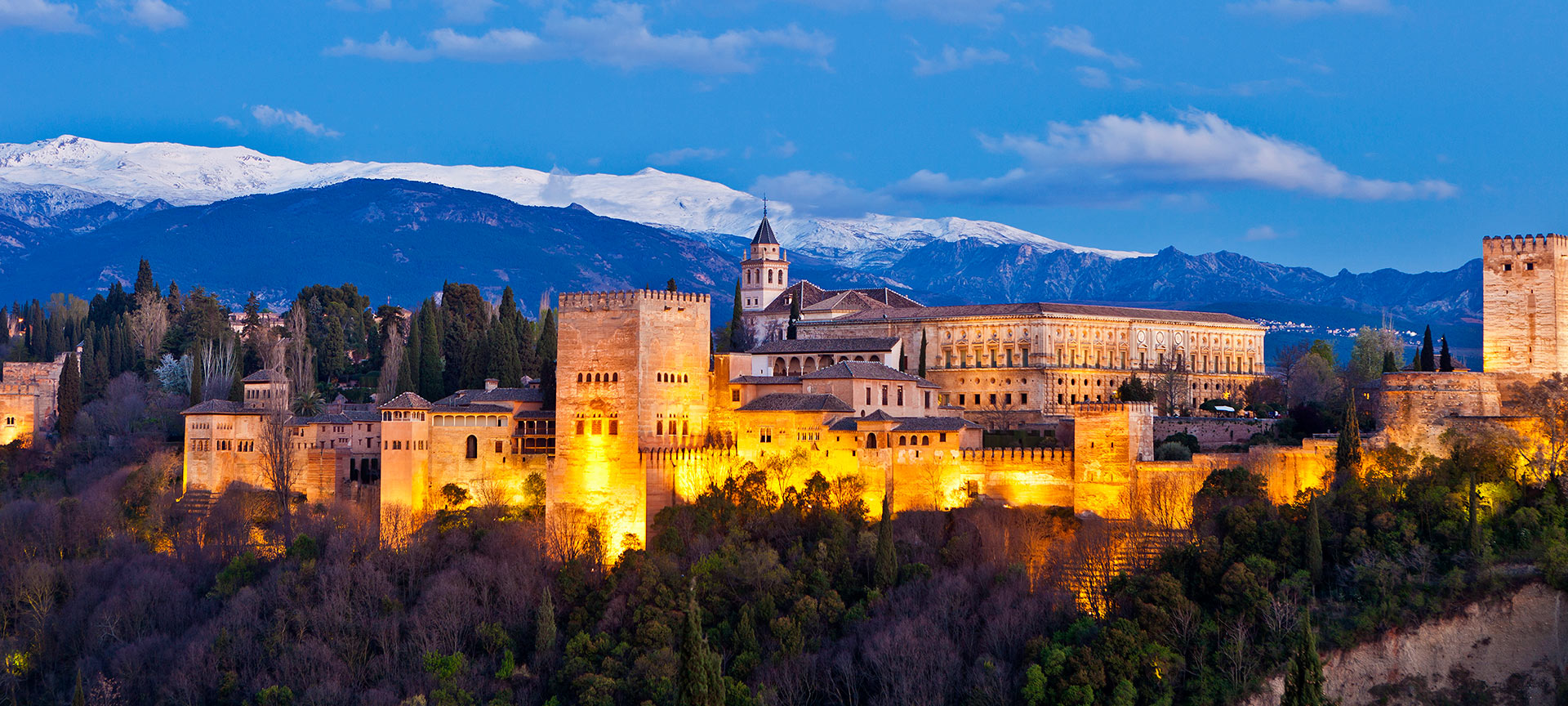
This town in Malaga divides its urban area on both sides of the Tajo del Ro...
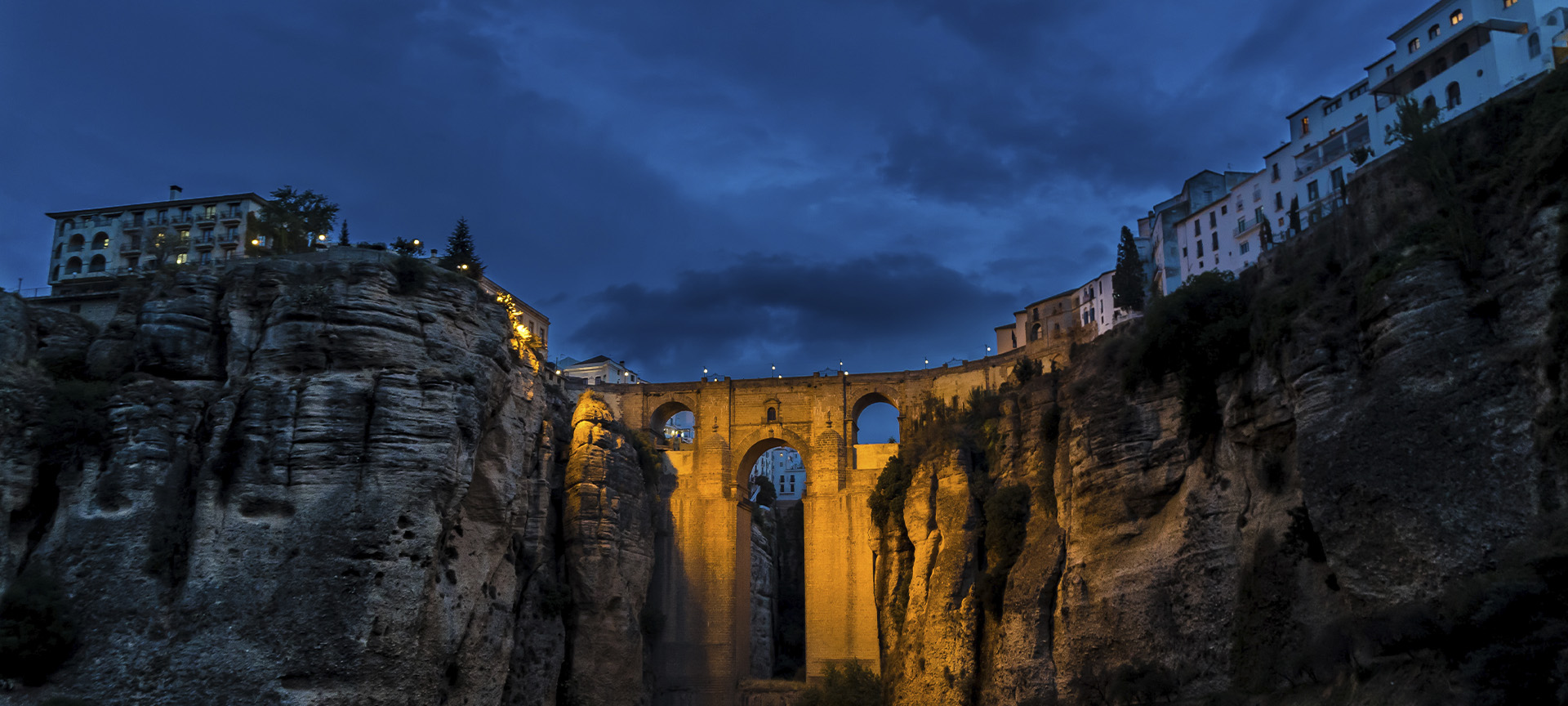
Shows, festivals, sports...
View some of the most relevant events you will be able to enjoy at the destination.
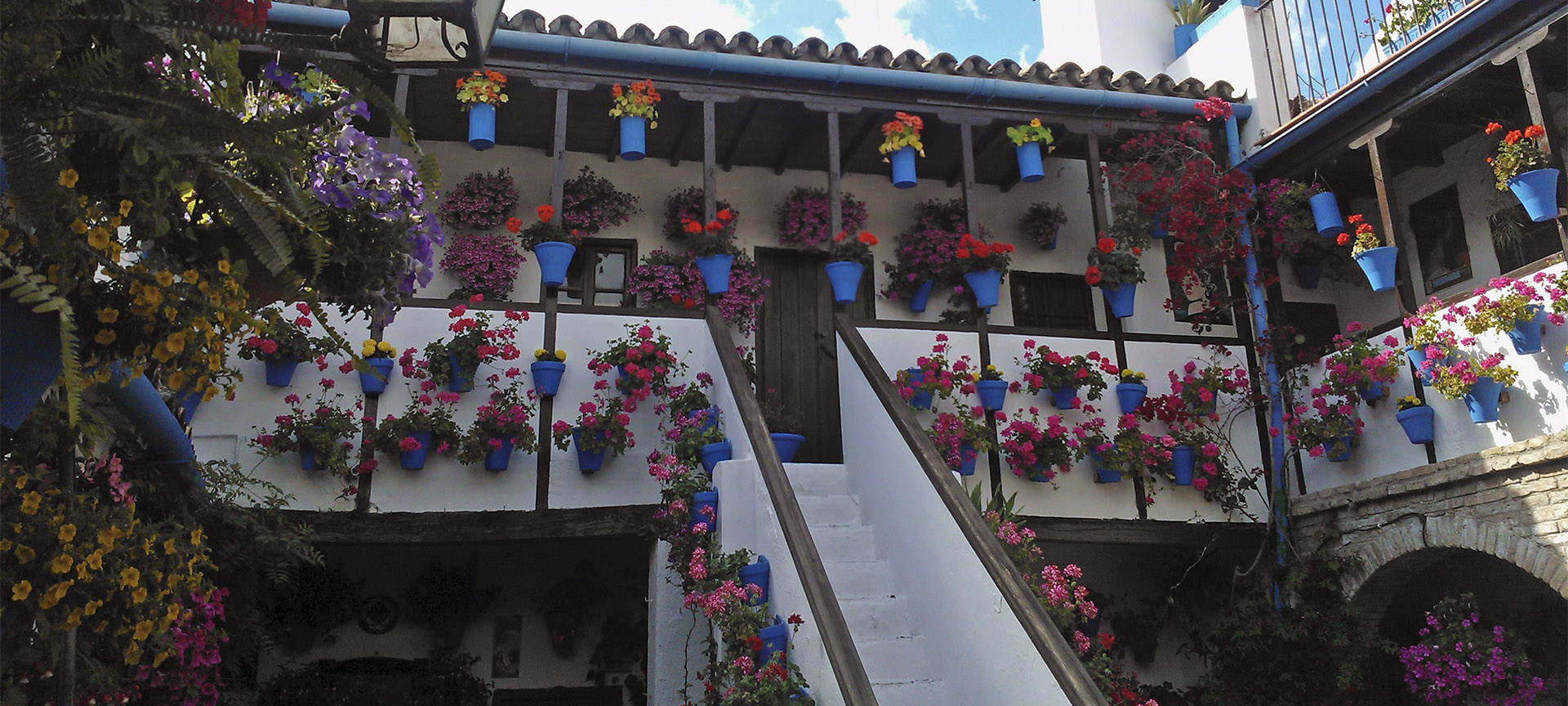
Courtyards Festival in Cordoba
Montilla-Moriles Wine Tasting
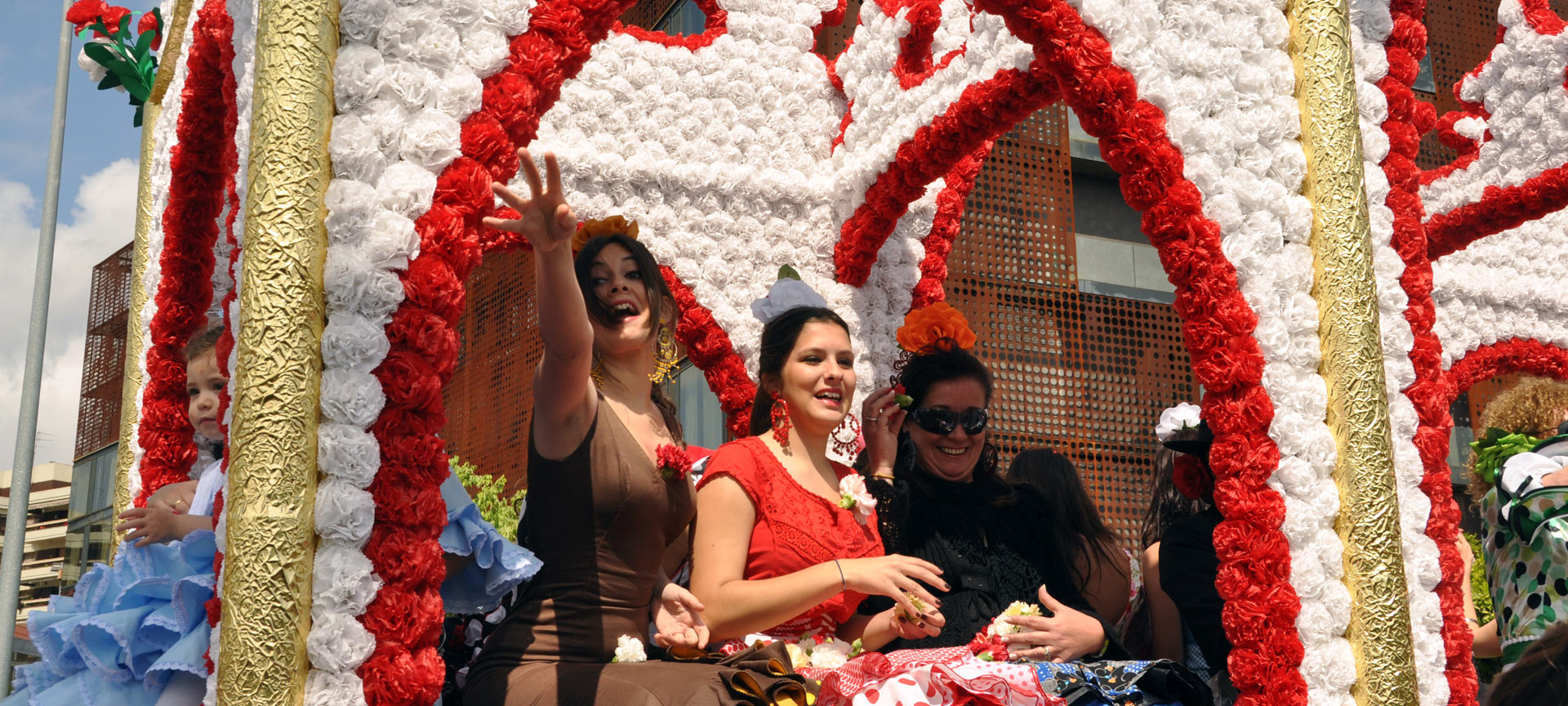
Battle of the flowers

Choose between thousands of activities to live your best life on holiday.


- Best of Spain
- Cities & Villages
- Beach Destinations
- Top Attractions
- Map of Spain
- About España Guide
BEST THINGS TO DO IN CORDOBA
- BEST 5 THINGS TO DO
- MORE THINGS TO SEE
Cordoba’s star attraction is without a doubt the Mezquita (aka the Cathedral-Mosque). Its interior is captivating and jaw-dropping. And the history its endless archways tell is equally as impressive. But Cordoba has more than just the Mosque to make it a great destination.
The old Jewish quarter is a pleasure to stroll through and there are tons of perfectly manicured patios full of flowers and vegetation to discover. And don’t miss the Alcazar palace and walk across the Roman bridge to the Calahorra Tower .
Below is out list of the best things to do in Cordoba, Spain .

This article might include affiliate links, allowing us to earn a small commission at no extra cost to you. Check our disclosure page for more info.
- What to Do in Cordoba
- Map of Cordoba
- Cordoba Mosque
- Jewish Quarter
- Patios & Viana Palace
- Roman Bridge & Tower
- Medina Azahara
- Julio Romero Museum
- Plaza de la Corredera
- Andalusian Horse Show
Top Hotels & Apartments in Cordoba
Map: things to do in cordoba, best 5 things to do in cordoba, cordoba mosque.

Córdoba’s majestic mosque ("mezquita" in Spanish) is a UNESCO World Heritage site and the city’s main attraction. It is one of the world’s greatest works of Islamic architecture as well as a symbol of the sophisticated Islamic culture that flourished in Córdoba when it was once the centre of Western Islam.

The construction of the mosque started in 785 AD , when Córdoba was established as the capital of Al-Andalus . Over the centuries numerous new additions were made to the original building.
In 1236, Cordoba was retaken by the Christian King from Castile and the mosque was converted into a church. Finally, in the 16 th century , a massive cathedral was built in the center of the Mosque.

What makes the mezquita truly special is that it was never destroyed by the conquering Christian forces but instead was repurposed and added on to, leaving behind centuries of history in a single building.
Apart from the interior of the mosque itself, its courtyard, known as the Patio de los Naranjos (The Patio of the Orange trees), is always free to visit. Inside, you can visit the 17 th century Bell Tower which was built over the remains of the mosque’s minaret. With its height of 54m (177ft), it offers some of the best views of the city .

The Alcazar de los Reyes Cristianos (Castle of the Christian Kings) was built in the 13 th & 14 th centuries on the remains of a Moorish palace. During the reconquista in the late 1400’s, Isabella I and her husband, Ferdinand II, used the castle as their primary residence.

Although there isn’t much to see inside the building today, the Alcazar of Cordoba is still definitely worth a visit. There are some great views from the top of one of the towers and outside you will find beautiful terraced gardens that are a delight to walk through: fish ponds, fountains, orange trees and plenty of colorful flowers. It’s easy to imagine caliphs and kings walking through these same gardens centuries ago.

JEWISH QUARTER

The Jewish Quarter (“judería” in Spanish) is located next to the Mosque. This labyrinth of narrow streets and whitewashed buildings was once home to a vibrant Jewish community that, by the 10 th century, was well established in the society (doctors, jurists, administrators, etc.).

However, once the christians arrived to Al-Andalus, the Jewish community faced persecution. Thousands were killed for not converting to christianity and by 1492 all were expelled from Spain . As a result, there isn’t much “Jewish” in the Jewish Quarter today, with the exception of a small but beautiful synagogue (free entrance).

The neighborhood is still very charming and it’s worth it to wander through its winding streets. You will also find many bars, restaurants and souvenir shops. In addition, there are several other small points of interest:
- Chapel of San Bartolomé (1.50€ entrance fee) is a splendid example of Mudejar (Islamic style) architecture.
- Artisan Market (Zoco Municipal de Artesanía, free entrance) is formed by a charming series of courtyards surrounded by the studios of local artists. You can buy leather, glass, textiles, pottery, etc.
- Sefarad House (4€ entrance fee) is a Jewish museum in a restored 14 th century home. Not many local artifacts though and a lot of reading.
- Casa Andalusí (4€ entrance fee) houses a small exhibition of Córdoba’s history, art and culture.
- Córdoba’s Bullfighting Museum (Museo Taurino, 4€ entrance fee). If you have already seen the bullfighting museums of Ronda or Sevilla , you can skip this one.

PATIOS & VIANA PALACE

Cordoba can get hot. Real hot. It’s not uncommon to surpass 40°C (99°F) in the summer months. Back in the day, every building in Cordoba would have a small courtyard patio that would function as a private oasis , away from the sweltering heat.
Inside these patios, it’s typical to find a fountain surrounded by shade-giving trees, brightly colored flowers and special architectural features such a tiles, ironwork, arches and columns. These are places that invite you to slow down and relax – away from the stress of the city.

While you can often have a peek into many patios throughout the city, one of the best ways to experience them to their fullest is by touring the gorgeous Viana Palace (8€ entrance fee) . This exuberant 16 th century Renaissance Palace is set around 12 beautifully manicured patios. For an extra 4€, you get a 1 hour guided visit of the inside of the building , which is definitely recommended .

Patios are a serious thing in Cordoba. Every year, the best patios compete for the prize of the most beautiful patio in the Fiesta de los Patios de Córdoba (Patios Festival), celebrated around May’s second and third weeks. During the festival, all of the competing patios are open to visitors for free. Patios Tour -->.

ROMAN BRIDGE & TOWER

Córdoba’s hefty Roman Bridge spans across the Guadalquivir River. When it was originally constructed, it connected the ancient road known as the Via Augusta . This highway ran from Narbonne in France to Cadiz in the very south of the Iberian Peninsula. It was actually the longest and busiest road built by the Romans in ancient Hispania.

At one end of the Roman Bridge, stands the Calahorra Tower (4.50€ entrance fee), a fortified gate from the 14 th century built to protect the Christian city. Currently it houses the Museum of Al-Andalus Life. Inside, you will find information about the thriving Moorish culture that existed in Córdoba during the time of Al-Andalus (9 th -12 th centuries). The top of the tower offers some of the best panoramic views of Córdoba.
More Things to See in Cordoba
Medina azahara.

Located 8km outside of Cordoba’s historic center is the archeological site of Medina Azahara . The ruins are part of a Moorish city built in the 10 th century. Its name means the brilliant city and it was built to show off the newly independent western Caliphate’s power and might. Historical documents describe it as one of the most splendid cities ever built by mankind.
Unfortunately, Medina Azahara was destroyed in a bloody civil war only 75 years after its foundation. Today, its ruins give great insight into everyday society of Moorish Spain. Since 2018, it has been recognized as a UNESCO World Heritage Site .

Flamenco is at the core of Córdoba’s culture. This old tradition is still very much alive today. Flamenco is part of most festivities and celebrations. It is not uncommon for children to attend flamenco school since an early age.
There is even a yearly Certamen de Academias de Baile (Dance Academies Competition) when the students of all the flamenco schools in the city perform for free for a week for the joy of both locals and visitors.

JULIO ROMERO MUSEUM

Córdoba’s most visited museum is devoted to the beloved local painter Julio Romero de Torres (1874-1930). Housed in a former hospital, the museum (4€ entrance fee) exhibits the work of Romero de Torres, including some of his famous paintings of Andalusian female beauty.
PLAZA DE LA CORREDERA

Plaza de la Corredera is Córdoba’s "main square" ("plaza mayor" in Spanish). Dating back to the 17 th century, this historic square is often used for markets and other celebrations (concerts, etc.). The buildings that surround the square have had many different uses throughout the centuries (town hall, jail, hat factory, etc.).
Today, apart from the Market Sánchez Peña , there are also a variety of bars and restaurants surrounding the square, making it the perfect place to sit in a terrace and enjoy a drink and/or snack.
ANDALUSIAN HORSE SHOW
Horse breeding has a long tradition in Córdoba. In 1570, the royal stables (Caballerizas Reales) were built next to the Alcázar with the goal of creating a new horse breed, the Andalusian horse . This horse was bred to be the pure Spanish breed, a symbol of prestige.
Today, the Caballerizas Reales offer a 1-hour equestrian show (17.5€ entrance fee) featuring the Andalusian horse and combining a variety of riding styles with flamenco dance.
If you don’t have a specific interest in horses, you can skip it.
HOSPES PALACIO DEL BAILIO
Patios del orfebre, hospedería baños árabes, more hotels in cordoba, home suite home, apartamentos atrium, casual suite, algo diferente, more apartments in cordoba.
EXTERNAL LINKS
- Cordoba's Official Tourism Website
- Cordoba – Wikipedia
© Eusko Guide Ltd. All Rights Reserved. | Privacy Policy | Disclosure
Has España Guide helped plan your trip?
If so, please consider booking your hotel through the links to booking.com found on our website or use the following link: https://www.booking.com/?aid=1802409
That way, you get the best rates on your hotels and at the same time, it helps us to continue contributing to this site. Everyone wins!
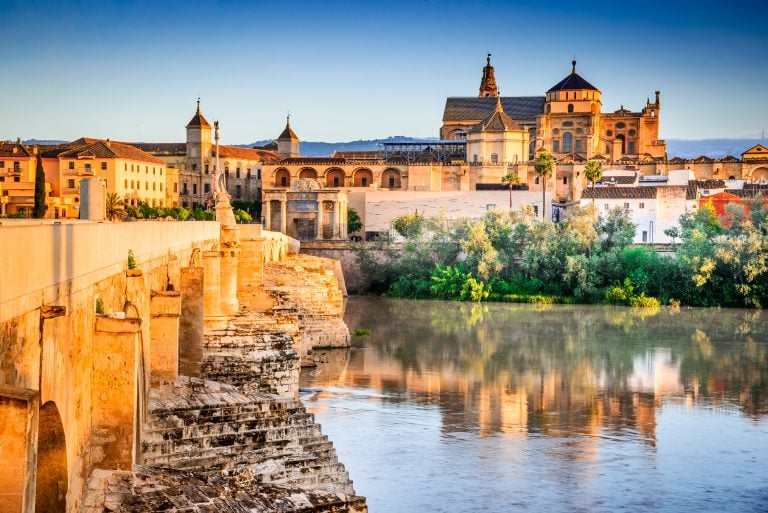
15 Charming Things to Do in Cordoba (+ Itinerary!)
With over 2,000 years of history, beauty around every corner, and a whopping 4 UNESCO World Heritage Sites, it’s safe to say that exploring the best things to do in Cordoba, Spain is an absolute delight.
Today, Cordoba is primarily known for its Moorish architecture–especially the incredibly unique Mosque-Cathedral of Cordoba–and its flower-filled patios.
While spending one day in Cordoba on a day trip from Seville or Granada is a common way to experience the city (and we have some tips on how to make the most of a short time frame in this Cordoba travel guide), there’s no doubt that this riverside city is enchanting enough that you can enjoy a longer trip, too.
Here’s what to do in Cordoba, Spain!
Table of Contents
The Best Things to Do in Cordoba, Spain
Where to stay in cordoba, spain, suggested one day itinerary for cordoba, getting around when visiting cordoba, when to visit cordoba, spain.
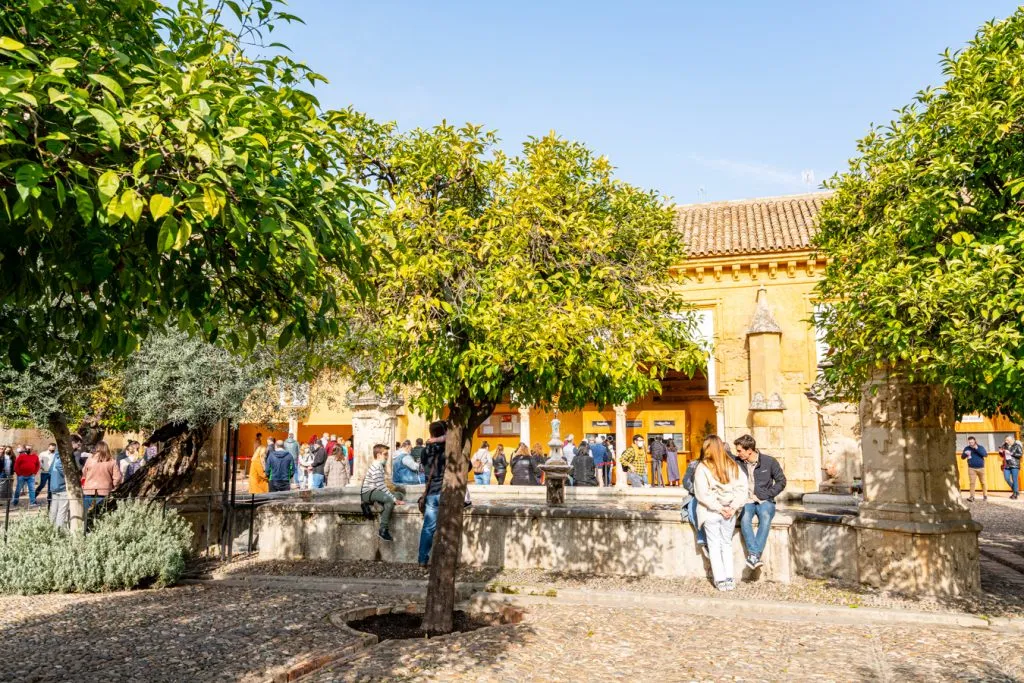
Some links in this post may be affiliate links. If you make a purchase through one of these links, we may earn a small commission at no extra cost to you. Please see our disclosure policy for more detail.
Step inside the Mosque-Cathedral of Cordoba.
Visually mesmerizing and historically fascinating, the Mosque-Cathedral of Cordoba is one of the most unique houses of worship in Spain–or possibly in the world.
Construction on the mosque originally began in 785, when Cordoba was a decidedly Islamic city.
In 1236, the city changed hands and the mosque was transformed into a cathedral.
Today, as you wander through the building, you’ll see a structure that very clearly resembles both faiths (though today, it operates solely as a Catholic cathedral).
It’s an incredible place to explore, and indisputably the top attraction in Cordoba.
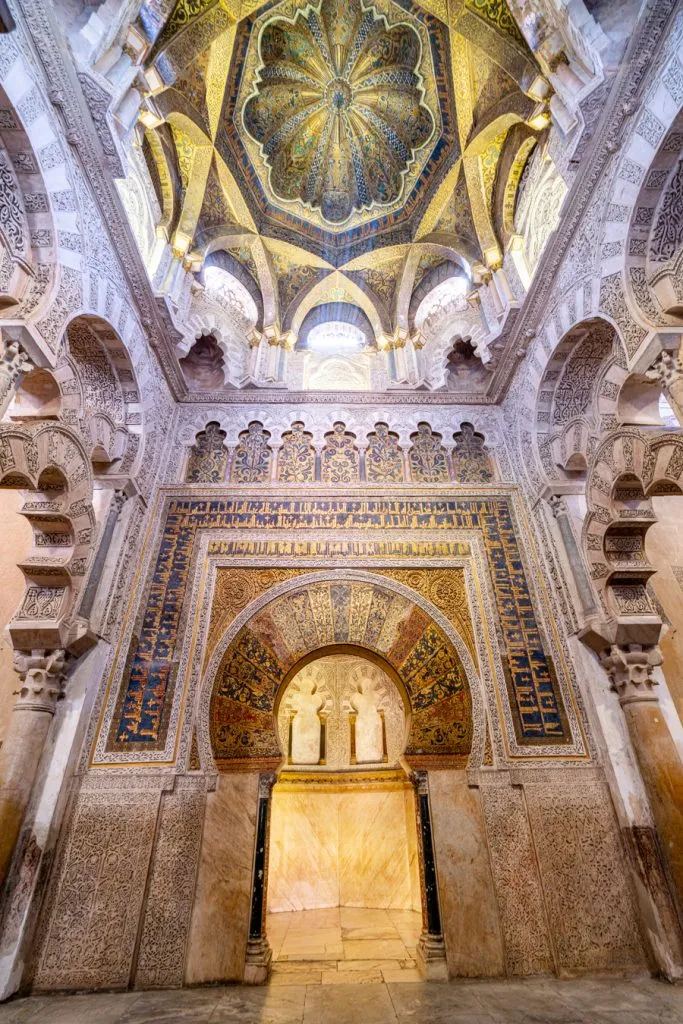
If you only have one day in Cordoba, the Mosque-Cathedral should be your top sightseeing priority.
Lines get extremely long (not to mention sweltering hot in the sun), so be sure to pre-book a skip-the-line ticket or, even better, a guided tour that will help bring the history of the building to life before you go!
Book your guided tour of the Mosque-Cathedral today! Prefer to explore independently? Book a skip-the-line ticket for your visit to the Mosque Cathedral!
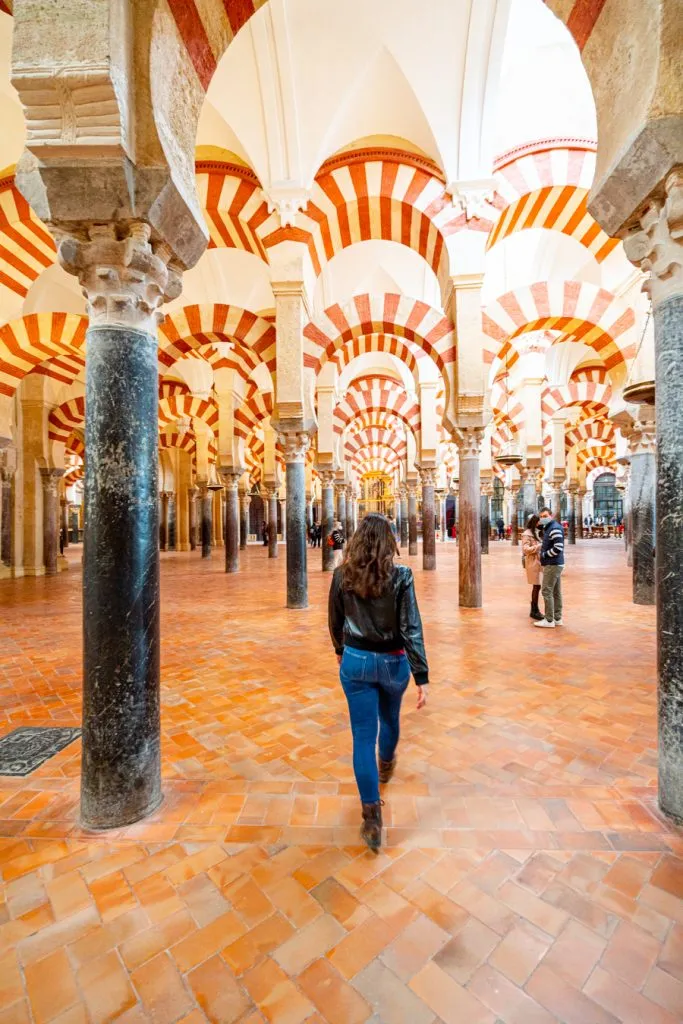
Stroll across the Roman Bridge.
Cordoba’s long history begins with the Romans–and one of the most enduring Roman features of the city is the Roman Bridge across the Guadalquivir River!
While the bridge has been rebuilt several times since its original construction in the early 1st century, its name still harkens back to its origins.
Today, beautiful views and plenty of buskers will greet you as you make your way across it.
Game of Thrones fans may also recognize the Roman Bridge as the Long Bridge of Volantis!
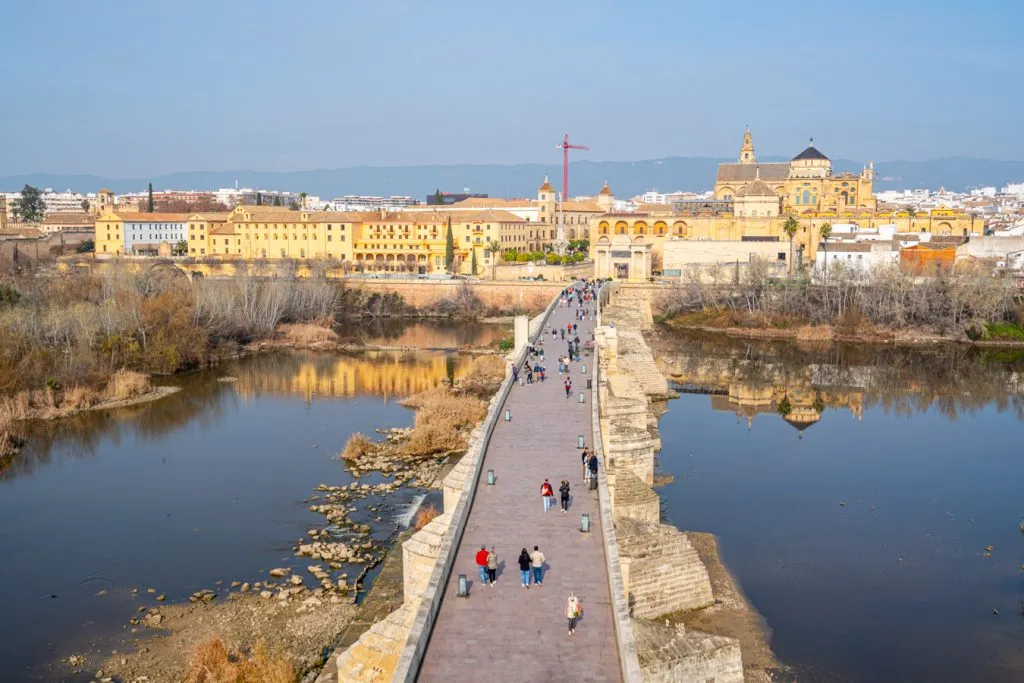
Visit the Alcazar of the Christian Monarchs.
Built on the site of a former Moorish palace, the Alcazar of the Christian Monarchs has played many roles throughout its long history, from the seat of royalty to a military prison.
Christopher Columbus even met with Ferdinand and Isabella here in 1486–6 years before the famous voyage that would change the world.
Unfortunately, much of the original structure is no longer in place, though what remains is interesting and popular to visit.
The real star of the show in the 21st century, though, is the stunning gardens!
To get the most out of your visit, consider booking a guided tour to bring the history of the structure to life!
Book your visit to the Alcazar of Christian Monarchs today!
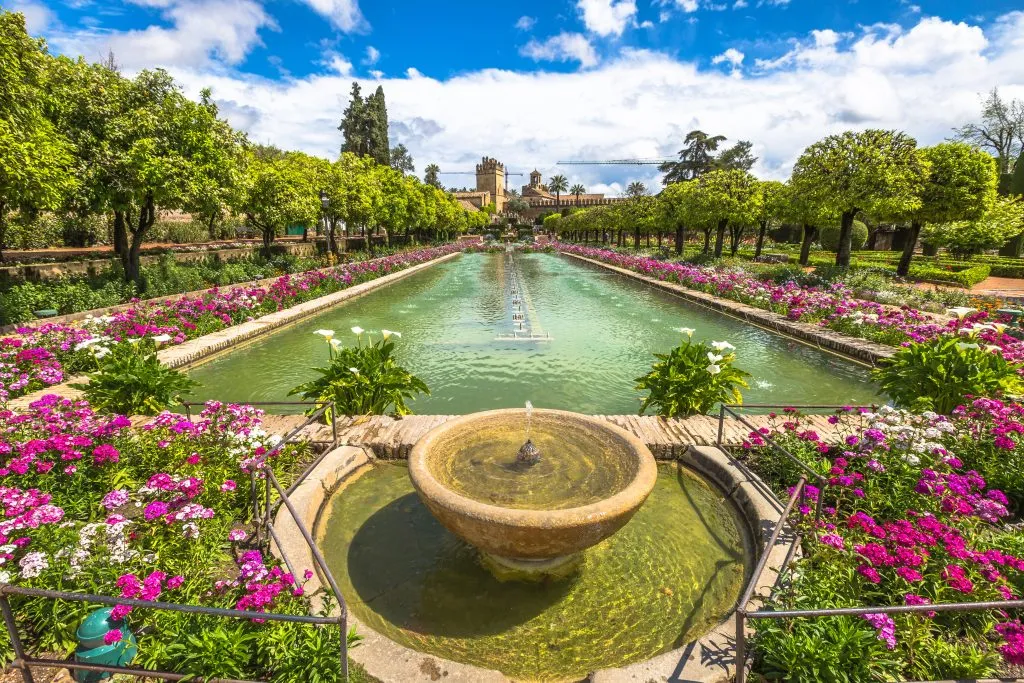
Meander through the Jewish Quarter.
With its maze of beautiful medieval streets, not to mention its status as one of Cordoba’s UNESCO World Heritage Sites, it’s no surprise that exploring the beautiful Jewish Quarter is one of the top things to do in Cordoba, Spain.
From the 10th to the 15th centuries, this is the neighborhood that Jewish people in Cordoba called home.
Remnants of that time can still be found throughout the neighborhood, whether it’s through a carving of Hebrew scripture or a statue of Maimonides, a celebrated Jewish philosopher from Cordoba.
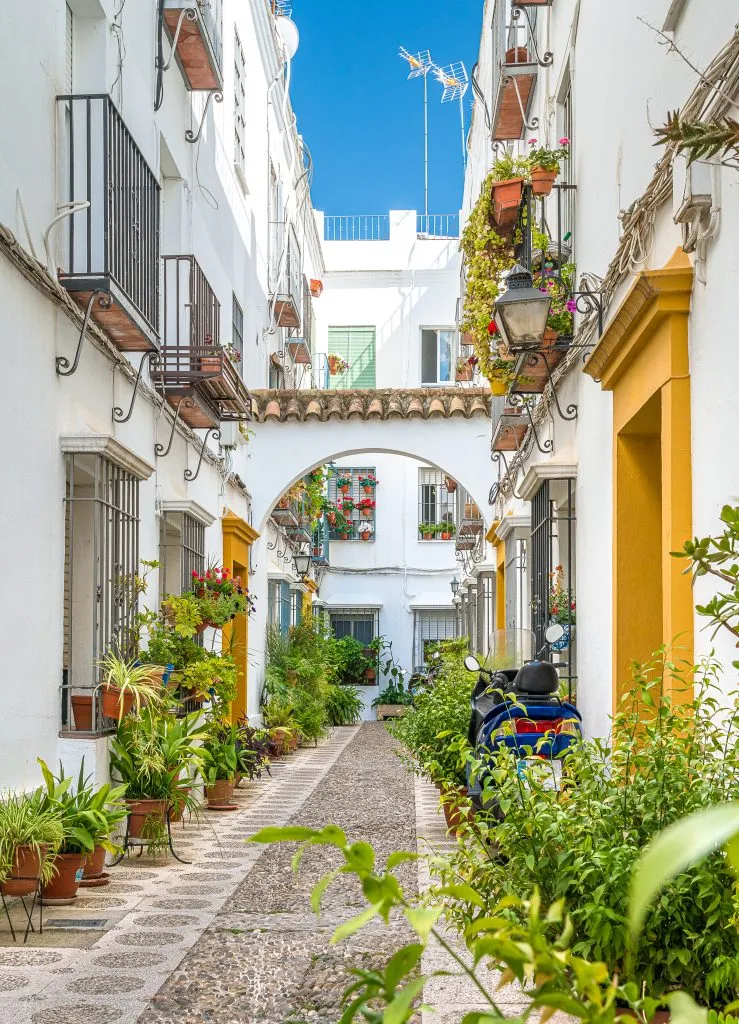
… and visit the Cordoba Synagogue.
Of course, no visit to the Jewish Quarter of Cordoba could be complete without a visit to its beautiful Synagogue!
Dating to 1315, the Synagogue is peculiarly small–some theories suggest it was the private synagogue of a wealthy person at one point–but exquisitely decorated.
It was used consistently for almost 200 years, up until Jewish people were forced out of Spain in 1492.
Want to make sure you don’t miss any details in the Jewish Quarter? This well-reviewed tour includes a visit to the neighborhood as well as a trip to the Synagogue!
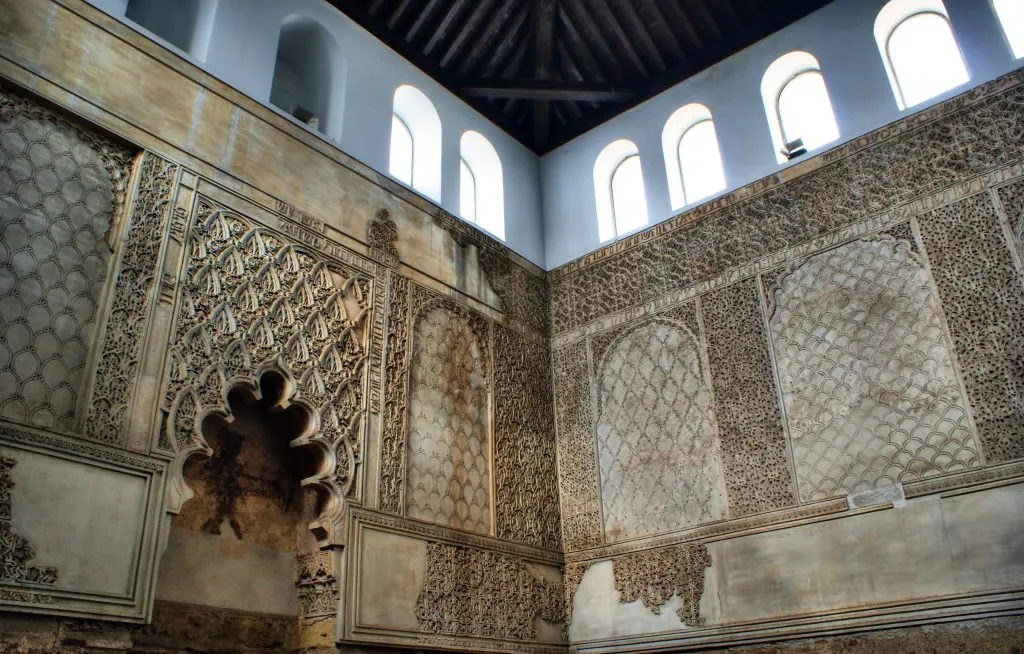
Explore the patios of Palacio de Viana.
Dating (in certain places) to the 14th century, the Palacio de Viana is most famous for having one of the most stunning collections of Cordoba’s famous patios imaginable–12 of them in all.
Situated a decent walk away from many of the best things to do in Cordoba, the Palacio de Viana requires a bit more effort to reach than many of the other most popular Cordoba attractions, but it’s well worth making time for during your trip.
Depending on time, you can choose to tour the patios, the palace, or both.
Buy your skip-the-line tickets for the Palacio de Viana today!
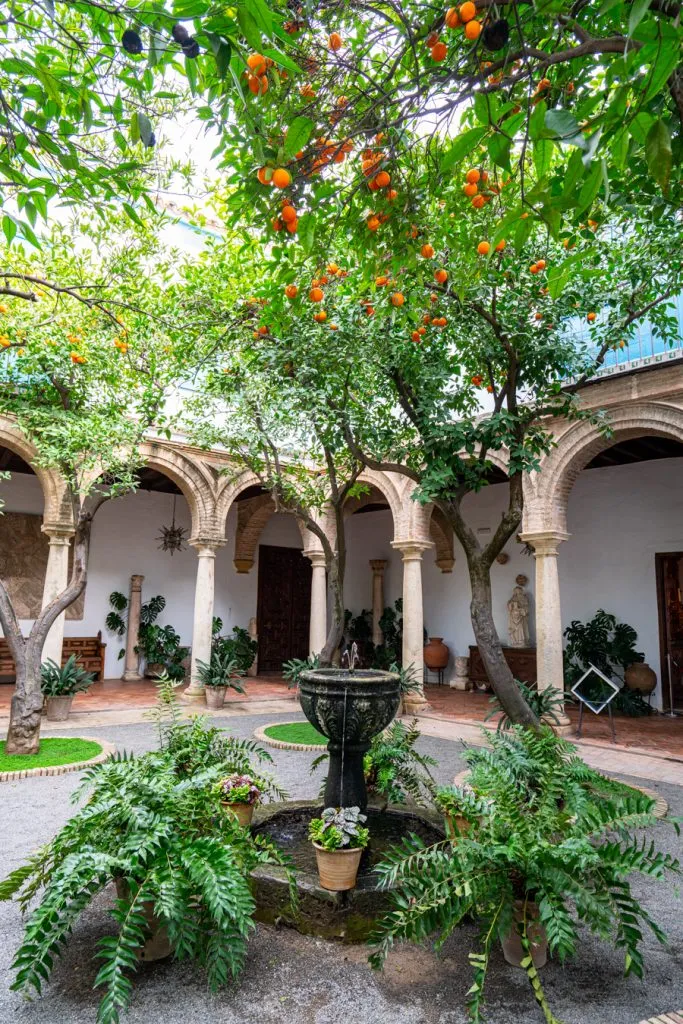
Climb the Calahorra Tower.
Situated at the end of the bridge, just across the river from the historic center, lies the Calahorra Tower.
Inside, you’ll find a small museum exploring Islamic history and contributions to the city, including some incredibly impressive models.
Honestly, the models alone–especially of the Mosque-Cathedral in its days as a mosque–are worth the modest entry fee.
The top of the tower, which you can visit with the entrance to the museum, also boasts a beautiful view of the city (the photo of the Roman Bridge used earlier in this blog post was taken from the rooftop)!
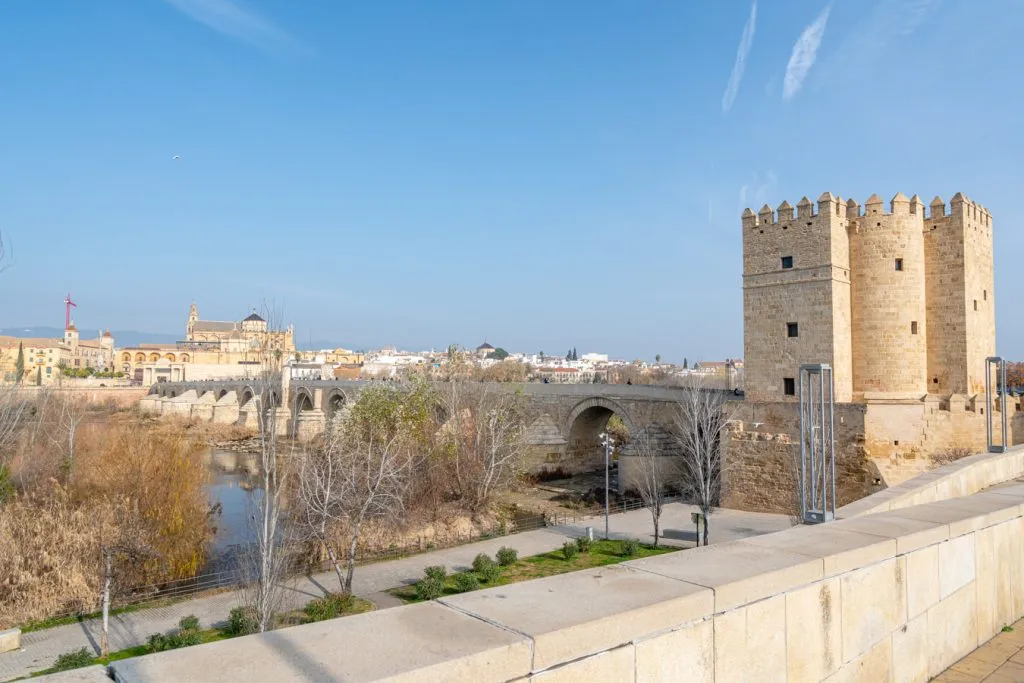
Relax in the Patio de los Naranjos.
Cordoba is known for its patios, and none is more visited than the Patio de los Naranjos!
Featuring planted cypress and (sour) orange trees, this shady, beautiful square lies in the shadow of the Mosque-Cathedral and is one of the best places to visit in Cordoba.
However, as this is also where plenty of tour groups meet, where visitors who haven’t pre-booked tickets line up to grab tickets for the Mosque-Cathedral, and where visitors enter the famous building, it’s safe to say that it’s not particularly peaceful for most of the day!
If you want to have it (more) to yourself, arrive well before the Mosque-Cathedral opens (which is at 10:00 AM most days).
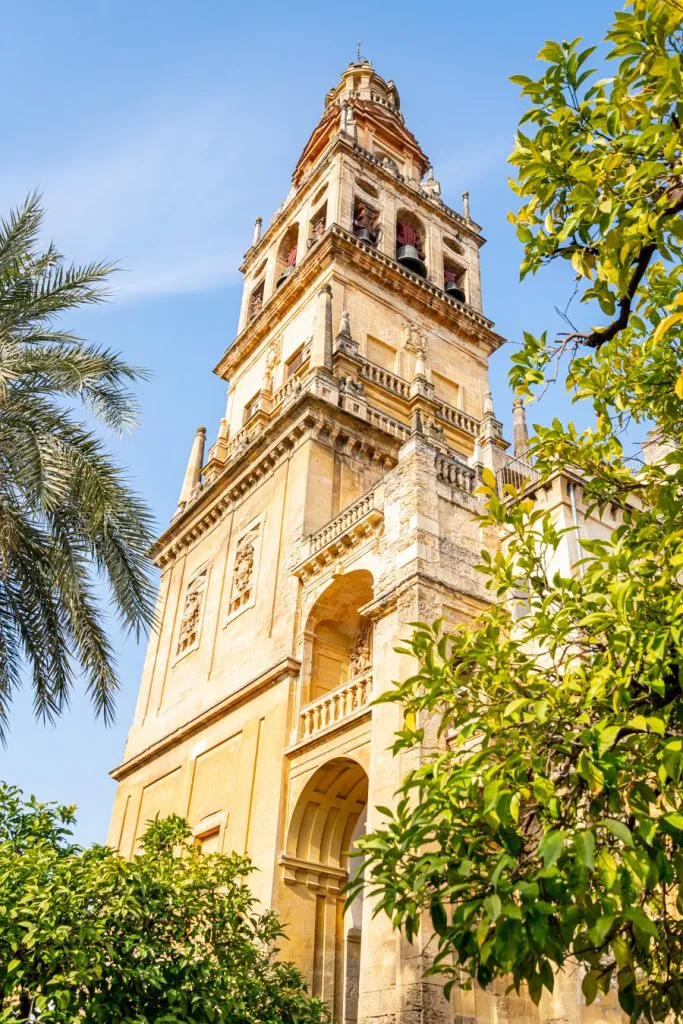
Snap photos along the Calleja de las Flores.
This tiny cobblestone street is one of the most photographed places in Cordoba, Spain–and as you may your way through it, it’s easy to see why!
When you reach the end of the (short) street, be sure to turn around and capture the view of the bell tower of the Mosque-Cathedral that is perfectly framed by the flower pots!
The Calleja de las Flores dead-ends into a small, charming square.
Due to limited space and its popularity, this is definitely one of those places that are best experienced early in the morning, before the bulk of the visitors taking day trips to Cordoba arrive in the city!
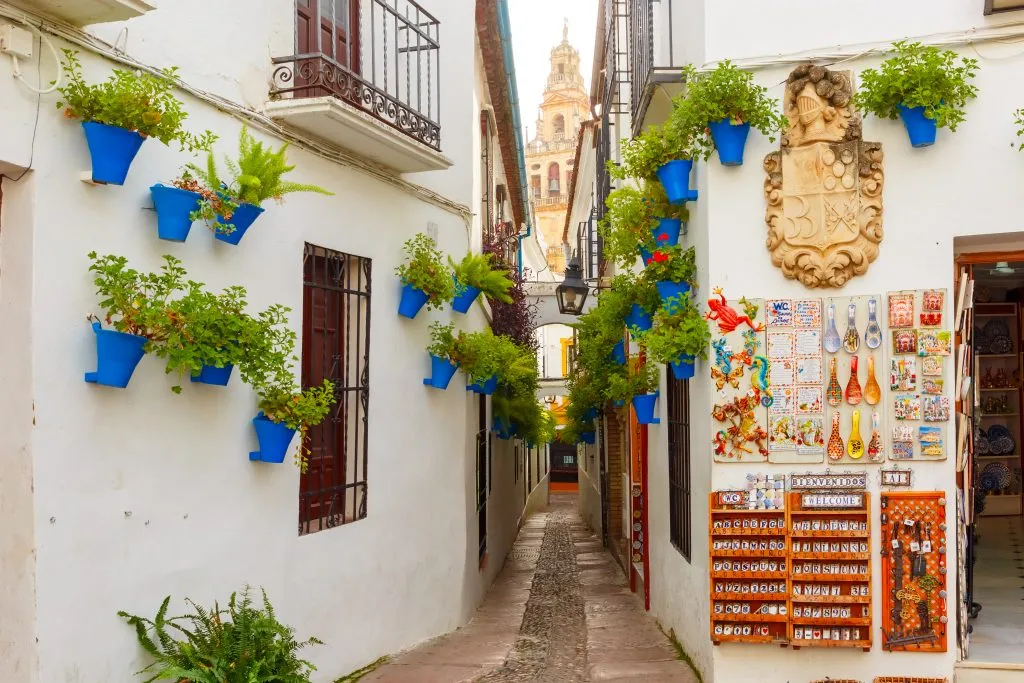
Check out the remains of the Roman Temple.
It’s a common story in Europe, really: someone tries to build something, and instead, they find a Roman archaeological site!
Such is the story of this Roman temple in Cordoba, which you can find right next door to the distinctly modern city hall.
In the 1950s, plans to expand the city hall were interrupted by the discovery of this temple, which is now a quick and interesting stop when visiting Cordoba.
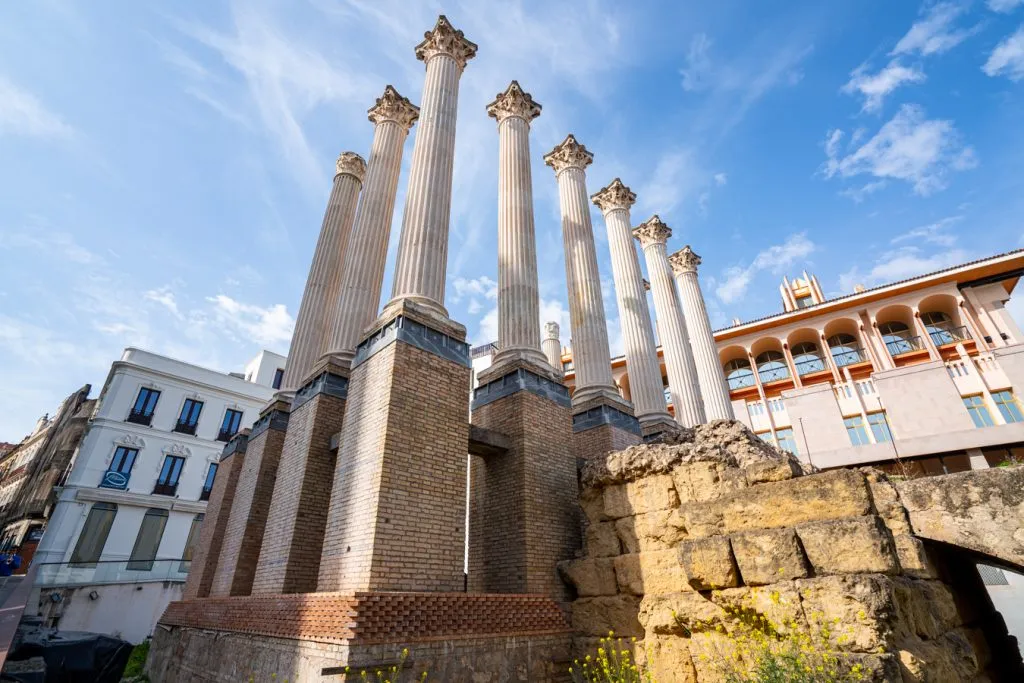
People-watch in Plaza de la Corredera.
Sprawling, charming, and generally packed with people enjoying a tinto verano and some tapas, the Plaza de la Corredera is the largest square in Cordoba.
It’s a fun stop on any Cordoba itinerary and reminds me forcefully of the famous Plaza Mayor in Madrid !
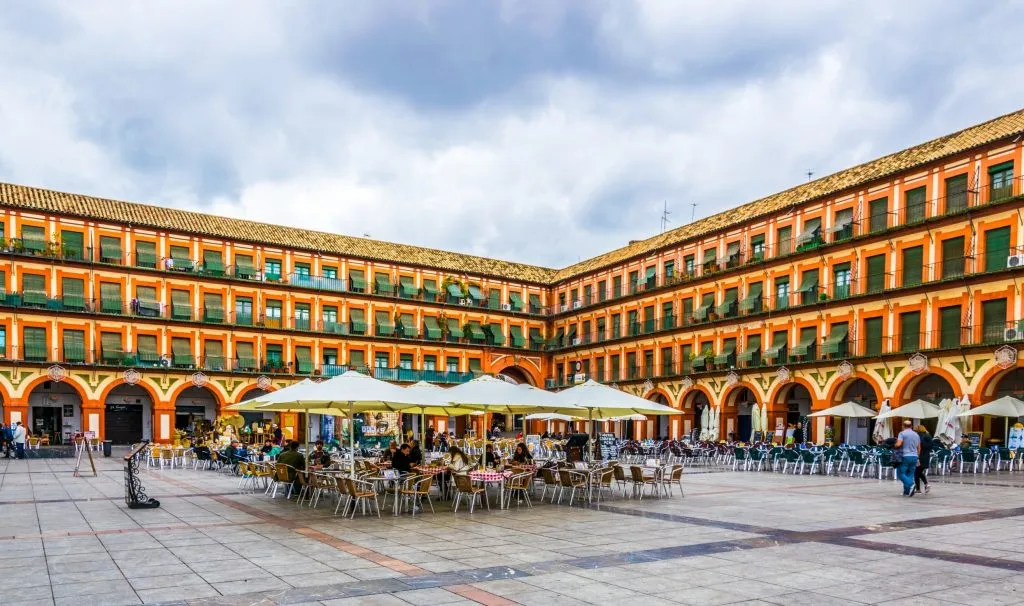
Explore the patios of Cordoba.
Cordoba is famous for its patios, which have acted as relaxed, outdoor gathering spaces for centuries.
They’re famous for their beauty and many, many flowerpots.
Today, you can visit several patios around town that have been repurposed as everything from restaurants to museums (like at the Palacio de Viana ).
If you want to see the spectacularly decorated patios of Cordoba’s private residents, though, the best time to plan your trip to Cordoba is around the annual Patio Festival , when many homes open their patios to the public!
Whether the patios are open or closed to the general public, though, doesn’t help you much if you don’t see them–and many lurk just out of sight.
If you want to see the best of Cordoba’s patios year-round, you can access several through a guided patio tour !
Book your Cordoba patio tour today!
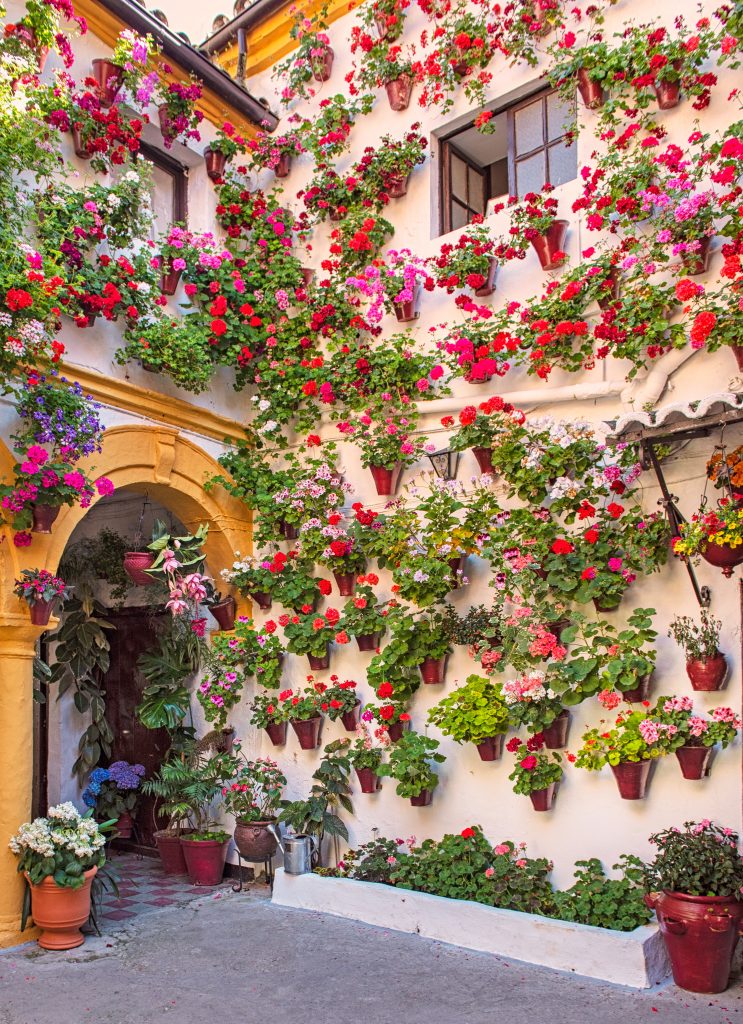
Soak in views of Cordoba from a rooftop bar.
Cordoba’s beautiful skyline is well worth admiring with a tinto verano and plate of tapas in hand–and there’s no better place to do so than at a rooftop bar!
We loved the views from the rooftop of Hesperia Cordoba , where we stayed during our trip, but there are plenty of options around town.
Take a (quick) half-day trip to Medina Azahara.
Built in the 10th century, the remains of the capital of the Caliphate of Cordoba is one of the best places to visit near Cordoba!
This sprawling archaeological site is listed as a UNESCO World Heritage Site and lies just 5 miles outside of Cordoba.
If you don’t have a car with you, the easiest way to access Medina Azahara is by tourist bus, taxi, or guided tour .
Like most archaeological sites, Medina Azahara is best appreciated with the assistance of a tour guide who can bring the area to life!
Book your trip to Medina Azahara today!
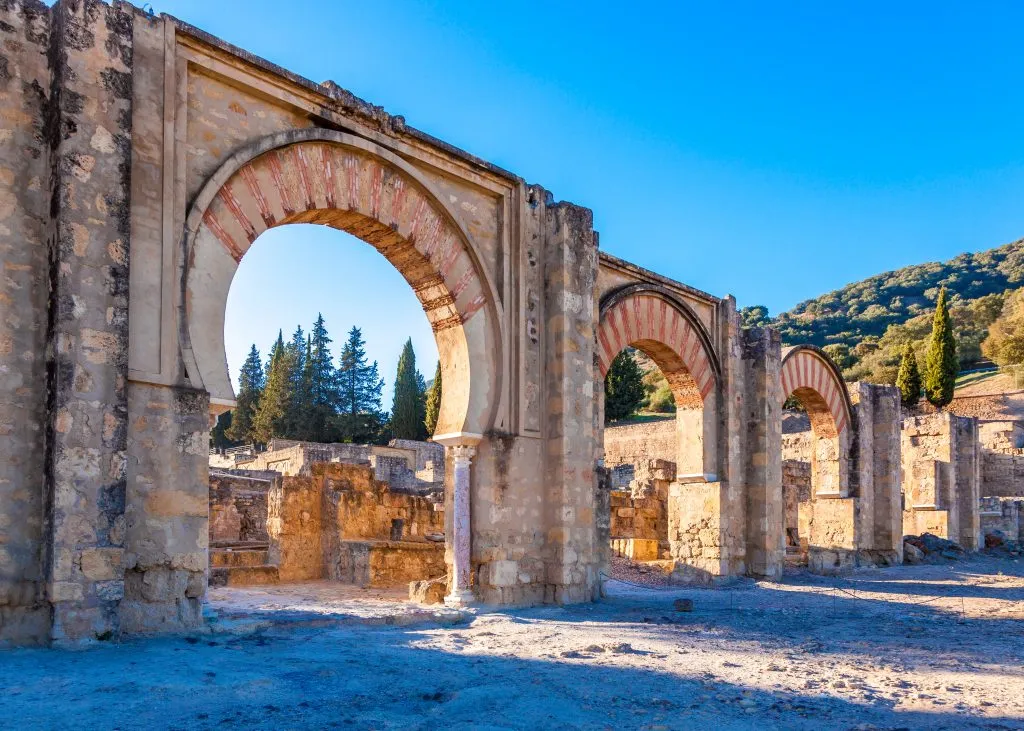
… and the Castle of Almodovar del Rio.
Lying just 15 miles outside of Cordoba, the Castle of Almodovar del Rio may just be one of the most picturesque castles that we have seen anywhere in the world!
… And, considering that the castle played both Highgarden and parts of Casterly Rock in the seventh season of Game of Thrones, we’re certainly not the only ones to think so.
Built by the Moors in 760, the Castle of Almodovar del Rio is perched high above its corresponding small town and appears to erupt from the top of Floresta Hill (which, as you might imagine, means that the views from it are stupendous).
You can tour both the interior and the exterior of the castle, and it makes a fantastic day trip from Cordoba, Spain.
Book tickets to visit the Castle of Almodovar del Rio today!
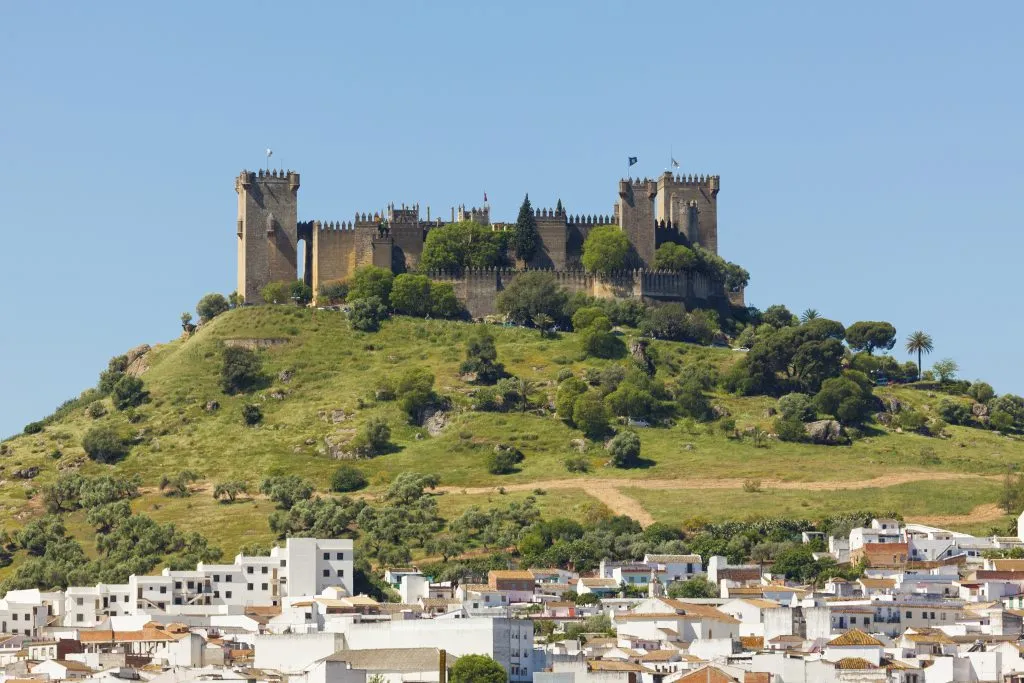
Assuming you’re not visiting Cordoba on a day trip from Seville or Granada, you’ll need the perfect place to spend the night!
When visiting Cordoba, it’s best to stay in or near the historic center of the city in order to be able to access the city’s top attractions on foot.
If you’re driving into the city as part of an Andalucia road trip like we were, there is ample parking available just outside of the historic center.
Here are a few popular, well-reviewed places to stay in Cordoba!
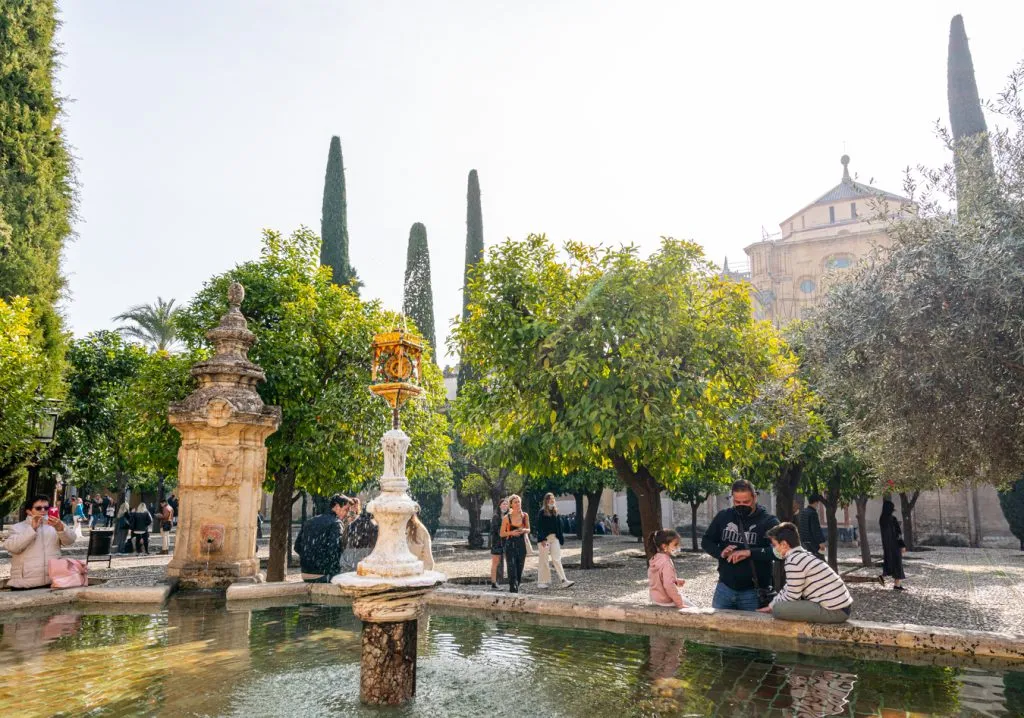
Cordoba Carpe Diem — You can’t ask for a better location for enjoying the best activities in Cordoba than what you’ll find at Cordoba Carpe Diem!
Set less than a 5-minute walk from the Mosque-Cathedral, Cordoba Carpe Diem offers modern rooms, easy access to the city’s best sights, and even a rooftop terrace to enjoy.
Check rates & book your stay at Cordoba Carpe Diem!
Hesperia Cordoba — We loved our stay at Hesperia Cordoba!
Set just over the river from Cordoba’s historic center and a very short walk from the Roman Bridge, Hesperia Cordoba features spacious rooms, excellent customer service, and a rooftop with one of the best views in the city.
We’d be happy to stay again (and so would Ranger–Hesperia Cordoba is very dog-friendly).
Check rates & book your stay at Hesperia Cordoba!
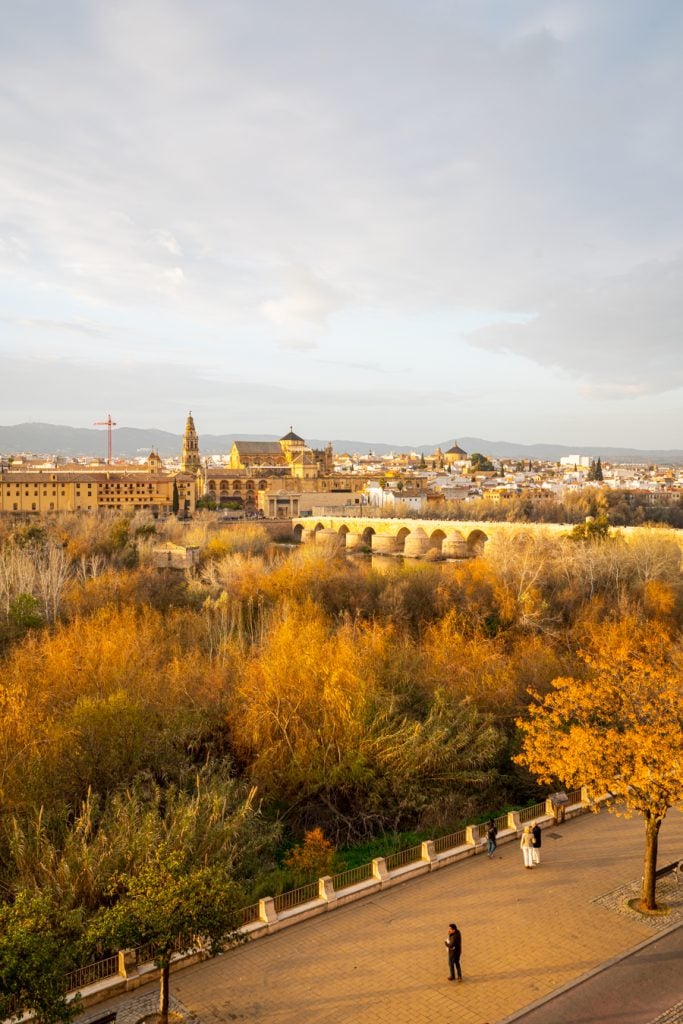
Hospes Palacio del Bailio — Housed in a 16th-century palace built on top of the remains of a Roman villa (that you can catch glimpses of through the floor!), staying at Hospes Palacio del Bailio is a bucket list Cordoba experience.
With features such as a pool, spa, flower garden, and original art in some rooms, a stay at this unique and incredibly popular hotel is not one that you’ll forget anytime soon.
Check rates & book your stay at Hospes Palacio del Bailio!
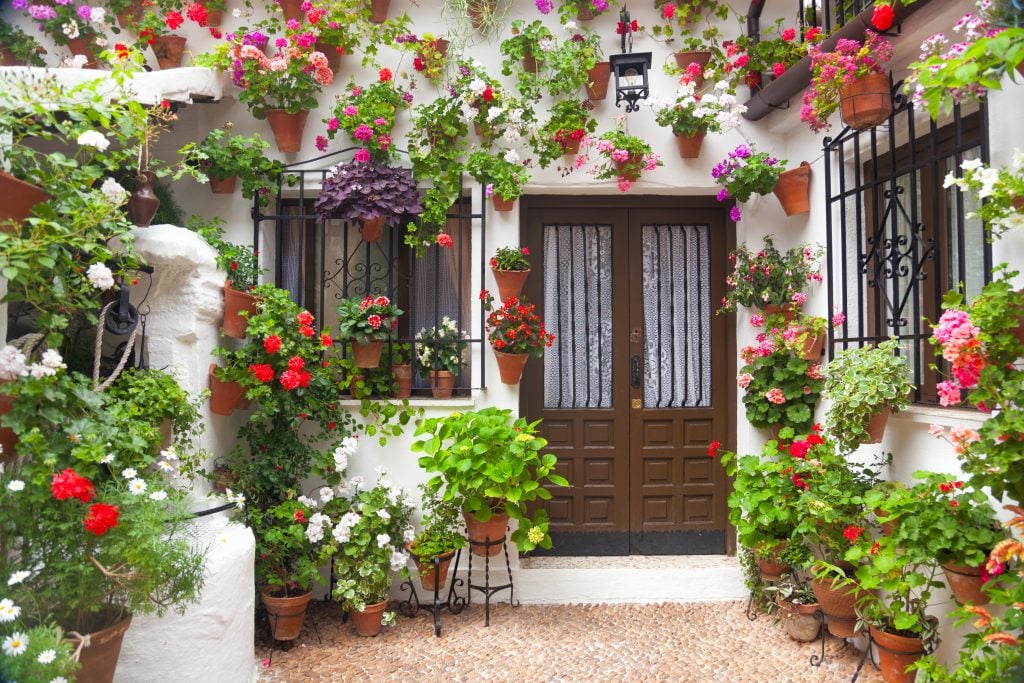
If you only have one day in Cordoba, you’ll want to plan your itinerary carefully!
Start first thing in the morning with a visit to the Mosque-Cathedral.
To save time, be sure to have your entrance to the Mosque-Cathedral booked in advance, whether that’s through skip-the-line tickets or a guided tour .
Making sure you prioritize the Mosque-Cathedral is the most important aspect of planning a one day Cordoba itinerary!
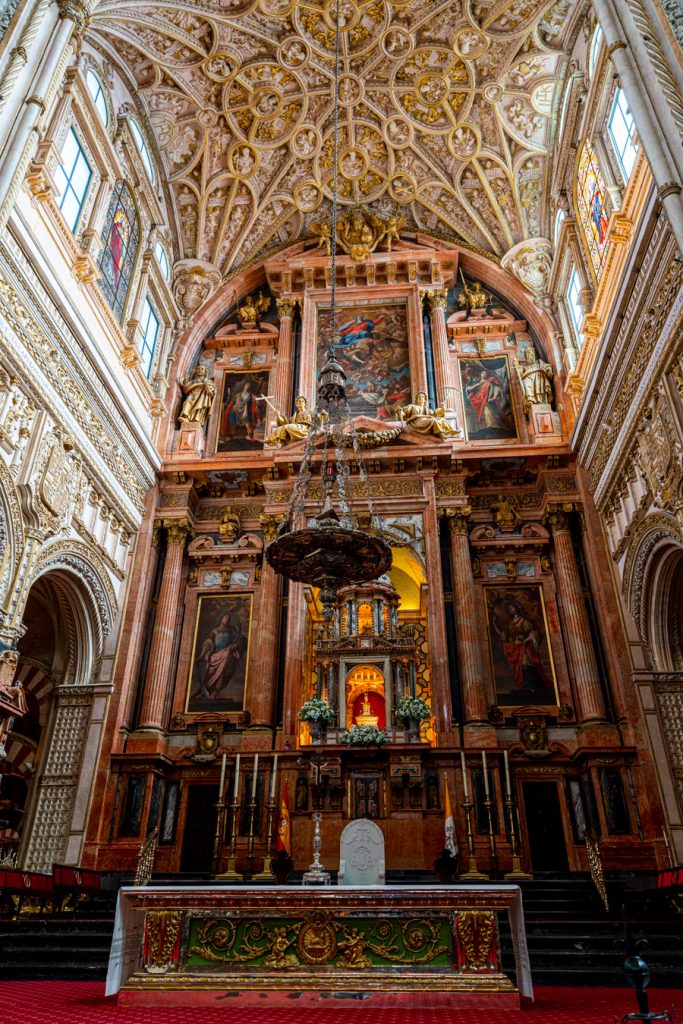
From there, stop by the Calleja de las Flores and wander through the Jewish Quarter.
In the afternoon, pay a visit to either the Palacio de Viana or the Alcazar of the Christian Monarchs .
Once you wrap up, enjoy some tapas and tinto verano.
Be sure to wander across the Roman Bridge around sunset!
If you’re taking a day trip to Cordoba and are pressed for time, this popular tour of Cordoba will show you the top attractions in the city, fast!
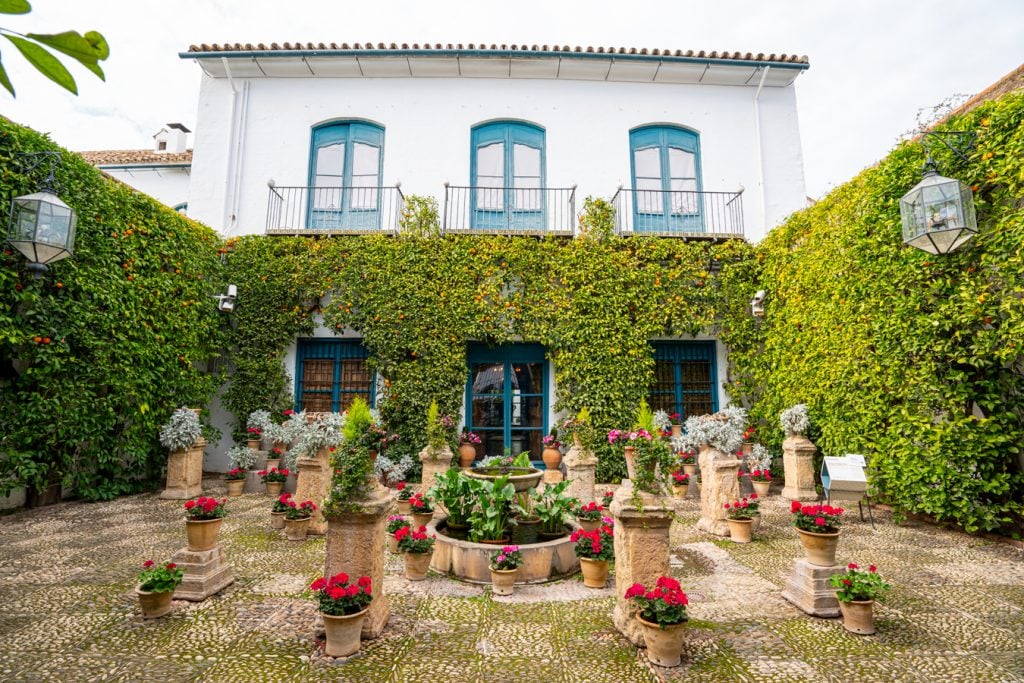
Cordoba, Spain is an extremely walkable city.
While attractions outside the city, such as the Medina Azahara Palace, require a car or bus to reach, everything within the city center is reachable on foot.
As long as you are staying in or near the historic center, you’re unlikely to need anything beyond decent walking shoes to enjoy most attractions when visiting Cordoba.
If you’re visiting Cordoba as part of a road trip, there are plenty of places to park right on the outskirts of the historic center.
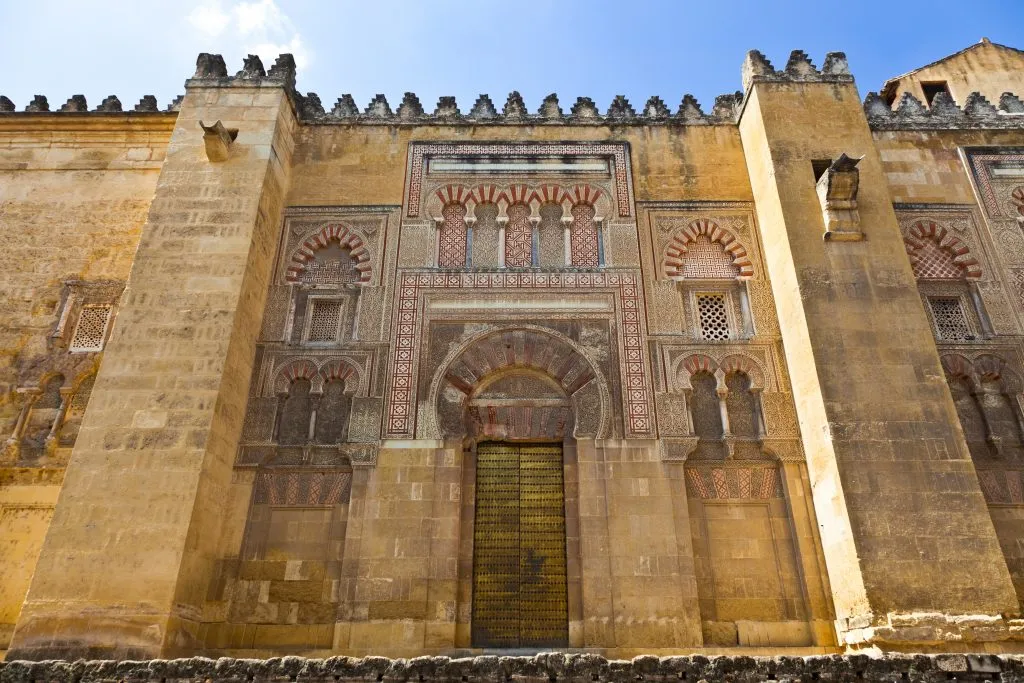
Often considered the hottest city in Europe, it’s safe to say that the sweltering summer months (especially July and August) are not the best time to visit Cordoba!
With its extremely mild winters, though, just about any other time of year will do (and summer is workable with lots of air conditioning and gelato).
Spring is the absolute best time to visit Cordoba, Spain, thanks to its gorgeous blooms and milder temperatures.
However, the best things to do in Cordoba can be enjoyed year-round!
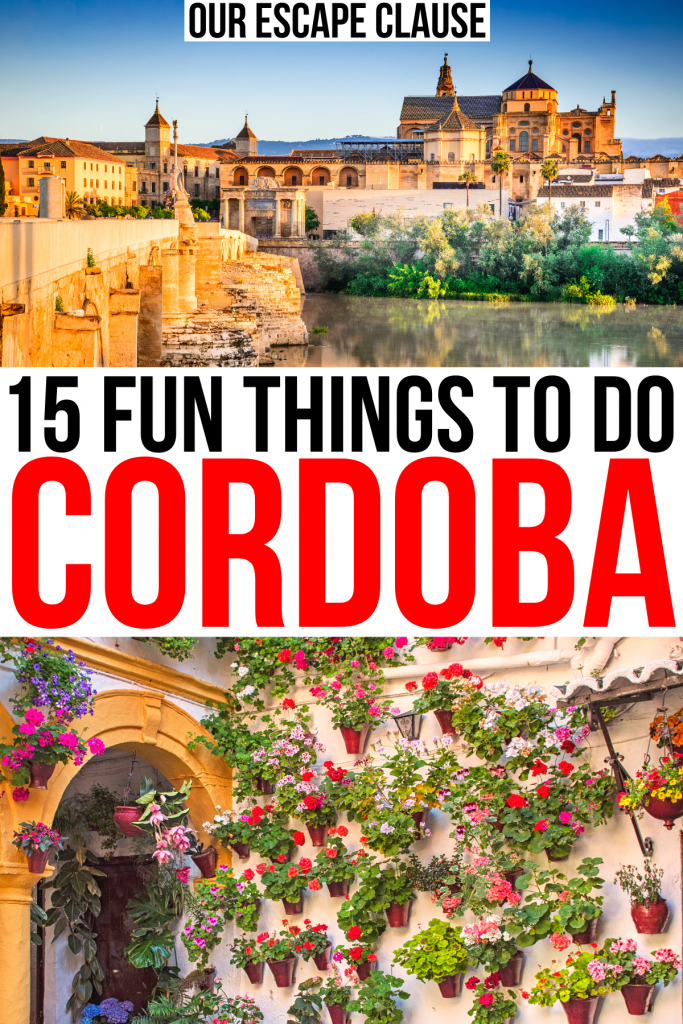
About Kate Storm

In May 2016, I left my suburban life in the USA and became a full-time traveler. Since then, I have visited 50+ countries on 5 continents and lived in Portugal, developing a special love of traveling in Europe (especially Italy) along the way. Today, along with my husband Jeremy and dog Ranger, I’m working toward my eventual goal of splitting my life between Europe and the USA.
2 thoughts on “15 Charming Things to Do in Cordoba (+ Itinerary!)”
We travelled to Spain and this area in the early 1980’s. It was amazing. We may go again. Thank you for the blog and your amazing photos. Travel is an education. I was a travel agent for 15 years. I am retired now, but we still love to travel. Next trip for us is Croatia.
Being a travel agent must have been a very interesting job–I have a relative who ran an agency for years and loved it.
Croatia is another one of our favorites, too–hope you guys have a great time! We have lots of Croatia blog posts here on the site as well. :-)
Leave a Comment Cancel reply

Things to Do in Cordoba (The Best Attractions & Activities You Shouldn’t Miss!)
Discover the best things to do in Cordoba, including its UNESCO World Heritage Sites, cultural activities, tours & more
/cordoba-alcazar.webp)
Alcazar de los Reyes Cristianos
Cordoba, Spain is a city steeped in history and culture, with a rich legacy that is evident in its stunning architecture, delicious cuisine, and vibrant atmosphere.
In this article, you’ll discover the best things to do in Cordoba, from exploring its many historical sites to sampling its delicious food and drink. Whether you're a history buff, a foodie, or simply looking for a great vacation destination, Cordoba has something to offer everyone.
Historical Overview of Córdoba
Córdoba has a rich and fascinating history that spans over two thousand years and its main attractions are closely tied to this history.
The city was founded by the Romans in 152 BC and became a major centre of trade and culture during their rule. The Roman Bridge and Roman Temple are two of the most impressive examples of Roman architecture that can still be seen in the city today.
During the Middle Ages, Córdoba became a centre of learning and culture under the Moors. The city was the capital of the Islamic Emirate of Córdoba and reached its height of prosperity and cultural achievement during this time. The Mezquita-Catedral, a stunning mosque-cathedral, was built during this period and is one of the most important landmarks in the city.
In 1236, Córdoba was conquered by the Catholic Monarchs and became part of the Kingdom of Castile. Christopher Columbus, the famous explorer, lived in Córdoba for a time and it is said that he met with Queen Isabella and King Ferdinand here to discuss his plans for his voyage to the New World.
The Mezquita-Catedral is still the main attraction in the historical centre of Córdoba and is a must-see for anyone visiting the city. The Almodóvar Gate, a beautiful example of Moorish architecture, is another popular landmark. The city is also famous for the Puente Romano which has been used for centuries to transport goods and people across the Guadalquivir River.
You can learn more about Cordoba’s history in our read our historical guide to Cordoba.
Top Things to Do in Córdoba
/cordoba-mezquita.webp)
Mezquita of Cordoba
Ready to explore Cordoba? Here are our recommendations on what to see and do in Cordoba, from UNESCO World Heritage Sites, to other historical landmarks, fun activities, and uniquely Cordoban things to do.
Admire the Iconic Mezquita-Cathedral
Also known as the Mezquita, this is one of the most important Moorish monuments in Andalucia, along with Granada's Alhambra. It’s the third-largest mosque ever built and a unique architectural masterpiece, with its horseshoe arches, intricate mosaics, and stunning prayer hall.
The original structure, dedicated in 786 AD, was extended and enlarged over the entire period of Arab rule, each king trying to outdo his predecessors. It is now a ‘forest’ of 856 columns supporting red and white coloured arches. The earliest section contains original but re-used Roman and Visigothic pillars and, in the north-west corner a free-standing Visigothic altar.
The Mezquita is unique in Spain because it not only survived the re-conquest, it was considered so magnificent that between 1523 and 1607 a Renaissance style church was built within the structure. The church is now the repository for the ecclesiastical treasures which is worth a trip in itself.
The Mosque-Cathedral is such a popular attraction that it’s highly recommended that you book your tickets in advance . You can DIY your visit and just wander around the monument, taking in the beautiful architecture. Alternatively, you can opt for a guided tour which will take you through the highlights of the Mezquita.
I’ve done both options and you really can’t go wrong with either choice. But, if you love history or simply want to know about this fascinating building, I highly suggest going on a guided tour. I learned a lot more about the Mezquita and it heightened my appreciation for the monument even more!
/roman-bridge-cordoba.webp)
Roman Bridge
Walk Along the Roman Bridge (Puente Romano)
This 1st century BC bridge has 16 arches spanning the Guadalquivir river. It is worth stopping halfway across and looking up and down the river. You will notice islands and channels that appear man-made.
You will also see the remains of, and in one case, a whole, huge, waterwheel. The wheel is part of the extensive system, started by the Romans and perfected by the Arabs, that allowed the surrounding land to be irrigated and then used to grow olives, grapes and wheat that was then shipped back to Rome and later, during the Moorish occupation, throughout the Islamic empire.
The Puente Romano is also a notable spot for great photos of Cordoba. The view of the Old Town from across the river is worth the walk!
Stop by the Calahorra Tower and the Bridge Gate
For a particular view of how integrated, politically and religiously, the Arabs were with the native population, and how advanced scientifically they were, then the fort is worth as much attention as the Mezquita. It is here that there is a wonderful collection of original Arabic navigational instruments including an ancient astrolabe that predates the invasion of 711 AD.
The bridge gate is, as its name suggests, located just opposite the Roman bridge of Córdoba. You will pass beneath it when you return from the Calahorra Fort. It was built in the 16th century on the site of ancient Roman and Moorish gates.
Explore the Alcázar de los Reyes Cristianos
Built on the orders of Alfonso XI of Castile in 1328, the fortress contains magnificent gardens and courtyards, a mosaic salon, royal baths and a Moorish patio. The Alcázar of Córdoba is so beautiful that it became the favourite residence of Isabell I of Castile and Ferdinand II of Aragon after the reconquest in 1492. It was also the headquarters of the Holy Office during the Inquisition, during which time it was converted into a prison.
From the top of one of its four towers, connected by ramparts, you will have the finest view of the city.
Today, you can visit the palace which houses a museum with Roman mosaics and medieval artefacts. But the real highlight, in my opinion, is the exterior of the palace: stunning gardens with fountains, pools, and orange trees.
There are guided tours of the Alcazar , if you’d like more context about the palace and its grounds.
Take a Walking Tour of Cordoba
There are also various walking tours that cover specific areas or a combination of attractions:
- This 3.5h walking tour covers Cordoba’s monuments like the Synagogue, Alcazar and includes entry to the Mezquita.
- Take a 2h sunset walking tour of Cordoba that includes the city’s main historical sites
- See the Mezquita, Alcazar, and the Jewish Quarter on this 4h guided tour
/bridge-gate_sm.webp)
Bridge Gate
Take a Tour of Cordoba on Two Wheels
This 2-hour bike tour is a fun way to see Cordoba’s main sights… and travelling by bike will allow you to see more than just the historic center. Another awesome option is a Segway tour which adds a bit more adventure to your sightseeing experience.
Discover the Charms of Cordoba’s Old Town
The old town is characterized by its narrow, winding streets, whitewashed houses, and beautiful courtyards filled with flowers and plants. It is home to some of Cordoba's most important historical and cultural sites, including the Mezquita-Catedral, the Alcazar de los Reyes Cristianos, and the Roman Bridge.
The area is also home to many charming squares, such as Plaza de las Tendillas and Plaza del Potro, which are great places to relax and people-watch.
Wandering through the Old Town is a delight. Soak up the lively atmosphere, admire the architecture, and browse in the local shops lining the streets. There are also a number of restaurants and cafes in this area where you can get a taste of Cordoban cuisine.
/cordoba-la-juderia.webp)
Take Photographs in Cordoba’s Prettiest Street, Calleja de las Flores
Take a stroll down Calleja de las Flores, a narrow alleyway lined with colourful flowers that leads to the Mezquita-Catedral. Be sure to look up to the balconies which are teeming with flora and fauna (especially if you come in spring or summer) and keep an eye for the bell tower of the Mezquita peeking out over the rooftops.
Wander around La Judería, the Jewish Quarter
Be sure to wander around the area's charming squares and alleyways, and don't forget to try some of the delicious local cuisine at one of its many tapas bars. You will also find silver. For hundreds of years, La Juderia housed the silver merchants and craftsmen who produced the jewellery for which Córdoba is famous.
For something a bit more off-beat, take a look in the Galeria de la Tortura where you will find grim reminders of how Inquisitors extracted confessions from the hapless souls brought before them during the Spanish Inquisition.
La Juderia is also home to Cordoba’s famed Patio Festival . In May, the patios in this neighbourhood are decorated with flowers and opened to the public. One lucky household will be chosen for owning the ‘most beautiful courtyard’.
Visit the the Synagogue of Córdoba
The Synagogue of Cordoba is the only existing, original, synagogue in Andalucia and it’s worth a visit for the beautiful stucco work in the main hall. After the Jews were expelled from Cordoba, the synagogue became a temple, then was converted into a hospital and school. It was recognised as a National Monument in the 19th century.
Hang out at Plaza de la Corredera
The square is surrounded by colourful buildings and is home to many restaurants, cafes, and bars. It's a great place to sit and enjoy a drink or a meal while taking in the sights and sounds of the city. Be sure to visit the Zoco, a traditional market that sells handmade crafts and souvenirs.
/palacio-de-viana-cordoba-patio.webp)
Palacio de Viana
Visit Palacio de Viana
It is a great example of Andalucian architecture and offers a glimpse into the lifestyle of the aristocracy during the Renaissance period.
Only a short walk from Plaza de la Corredera, the Viana Palace contains the largest collection of patios in Cordoba and features high in the list of places to visit during the Patio Festival in May.
The highlight of Palacio de Viana is its 12 beautiful courtyards, each with its own unique style. It’s a popular spot to visit during the Cordoba Patio Festival but best of all, their patios are open all year around so you can enjoy them no matter when you visit.
Palacio de Viana wasn’t on my radar on my first visit to Cordoba but I did go there on my second visit to the city and to me, it feels a bit like a hidden gem in Cordoba. If you have more time in Cordoba and have already ticked off the main attractions, Palacio de Viana is well worth a visit!
Book your tickets in advance here.
Marvel at Cordoba’s Traditional Patios
Visiting these patios and courtyards is a unique and unforgettable experience, offering visitors a glimpse into the city's past and present. Cordoba Patio Festival in May draws thousands of visitors looking to experience this tradition.
But if you’re visiting during other times of the year, you can still get a good glimpse of Cordoba’s beautiful patios. The above-mentioned Palacio de Viana is a great option to see a number of patios in one place. The Zoco Municipal in the Jewish Quarter is another place to visit. In fact, as you’re strolling around La Juderia, keep an eye out for any open doors as you might just be able to get a peek into a courtyard!
There are also some patios around Cordoba that are open all-year-around and taking a patio walking tour is the best way to discover them.
/roman-temple_sm.webp)
Cordoba's Roman Temple
Discover Cordoba’s Roman Past
For instance, near to the Hotel Tryp Gallos at the junction of Paseo de la Victoria and Calle de Concepcion is situated what was the Roman west gate into the city. On the Paseo side is a Roman cemetery.
In the centre of the city itself is a Roman temple but do not be fooled. This is a reconstruction. Only two columns are original. However, the renovations are using the original foundations and floor plans. Still, it’s quite a nice site to visit and it offers a glimpse of Cordoba’s past as a Roman city.
Go to The Royal Stables of Cordoba
The stables here were built in 1570 next to the Alcázar by Phillip II, a noted horse lover. He charged the royal horse master, Diego Lopez de Haro, to purchase 1,200 mares and stallions necessary to create a new breed of horse that would match the perfect vision.
Visiting the Royal Stables of Cordoba is free. They also put on a stunning equestrian show that’s open to the public.
Visit Cordoba’s Museums
The Museo de Bellas Artes de Córdoba is one of the most popular galleries in the city. It houses a collection of Spanish art from the 14th to the 20th century, including works by El Greco, Zurbarán, and Goya.
Interested in modern art? Head to the Centro de Arte Contemporáneo de Córdoba . This museum hosts exhibitions of contemporary art from both national and international artists. The museum also has a library and a bookstore where you can purchase art books and catalogues.
History lovers, you’ll love the Museo Arqueológico de Córdoba , you can find artifacts from the Roman and Moorish periods, as well as a collection of medieval art and ceramics.
Explore Cordoba’s Moorish Heritage at Medina Azahara
The site includes the ruins of palaces, mosques, and administrative buildings, and offers a glimpse into the grandeur of the Islamic civilization.
Medina Azahara is accessible from Cordoba by bus, making it an easy day trip to make. Or opt for a hassle-free option by going on a guided tour of Medina Azahara . For a more unique experience, there’s a night tour of the site where you’ll see it bathed in soft lights which completely transforms the atmosphere!
Relax at an Arab Bath
You will be plied with mint tea while you languish in the warm bath. Fragrant candles illuminate the cold and hot bathrooms, and sumptuous oils will be massaged into your body by experienced masseurs. It is just a small taste of how a minority of the population lived in luxury in this noble city.
Check out Hammam Al-Andalus for an unforgettable Arab bath experience in Cordoba.
What to Do in Cordoba in One Day
Many travellers opt to visit Cordoba in one day, either on the way to another Andalucian city or as a day trip. My own first visit to Cordoba was on a day trip from Seville.
Here are my tips for what to do in Cordoba in one day:
- Plan to arrive in Cordoba in the morning so that you can make the most of your day.
- Prioritize what you want to see. I would recommend these three attractions: the Mezquita, the Jewish Quarter, and the Alcazar de los Reyes Cristianos.
- Book your skip-the-line tickets for the Mezquita in advance to save time and guarantee your entry into the monument.
- Consider booking a guided tour of Cordoba’s main attractions to visit them in a time-efficient way.
And if you have more time to spare, I highly recommend giving Cordoba more than one day! I found that there’s so much more to see and do in this city and there’s more than enough to fill 2 or even 3 days here.
Where to Stay in Cordoba
Staying the night in Cordoba? For convenience, I recommend staying in or near the historic center - you'll be able to find a place to stay, no matter your budget. Here are some hotels to consider.
- Patios del Orfebre - Simple, comfortable rooms in the heart of the historic center that are great if you’re on a budget.
- H10 Palacio Colomera - Modern and lush rooms in the heart of the action without breaking the bank.
- Las Casas de la Judería de Córdoba - Stay in beautiful rooms with Andalucian charm and modern amenities in 17th and 18th-Century houses.
Or check out the latest deals in Cordoba below.
Things to Do in Cordoba: Final Thoughts
As you can see, there are many amazing things to do in Cordoba, especially if you love history and culture. And while it is possible to see a bit of the city on a day trip, you'll be able to discover so much more about Cordoba if you stay a little longer.
If you need more information to plan your dream visit to Cordoba, read out Visitors Guide to Cordoba .
Buen viaje!
More on Cordoba
- Historical Guide to Cordoba
- Visitors Guide to Cordoba
- Best Places to Stay in Cordoba
- Mosque-Cathedral of Cordoba
- Alcazar of Cordoba
- Museo Vivo de Al-Andalus
- Archaeological Museum of Cordoba
Recommended Spain Travel Resources
Travelling to/around Spain and need some help? Here are our favourite travel resources.
We usually use Booking.com to look for hotels or apartment rentals. Lots of choice & you can unlock more discounts with their Genius loyalty programme!
To research transportation options around Spain, we like using Omio . It’s an easy way to compare different modes of transport and prices in one place.
For last-minute holiday deals, check out Expedia UK .
Looking for things to do? Viator has a huge catalog of activities and tours across many cities in Spain. We also love Get Your Guide !
Guruwalk is our favourite platform to find the best free walking tours in a city.
For money transfers or spending overseas in foreign currency, Wise is our favorite borderless banking service.
Travel insurance is a must to protect against emergencies and unexpected incidents. Get a quote from SafetyWing here.
More about Córdoba
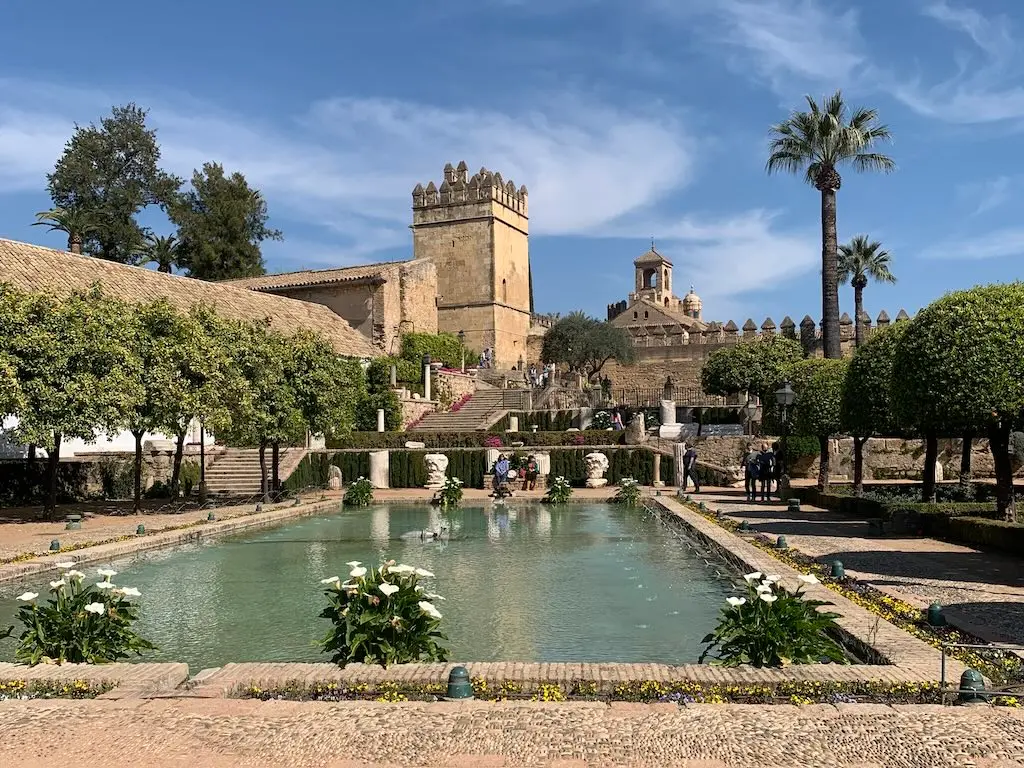
Places to go in Córdoba
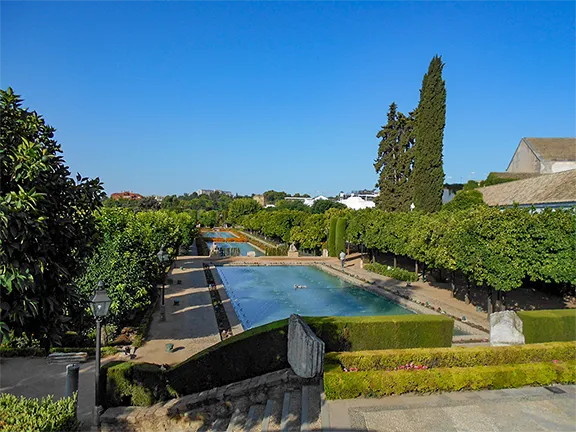
Museums and Galleries in Córdoba
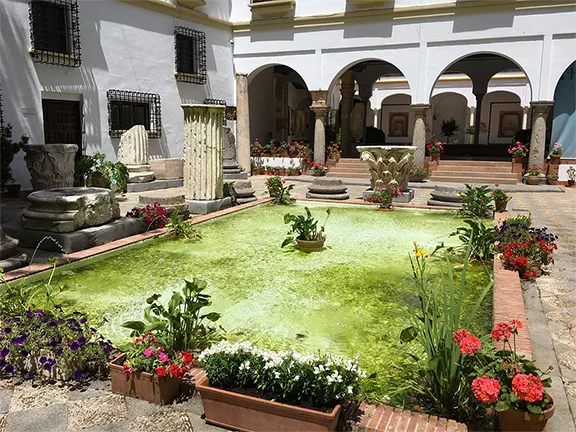
- Privacy Policy
- Terms of Service
- Affiliate Disclaimer
© Visit-Andalucia 2015 - 2024

Touropia Travel
Discover the World
19 Top Tourist Attractions in Cordoba, Spain
By Jamie Gambetta · Last updated on May 6, 2024
Cordoba is an Andalusian city with a glorious past. It was the world’s most populous city in the 10th century and became a center for education under the Moors who conquered it in the 8th century. Outstanding examples of Islamic architecture can be found throughout the city, with the famous Mezquita, a mosque-cum-cathedral, dominating the skyline from all directions.

Other top attractions in Cordoba include several structures from Roman times. Ancient gateways, bridges and roads remind us all of how historic Cordoba is. A lengthy period of time, from the beginning to now, the city’s culture can be experienced within Cordoba’s vibrant town squares.
The city also is known for its beautiful flowers and carefully landscaped patios and one of the most fun things to do in Cordoba is celebrate the patio festival which is held each May.

19. Puerta del Puente
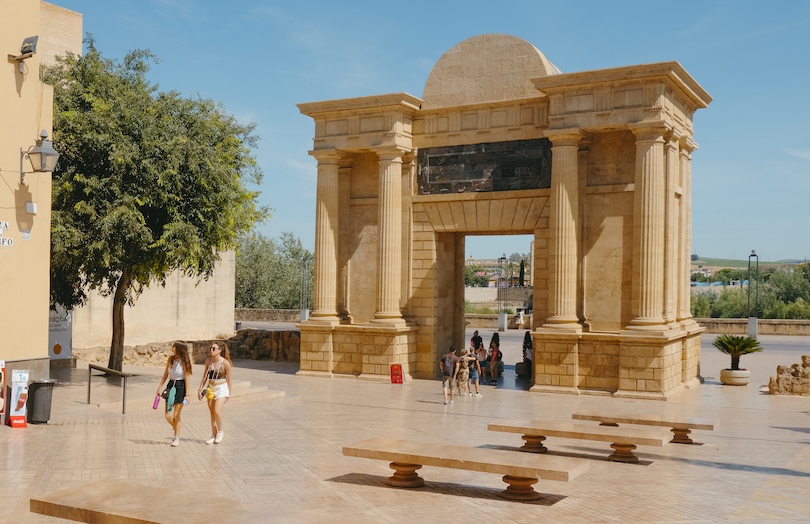
Built in the 1500s, the Puerta del Puente replaced the previous gate from the early Middle Ages. It continued a succession of gates that dated back to the beginning of the Roman Era.
The striking Puerta del Puente has hearty columns on either side and offers a tremendous presence in Cordoba’s historic center. In low-hanging light, the yellow sandstone structure shines bright creating vibrant photography.
Translating to the Gate of the Bridge, from one side of Puerta del Puente, you can see an old Roman bridge and Via Augusta. The latter being the longest major road built by the Romans along the Iberian Peninsula.
18. Plaza de las Tendillas
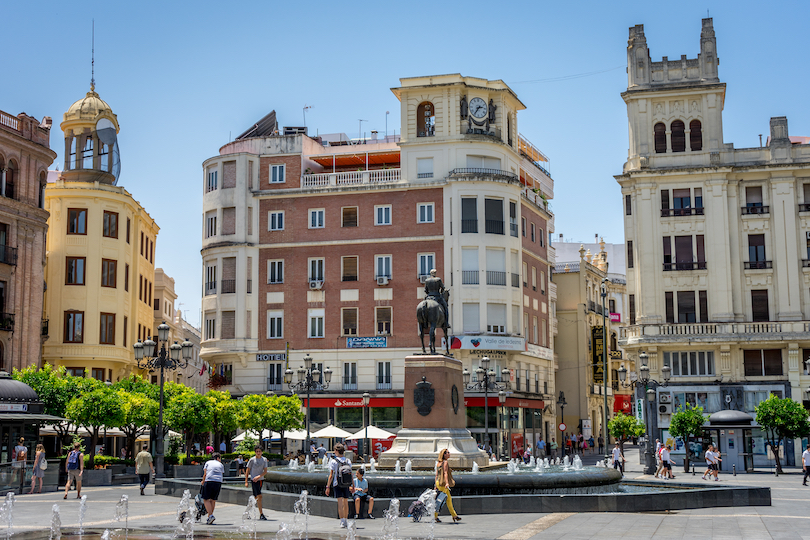
Another town square to relax in and enjoy local life in Cordoba is Plaza de las Tendillas. Tendillas Square offers the musical sounds of moving feet as pedestrians make their way from A to B. But not without first stopping for tapas and a drink in a local cafe.
Surrounded by colorful, window-laden 17th and 18th century architecture, the views are even better than Plaza de la Corredera. Trees are spaced throughout, creating plenty of shade for those enjoying the restaurant patios. While the central fountain captivates all.
Speaking of, the center of the fountain features a striking statue of Gran Capitan and his horse. Complementing it is the beloved Tendillas Clock.
17. Mercado Victoria
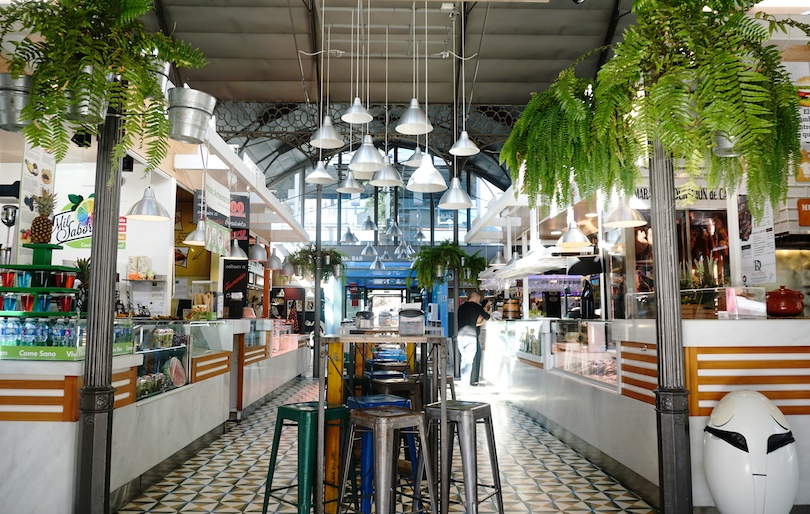
The iron structure home to Mercado Victoria dates back to the 1800s. Then it was Caseta Círculo de la Amistad, home to the Cordoba Fair. Today, it has taken on new meaning as a home of gastronomic delight.
The sprawling structure features 30 stalls each with their own take on a variety of cuisine. But since we are in Cordoba, you’ll be happy to know the bulk of those focus on the best local culinary wonders along with broader Spanish cuisine.
The building is surrounded by the beautiful Victoria Gardens, a stone’s throw from the heart of Cordoba’s historic district. Making it a great location, day or night.
16. Chapel of San Bartolome
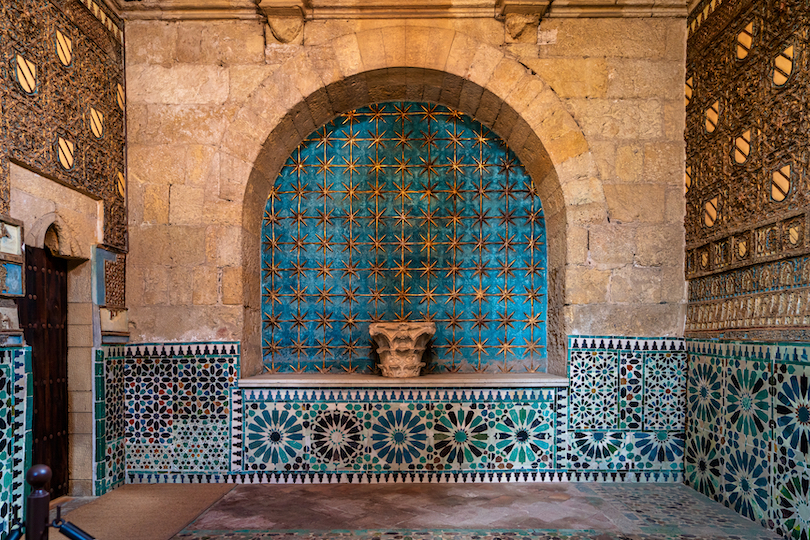
In the historic heart of Cordoba, you’ll find the funerary Chapel of San Bartolomé. The foundations of the beloved chapel were placed in 1390 and it has been masterfully preserved in the centuries since.
The chapel helps describe the contrasting timelines in Cordoba. The construction of the Chapel of San Bartolomé occurred at the same time as the expulsion of local Judaism and the rise of Christianity.
The chapel was made from rustic sandstone, and its interior is incredibly decorated in fine mosaic tiles. The display is one of the most splendid examples of Mudejar art in all of Spain. Highlights include the Order of the Band along with the chapel’s original 15th century flooring.
15. Museo de Julio Romero de Torres
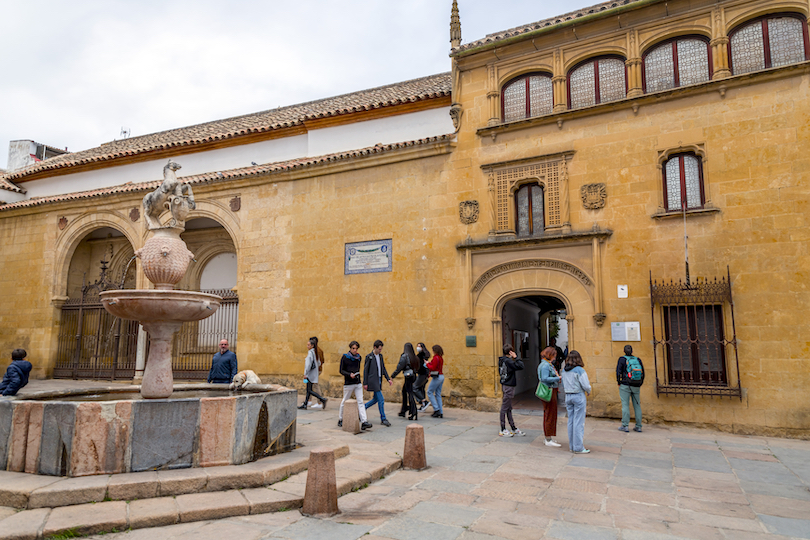
A Cordoba native, Julio Romero de Torres, would go on to become a famous portrait and Symbolist artist. Throughout his rich career, he would work alongside the regular townsmen and women as often as members of high society. It makes for a well-rounded portfolio, much of which is now on display at the Museo de Julio Romero de Torres.
Many of his 500-plus paintings are on display here, within a renewed 19th-century building. The artwork represents a timeline of de Torres’ life, taking you on a journey from his early works to his later pieces to showcase how his artistry evolved.
14. Plaza de la Corredera
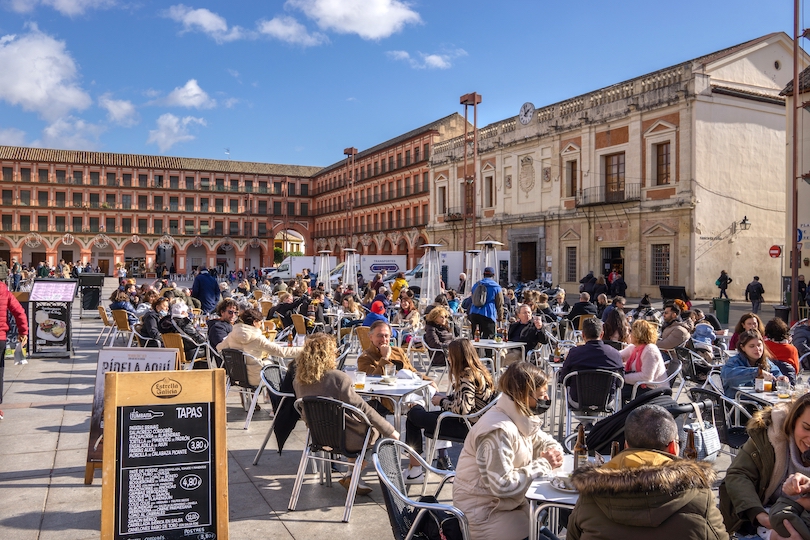
Dating back to the late 17th century, the Plaza de la Corredera is the perfect place to kick back and watch the world go by. The sprawling plaza is surrounded by archways that lead to a four-story building, creating one enormous courtyard.
Like all major Spanish squares, Plaza de La Corredera has long played a central role in public life. Restaurants and cafes are spread throughout, inviting locals in for food and drinks. As for travelers, it’s a chance to watch the Andalusians go about daily life.
Tapas in hand, the square is reminiscent of Madrid’s Plaza Mayor, and bristles with life throughout the day.
13. Los Patios de San Basilio
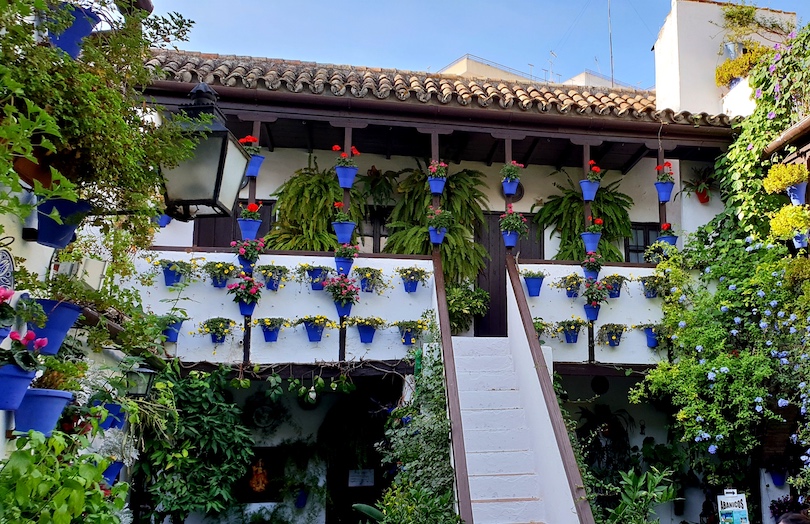
Colorful, flower-laden patios are common throughout Cordoba. One of the most fun things to do in Cordoba is to wander and discover them on your own. Or make a beeline to Los Patios de San Basilio, to see the best of the best.
Found along Cordoba’s Courtyard Road in the district of San Basilio, these patios are arguably the most captivating in town. Surrounded by equally sightly architecture, these courtyards are encased in white walls, kaleidoscopic flowers are placed throughout and the town’s vibrant culture is on full display.
The best time to visit is mid-spring when the flowers bloom. But to escape the crowds, venture through in late summer where only the best patios remain open to the public.
12. Casa de Sefarad
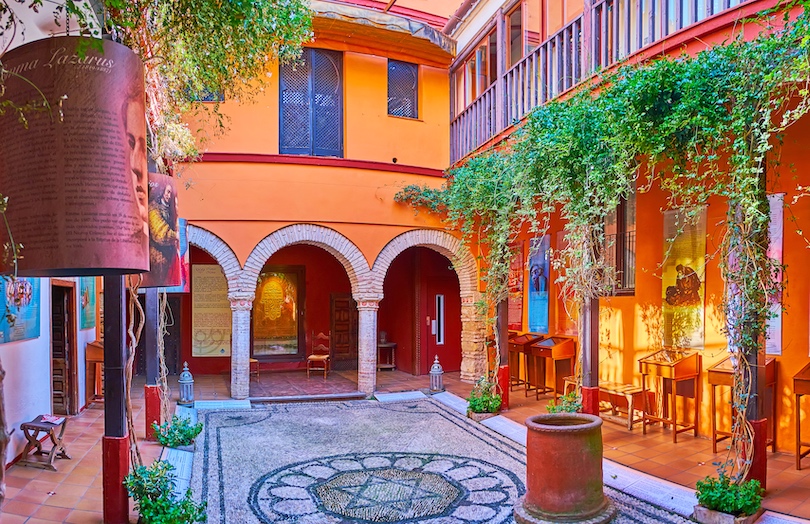
Located in the Jewish Quarter, on its main thoroughfare, Calle Judios is the Casa de Sefarad. The House of Spanish Jews explores the culture and history of this community.
Also known as the House of Memory, Casa de Sefarad was built in the 14th century and linked to the town’s original Jewish temple. Upon walking inside, travelers will discover an ornate courtyard that has been rejuvenated to its original splendor.
Throughout, you’ll find carvings and art that pay homage to the heritage of the Sephardi. Now primarily a cultural center, it’s an insightful way to learn about not just the beginning of the Sephardi but the centuries since.
Beyond artifacts, museums and libraries, Casa de Sefarad also features concerts and community gatherings.
11. Museo Arqueologico de Cordoba
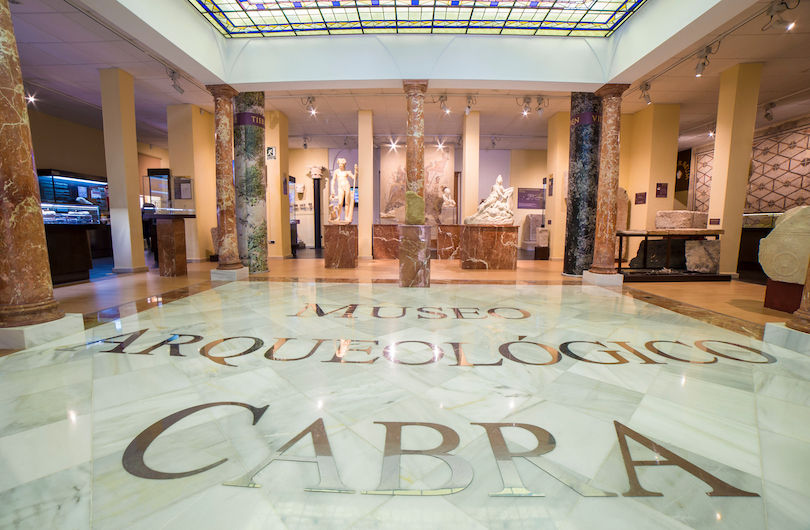
In the 2nd century BC, Cordoba was founded by Romans. Nearby the original capital of ancient Baetica stood. Cordoba rose to further prominence through the eras. Today, you can discover this history, not through books but sight at the Museo Arqueológico de Córdoba.
Set within the Palacio de los Paez de Castillejo, the museum is a beautiful sight from outside. Surrounded by an inviting, shady town square, you’ll feel your heart skip a beat as you enter through the palace’s beautiful central entrance.
Inside, you won’t find your average museum. In fact, it’s the site of an original archaeological discovery, Cordoba’s Roman-era amphitheater. Alongside it are some of the city’s original homes and shops that can be traced back to the Middle Ages.
10. Calahorra Tower
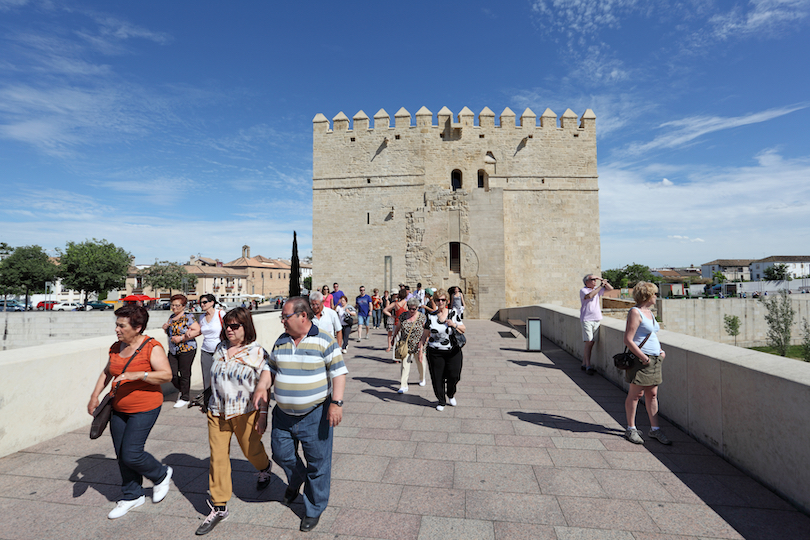
The Calahorra Tower is another Cordoban landmark that represents Islamic architecture. Located at the south end of the Roman Bridge, the horseshoe-shaped tower is the oldest defensive site in Cordoba.
It was built by the Moors to protect the city from attackers. It originally consisted of an arched gate between two towers; a third tower was added by King Henry of Castile in the 14th century.
Today, it houses a museum that showcases Cordoba’s history, including the peaceful co-existence of Christians, Jews and Muslims. It also showcases the early culture, science and engineering feats that Andalusia was famous for centuries ago.
9. Calleja de las Flores
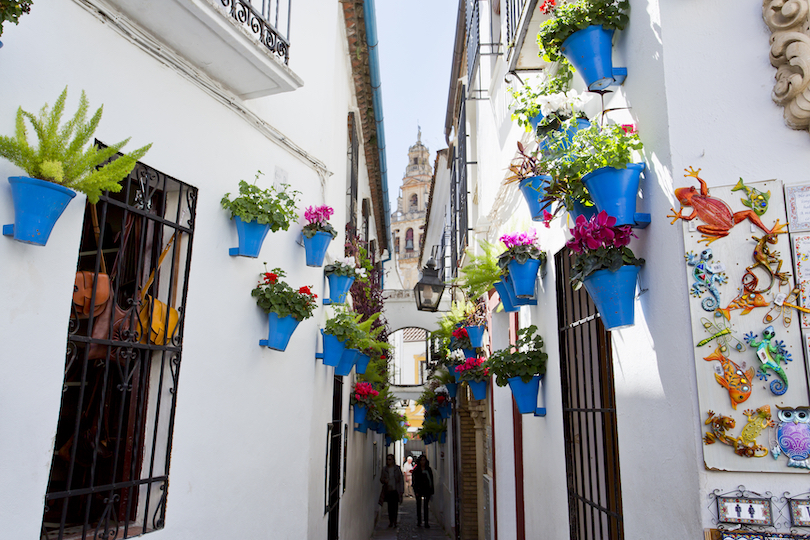
The picturesque Calleja de las Flores is one of the most popular streets in Cordoba. It’s more like a narrow alley than a street, however, as it runs through the city’s Jewish Quarter.
A walk along Calleja de las Flores places you below dozens of colorful flowers hanging from the facades of historic homes. The whitewashed buildings are a mere canvas for the collection of bouquets that dazzle passersby.
Along with the flowers are diminutive patios where locals enjoy the short views and take a break from daily life. Almost like a guiding arrow, the narrow alley of Calleja de las Flores points towards the Mezquita Bell Tower, making for a postcard-worthy backdrop.
8. Medina Azahara
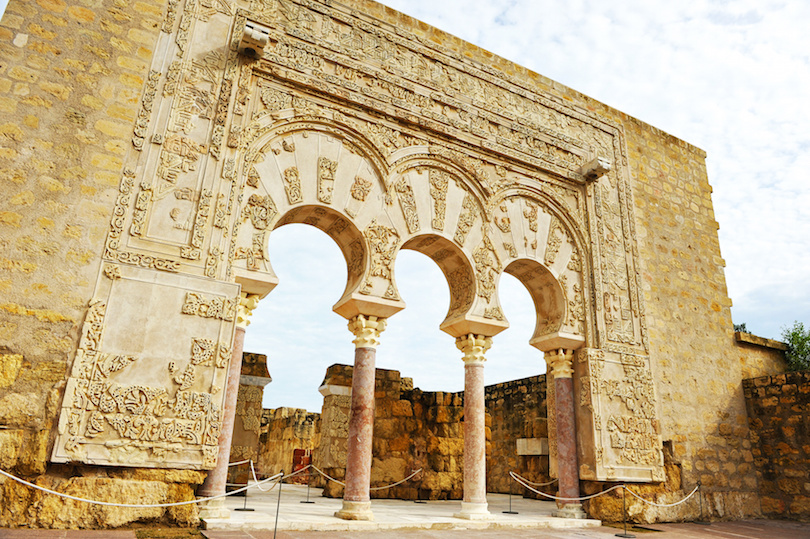
The Medina Azahara (Madinat al-Zahra) was a stunning 10th century palace built for a caliph about five miles outside of Cordoba.
Legend has it the caliph named it for his favorite concubine, though there are indications he built it to show that his caliphate was the most powerful in medieval Europe. The complex consisted of three terraces with the castle built on the top two levels.
The terraces were surrounded by a wall, with a mosque built outside it. The palace was built of sumptuous colorful materials, including precious gems. The posh palace was destroyed 70 years later. It was rediscovered in the early 19th century and is being restored today.
7. Palacio de Viana
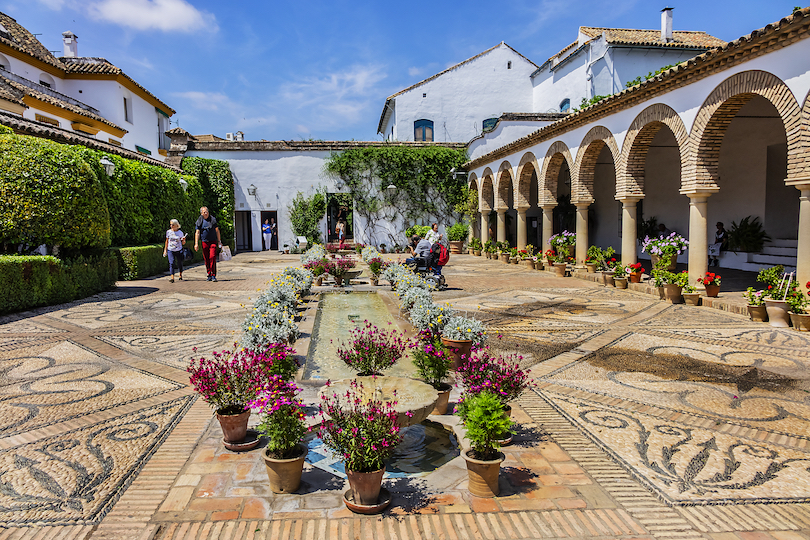
From the outside, the Palacio de Viana seems rather austere, but step inside for a look at how 17th century nobility lived. One of the best aristocratic houses in Cordoba, the palace is also known as the Museo de los Patios because it contains 12 grand patios, each of which is decorated differently.
The interior of the building today contains a carriage museum, appropriate since provision was made for horse-drawn carriages to enter inside; leather wall hangings; a 7,000-volume library that also contains Flemish tapestries; an art gallery with a floor made from Roman tiles, and other historic items reflecting the period.
6. Juderia de Cordoba
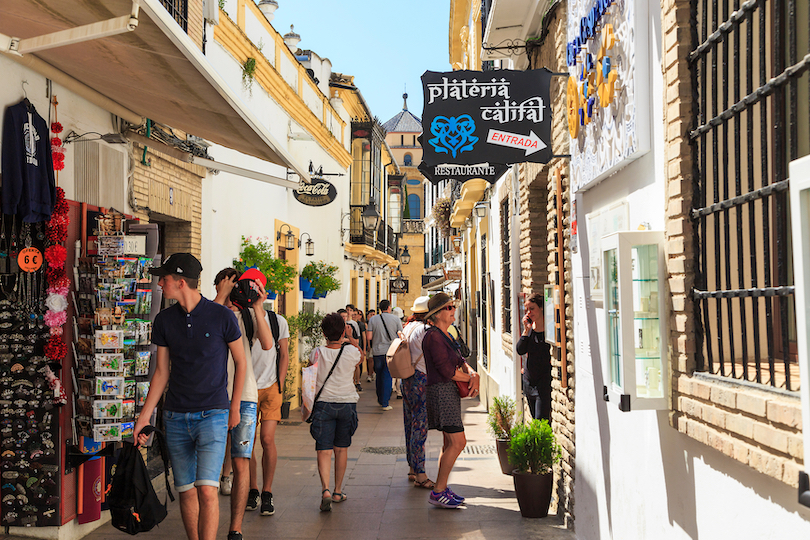
There’s something captivating about wandering around Juderia de Cordoba. The city’s Jewish Quarter is a maze of narrow streets, each as delightful as the last. There are rows of whitewashed homes, each with colorful accents and tiny balconies overflowing with flowers. The seemingly never-ending series of homes and eloquent shops are only interrupted by equally charming town squares.
The Jewish Quarter has been in place for centuries and while you’re distracted by the bright, beautiful architecture, you’ll stumble upon a number of important monuments. Two of these are found along Calle Judios. They are the synagogue which dates back to the 1400s along with the Casa de Sefarad. The latter retains its 14th century beauty and explores the culture of Spanish Jews, Sephardi.
Maimonides, a famous Jewish philosopher, was born here in 1126; a statue of him stands in Tiberiadus Square in the Juderia.
5. Cordoba Synagogue
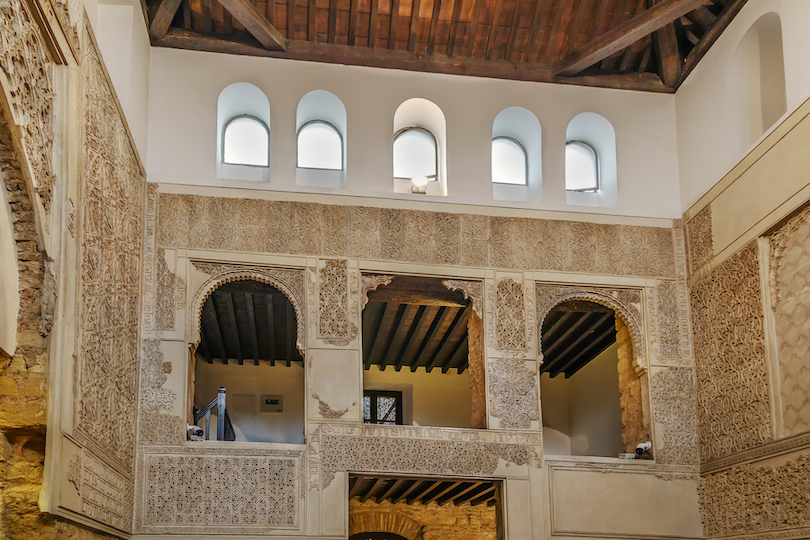
The main attraction in the Jewish Quarter today is the ancient synagogue (La Sinagoga) on the Calle de los Judios; it is one of only three original synagogues remaining in Spain.
Built in the 14th century the synagogue was turned into a hospital after the Jews were expelled from Spain in 1492. It became a Catholic chapel in 1588. Today it is a museum. The interior still contains inscriptions of Hebrew psalms.
The main hall is rectangular in shape and decorated with Mudejar-style plant motifs. The wall supporting the women’s tribune has three arches with exquisite decorative plasterwork.
4. Puente Romano
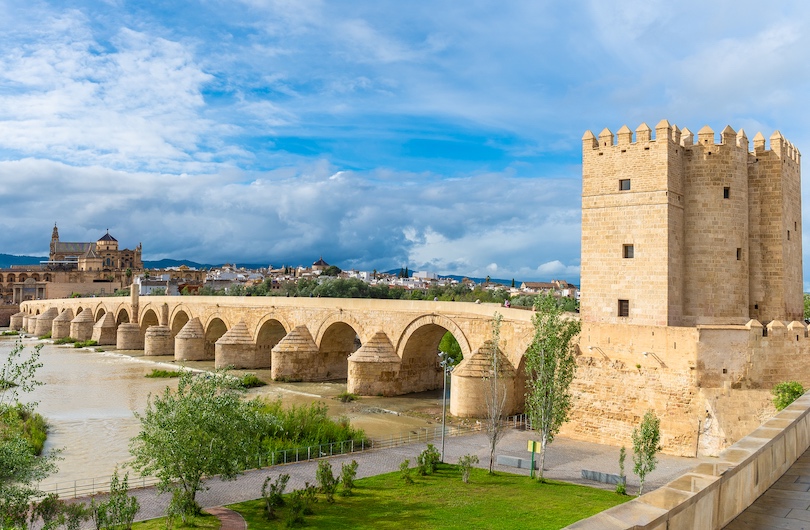
The Roman Bridge, or Puente Romano, is an awesome sight as it spans the Guadalquivir River. Located in the historic center of Cordoba, the bridge dates back to the first century AD when it was built by the Romans.
It has been rebuilt several times over the centuries. The current bridge retains the Islamic flavor of the Moorish reconstruction that dropped the number of arcades from 17 to 16.
The bridge is best viewed at dusk, with the Mezquita in the background, when the setting sun turns the stone a deep red. Halfway across the bridge is a statue of San Rafael that was added in the 16th century.
3. Festival de Patios
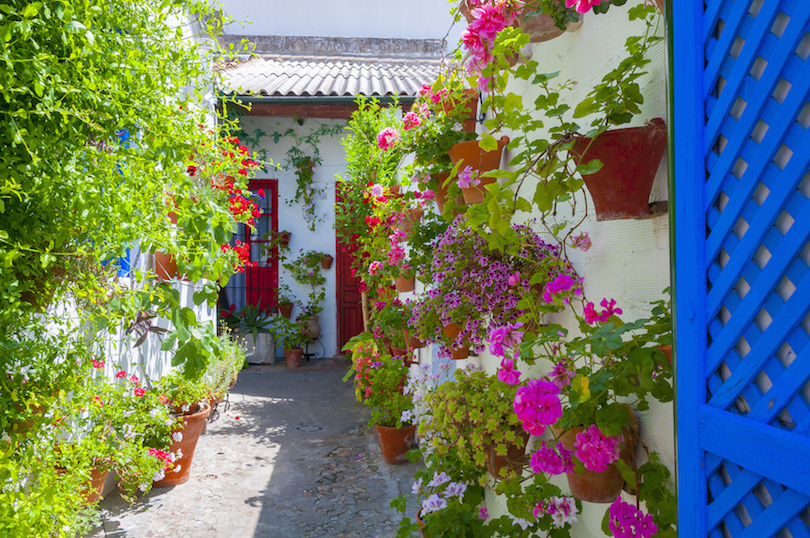
The Festival of Los Patios is held halfway through May when spring is at its best. The festival consists of a contest in which participants open their courtyards to visitors to have a look around, at a time when blooming flowers turn the patios into beautiful domestic gardens.
lDue to a hot, dry climate homes in Córdoba were built with a central patio even back in the days of the Romans. This tradition was continued by the Moors and persists in many homes even today.
Filling the central patio with plants and water features has always been a way to keep local homes cool. Patio decoration ended up taking on a life all its own. For 13 days in May, the doors open and everyone is invited in to see the wonders of Córdoba’s patios.
2. Alcazar de los Reyes Cristianos
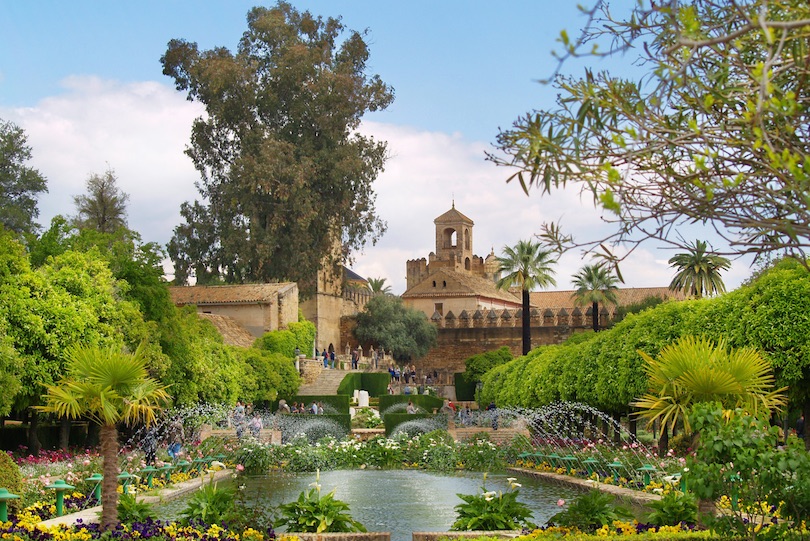
The Alcazar de los Reyes Cristianos, or Fortress of the Christian Monarchs, was built in the 8th century as a palace or fortress for the Moorish caliphate. A major Cordoban landmark, the alcazar became the residence of Spanish kings and queens who ruled from there for 160 years.
Christopher Columbus came here to seek funding for his trip to the unknown lands from Ferdinand and Isabella. It later became a jail, but today it is a public museum for those who want to see ancient artifacts.
The main draw of this popular attraction in Cordoba, however, are the backyard gardens with fountains and hedges that honor the alcazar’s Islamic heritage.
1. Mezquita of Cordoba
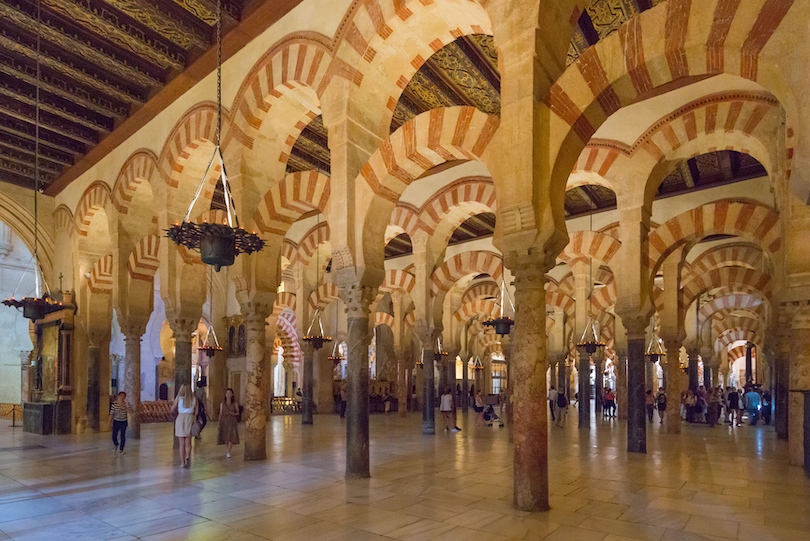
It didn’t start out this way, but the end result of the Mezquita represents an ecumenical effort by several religions, all of which conquered Cordoba at one time.
The original Roman temple was replaced by a Visigoth cathedral. It became a mosque in the 8th century when Moors captured the city. At one time this sacred Moslem pilgrimage destination held an original copy of the Koran and an arm bone belonging to Mohammed.
It became a cathedral again in the 13th century when Cordoba was conquered by Christians. They left the stunning Islamic architecture of this Cordoba landmark essentially intact, simply consecrating and renaming it.
Where to Stay in Cordoba
Cordoba may be a small city, but that doesn’t mean there aren’t specific areas to stay that will elevate your experience. Juderia is at the top of the list thanks to its vibrant alleyways, Flower Street and charming patios.
Just north of Juderia is downtown Cordoba, where modern sensibilities flourish alongside historic architecture and atmospheric town squares. Families should also consider Vial Norte, where family-friendly accommodation lies alongside parks and old-time castles.
Found on the edge of Plaza de las Tendillas, H10 Palacio Colomera places you in the heart of Cordoba culture. Some rooms feature beautiful city views while being close to palaces, the Roman Temple and the Cordoba Synagogue.
In Juderia, Eurostars Maimonides is a budget-friendly hotel with elegant features. The hotel comes with a traditional Andalusian patio, views of the historic mosque and places you within walking distance of Cordoba’s famous Flower Street.
How to get to Cordoba
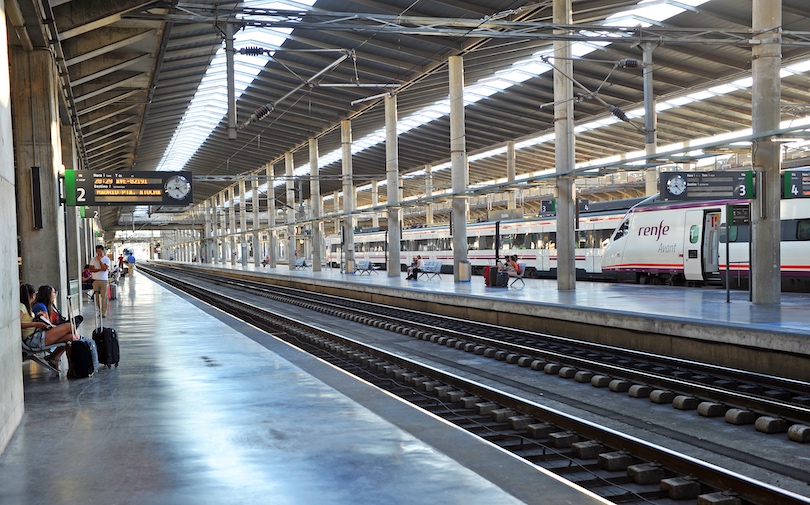
Thanks to the Spanish rail network, it is a simple, and pleasant, journey to Cordoba. The best launch points for the Andalusian city are from Madrid or Seville, with the latter being significantly closer.
Spain’s high-speed train, AVE, will take you from Madrid to Cordoba in 1 hour and 40 minutes. While from Seville, you’re just 45 minutes away. From the station, a taxi is a great option for larger groups. While several bus lines depart from the same spot.
Another option is a bus, which is a cheaper option than the train. However, from Madrid, a bus journey will take almost 5 hours and 2 hours from Seville.
Best Time to Visit Cordoba
As it lies right in the south of Spain in the center of Andalusia, the historic city of Cordoba is extremely hot from June through September. Searing temperatures of 31 to 36°C (88 to 99°F) make sightseeing a challenge with July and August being particularly bad. While prices are much cheaper during summer, there is a reason with many locals also fleeing the city.
Still very sunny and hot, both April and May are among the busiest, most expensive months to visit. This is because the Semana Santa Easter celebrations and famed Feria de los Patios are held during this time. With all its flowers blooming, the city and its countless patios look their most beautiful. Temperatures are more comfortable at around 21 to 26°C (70 to 79°F).
While the flowers have since wilted and the weather is getting a bit wetter, October through December is quieter, cheaper and there are less queues for the Mezquita. With temperatures ranging from 14 to 24°C (57 to 75°F), Cordoba can make for a nice end-of-year getaway.
Map of Tourist Attractions in Cordoba
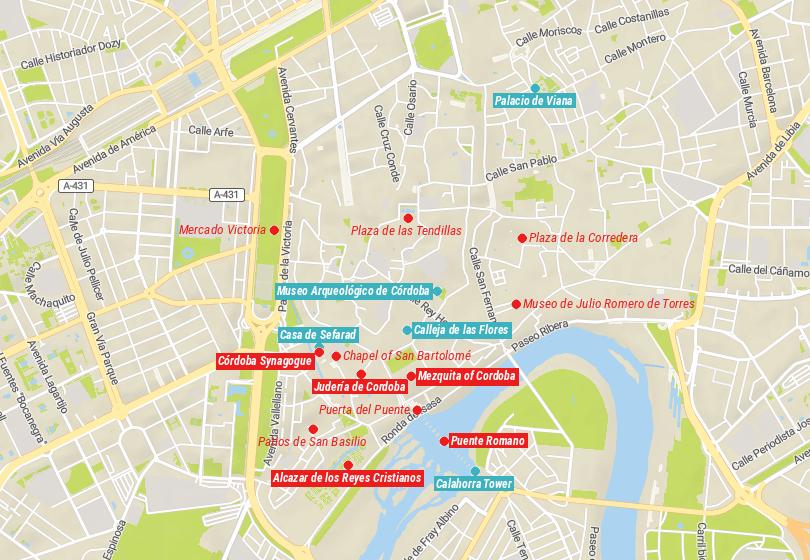
Share this post:
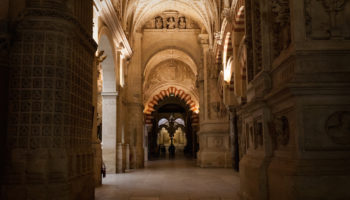
Mezquita of Cordoba: The Mosque in the Cathedral
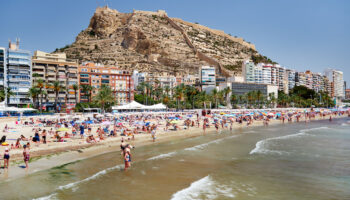
18 Best Things to do in Alicante, Spain
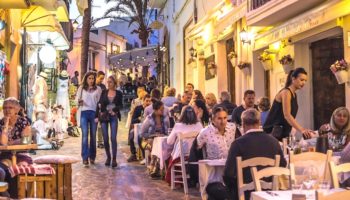
Where to Stay in Ibiza: 9 Top Destinations
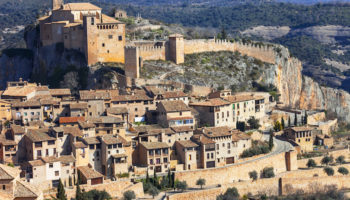
14 Most Enchanting Small Towns in Spain
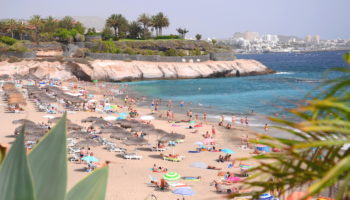
14 Best Places to Visit in Tenerife
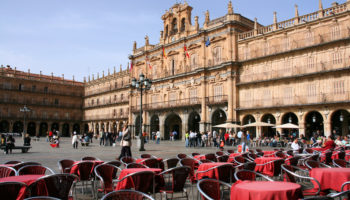
10 Most Underrated Destinations in Spain

10 Most Amazing Destinations in Northern Spain
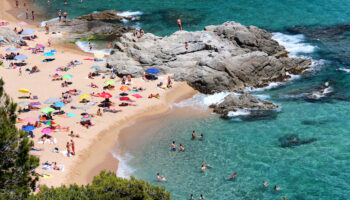
20 Best Beaches in Spain to Visit This Summer
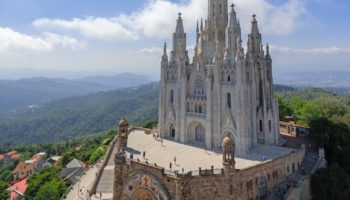
14 Most Amazing Churches in Spain
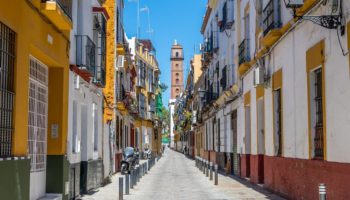
Where to Stay in Seville: 7 Best Neighborhoods
Reader interactions, leave a reply cancel reply.
Your email address will not be published. Required fields are marked *
This site uses Akismet to reduce spam. Learn how your comment data is processed .
- Skip to primary navigation
- Skip to main content
- Skip to primary sidebar
- Skip to footer

The Opinionated Travelogue of a Photo Maniac
- Middle East
- North America
- South America
- Pacific Islands
- FOOD & WINE
- TRAVEL GUIDES
- TRAVEL RESOURCES
- Rants & Raves
- Travel Blogger Interviews
- Contact Form
- Privacy Policy
- Featured Elsewhere
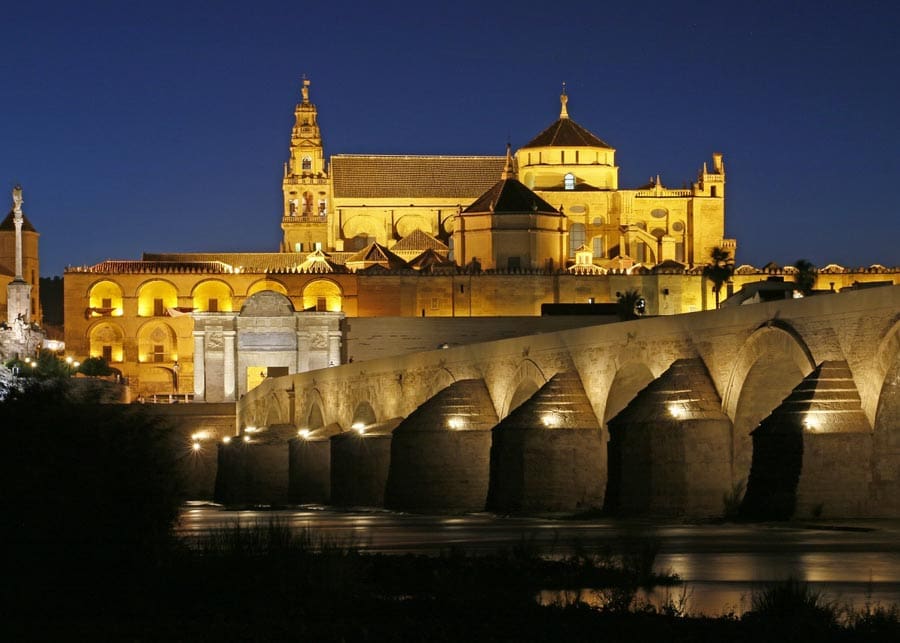
Best Things to Do in Cordoba, Spain – 12 Must-See Attractions
Last Modified: July 29, 2024 // by Anda // Leave a Comment
Cordoba is best known for being home to one of Spain’s most fascinating attractions: the Mezquita. For this reason, many people visit the city just to see the stunning Mosque-Cathedral, but there are so many other interesting things to do in Cordoba. Whether you are looking for historical sights, Moorish architecture, or good food, Cordoba has it all! Its historic old town is a World Heritage site abounding with cobblestone streets, inviting squares, flower-filled patios, and lively taverns.
Table of Contents
A Brief History of Cordoba, Spain
- 1. Explore the Mosque–Cathedral of Cordoba (Mezquita)
- 2. Cross the Roman Bridge (Puente Romano)
- 3. Pass Through the Bridge Gate (Puerta del Puente)
- 4. Discover the Remains of the Roman Temple (Templo Romano)
- 5. Visit the Castle of the Christian Kings (Alcázar de los Reyes Cristianos)
- 6. Wander Through the Jewish Quarter (La Juderia)
7. Attend an Equestrian Show at the Royal Stables
8. visit palacio de viana, 9. enjoy lunch at ermita de la candelaria restaurant, 10. tour of the authentic patios of san basilio neighborhood, 11. learn about a unique leather craft at the guadameci museum.
- 12. Discover Medina Azahara (Medina al-Zahara)
How Many Days Do You Need in Cordoba?
How to get around in cordoba, spain, best time to visit cordoba, spain, a final word.
Cordoba has a tumultuous and glorious past. It was originally under the Carthaginians, but in 152 B.C. the Romans conquered it and transformed it into a Roman settlement. Under the Romans Cordova became a major town in the Iberian peninsula. Remnants from that period can still be seen today.
But Cordoba achieved its greatest glory under the Moors, between 756 and 1031, when it became the capital of al-Andalus (Muslim Spain). It was during this period that the Great Mosque was built and the city’s importance began to grow.
In Medieval times, Cordoba was one of Europe’s largest and most powerful cities. It was sophisticated, cosmopolitan and tolerant. A place where Jews, Arabs and Christians could practice their beliefs without fear of persecution.
It was also a famous intellectual center. During the time of Caliph Hakam II, the city had over 70 public libraries, 900 public baths and numerous gardens. That attracted scholars and philosophers from all over Europe, who flocked here in great numbers.
In 1236, under Ferdinand III, the Christians retook the power and Cordoba became part of Christian Spain again. Over the following period dozens of churches and monasteries have been erected in the city, while Jews and Moors began being expelled, persecuted, or forced to convert to Christianity.
However, the new rulers were truly amazed by the beauty of the city, so they left most of it standing. Instead of demolishing the Great mosque, they built their new cathedral right at the center of it leaving the original arches and columns intact. The result is the extraordinary church-mosque we know today as the Mezquita .
BEST THINGS TO DO IN CORDOBA, SPAIN
Few cities in the world hold as many UNESCO Sites and Moorish remains from the glory days of Spain, so let’s see what are the best things to do in Cordoba.
1. Explore the Mosque–Cathedral of Cordoba ( Mezquita )
The Mesquita, also known as the Cathedral-Mosque, is undoubtedly Cordoba’s main attraction. Actually, Mezquita is to Cordoba what Alhambra is to Granada, or the Seville Cathedral is to Seville. Just as people visit Seville to see the Cathedral, or flock to Granada to see the Alhambra, so do people visit Cordoba to see the Mezquita.
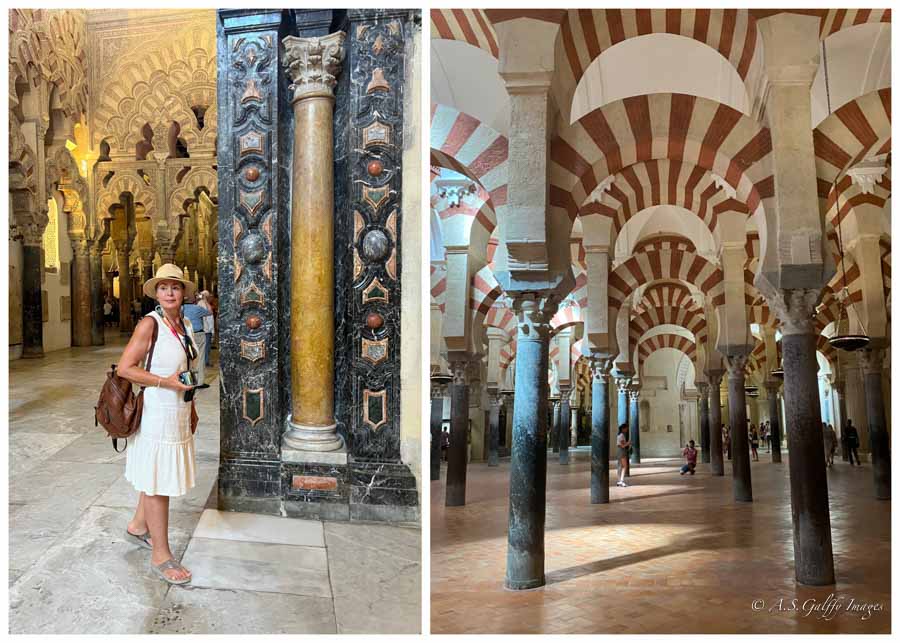
The Mosque-Cathedral of Cordoba is one of the most important Islamic buildings in Spain and was once one of the largest mosques in the world. Today is a working Roman Catholic Church, a temple and a monument at the same time.
The Mezquita was erected in the 8th century, but during its long history was rebuilt, remodeled, and enlarged many times. The present shape dates back to 1523.
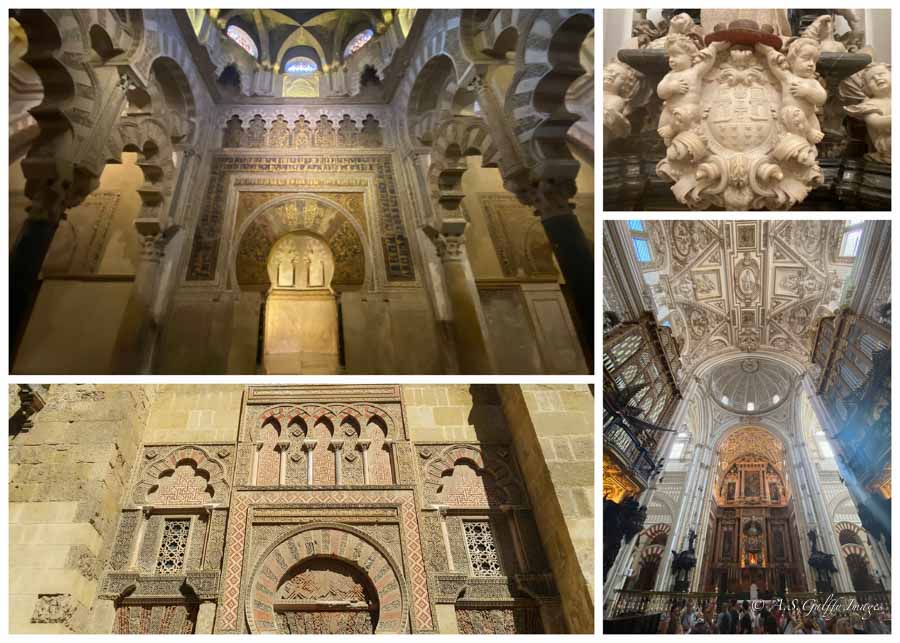
Tips for Visiting the Mezquita
The best time to visit is early morning, between 8:30 and 9:30 when it’s free and less crowded. The Mosque-Cathedral of Cordoba is huge and difficult to navigate. Because it’s Cordoba’s most important attraction, this place swarms with people and groups of tourists at all times. Therefore, getting lost during your visit is really easy and it happens very often.
It’s best if you visit the cathedral with a guided tour. If you do, try to stick to your group and don’t wander around as it will be difficult to find your way back if you get lost.
Tickets are best bought online but are also sold onsite. To avoid queuing in line on warm days, book a guided tour of here and skip the line.
Opening Hours : daily between 10:00 am to 6:00 pm Admission Price : €13 for adults; €10 for seniors and students; €7 for children; €3 for the Bell Tower. Free Admission : Monday to Saturday: 8:30 am to 9:30 am
2. Cross the Roman Bridge ( Puente Romano )
Cordoba’s best preserved site from the Roman period is Puente Romano . The bridge was built by the imperial troops in the 1 st century BC to replace the original wooden structure over the Guadalquivir river.
It’s impressive to see this 2000-year old structure still standing today! And if it looks familiar, it’s because the bridge was used as the location for the Long Bridge of Volantis , in the Game of Thrones TV series.
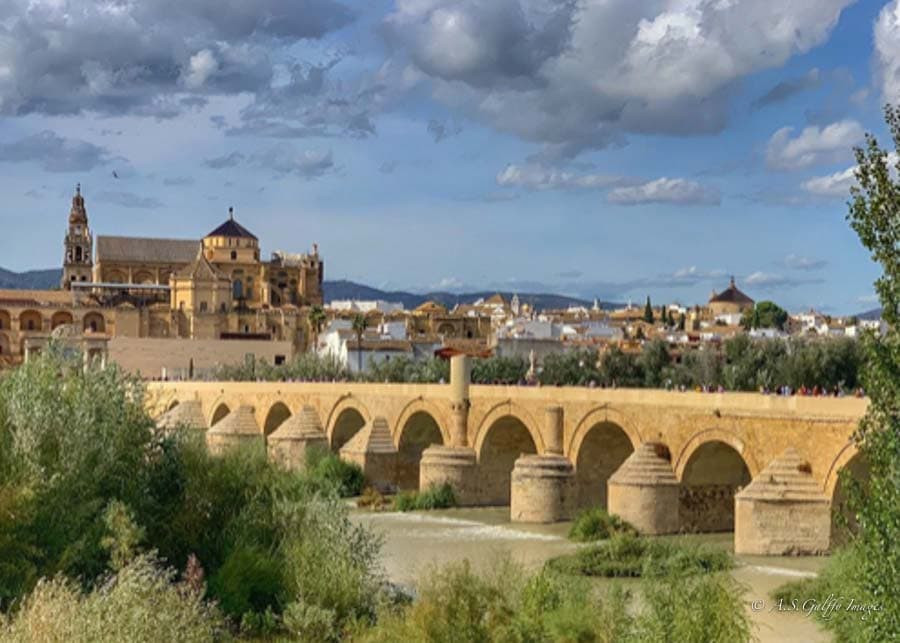
But aside from that, the bridge is also a great spot for picture-perfect views of the city, which is why you’ll see it on so many postcards from Cordoba.
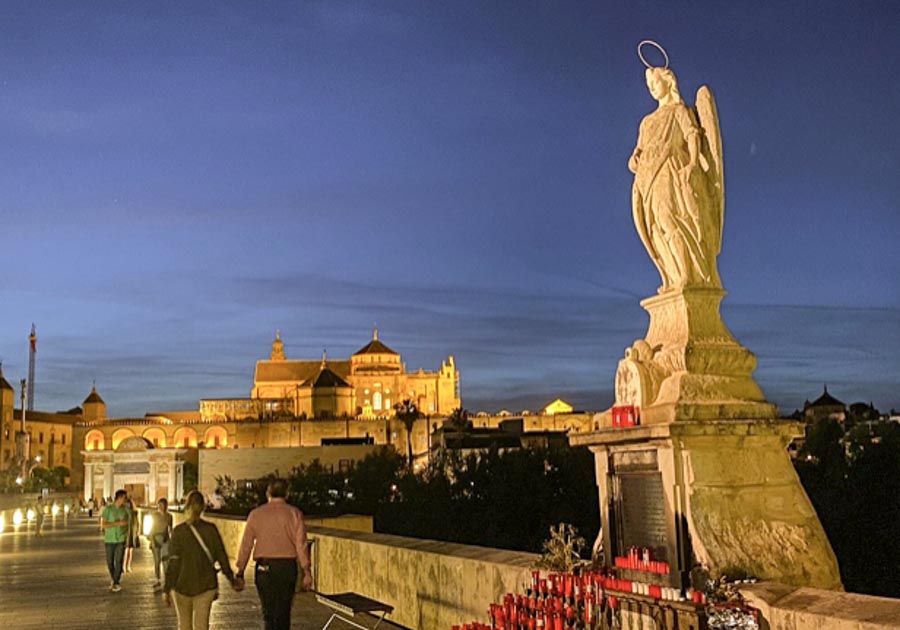
Over the years the bridge underwent several reconstructions, the last of which took place in the 8th century. Until the mid 20th century this was the only connection between the two banks of the Guadalquivir river. In 2004, after the construction of Miraflores Bridge, the Roman Bridge became pedestrian-only.
3. Pass Through the Bridge Gate ( Puerta del Puente )
At the north end of the Roman Bridge rises the impressive Bridge Gate (Puerta del Puente), which in Roman times was the entrance to the city. The gateway is located on the site of the previous Roman gates, linking the city with the Roman Bridge and the Via Augusta.
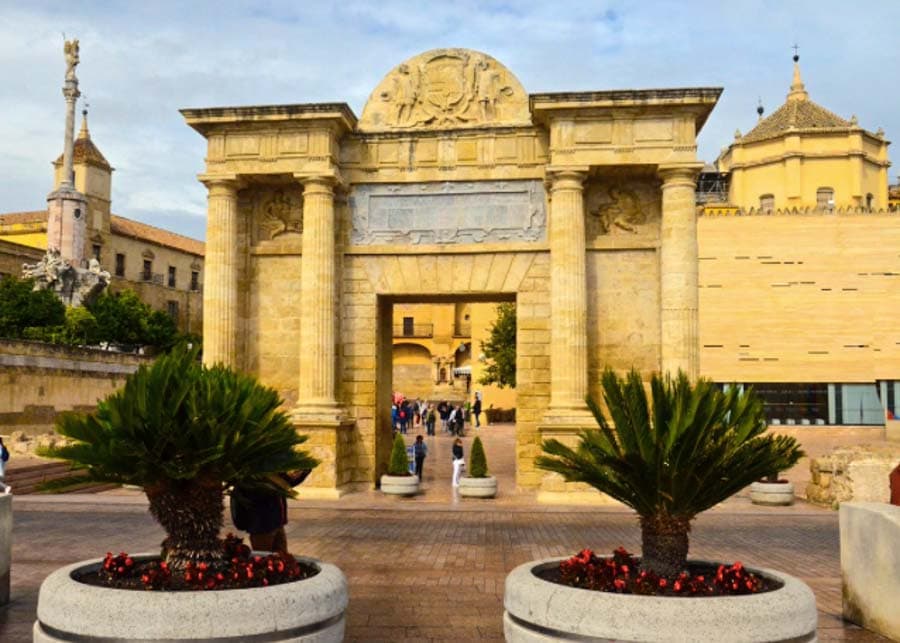
The triumphal arch you see today was built in the 16 th century to commemorate a visit of King Philip II to Cordoba.
Under Moorish rule the gate received several names, such as Bab al-Qantara (Gate of the Bridge), Bab al-Sura (Gate of the Statue) or Bab al-Yazira (Gate of Algeciras).
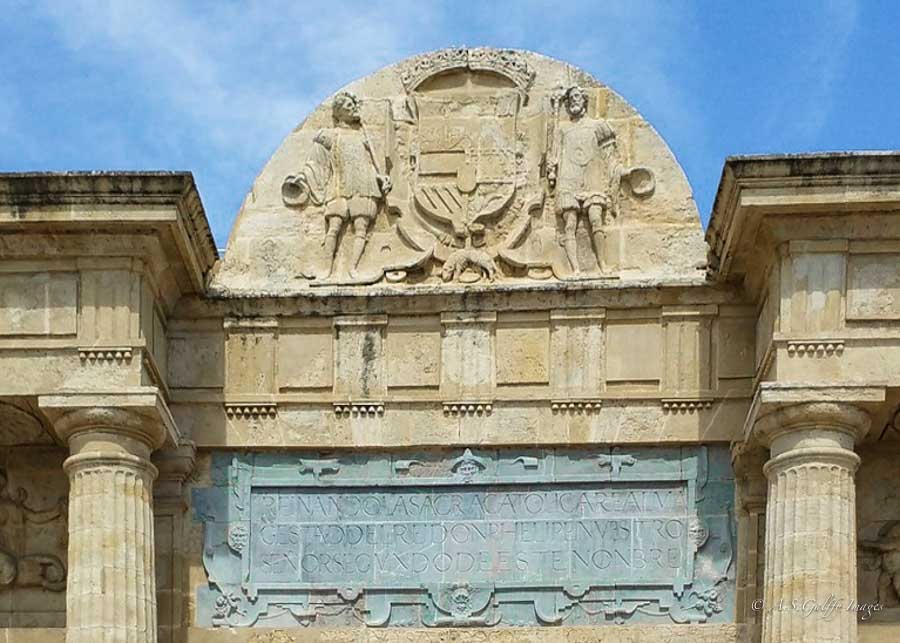
Puerto del Puente features a tall foundation made with massive blocks of sandstone that support four Doric columns. Above the gate seal there is an inscription that marks King Philip II’s visit to Córdoba, in 1570.
4. Discover the Remains of the Roman Temple ( Templo Romano )
Cordoba’s Roman Temple sits on a hill above the old city, on what would have been the eastern edge of the city in Roman times. The construction started around 41 A.D. and took over 40 years to complete. Judging by the height of its columns, the temple must have been a structure of great proportions.
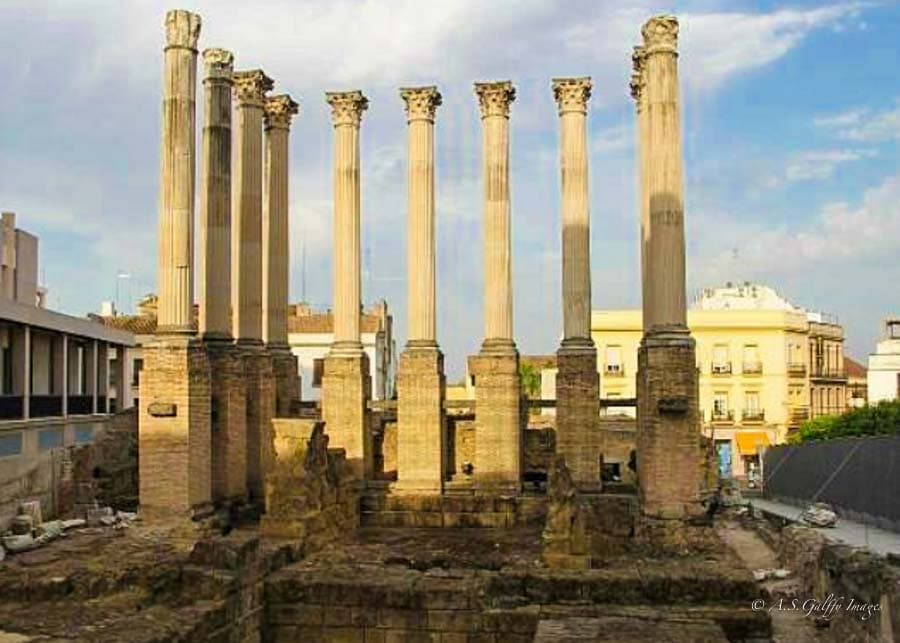
Unfortunately, all that survives today of the 2000-year old temple are a few columns and capitals, the foundation, the altar and the stairs.
While the temple may not be the most impressive attraction in Cordoba, it’s still worth a visit as it’s one of the very few Roman vestiges left.
Location : the temple is adjacent to the Cordoba City Hall, in the angle formed by the streets Claudio Marcelo and Capitulares. Opening times : 24/7 Admission is free.
5. Visit the Castle of the Christian Kings ( Alcázar de los Reyes Cristianos )
Alcazar de los Reyes was erected on the same site where once stood the Royal Palace of Abd al-Rahman I. The current building, which was erected in the 14th Century under Alfonso XI of Spain, has an important place in the history of Cordoba. The Catholic Monarchs –Ferdinand and Isabella– lived in the Alcazar for almost 9 years. It was also here where they first met Christopher Columbus, to discuss his plans to sail for the New World.
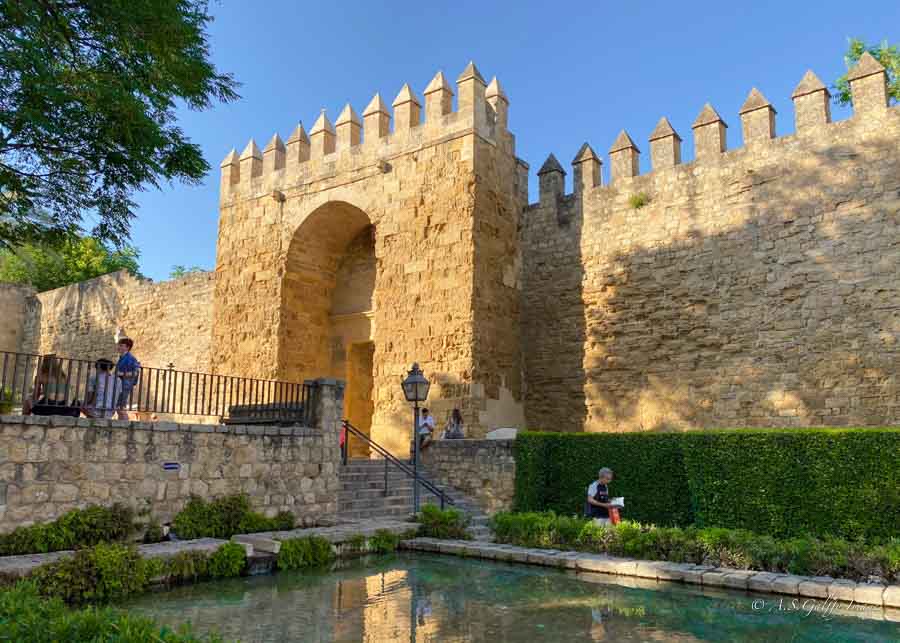
Many people decide to visit this attraction because it’s located right next to the Mosque-Cathedra of Cordoba, which is convenient. But overall the site is not very impressive.
There are a few Roman mosaics inside and a large sarcophagus which was supposedly used to bury an entire family, but not much else. However, when you step into the gardens… wow!!
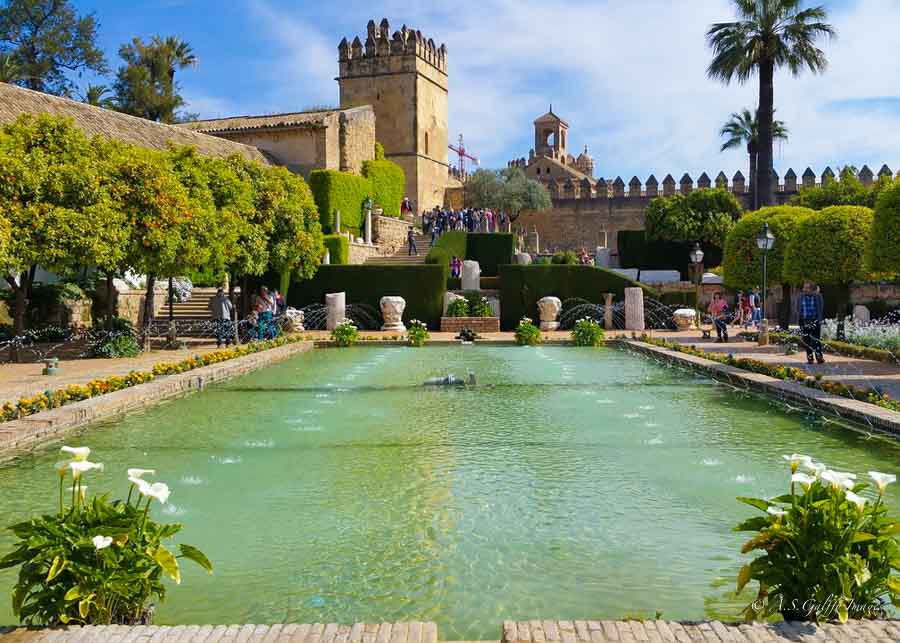
The gardens are the most beautiful part and definitely what makes the visit worth it. In summer it was really hot here, but I think in spring this place must be a joy to the senses!
Opening times : Hours: Tuesday to Sunday from 8.45 a.m. to 3.15 p.m. Admission Prices : €5:00 for adults and €2.50 for students
6. Wander Through the Jewish Quarter ( La Juderia )
Between the Puerta de Almodovar and the famous Mosque-Cathedral, lies one of Cordoba’s most interesting neighborhoods: La Juderia (the Jewish Quarter).
Founded during the Roman times, the Jewish Quarter of Cordoba was separated from the rest of the city by a walled enclosure intended to isolate and protect the inhabitants from the wrath of Christians.
The neighborhood is a web of long narrow alleys framed by white and blue façades, old courtyards, small shops, and tiny squares. Pass through Calleja de las Flores , an alley decorated with flowerpots hanging on the walls.
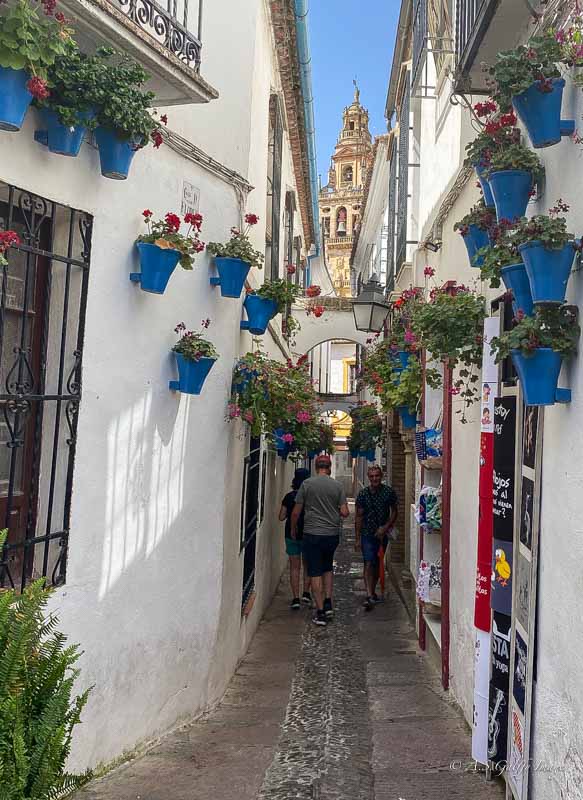
This area is home to some important attractions and cultural monuments in Cordoba. Two that you shouldn’t miss are the statue of Maimonides and the legendary Synagogue of the XIV century, a UNESCO World Heritage Site.
Born in Cordoba, Maimonides was a Jewish philosopher who became one of the most influential scholars of the Middle Ages. In the latter part of his life he was physician to the Sultan Saladin, who ruled Egypt between 1174 – 1193.
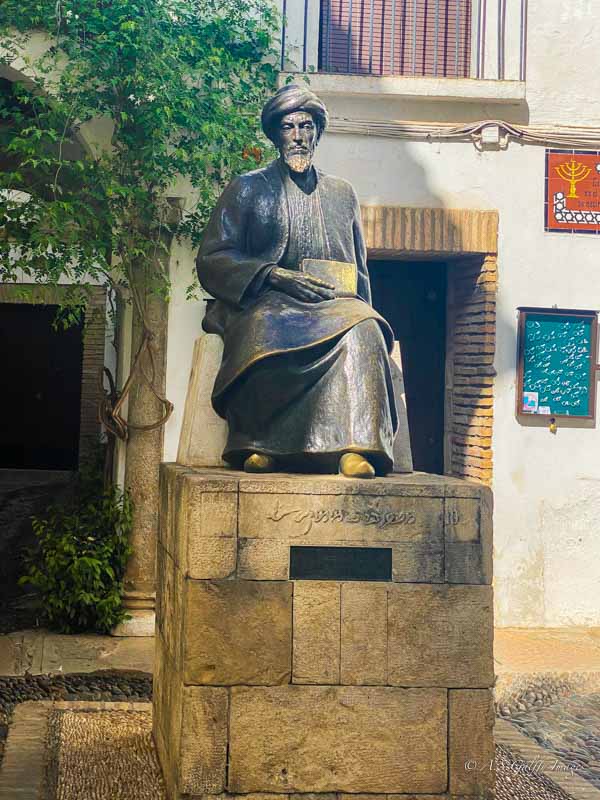
Cordoba Synagogue dates back to the 14 th century and is one of the three best preserved Medieval synagogues in Spain.
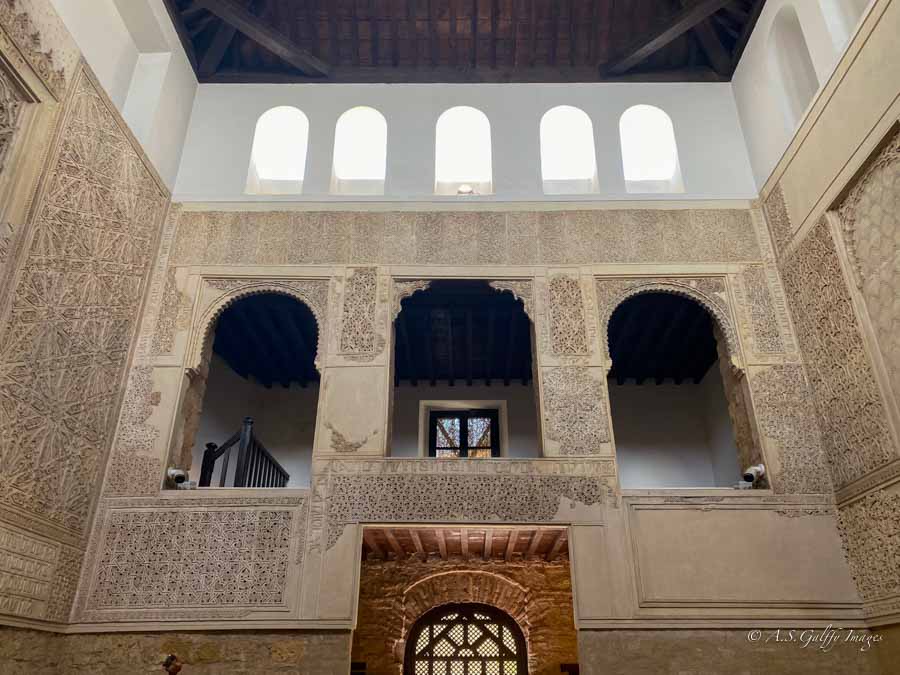
I have to confess that after seeing the Great Synagogue of Budapest , I felt really disappointed by this tiny structure. Access to the synagogue is through a narrow alley and the building itself is not visible from the street. The sanctuary has a square floor and coffered ceilings. On its Eastern side there is a small tabernacle where they used to keep the Torah .
Opening times : Tuesday to Saturday: 10:00 a.m. to 2:00 p.m. and 3:30 p.m. to 5:30 p.m. Admission prices : free for the EU citizens: €0.30 for the rest of the countries.
One of the most exciting things to do in Cordoba is attend an Equestrian Show that takes place at the Royal Stables, in the neighborhood of San Basilio.
Built in 1570 at the order of Philip II of Spain, the Royal Stables ( Caballerizas Reales de Cordoba ) had the purpose of raising purebred Andalusian horses. This majestic animal that carried the conquistadores in the New World, was a powerful symbol of the Spanish empire.
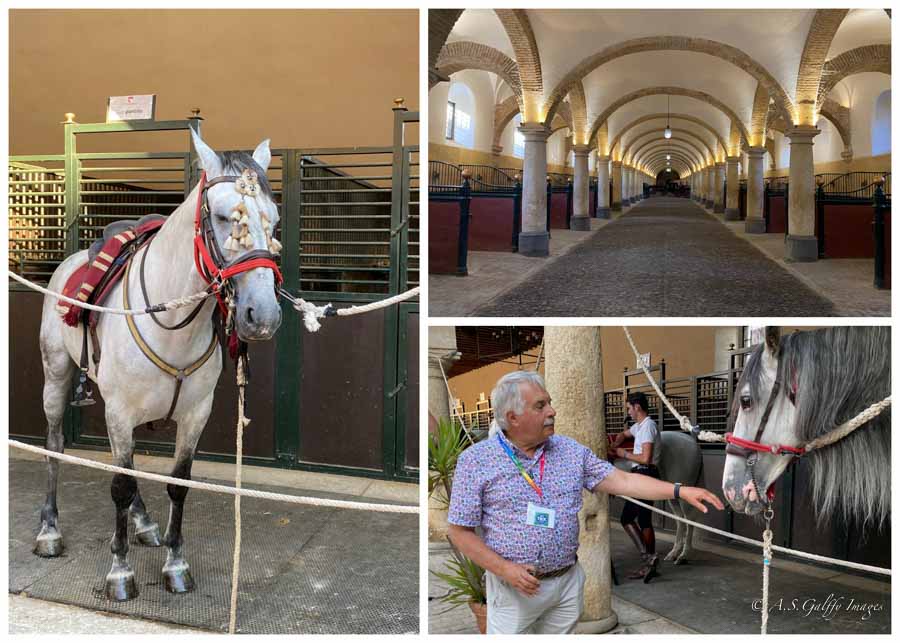
If you visit the stables during the day you can watch the Andalusian horses during their practice. However, if you come in the evening you can attend a night Equestrian Show, which is even more impressive.
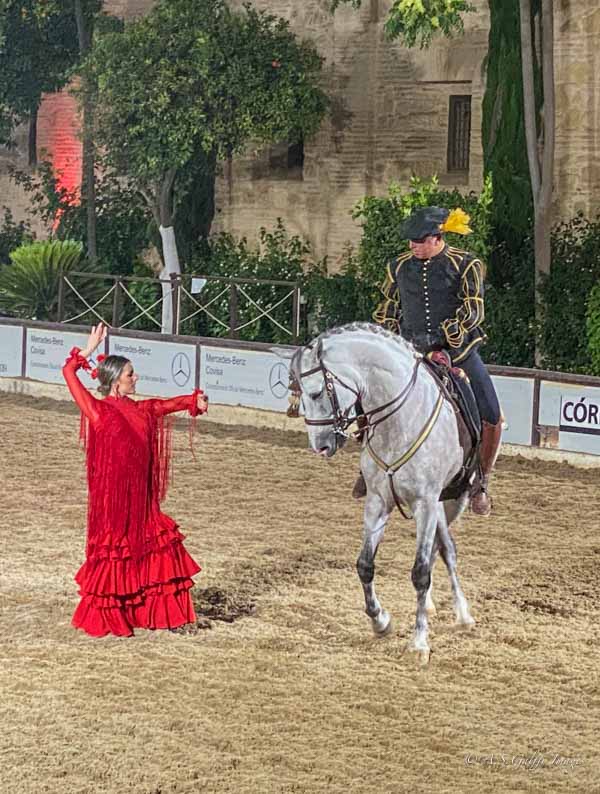
There is also a small museum on the grounds which is worth visiting. The stables were declared a World Heritage Site in 1994.
Palacio de Viana in Cordoba is mostly famous for its 12 beautiful courtyards, but the collection of furniture and artifacts inside is an even more impressive attraction.
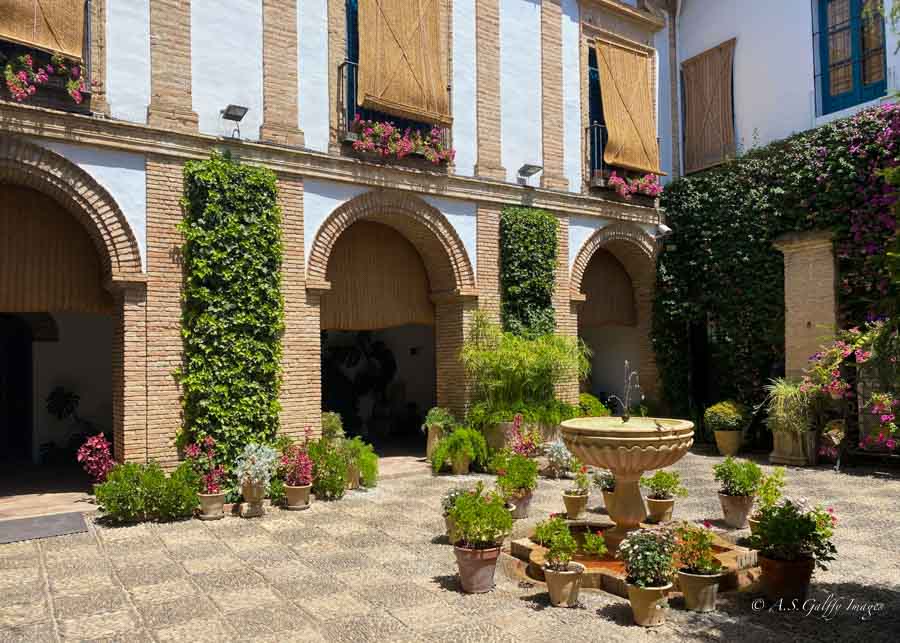
Dating back to the 14th century, the palace was the residence of a few prominent people in Cordoba, among wich the Marquis of Villaseca, in the 15th century, and the Marquis of Viana, in the 19th century. In 1980, the 3rd Marquis of Viana sold the palace to a local bank which in turn opened it to the public, as a museum.
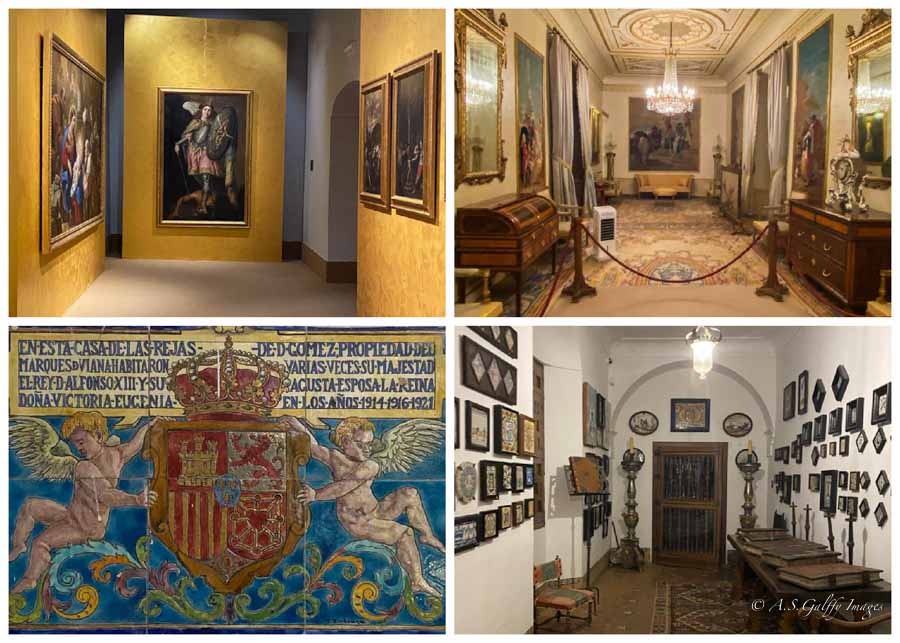
Palacio de Viana is huge, occupying an area of over 6,500 square meters, part of which are the gardens. Over the centuries the palace’s art collection grew, reflecting the tastes of each owner. The objects displayed include furniture, embossed leatherwork, coat of arms, tiles, royal muskets, tapestries, paintings, and porcelain.
Address : the palace is located at Plaza de Don Gome 2, in Cordoba.
Opening times : Tuesday to Friday 10:00 am to 7:00 pm; Saturday and Sunday 10:00 am to 3:00 pm. Monday closed. Admission prices : €8/person (palace & gardens); €5/person (gardens only); free for children under 10.
Ermita de la Candelaria is one of the high end restaurants in Cordoba. While prices may not be low, eating here is a truly unique experience! The food is absolutely amazing and the place has a very special atmosphere!
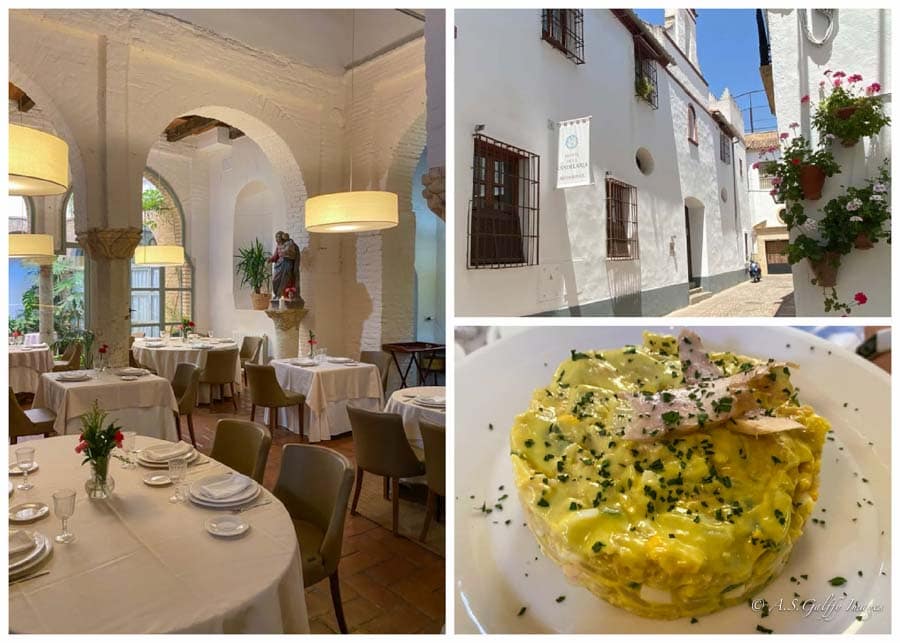
The restaurant is housed in a 15th century chapel which has been nicely restored to provide a beautiful setting. On the menu you’ll find traditional dishes from the region deliciously prepared.
Address : the restaurant is located at Calle de la Candelaria 2, 14002 Cordoba
The flower-filled courtyards are one of Cordoba’s most sought after attractions. Each year in May the Town Hall organizes the Festival of the Patios , a contest in which home owners decorate their houses with flowers pots, hanging them from the walls or placing them around the patio.
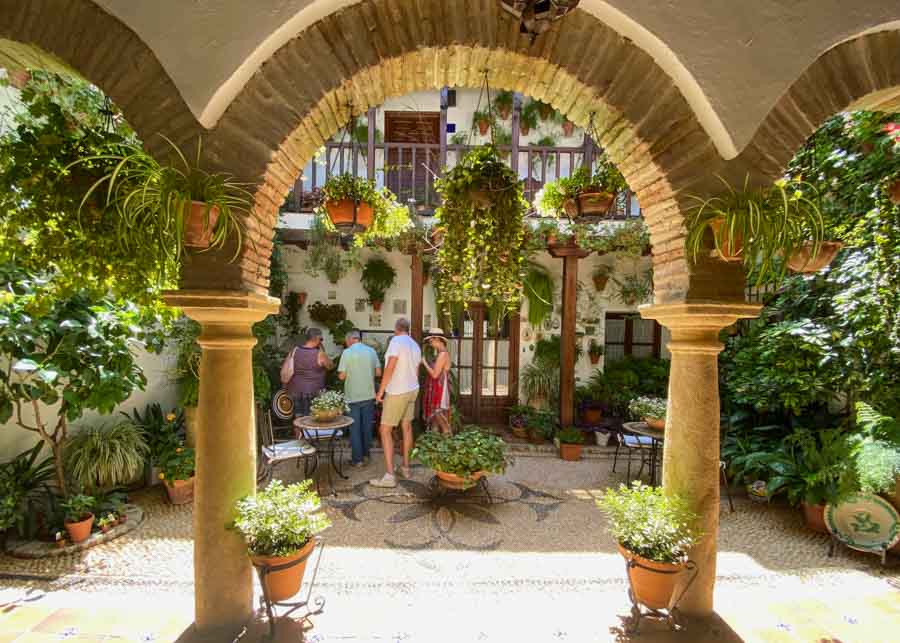
The proud participants are glad to open up their courtyards to the public, so you can take a small group guided tour of all these beautiful houses.
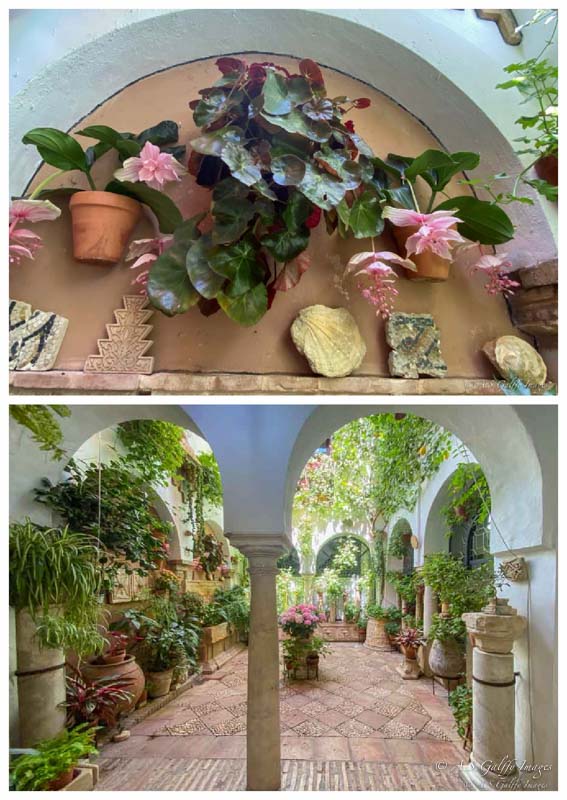
The courtyards in Cordoba are open for visitation all the year round, not only during the Festival, so don’t miss them!
The city of Cordoba is famous for its leather works and handicrafts. But perhaps the most intriguing one is the leather art technique known as Guadameci . The process, which goes back to the 10th century, consists of embossing the leather with an intricate design that features gold, silver and colorful paints.
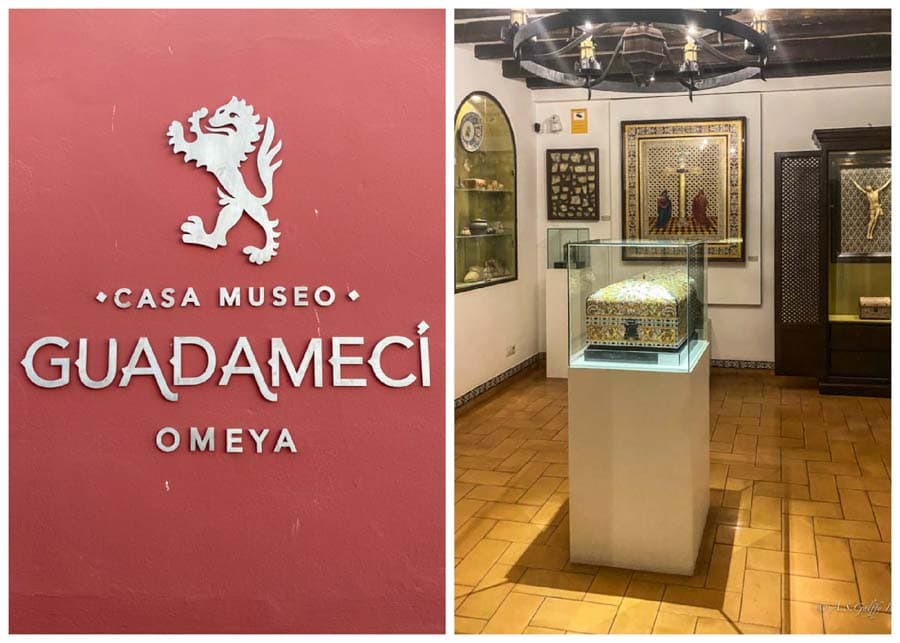
This small museum is unique in the world because it demonstrates the original Omeya technique. It’s a wonderful showcase of Ramón García Romero’s work, who was a pioneer in the recovery of this fascinating technique.
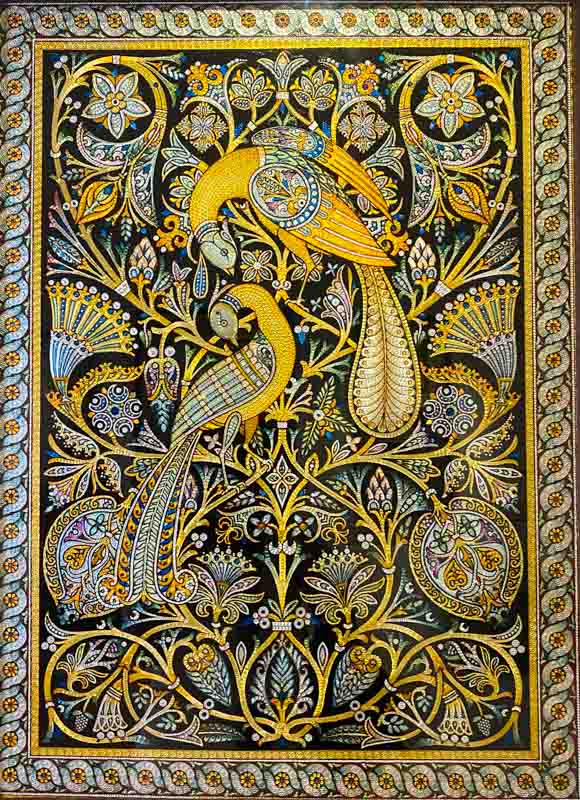
His craft transforms the leather into amazing decorative works of art. You can learn about different handicraft techniques and see some beautiful examples of Guadameci art.
Guadameci Museum is located just a few steps from the Mezquita, so don’t miss it. Admission is free.
12. Discover Medina Azahara ( Medina al-Zahara )
One of the most impressive attractions in Cordoba is the fortified palace of Medina al-Zahara, just a few kilometers west of the city. The 10th century complex –which includes a palace, some gardens and a residential area– was built by Abd al-Rahman for his favorite wife, Az-Zahra. Well, at least that’s what the legend says.
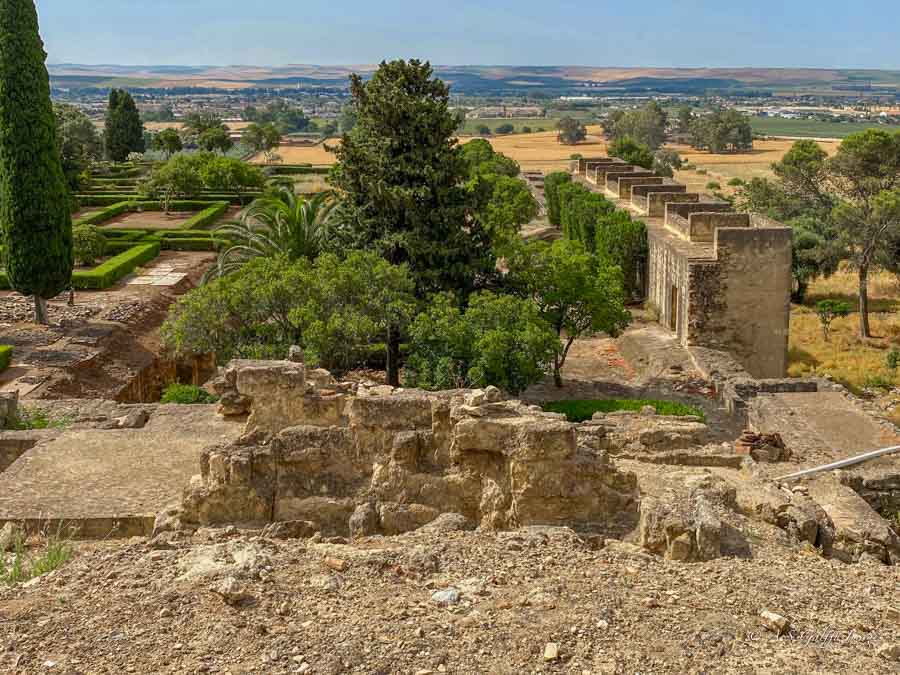
Actually, the reason for this construction was political. Abd al-Rahman III had declared himself “caliph” in 929 and as a symbol of his power he had to establish a new capital city. The palace was meant to impress his rivals, which is why Abd al-Rahman didn’t spare any expense.
Medina Azahara had everything a place of government should have: official reception halls, administrative offices, baths, aristocratic residences, service quarters, gardens, and even a mosque.
The construction took over 35 years to complete, but sadly Medina Azahara didn’t survive very long. Just a few years after the Abd al-Rahman’s death, the new caliph who took over the throne –Amir Al-Mansur– moved the government seat to a new place.
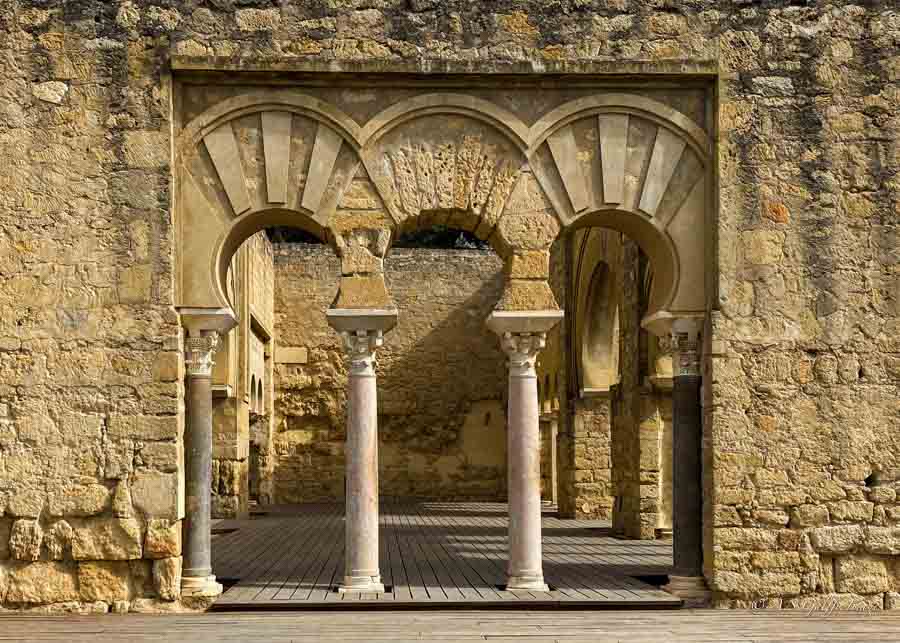
How to Get to Medina Azahara
The best way to get to Medina Azahara is on the daily bus that takes you directly to the archaeological site. The Bus stops on Paseo de la Victoria (opposite the Mercado Victoria) and takes you back from the site 3¼ hours later. That gives you a 2 and a half hour period to visit the complex.
Departure time is Tuesday to Sunday at 10:15 a.m. and 11:00 a.m. Bus ticket price : €9:00/adult and €5:00 for children Admission price for the site: €1.50/person Guided Tour : €21/person ( click here to book )
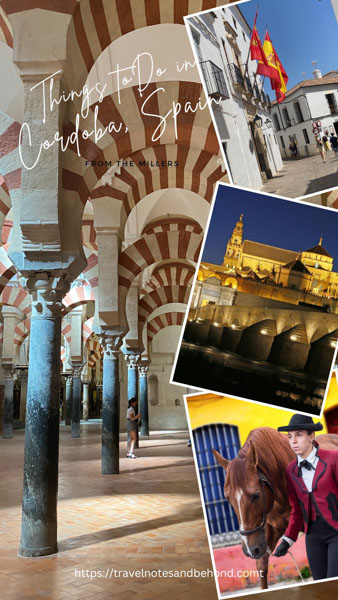
READ NEXT : All You Should Know Before Visiting the Cathedral of Malaga
Cordoba is one of Spain’s most beautiful cities, easy to visit and blessed with the largest number of World Heritage Sites in the world. With so many attractions and interesting things to do, we recommend spending at least 3-4 days in Cordoba.
Many people argue that two days should be enough for visiting the city, but I believe will need at least 3 full days to properly visit the attractions listed in this itinerary. In fact, the longer you stay, the more you are going to enjoy this city!
This itinerary works for 3 or 4 days, but if you have more time in Cordoba, there are many wonderful places to visit around the city.
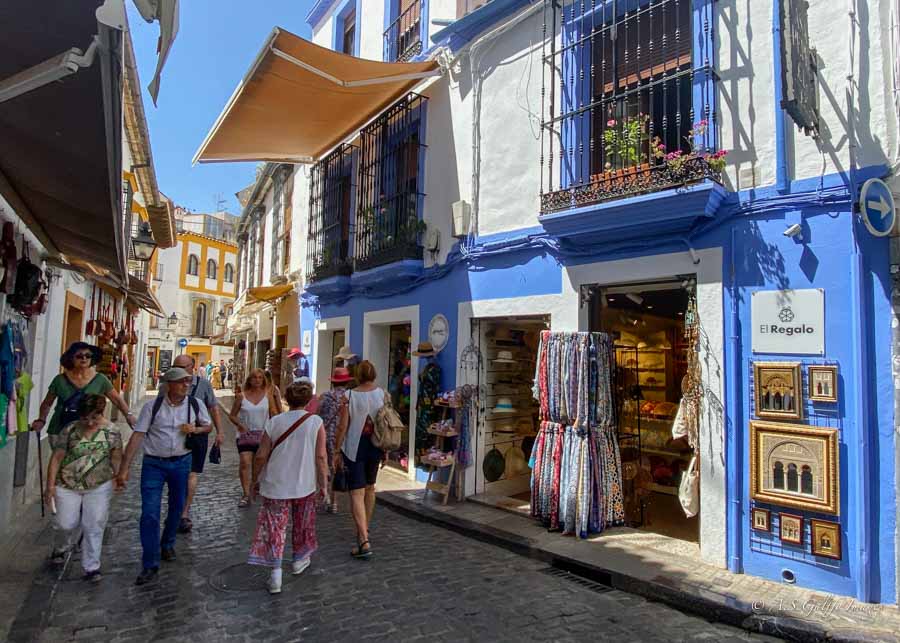
Cordoba can be easily explored on foot and is safe to walk both day and night. Most of the attractions are very close to each other, so walking is the best way to explore the city. That being said, there are a few places –like Medina Azahara– for which you’ll need a car, or use public transportation.
Cordoba is fairly easy to navigate by car, so if you are planning to rent one you won’t have trouble finding parking. With the exception of the Jewish quarter and the area around the Mezquita, which have many pedestrian streets.
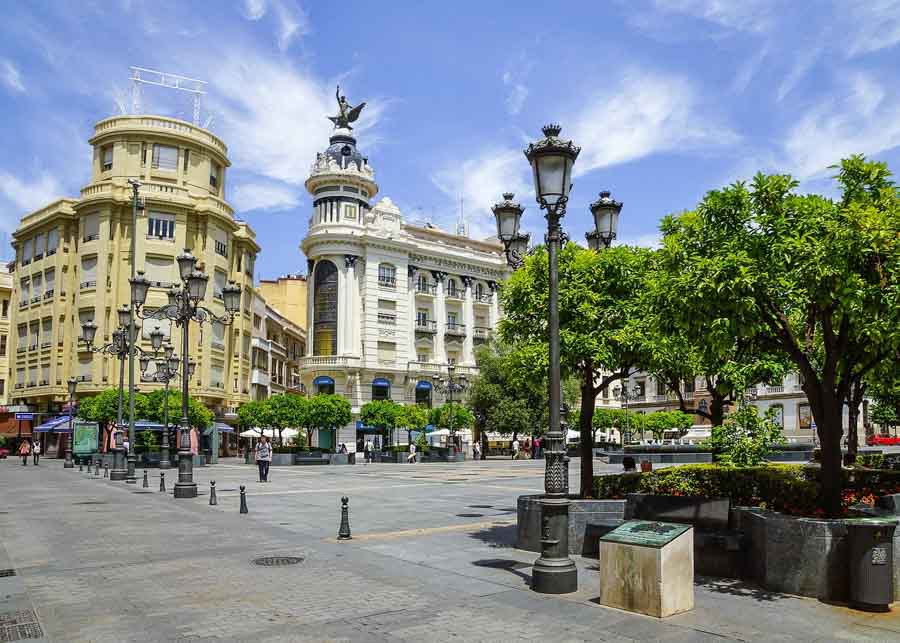
Taxis in Cordoba are affordable, therefore a convenient way to travel. The cheapest means of transportation is of course the bus. Tickets cost €1.30/one way, but if you plan to use the bus a lot you can buy an unlimited pass for €33.
There is also a Cordoba City Sightseeing Hop-On Hop-Off Bus which stops close to different attractions throughout the city.
Cordoba has a Mediterranean climate, with hot summers and mild winters. The hot season lasts from mid June to mid September, but summer temperatures can be brutal, almost like in Morocco . In fact, Cordoba is the hottest city in Spain, with temperatures reaching 45ºC (113ºF).
The cool season is from mid November to mid March, when temperatures get below 18ºC (65ºF).
Ideally, you should visit Cordoba during the shoulder season – April-May, or September-October, when it’s neither too cold nor too hot. But the cooler season is preferable to the arid, hot summers. We visited Cordoba in summer, as part of a larger European itinerary , and had to endure some unbearable heat!
Cordoba is an authentic and culturally fascinating city with plenty of attractions and things and do. Although some travelers skip it in favor of bigger name destinations like Granada or Seville, there’s no doubt in my mind that Cordoba should be on any Spain itinerary. I left wishing we had more time in this wonderful city.
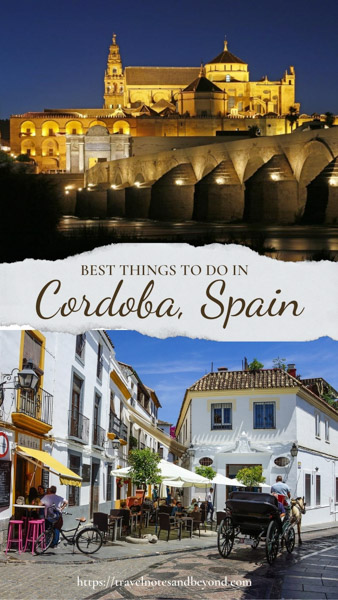
YOU MAY ALSO LIKE:
- Morocco Itinerary – How to Spend 10 Days in Morocco
- Valley of the Temples, Sicily – the Ultimate Guide to Agrigento Temples
- How to Visit the Temple Mount & Dome of the Rock as a Tourist
- How to Plan a Perfect Day Trip From Marrakech to Essaouira
- What Are the Most Beautiful Places in Croatia?
Anda is an award winning travel writer, avid globetrotter and passionate photographer. She is the voice behind "Travel Notes & Beyond," a collection of stories and travel impressions from her wanderings around the world. When she is not busy writing, traveling, or editing photographs, you can find her hiking in the foothills behind her house together with her husband and their dog.

Reader Interactions
Leave a reply cancel reply.
Your email address will not be published. Required fields are marked *
Save my name, email, and website in this browser for the next time I comment.
COPYRIGHT NOTICE
All rights reserved © Travel Notes & Beyond. The material on this website is protected by copyright law. Republishing the content on this blog (including text, photography, etc.) is strictly prohibited.

AFFILIATE PROGRAM DISCLOSURE
Some of the pages and posts of this blog contain links to products and services that may be useful for my readers. When clicking on these links you will have the option to purchase or register for a service at no extra cost to you, but doing so can help me offset the costs associated with running this blog. Thank you for your support!
- The Top 10 Things To...
The 21 Best Things to See and Do in Córdoba, Spain

Boasting a fascinating and multi-faceted history, Córdoba is one of the most popular tourist destinations in Spain . From its iconic Mosque-Cathedral to the beautiful flower-adorned patios open to the public every May, this is a city with something for everyone . Read on for the 10 best things to see and do in Córdoba.
Mosque-cathedral.
Mosque, Historical Landmark, Cathedral, Architectural Landmark

Medina Azahara
Old-school tapas bars.
Bistro, Spanish

Roman Bridge

Patios and courtyards
Architectural Landmark

Córdoba’s prettiest and most unique attractions arose from architectural necessity. The city is one of the hottest in Europe during the summer months, when temperatures frequently exceed an insufferable 40°C (104°F), so it has always been essential for its inhabitants to have a cool retreat for the middle of the day. As far back as the Roman occupation of Córdoba, houses were built with an internal, open-aired atrium, which was protected from the sun on all sides by thick stone walls. Over the centuries, these havens of cool and shade were decorated with flowers, plants and fountains – a practice that was refined during the Moorish occupation of Córdoba. Since 1918 the Feria de los Patios , as it’s called, has been sponsored by Córdoba’s town hall, which offers a prize for the prettiest patio .

Become a Culture Tripper!
Sign up to our newsletter to save up to $1,058 on our unique trips..
See privacy policy .
Palacio de Viana
Alcazar de los reyes cristianos.
Bridge, Park
Judería de Córdoba
Córdoba’s former Jewish quarter, extending north and east of the Mosque-Cathedral , contains many of the city’s most famous streets and squares. The most photographed of them all is the Calleja de las Flores, a romantic alleyway decked out with the brightly coloured flowers and blue flowerpots that are so emblematic of this region of Spain. Indeed, they’re such a significant part of the Cordoban and Andalusian culture that the city’s annual Fiesta de los Patios was declared Unesco-protected heritage in 2012. Judería is also where you’ll find two of Córdoba’s most important architectural attractions: the great Mosque-Cathedral (Mezquita-Catedral) – an incomparable combination of a medieval mosque and Renaissance cathedral, the latter built right on top of the former by Charles V in the 16th century – and the understated 14th-century synagogue.
Córdoba Synagogue
Calleja de las flores.
The annual patios feria and the Palacio de Viana aren’t the only opportunities for seeing the famous flowers of Córdoba. A stroll down most streets in the old quarter will take you past several gorgeously-decorated building facades, but on the Calleja de las Flores every single house looks like something out of a fairytale. Situated just north of the Mosque-Cathedral in the heart of the old town, this sweet-scented, colourful little street is the prettiest in Córdoba – and in a city where every other house is worthy of being on a postcard, that is quite a compliment.
San Andres-San Pablo Neighbourhood

San Andres-San Pablo is in the centre of Cordoba’s old town and is one of the best neighbourhoods in which to take the pulse of the city’s daily life. Despite its popularity with tourists, this is also a working barrio where Córdobeses pile into the many tapas bars at lunchtime for a beer and a quick bite. Blend in amongst them, order a chilled sherry and some prawns – a great light summer snack in the searing heat of Córdoba – and try to understand the machine-gun-like conversations unfolding at deafening volume around you.
Torre De Calahorra

Dating from the late 1100s, the Cahalorra tower was constructed by the rulers of Moorish Córdoba to protect the Puente Romano – one of the city’s principal entrances – from invaders. It originally consisted of two towers separated by an iron gate but in the late 1300s a third, cylindrical tower was added by Henry II of Castile to better guard the bridge from an attack by his own brother. Nowadays it houses a small but interesting museum on the history of Al-Andalus, as Moorish-ruled Spain used to be called.
San Basilio Neighbourhood
The beautiful old neighbourhood of San Basilio – also called Alcazar Viejo – is one of the most charming quarters in all of Andalusia. This area of scrunched together, whitewashed houses is home to many of the beautiful patios that open every May for the Feria de los Patios as well as the Alcazar – but it is well worth wandering around in its own right. Along with Granada’s Albaicin and Seville’s Santa Cruz , this is one of the most romantic and intriguing neighbourhoods in southern Spain.
Roman Temple
One of the pleasures of visiting Córdoba is being able to view monuments from all three of its most defintive epochs: Roman, Moorish and Christian. It was not until the 1950s, when Cordoba’s town hall was being expanded, that the remains of what was probably the city’s most important Roman temple were discovered. It was built during the reign of Emperor Claudius in the middle of the 1st century AD and was renovated in the 2nd century AD. Of its giant columns, 10 remain, reaching up into the sky amid modern apartment blocks and offices. Archaeologists have theorised from the quality of marble and workmanship used in the construction of the temple that it must have been a particularly impressive structure, perhaps even one of the most beautiful in the Roman Empire.
Puerta del Puente
On the other side of the Roman bridge from the Torre de la Calahorra is the Puerta del Puente, construction of which began in 1572 in order that Córdoba might have one of the grandest entrances in southern Spain. It was rebuilt and added to several times over the centuries – most notably in 1912 on the orders of King Alfonso XIII of Spain – and today provides a suitably dramatic welcome to Córdoba for visitors approaching from the Roman bridge.
Manolete Monument
The neighbourhood of Santa Marina is well worth setting aside a morning for, as it home to some of the most beautiful old houses in the city. It is also known as Córdoba’s bullfighting barrio and one of its key monuments, in Plaza del Conde de Priego, is a bronze statue of the city’s most famous bullfighter, Manolete (1917–1947). Manolete, said to be one of the finest matadors of all time, was fatally gored during a bullfight when he was only 30; the grandeur of his statue reminds you that, controversial as bullfighting may be, great bullfighters are still an important part of the history and culture of many southern Spanish towns.
Santa Marina Church
Right opposite the square is the Iglesia Santa Marina, a church dating from the second half of the 13th century. Its construction was ordered by King Ferdinand III when he captured Córdoba from its Moorish occupants in 1236, at which point the city was one of the most sophisticated and cosmopolitan in the western world. Throughout the 17th, 18th and 19th centuries this gracefully ageing church survived two earthquakes and a fire, requiring extensive renovation works as a result. It is one of the most beautiful of the so-called “Ferdinand Churches” – those built by Ferdinand II to celebrate his victory over the Moors.
Bullfighting Museum
Córdoba’s 1960s bullring might lack the history and beauty of those in Andalusia’s other major cities, but its superb Museo Taurino , or bullfighting museum, is one of the best you’ll come across. Over several light-filled, spacious rooms it offers a fascinating insight into this controversial spectacle and some of its greatest practitioners, including the Córdoba-born phenomenon Manolete. A great starting point for anyone curious about this mysterious, little-understood tradition.
Botanical Gardens
Occupying a 10 hectare site that stretches along the lush northern banks of the Guadalquivir are Córdoba’s botanical gardens . Opened in 1987, they showcase thousands of species of plants, flowers and trees over several separate areas: these include a hothouse with 130 species of plants from the Canary Islands, an arboretum and two fascinating museums. The Museum of Paleobotany explores the development of plants over the millennia, whilst the Museum of Ethnobotany focuses on how humans have used plants throughout the ages. The gardens are also full of shade and make a perfect escape from the ferocious heat of a Córdoba summer.
Museum of Fine Arts
Art lovers who visit Córdoba will want to visit the city’s Museum of Fine Arts , located in a beautiful former hospital on one of Córdoba’s most attractive squares. Opened in 1862 but extensively rebuilt in the 1930s, it showcases works by Spanish and international artists from the middle ages to the present day, specialising in the Baroque period and the 19th century.
Guadalquivir River
The lush banks of the Guadalquivir river are some of the best places to enjoy a stroll in Cordoba. The busy, terrace-lined thoroughfare of Calle Ronda de Isasa runs along the southern edge of the old city and is a great place to stop for refreshment and to admire the city’s Roman bridge ( Puente Romano ). The centre of this iconic structure is also one of the best spots to survey the Mezquita-dominated skyline of Cordoba and the unusually (for Andalusia) green countryside by which it is surrounded.

A Guide to the Old Town in Córdoba, Spain

Everything You Need to Know About Córdoba’s Calahorra Tower

Must-Visit Gardens in Córdoba, Spain

The Best Tours in Córdoba, Spain

Top Reasons Why You Should Visit Córdoba, Spain, at Least Once in Your Lifetime

Things to Do in Córdoba, Spain

Everything You Need to Know About Córdoba’s Mosque-Cathedral

The Best Hotels in Córdoba, Spain, for Every Traveller

The Best Boutique Hotels in Córdoba, Spain

The Top 10 Day Trips From Córdoba, Spain

Why You Should Visit Sierra de Hornachuelos Natural Park in Córdoba, Spain
Culture Trip Fall Sale
Save up to $1,058 on our unique small-group trips! Limited spots.

- Post ID: 1388789
- Sponsored? No
- View Payload

12 Spectacular Things to Do in Cordoba Spain
Are you planning your southern Spain itinerary and want to know the best things to do in Cordoba Spain? Well, you’re in for a truly memorable destination! The ancient city of Cordoba dates back to the Romans and is brimming with layer upon layer of history.
In this guide, you’ll find:
- what to do in Cordoba,
- how to get to Cordoba,
- how much time to spend, and
- where to stay in Cordoba should you decide to spend the night.
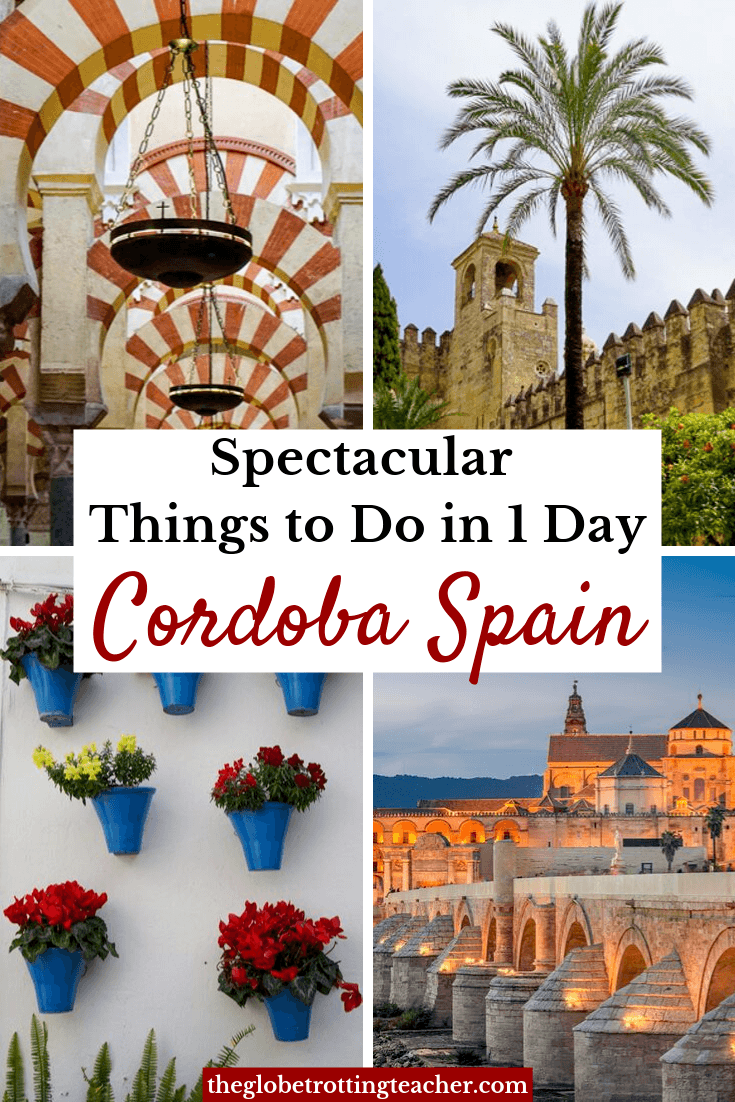
Cordoba Spain has been a Roman outpost, an Arab capital, and a city eventually conquered by the Catholic Kingdom of Castile in the 1200s. Throughout Cordoba and southern Spain’s Andalusia region, the blending of these cultures and religions reveals itself in the architecture, the artwork, and the traditional dishes served across the area.
Cordoba’s ancient city embodies this cross-culture mix from the moment you see the walled city, the Roman Bridge, and of course, its treasured Mezquita. Whether you stay in Cordoba or somewhere else nearby, this spectacular historic city is not to be overlooked! It’s a must for any Andalusia itinerary.
Boasting 4 World Heritage Sites (more than Rome or Paris !), the city and its long history are well worth your time and effort.
Where is Cordoba Spain?
Cordoba is in southern Spain’s Andalusia region, 88 miles northwest of Seville and 245 miles south of Madrid by car. Other popular cities like Malaga , Ronda , and Granada are also about 2 hours away by car.
How to Get from Seville to Cordoba
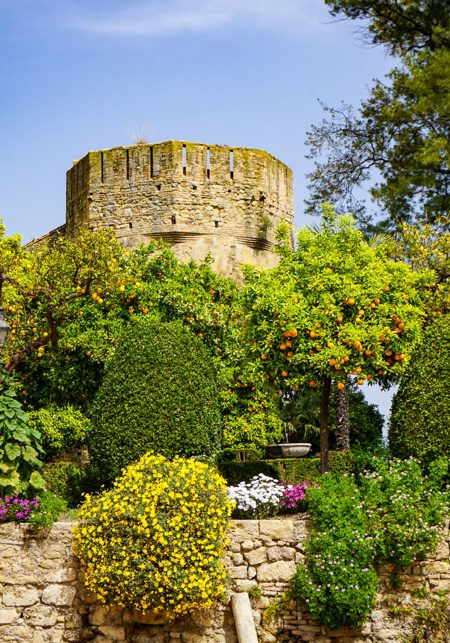
Many visitors choose to visit Cordoba by taking a day trip from Seville because both cities are well-connected and relatively close to one another.
If you’re planning an Andalucia road trip and would like to drive from Seville to Cordoba, Spain’s A-4 highway is a direct route taking just 1 1/2 hours.
Parking in Cordoba is available outside the historic center in several well-marked lots. Look for parking lot signs as you enter the city and try to be just outside the historic center or on the other side of the Roman bridge for an easy walk to the main Cordoba attractions.
It’s also possible to go from Seville to Cordoba by train . Numerous trains depart throughout the day and take about 45 minutes. Taxis from the station in Cordoba are available to bring you closer to the old city or you can make the 20-minute walk.
Alternatively, you can take the Seville to Cordoba bus . The buses depart from Plaza de Armas and take about 2 hours to reach Cordoba. The bus station in Cordoba is just across from the train station.
You could also choose a Seville to Cordoba day tour if you’d prefer to go with a guide.
No matter how you decide to visit Cordoba, you’re sure to fall in love with this one-of-a-kind city!
What to See in Cordoba
1. marvel at the mezquita – mosque-cathedral..
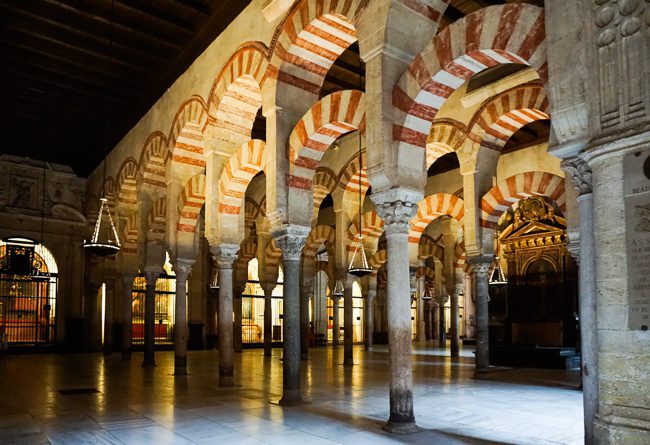
The Mezquita Mosque-Cathedral is Cordoba’s most famous sight. It was originally built as a Mosque in the 700s when Cordoba and many towns, in what is now southern Spain’s Andalusia region, were under Islamic control.
After hundreds of years as an Arab capital, the Christians seized control of Cordoba and brought Christianity to the region. As a result, the Mosque was Christianized in the Middle Ages, and eventually, converted into a Cathedral. Today, the Mezquita is a UNESCO World Heritage Site and a cornerstone of Cordoba history.
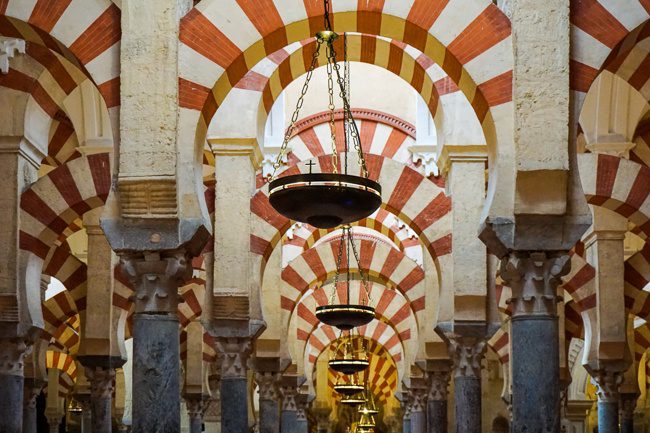
The Moorish architecture is evident from your first glimpses of the building’s exterior. As you enter the courtyard and finally the inside, the mix of architecture from this combination of cultures reveals itself from the red and cream striped Moorish arches to the Gothic and Renaissance influences predominant in the altars and side chapels.
Seville’s Alcazar and Granda’s Alhambra attract more attention, but the Mezquita in Cordoba is an absolute show-stopper! It took my breath away and I’m betting the same will happen when you visit, too.
If you’re spending just the day in Cordoba, consider a Mezquita tour with an official guide. You’ll skip the line and learn about the history to get the most from your visit. Plus, you’re free to explore on your own once the tour is over. Otherwise, get your Mezquite tickets when you arrive.
2. Admire the Alcazar de Los Reyes Cristianos.
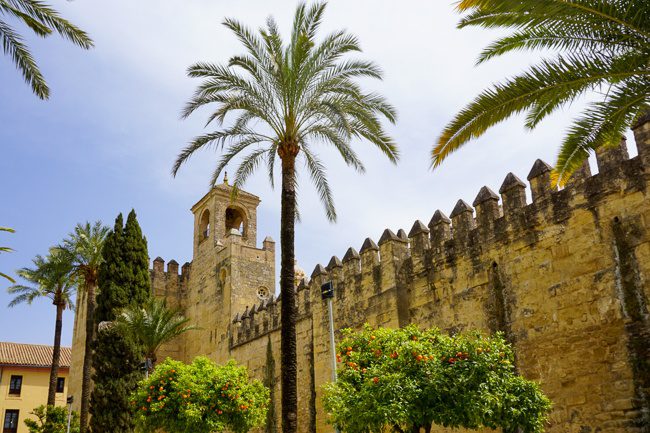
Just a few blocks away from the Mezquita sits the Alcazar de Los Reyes Cristianos or Palace of the Christian Kings. This palace was built in the 1300s as a fortress and later used as a residence by Queen Isabella and King Ferdinand as they set out to defeat the last remaining Moorish states in southern Spain. Today, it’s one of Cordoba’s proud UNESCO World Heritage Sites.
Inside the castle, just its structure remains. However, there are spectacular 4th-century Roman frescoes, discovered in the 1950s, on display, that were originally part of the city’s Roman Circus. You can also climb the tower for a sweeping view of Cordoba and the palace gardens.
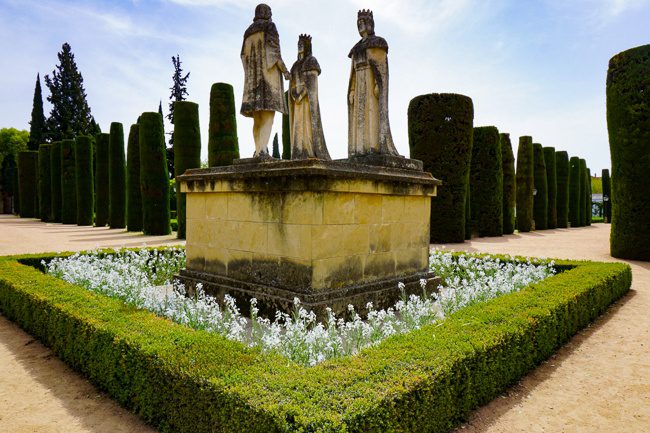
After exploring the inside, take some time to stroll through the gardens, which include greens mixed with colorful flowers and orange trees. The peaceful landscape grows alongside shallow, rectangular fountain pools. Peeking out in between the shrubs and along the garden paths, catch the eye of the solemn monarch garden statues.
3. Wander through La Juderia in Cordoba.
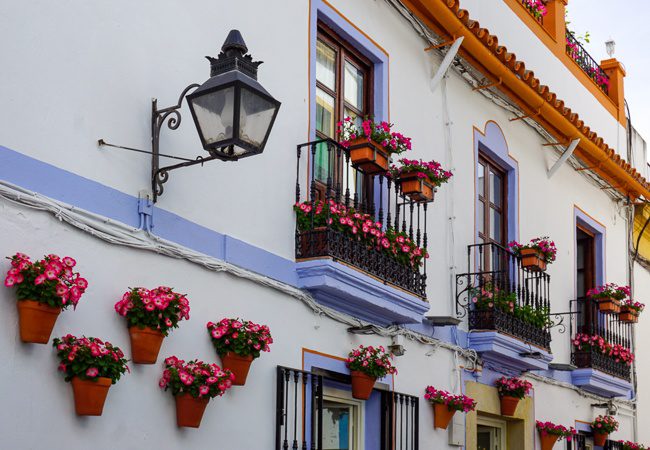
La Juderia is the old Jewish Quarter in Cordoba, which is also home to some of the city’s most historic sights like the Mosque-Cathedral, the Palace of the Christian Kings, and the only Jewish Synagogue in all of Andalusia. The entire neighborhood is a UNESCO World Heritage Site.
In this part of Cordoba, the streets are narrow and the buildings white-washed except for the signature hanging pots and colorful window box displays with flowers of all colors. The streets are lined with shops, some touristy and some selling authentic leather and tile, while restaurants with mosaic and flower courtyards lure you in with smells of rosemary, saffron, fresh vegetables, meats, and fish.
Wander on your own or choose a guided walk to learn about the history of this ancient city center. It’s one of the top things to do in Cordoba.
4. Walk through the Almodovar Gate.
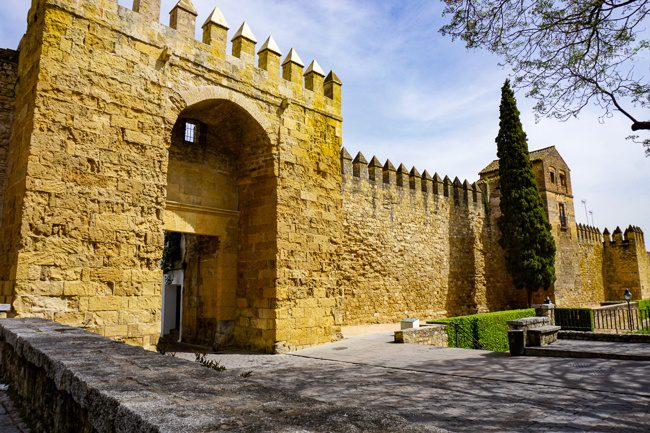
No matter how you enter Cordoba, be sure to see the Almodovar Gate as you wander through the old town. This is Cordoba’s best-preserved Moorish city gate dating back to the 14th century and leads into La Juderia. Along with the ramparts, it was part of the city’s defense system just as with the city walls further south in Tarifa Spain .
The Almodovar Gateway into La Juderia is included in the UNESCO World Heritage recognition of the city’s historic center.
5. Uncover ancient ruins at Medina Azahara.
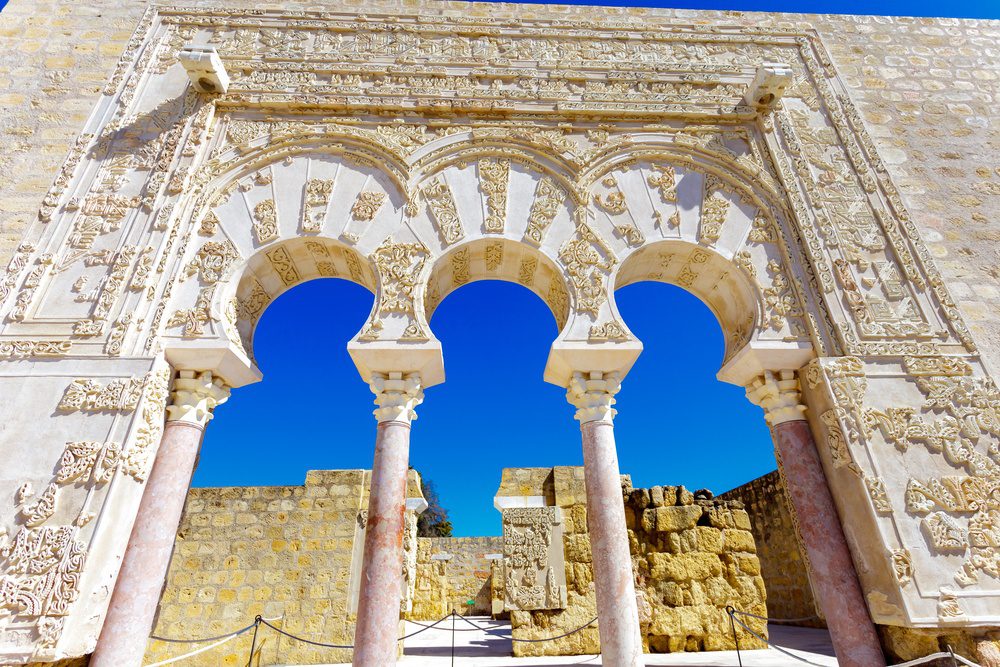
Located about 5 miles west of Cordoba, Medina Azahara is the city’s newest (and 4th!) UNESCO World Heritage Site. This Caliphate City was built during the mid 900s by Abd-ar-Rahman III to display the power and strength of his kingdom. During this time, Cordoba was the Muslim Capital in Europe.
This Caliphate City was sacked after only 70 years when a Civil War broke out. The site was just rediscovered in the 20th century and, as a result, it’s been only minimally excavated. The history shows it had 3 levels, with a palace in the middle, and perhaps as many as 10,000 people lived and worked here.
If you have a car, visit Medina Azahara before or after your time in Cordoba. You’ll need to park your car at the Museum reception center and take the shuttle bus from there to the archaeological site. The shuttle bus runs every 15-20 minutes. Just be sure to get your ticket to the ruins in the museum first and have some Euros to pay for the shuttle bus to the site.
There are also Medina Azahara guided tours that depart from Cordoba. In addition to a guide to help you better understand the site, the tours include roundtrip transportation from Cordoba and roundtrip shuttle bus access to the ruins.
The Cordoba Tourism Office also organizes roundtrip bus and shuttle transfers from Cordoba. However, tickets must be purchased in advance and the visit is independent without a guide. These buses keep a tight schedule so it’s important to be on time or else you could miss the bus as it leaves from or returns to the city.
6. Check out the view from Calleja de las Flores, Flower Street.
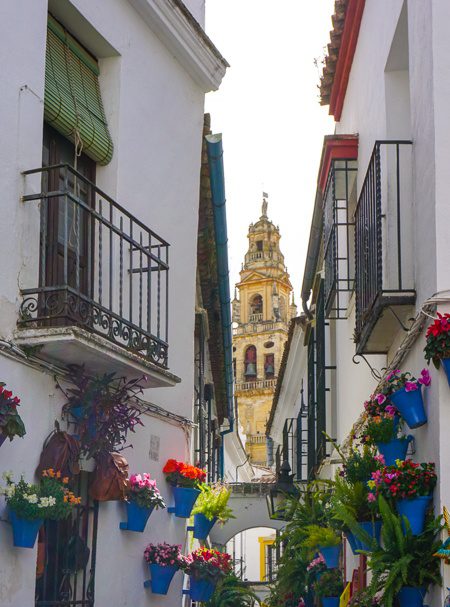
As you wander the narrow streets of Cordoba’s ancient city, make a quick stop to see Calleja de las Flores. It’s more alleyway than street, but it’s lined with Cordoba’s signature hanging potted flowers along the walls of the homes and shops. (If you’re also visiting some of Andalucia’s white villages , the hanging flowerpots in Cordoba are a preview of what’s to come!)
Once you’re there, walk to the back and look toward the Cathedral for a steeple view in the background. Knowing you’ll see the Cathedral is also helpful because the street is so tiny it can be tricky to find on a map.
You could also include this Cordoba stop while on a private walking tour to help separate yourself from the larger crowds.
7. Photograph the Puerta del Puente.
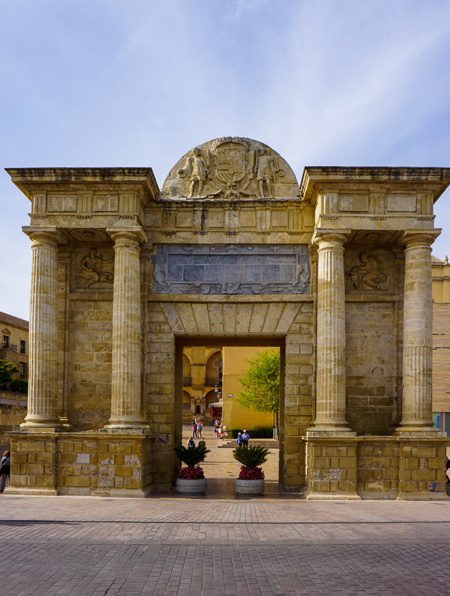
This city gate was rebuilt in the late 1500s to replace another gate that was in poor shape. Previously, the location was the place of both Moorish and Roman gates. If you stand behind the Puerta del Puente, it’s possible to get a photo looking through the archway and onto the Roman Bridge.
8. Walk across the Roman Bridge.
Originally built in the 1st century B.C by the Romans, this bridge still stretches across the Guadalquivir River and into Cordoba’s historic center. The bridge has undergone several changes and restorations over its long history. When you visit today, you’re mostly looking at the changes made by the Moors in the 8th century.
Some visitors who drive to Cordoba park on the other side of the bridge and walk into the old city by crossing the bridge on foot. If you do this, stop by Cordoba’s Tourism Office in the square just behind the Puerta del Puente, or bridge gate, to grab a Cordoba tourist map of the town.
As the sunsets, walk across the bridge and look back onto the old city and the Mezquita for spectacular city views. Or join an evening walking tour to really see the city sparkle.
9. See the breathtaking views from the Calahorra Tower.
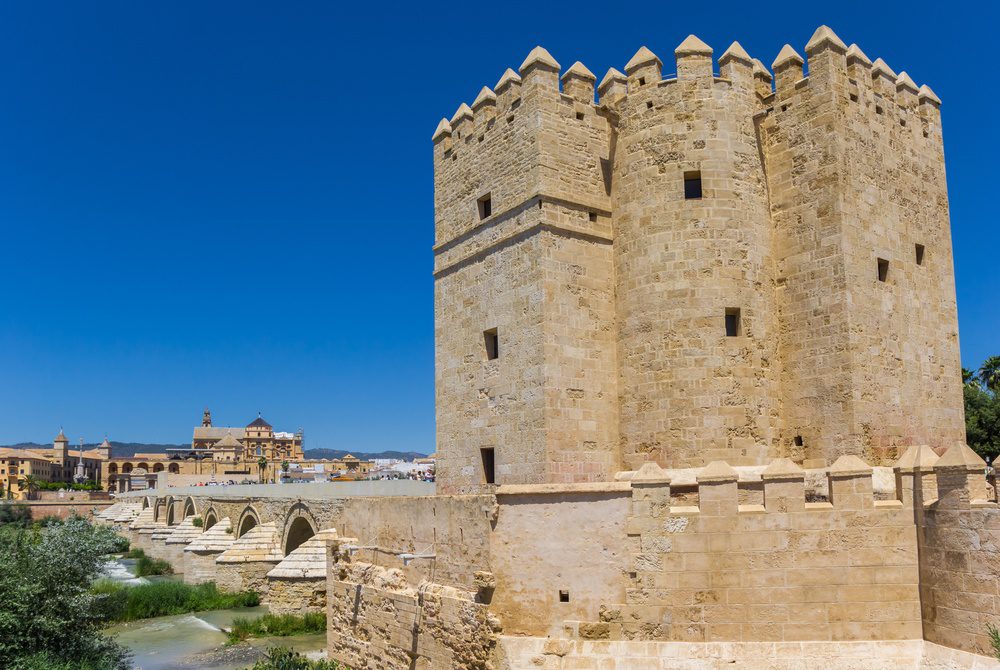
As you walk across the Roman Bridge, away from the historic center, you’ll see Calahorra Tower in front of you on the other end of the bridge. It was originally built as a defensive gate by the Moors and strengthened by the Christians in the 1300s when a third tower was added to the structure.
The tower has been named a National Monument and now holds a museum that tells about life in Cordoba during the 10th century when Muslim, Christian, and Jewish populations lived peacefully together.
Don’t miss the views from the rooftop! You can see ancient Cordoba and the Mosque-Cathedral as you look back towards the city.
10. Discover Cordoba’s Patios.
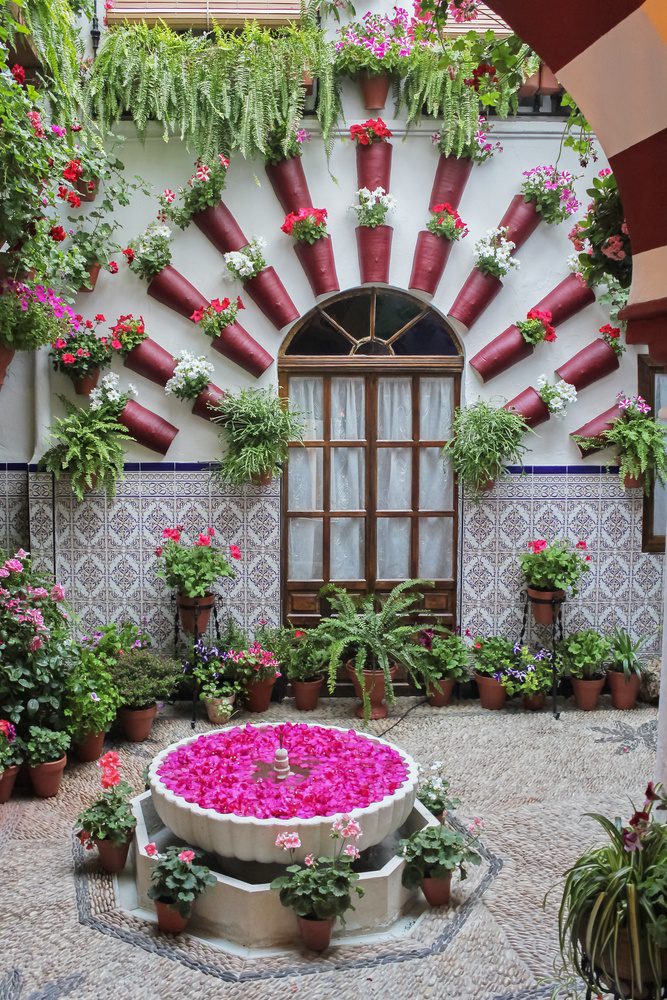
In addition to the hanging flower pots adorning the whitewashed walls around the old city, Cordoba’s gorgeous interior patios are tucked away and mostly, out of sight from visitors.
Cordoba is one of the hottest places in Europe and these patios were designed to help residents from long ago and today keep cool during the hot summer months. The patios are decorated with plants and flowers, and typically some type of water element, to provide shade and cooling.
Lucky visitors who plan their Cordoba visit during the Patio Festival in May will be treated to about 50 patios which would normally be closed to the public. These patios participate in the Patio contest and are free to visit for a few hours just before the afternoon siesta and again in the evening. The Cordoba tourist office usually has a map of all the open patios, like this one from 2018.
If you’re not visiting Cordoba in May, consider a Patio tour to see 7-8 popular patios and courtyards around the city, as well as learn about this architectural feature that dates back to the Romans.
11. Tour the Palacio de Vianna.
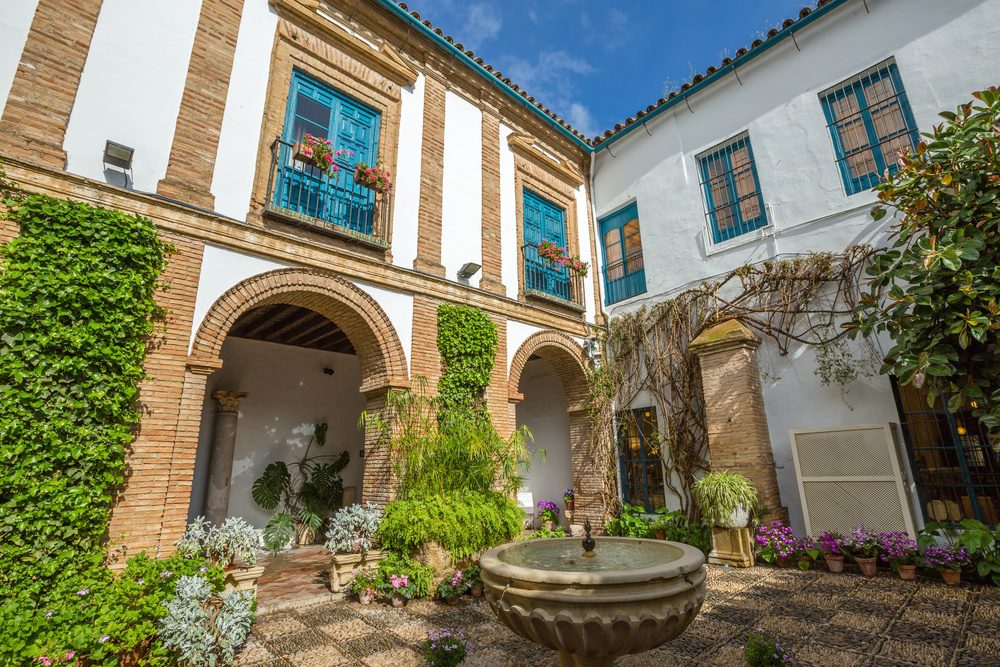
Palacio de Viana is a palace museum located about 15 minutes by foot from the Mezquita in a quieter area of Cordoba known as the Santa Marina neighborhood. The 15th-century palace was once a home for one of Cordoba’s upper-class families.
Even though the palace is lovely in its own right, the patios are what attract most visitors. Palacio de Viana has 12 different patio styles you can see year-round and at any time during museum hours. Information about each patio is available in English.
If you’d like to see the interior of the palace with its tapestries, mosaics, and tilework, you’ll need to join one of the museum’s guided tours. Or you can join a patios walking tour that includes the Palacio de Viana .
12. Taste Local Specialties.
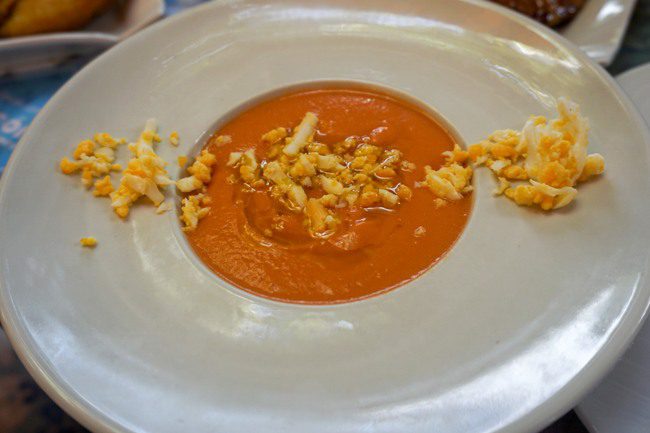
The number of restaurants in Cordoba Spain can’t top Seville’s astounding 4k+ tapas bars, but like Barcelona , the city certainly has no shortage of good eats. Locals pride themselves on using the best ingredients.
I had a fantastic lunch at El Rincon de Carmen , located in the heart of the old city. The patio restaurant is surrounded by greenery and decorated with hanging flower pots.
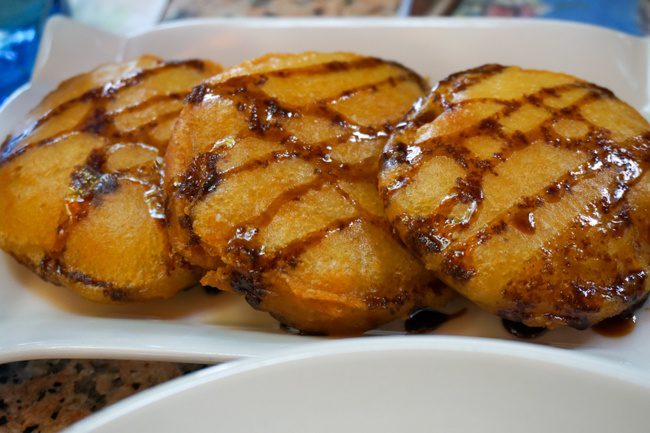
I recommend trying a bowl of salmorejo, a traditional Cordoba cold soup with a tomato base but creamier than gazpacho. It’s typically served with bits of ham or hard-boiled egg on top. Also, be sure to taste Cordoba’s mouth-watering deep-fried eggplant drizzled with honey. Both are local specialties!
Is Cordoba in a day enough time?
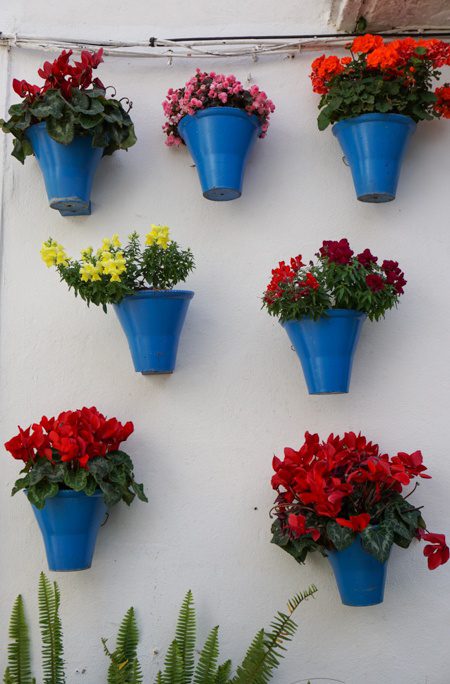
Cordoba makes for a great day trip from nearby places like Seville. With an early start and a full day, there’s no reason you can’t see many, if not all of the city’s historic and cultural gems. But for places farther off, like a day trip from Malaga , you’d likely not get the most from your visit given the travel time.
However, you could also plan to stay 1 night if you’re driving or traveling throughout the area. There are plenty of narrow streets to explore in the ancient city, as well as numerous shops, restaurants, and places to stay in Cordoba.
If your plan is to stay 1 day in Cordoba, focus on the city’s historic sights and the surrounding historic neighborhood. The Mosque-Cathedral, the Alcazar, the Roman Bridge, and a wander through the Jewish Quarter can be seen in the first half of the day.
Stop for lunch and be sure to order a bowl of salmorejo. Afterward, consider any parts of the Jewish Quarter you’d like to still explore or discover Cordoba’s treasured patios either on a tour or at the Palacio de Viana.
Depending on the time of year you visit, the Medina Azahara is open as late as 9 pm Tuesdays – Saturdays. You could make this your last stop on your way out of Cordoba, assuming you plan to drive back to Seville, for example.
Alternatively, you could spend 1 night in Cordoba and visit the Medina Azahara first thing in the morning before continuing your Andalusia road trip.
Hotels in Cordoba Spain
Wondering where to stay in Cordoba? The historic center is convenient to Cordoba tourist attractions, not to mention the most scenic.
The list below highlights a few of the best hotels in Cordoba.
Las Casas de La Juderia overlooks the Jewish Quarter and is just steps away from the Alcazar and the Mosque-Cathedral. The hotel is a restored historic home, which once was lived in by some of Cordoba’s most noble families. It’s a beautiful hotel with old town charm from the inner courtyards to the guest rooms! If you’re like me, you won’t want to leave!
Balcon de Cordoba boasts balconies and courtyards that both provide sweeping views over the old city and a peaceful retreat from the busy historic center. This traditional Andalusian home, over 400 years old and now converted into a hotel, blends architectural styles reflecting Cordoba’s multi-cultural history and has over 100 archaeological objects on display throughout the hotel.
NH Collection Amistad Cordoba is situated next to Cordoba’s 14th-century synagogue and is made from 2 palaces from the 18th century. The restored buildings respect the historic style while integrating modern touches like air conditioning for ultimate comfort.
What to do in Cordoba comes with a long list of possibilities! But each one reveals another layer of Cordoba’s past and exactly what makes it an unforgettable addition to your Spain itinerary.
Which things to do in Cordoba for 1 day do you have on your itinerary?
Like this post? Please share on social media using the share buttons below.
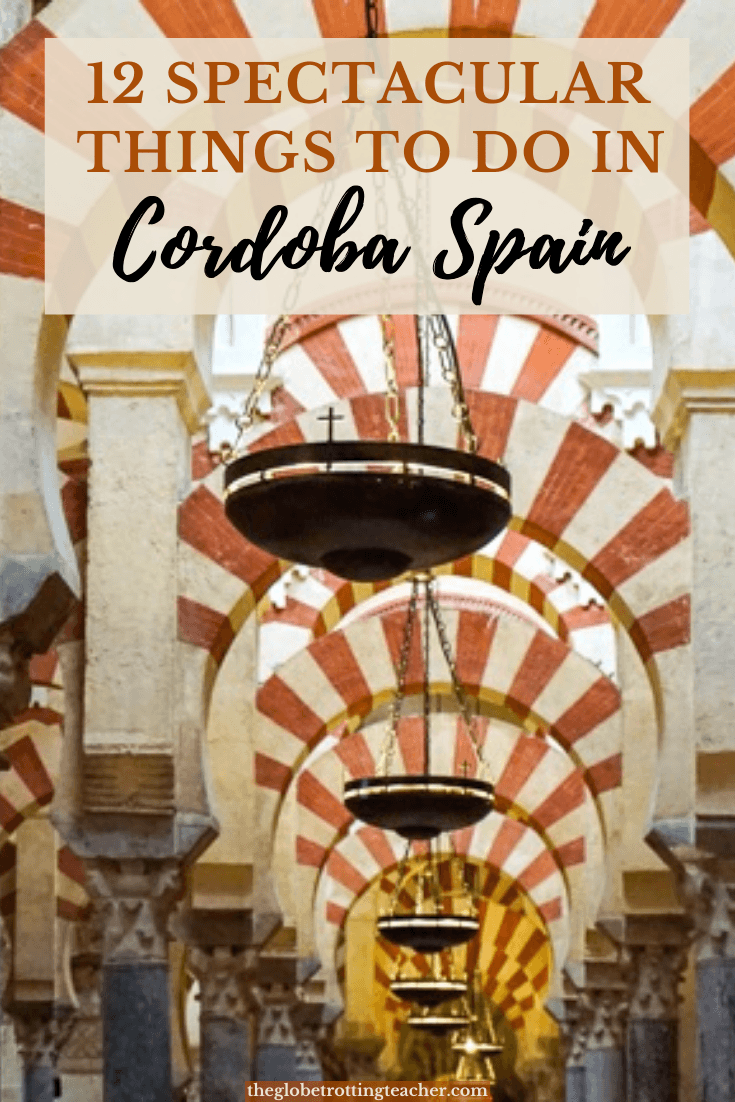
Your Trip Planning Checklist
- Search for flights with Skyscanner or Momondo .
- Get the best hotel rates with Booking.com and Hotels.com .
- World Nomads makes it easy to get a travel insurance quote for that amazing bucketlist trip you just booked!
- Get Your Guide is my go-to for tours, tickets, and experiences.
- Use my list of travel packing basics to make sure you have what you need for your trip.
- Check out my free miles & points course to learn how to travel for less/free.
- See my full list of travel resources on my resource page . These are what I've used to book travel over the years.
Related Posts

Why You Should Drive the Icefields Parkway + Trip Planning Tips

3 Reasons to Visit Banff National Park Immediately
2 thoughts on “12 spectacular things to do in cordoba spain”.
Your article on 12 Spectacular Things to do in Cordoba is FANTASTIC!!! So glad to have found you and your FB page. Will be traveling to this region of Spain in May and this will part of my handbook/bible of information! Thanks so much!!! A big fan!!!
Thanks for reading, Marina! Glad you found the blog, too! Hope you have a great time in Spain. Look for more articles coming soon, too. 😉
Leave a Comment Cancel Reply
Your email address will not be published. Required fields are marked *
Save my name, email, and website in this browser for the next time I comment.
This site uses Akismet to reduce spam. Learn how your comment data is processed .
Privacy Overview

Cordoba Spain
Travel & Holiday Guide
Cordoba Spain Visitor & Tourist Information
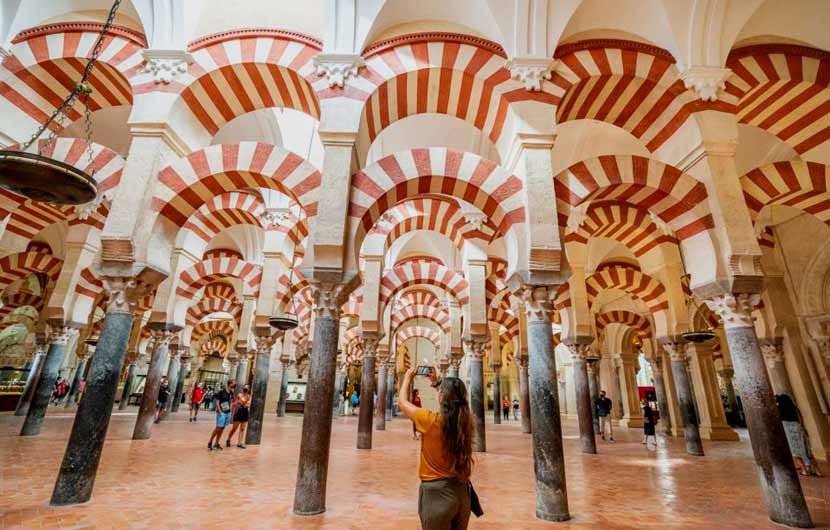
Cordoba Spain is a beautiful city steeped in history, culture, and architectural marvels.
Situated in the heart of Andalusia , this enchanting city in southern Spain offers a unique blend of Roman, Moorish, and Christian influences, creating a captivating atmosphere that will leave you mesmerised.
One of the must-visit attractions in Cordoba is the magnificent Mezquita Cathedral, a UNESCO World Heritage site . This architectural wonder is a symbol of the city's rich history and religious tolerance. When you step inside you will the incredible forest of arches and the stunning mihrab, which showcases the exquisite craftsmanship of the Islamic era. The cathedral within the mosque adds another layer of beauty to this iconic landmark.
As you explore the winding streets of the historic center, you'll encounter the charming Jewish Quarter, known as Judería. Lose yourself in the narrow alleys adorned with colourful flowers and discover the intricate network of courtyards, known as patios. This area is also home to the Synagogue of Cordoba, one of the few preserved synagogues in Spain.
No visit to Cordoba would be complete without strolling along the Roman Bridge, a picturesque bridge that spans the Guadalquivir River. Take in the breathtaking views of the city skyline and the Mezquita Cathedral as you cross this ancient structure.
For a glimpse into Cordoba's royal past, visit the Alcazar de Los Reyes Cristianos. This fortified palace boasts stunning gardens, beautiful courtyards, and impressive architecture. Explore the lush gardens and enjoy the peaceful ambience while learning about the history of the Alcazar.
When it comes to cuisine, Cordoba is known for its delicious tapas and traditional dishes. Indulge in local specialities such as salmorejo, a refreshing cold tomato soup, and flamenquin, a breaded and fried pork roll. Make sure to sample the mouthwatering pastries and desserts, such as the famous pastel Cordobes, a sweet pastry filled with pumpkin.
Cordoba also hosts the Colourful Patio Festival , an annual event that attracts visitors from around the world. During this festival week, locals open their beautiful patios to the public, showcasing stunning displays of flowers and offering a glimpse into Cordoba's architectural heritage.
25 Top Places To Visit in Cordoba

- Mezquita-Catedral : Explore the stunning mosque-cathedral, a masterpiece of Islamic and Christian architecture.
- Alcazar de los Reyes Cristianos: Visit this historic palace with beautiful gardens and panoramic views of the city.
- Roman Bridge: Walk across the iconic bridge and enjoy picturesque views of the Guadalquivir River.
- Medina Azahara: Discover the remains of a magnificent Moorish city, showcasing the grandeur of the past.
- Jewish Quarter (Judería): Wander through its narrow streets, visit the Synagogue, and soak up the atmosphere.
- Calleja de Las Flores: Stroll along this charming alleyway adorned with colourful flowers.
- Patio Festival: Experience the beauty of Cordoba's patios during this annual event in May.
- Palacio de Viana : Explore the 14 courtyards of this stunning Renaissance palace.
- Roman Temple: Marvel at the remnants of a Roman temple dating back to the 1st century.
- Archaeological Museum: Learn about Cordoba's history through its extensive collection of artefacts.
- Medina Azahara Museum : Discover the history and artefacts found in the Medina Azahara archaeological site.
- Royal Stables: Visit this equestrian centre to learn about Andalusian horse breeding and enjoy a horse show.
- Tendillas Square: Relax in one of the city's central squares, surrounded by shops and cafes.
- Museum of Fine Arts: Admire a vast collection of Spanish paintings from the 14th to 20th centuries.
- Almodovar Gate: Take a walk through this ancient city gate, part of Cordoba's defensive walls.
- Plaza de la Corredera: Enjoy the lively atmosphere of this historic square and try some local cuisine.
- Guadalquivir River Cruise: Take a boat ride along the river and enjoy the city from a different perspective.
- Mercado Victoria: Indulge in delicious tapas and local products at this vibrant gourmet market.
- Alcazar Viejo: Explore this neighbourhood filled with narrow streets, charming squares, and local taverns.
- Medina Azahara Visitor Center: Learn about the history and significance of Medina Azahara before visiting the site.
- Calahorra Tower: Discover the history of the city at this fortified tower, which now houses a museum.
- Bullfighting Museum: Gain insight into Spain's bullfighting tradition at this museum located in the bullring.
- Arab Baths : Experience the tranquillity of the traditional Arab baths and enjoy a relaxing spa treatment.
- Capuchin Convent: Visit this beautiful convent and admire its architecture and serene atmosphere.
- Cordoba Botanical Garden : Escape the city and explore a diverse collection of plants and flowers in this peaceful oasis.
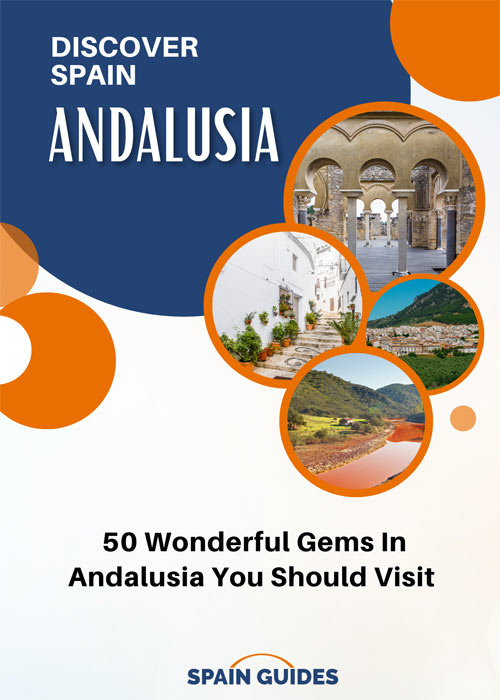
DOWNLOAD FREE e-GUIDES
Join Today and Get Access to Exclusive FREE Content, Travel Tips and downloadable e-Guides
SIGN UP HERE
5 Interesting Facts about Cordoba

- The city has over 2.000 years of history.
- The Great Mosque-Cathedral was built in the 8th Century.
- At one time Cordoba was the largest city in the world.
- Cordoba is the birthplace of the Roman philosopher Seneca.
- The region is home to the world's largest olive plantations.
The Top Attractions in Cordoba Spain
The mosque-cathedral of cordoba.

Cordoba Spain was the former capital of Moorish Spain, when Ruler Abd ar-Rahman II began the construction of Cordoba’s Great Mosque , La Mezquita, as an alternative to Mecca. It dates back to the 900's and is certainly one of Spain's cultural wonders.
It is home to around 850 columns, the great hall, and gilded calligraphy. It is written that the Mezquita contains an original Quran and the bones from the arm of the ancient prophet; it is one of the most sanctified places on earth.
Visitors to the Mezquita enter through the Patio de Los Naranjos, a classic Islamic courtyard with orange trees and fountains, used for ritual purification before praying.
Retaken from the Moors in 1236, the Christian Kings added a number of chapels and a new nave added in the 1500s.
Alcazar de los Reyes Cristianos
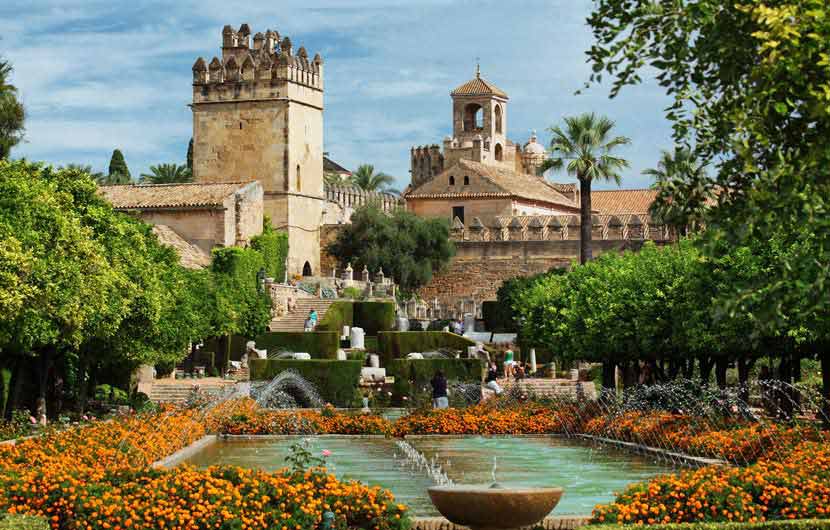
This fasinating historic site has a long and interesting history.
Visitors are treated to picturesque gardens, courtyards, Arab baths and one of the largest libraries in Europe and the impressive Albolafia waterwheel.
Once the site of Visigothic fortress it was taken by the Umayyad Caliphate. It fell to the Christian forces in the 13th century and became a palace.
For 300 years it was one of the principal courts of the Spanish inquisition.
For further information and tickets visit the official Alcazar de Los Cristianos website .
The Courtyards & Patio Festival

Cordoba Spain is home to the famous courtyards festival that is held during the first two weeks of May and is where locals open up their colourful courtyards and patios to visitors.
The courtyards are full of late spring flowers offering an explosion of colours and smells.
Patios and courtyards can be found all around the city although the main areas include the Alcázar Viejo district, between the Alcázar and the parish of San Basilio. They can also be seen close to the Church of San Lorenzo. La Magdalena, the Mosque-Cathedral and the old Jewish quarter.
The town hall organises competitions for the best courtyards dating back to 1921.
The Roman Bridge
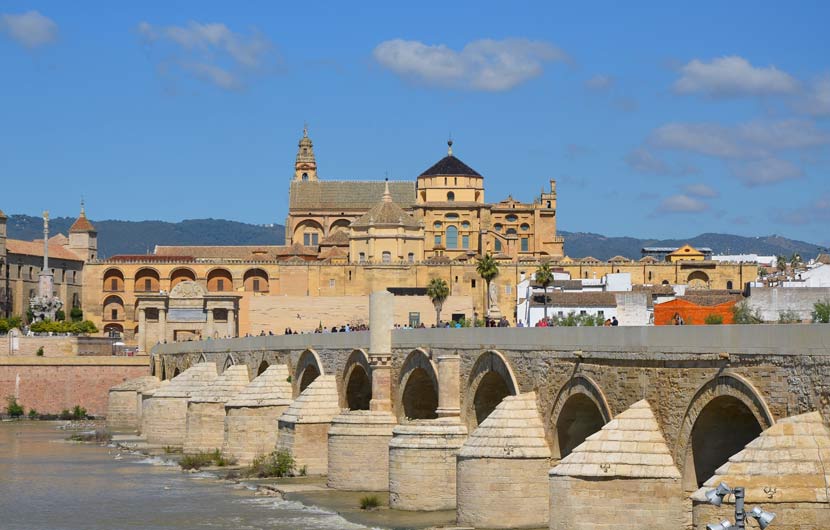
One of the most iconic sites you will see in Cordoba Spain is the Augustin Roman Bridge which crosses the Guadalquivir River.
Although the bridge dates back to the 1st century the structure is completely medieval.
With 16 arches and impressive views of the city as you cross the bridge, a great opportunity to get those perfect holiday snapshots.
This impressive bridge played a starring role in season 5 of the Game of Thrones tv series.
Plaza de la Corredera

After a long day of visiting Cordoba's historic sites head off to the city's main square, the Plaza de la Corredera.
The square has been used for numerous different events in the past including bullfighting and the city's food market. It is now often used to host local festivals and concerts and of course, is one of the main meeting points for local residents.
Built in the late 1600's this impressive plaza is a perfect place to chill out and enjoy the surroundings.
Calahorra Tower

The Calahorra Tower was built in the 13th Century by the Almohad Caliphate to guard the southern entrance of the Roman bridge.
It was reinforced by Henry II during the 14th century, a design that you see today.
In the past, the tower has served as a prison and even a girls' school.
The tower is well worth visiting and is home to a museum that offers 3D presentations of the city.
For further information and tickets visit the official Calahorra Tower Museum website .
Historic City Centre & Jewish Quarter
Cordoba has one of the largest old towns in Spain and is a great place to simply stroll around and take in the atmosphere.
Visitors can admire the picturesque courtyards, typical homes, and local architecture plus stop off at one of the many small tapas bars.
North of the Mezquita lies the Juderia, Cordoba’s old Jewish quarter, an important world centre of Jewish culture in the Spanish Middle Ages.
The area remains largely unchanged and is packed with narrow streets and white-painted limestone houses and photogenic overhanging balconies.
An important monument here is the old Synagogue, built-in 1492 and still standing on Calle Judio.
The gastronomy of Cordoba

Cordoba has a rich and diverse culinary scene that reflects the city's long history and cultural influences.
The city is renowned for its fresh, local ingredients, such as olives, olive oil, and citrus fruits, which are used to create dishes with unique flavours and textures.
One of the most famous local dishes in Cordoba is salmorejo, a cold tomato soup made with bread, garlic, olive oil, and vinegar. Other popular dishes include rabo de toro (oxtail stew), flamenquín (breaded pork or chicken filled with ham and cheese), and berenjenas fritas con miel (fried eggplant drizzled with honey).
Cordoba is also known for its sweet treats, including pastel Cordobés, a puff pastry filled with sweet potato and almonds, and polvorones, crumbly almond cookies.
If you are a foodie and love eating out, you are in luck as Cordoba has a thriving food scene that features contemporary takes on traditional cuisine.
The city offers all types of bars, restaurants, and small family eateries that offer innovative dishes with unexpected flavour combinations, as well as a myriad of amazing tapas bars that serve up small plates of local specialities.
If you enjoy browsing markets to buy your own produce then head off to the Mercado Victoria, a bustling food hall where vendors sell everything from fresh seafood to gourmet cheeses.
Weather warning for Cordoba
In July and August, it can be extremely hot with temperatures reaching over 40 degrees So if you are thinking of visiting the city during those months be prepared.
Our advice is to wear very light clothing, stay in the shade as much as possible, especially between the hours of 12 and 4 pm and always carry a bottle of fresh cold water. In these conditions, it is advisable to drink at least one litre of water every day.
Recommended Places To Stay In Cordoba
Hospes Palacio del Bailío : Immerse yourself in luxury at this five-star hotel set in a meticulously restored 16th-century palace. Hospes Palacio del Bailío offers a unique blend of Moorish and Andalusian architecture, featuring elegant courtyards and gardens. With lavish rooms and a spa, it's a tranquil oasis in the heart of Cordoba.
Eurostars Palace : Boasting a contemporary design, Eurostars Palace provides a sophisticated stay near Cordoba's major attractions. Its sleek architecture and panoramic views of the city create a modern ambience. The hotel's rooftop pool and terrace offer a perfect retreat after exploring Cordoba's historic sites.
NH Collection Amistad Cordoba : Nestled in the historic Jewish Quarter, this hotel seamlessly combines tradition and modernity. The NH Collection Amistad Cordoba features a blend of Moorish and Castilian influences in its design. With stylish rooms and proximity to landmarks like the Mezquita, it provides an enchanting base for exploring Cordoba's cultural richness.

Travel Smarter - Not Harder
Download free e-guides and travel tips.
Start your Journey today and get access to exclusive FREE content.
Disclosure: Please note that some of the links included in the above content may be affiliate links. We may earn a commission if you make a purchase at no extra cost to you. Rest assured, we only recommend products and services that we personally use or have used and are happy to recommend. Any commission we earn helps toward the site's running costs.
Username or Email Address
Remember Me
- WHY VISIT SPAIN?
- TRAVELLING TO SPAIN
- SPAIN ON A BUDGET
- TRAVEL REQUIREMENTS – ETIAS
- SPAIN ENTRY REQUIREMENTS
- SPANISH CUISINE
- SPANISH FOOD
- HOLIDAY IDEAS
- PUBLIC HOLIDAYS
- TOURISM BOARDS
- AIRPORT GUIDE
- DRIVING IN SPAIN
- WEATHER IN SPAIN
- FREE WEB CAMS
- BEST BEACHES SPAIN
- FESTIVALS & FIESTAS
- MUSEUMS IN SPAIN
- CAMPING IN SPAIN
- MARINAS IN SPAIN
- SKIING IN SPAIN
- WATER PARKS
- UNESCO WORLD HERITAGE SITES
- 80 BEST ATTRACTIONS
- 71 BEST PLACES TO VISIT
- REGIONS OF SPAIN
- COSTA DEL SOL
- CANARY ISLANDS
- SAN SEBASTIAN
- Complete List:
- SAGRADA FAMILIA BARCELONA
- BARCELONA FC STADIUM TOUR
- BARCELONA FLAMENCO SHOW
- SEVILLE FLAMENCO SHOW
- SEVILLE CATHEDRAL
- GAUDI`S CASA BATLLO
- THE ALHAMBRA GRANADA
- SANTIAGO CATHEDRAL
- CITY OF ARTS & SCIENCE VALENCIA
- MOSQUE-CATHEDRAL CORDOBA
- CAMINITO DEL REY
- PRADO MUSEUM MADRID
- REINA SOFIA ART MUSEUM
- SCUBA DIVING
- BEST TAPAS TOURS
- BEST WINE TASTING TOURS
- TOUR GUIDES
- HOTELS IN SPAIN
- LUXURY HOTELS
- LUXURY BEACH HOTELS
- HOLIDAY RENTALS
- PARADOR HOTELS
- CHEAP FLIGHTS
- TRAVEL INSURANCE
- FREE TRAVEL BROCHURES
- WIN FREE HOLIDAYS

or with email

The 20 Best Things To Do in Spain According To Locals
Updated September 19, 2023
With more than 3,500 miles of coastline, tens of islands, 17 regions, and a population of close to 50 million people who speak five unique languages, it should go without saying that there are countless possibilities of things to do in Spain: from lounging on beaches to indulging in incredible food to exploring architectural wonders. That’s why—with some help from locals—we’ve created this list of 20 things to do in Spain.
20 Best Things To Do in Spain
#1: go on a tapas crawl through madrid.

While in Spain you’re going to want to eat as many tapas—bite-sized samples of Spanish cuisine—as humanly possible. You'll find tapas throughout the country, but Madrid is one of the best places to fill up!
Locals note that it’s hard to find a more Spanish experience than going out for tapas. You can bar hop from place to place, snacking on delicious bites that are served with each beverage you order, and enjoy swigs of sangria until the sun comes up.
If Madrid is not on your itinerary, try Bilbao and San Sebastian where tapas are known as pintxos and are impossible to avoid and easy to fall in love with.
Local tip: Plaza Mayor , Madrid’s main square, is surrounded by some of the best bars in Madrid (as is the entire Sol neighborhood).
#2: Catch a Flamenco show in Seville
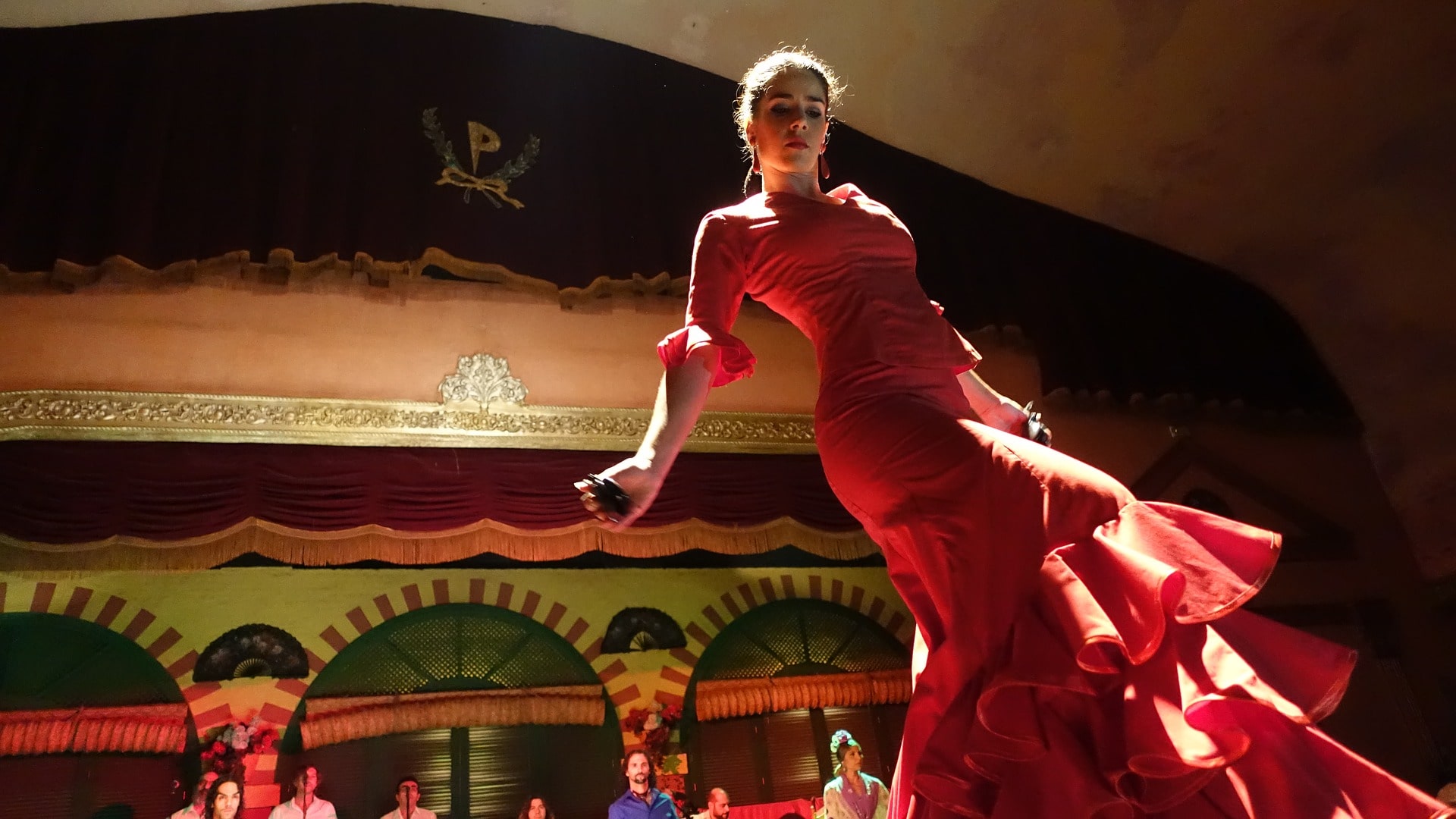
For a lively night that you’ll never forget, catch a Flamenco show in Seville. The capital of Spain’s Andalusia region, Seville is the place to enjoy this dynamic art form.
Featuring song, dance, and guitar, Flamenco developed over the centuries from the songs of Roma immigrants who made their way to Spain from northwest India. You’ll find tons of places in Seville with awesome, authentic flamenco, like the oh-so-cool Casa del Flamenco . If you want to fit in with the locals, don’t forget to yell “ole!” at the end of each set.
You can also catch an amazing Flamenco show at Corral de la Moreria in Madrid.
#3: Marvel at the fantasy of Gaudí's Park Güell
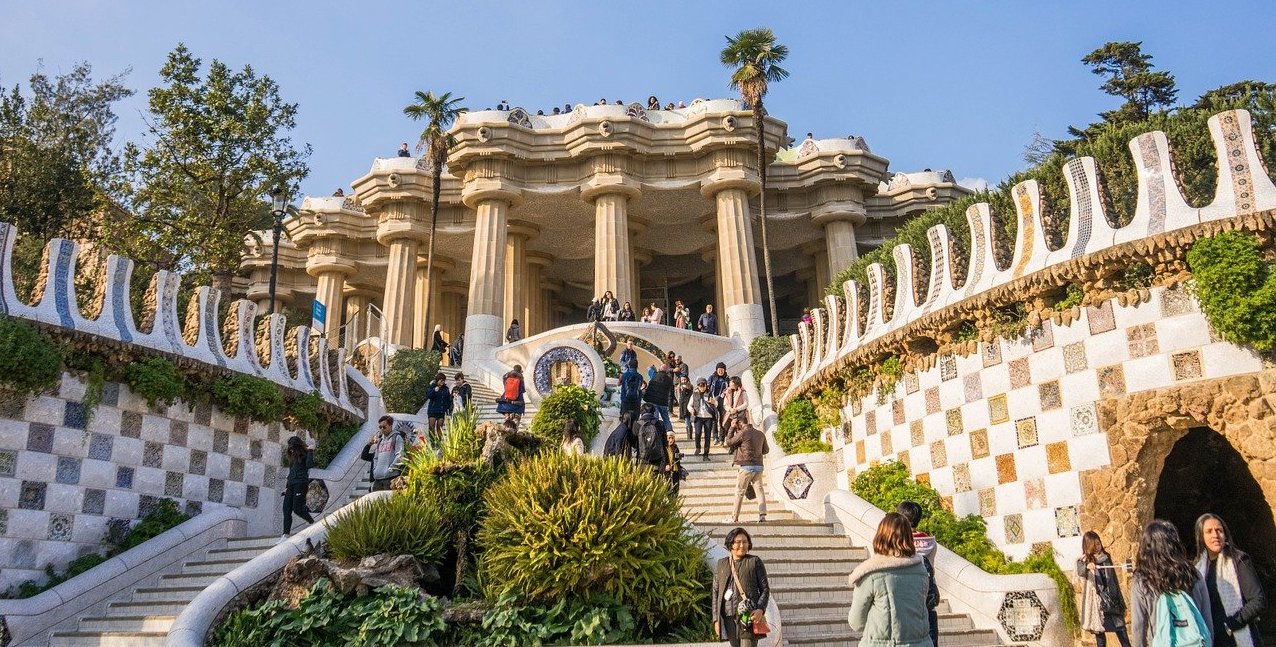
Barcelona’s Parque Güell , designed by iconic architect Antoni Gaudi, is packed with amazing gardens, vividly colorful buildings, and giant lizards guarding brilliant fountains. This 100-year-old UNESCO World Heritage Site is a local favorite and a totally unique attraction not only for Spain but for the entire world.
The park is big and to see it all you’ll find yourself walking a fair bit. It’s a good idea to get an early start to beat the crowds and the heat as well as to make sure you’re not rushed for time. Wear comfy shoes, bring water, and enjoy!
Local tip: When you buy a ticket for Park Güell, you get an admission time. If you miss that time by more than 30 minutes, you will not be allowed entry.
#4: See the amazing Moorish arches in Córdoba's ancient mosque
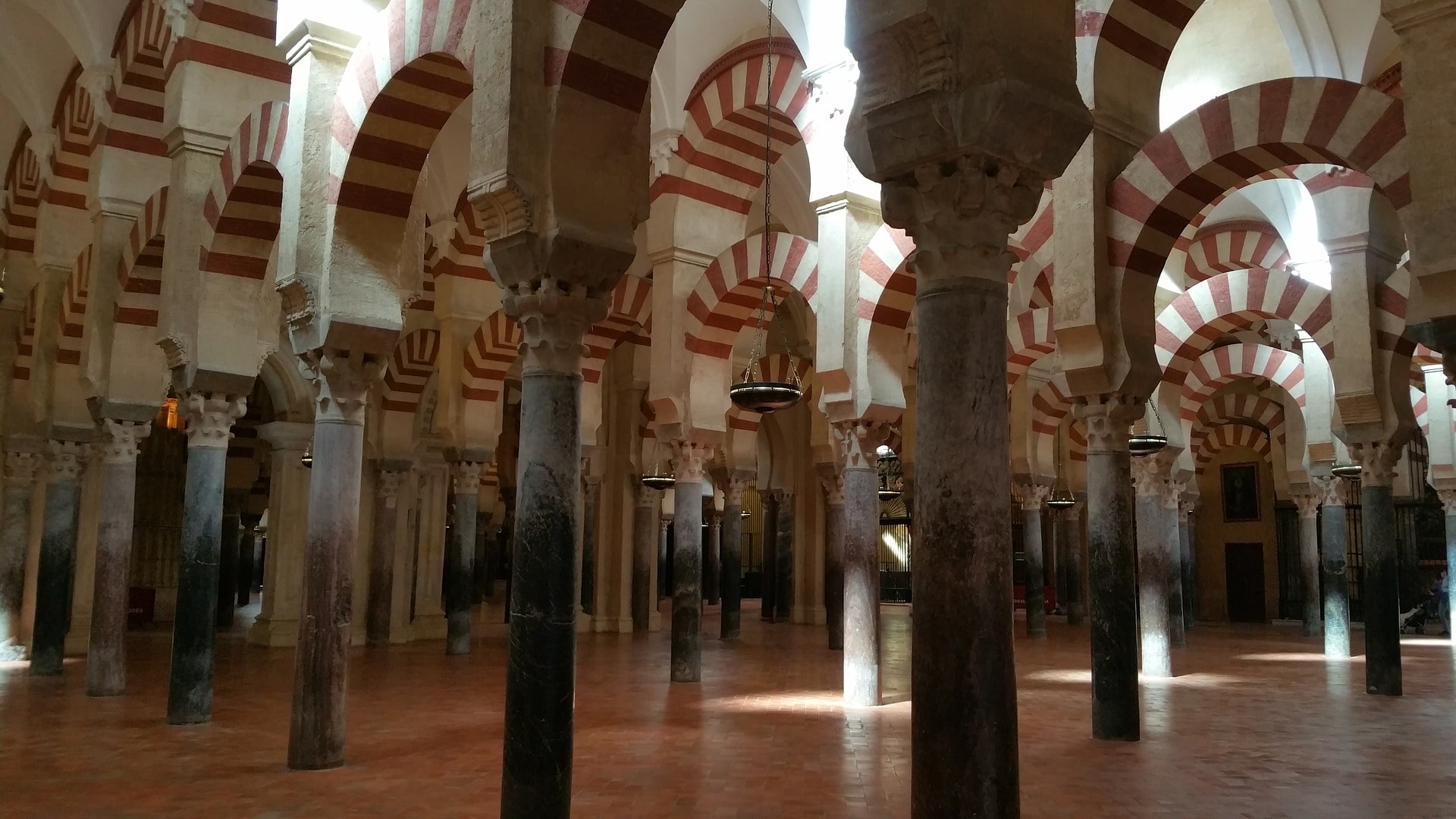
One of the most fascinating pieces of architecture in Spain’s southern region of Andalusia is the 10th-century Mezquita de Córdoba : aka the Mosque-Cathedral of Córdoba.
Originally built as the city’s main mosque under Moorish rule, this UNESCO World Heritage Site became a cathedral after the Catholic Reconquista. Its 850 Moorish pillars—topped with candy-cane-striped double arches and later Gothic additions—will make you feel like you're wandering in a stunning forest with layers of history. This symbol of the Islamic grandeur of Al-Andalus is beautiful and a total delight to explore.
While you’ll need a ticket to visit as a group no matter what, if you’re an individual you can actually enter on your own for free from 8:30-9:30 AM every morning.
Local tip: If you climb to the top of the bell tower, you’ll get a fabulous view of the city of Córdoba.
#5: Party at an amazing Spanish festival

Spain has a tradition of unique, exciting festivals, and you’ll find them all over the country year-round. Locals say that these are a few of the best and liveliest festivals held each year:
- La Ruta de la Tapas in Frigiliana. The town of Frigiliana throws a huge party at the end of August to celebrate its diversity through food, music, and art. The highlight of the festival is Ruta de la Tapas (Route of Tapas) where for only €2 each, you can take a tapas crawl through the town, sampling fare from local restaurants.
- La Tomatina in Buñol. Buñol hosts an epic food fight in August in which thousands flock to the tiny town for the Tomatina Tomato Fight. The actual tomato fight starts early in the morning, but arrive the night before and party in the streets with all of the locals in preparation for the big day.
- La Batalla de Vino in Haro. The Batalla de Vino (Battle of Wine) is a wild and crazy festival that takes place at the end of June in the village of Haro. Hordes of people flock to the wine-producing town to wage war—with wine! Spanish red wine from the famed Rioja region is squirted from sprayers and dumped by the bucketful onto the crowd. It’s also customary for party-goers to gather the night before the festival to celebrate in Haro’s alleyways.
#6: Wander through medieval Cáceres
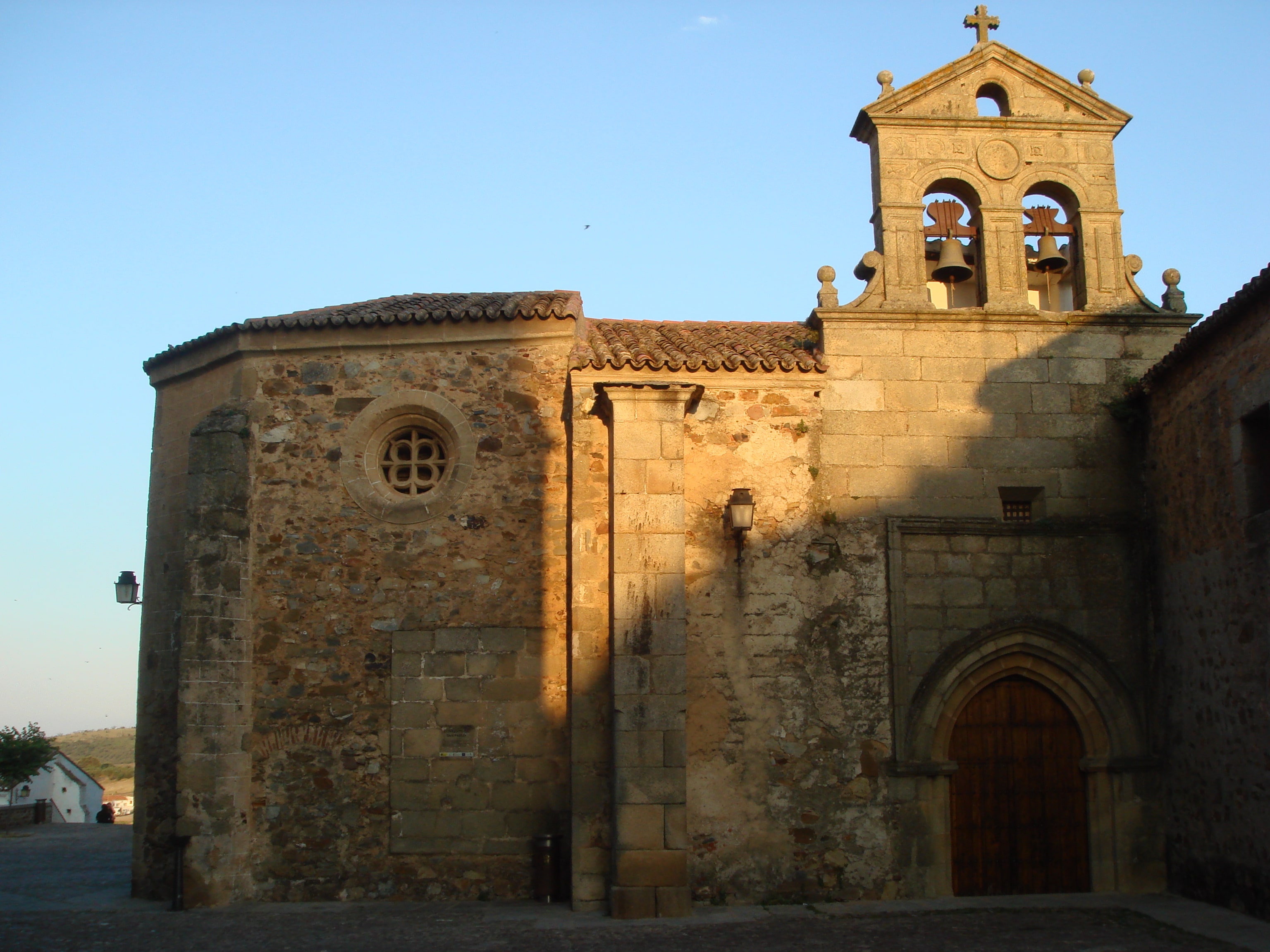
You won’t find huge crowds in the medieval town of Cáceres. This off-the-beaten-path frontier town in the Extremadura region hugs the border with Portugal and has an amazing story to tell.
The Old Town’s unique architecture has Roman, Islamic, and Italian influences; all of it is a relic of the many cultures who’ve called Cáceres home over the centuries. It’s hard not to be awed by the walled city’s archways, palaces, and towers.
Cáceres was also the site of many battles between the Moors and Christians during the Reconquista. And more recently it was the site of a different type of history being made: Cáceres is where many of the King’s Landing scenes in Game of Thrones were shot.
#7: Eat perfect paella in Valencia

It’s basically impossible to think that all paella isn’t delicious, but the paella in Valencia is next-level, out-of-this-world, amazing. Unsurprisingly, Valencia is actually where paella comes from!
Locals suggest ordering paella Valenciana to get a taste of the classic version of the dish. Made with different meats like chicken, rabbit, or duck, and mixed with beans and sometimes snails, it’s a sensation for the senses you won’t soon forget.
No one knows paella like someone from Valencia, so be sure to ask a Valencian local for their favorite spots.
#8: Have a meal at the world's oldest restaurant
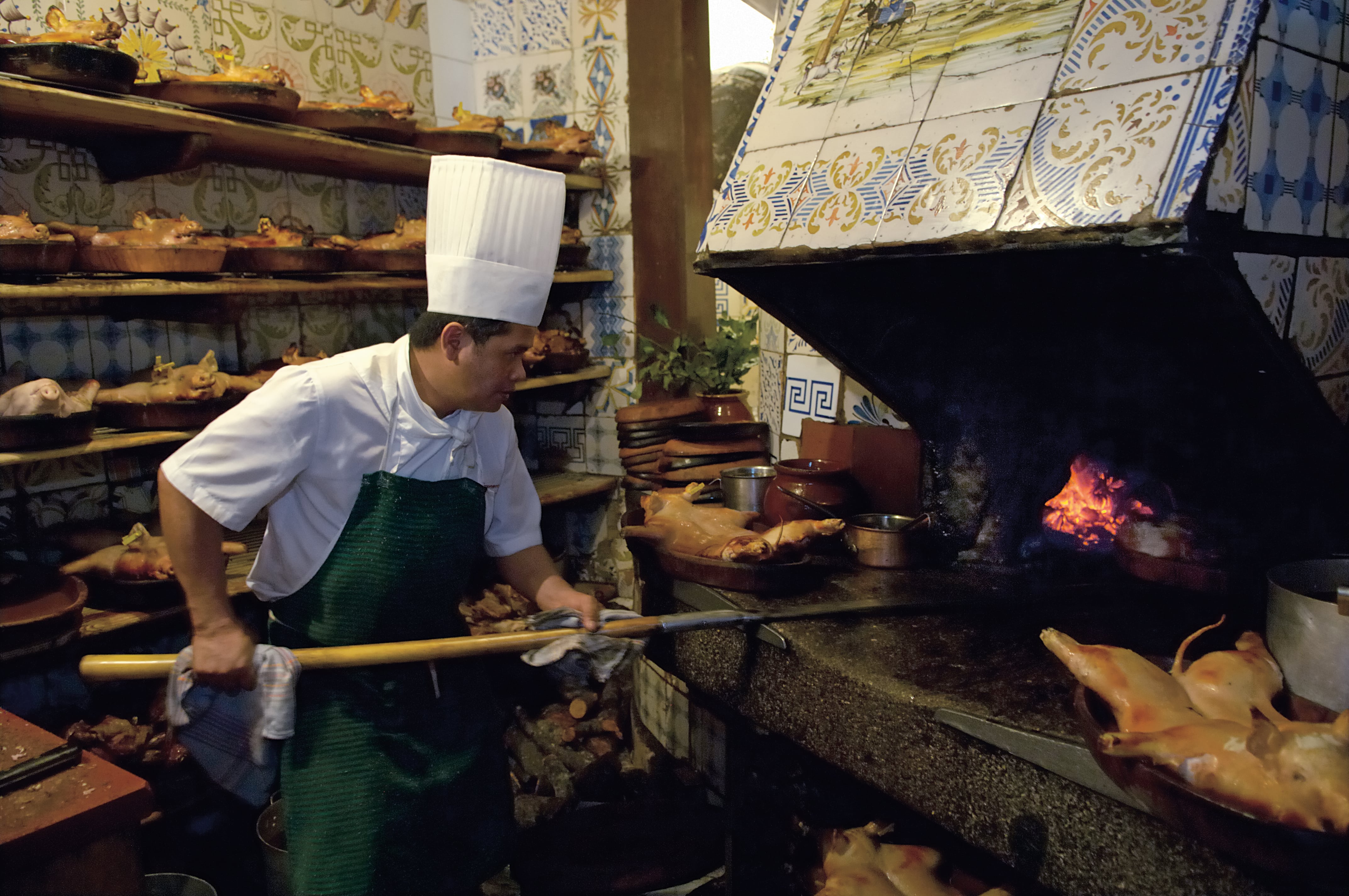
How would you like to have a meal where Goya was rumored to have washed dishes when he was young? That’s how old Botin is. It was established in 1725 on Madrid’s Calle Cava Baja and holds the Guinness World Record for the oldest restaurant in the world. It’s the delicious food that’s kept Botín in business for nearly 400 years. Try their signature dish: whole suckling pig stuffed with aromatics, doused with white wine, and then crisped in a wood-burning oven
Local tip: Ernest Hemingway invoked the restaurant in some of his most famous works: The Sun Also Rises and Death in the Afternoon . He also often mentioned Botin's roast pig in his fiction.
#9: Make a pilgrimage to Santiago de Compostela
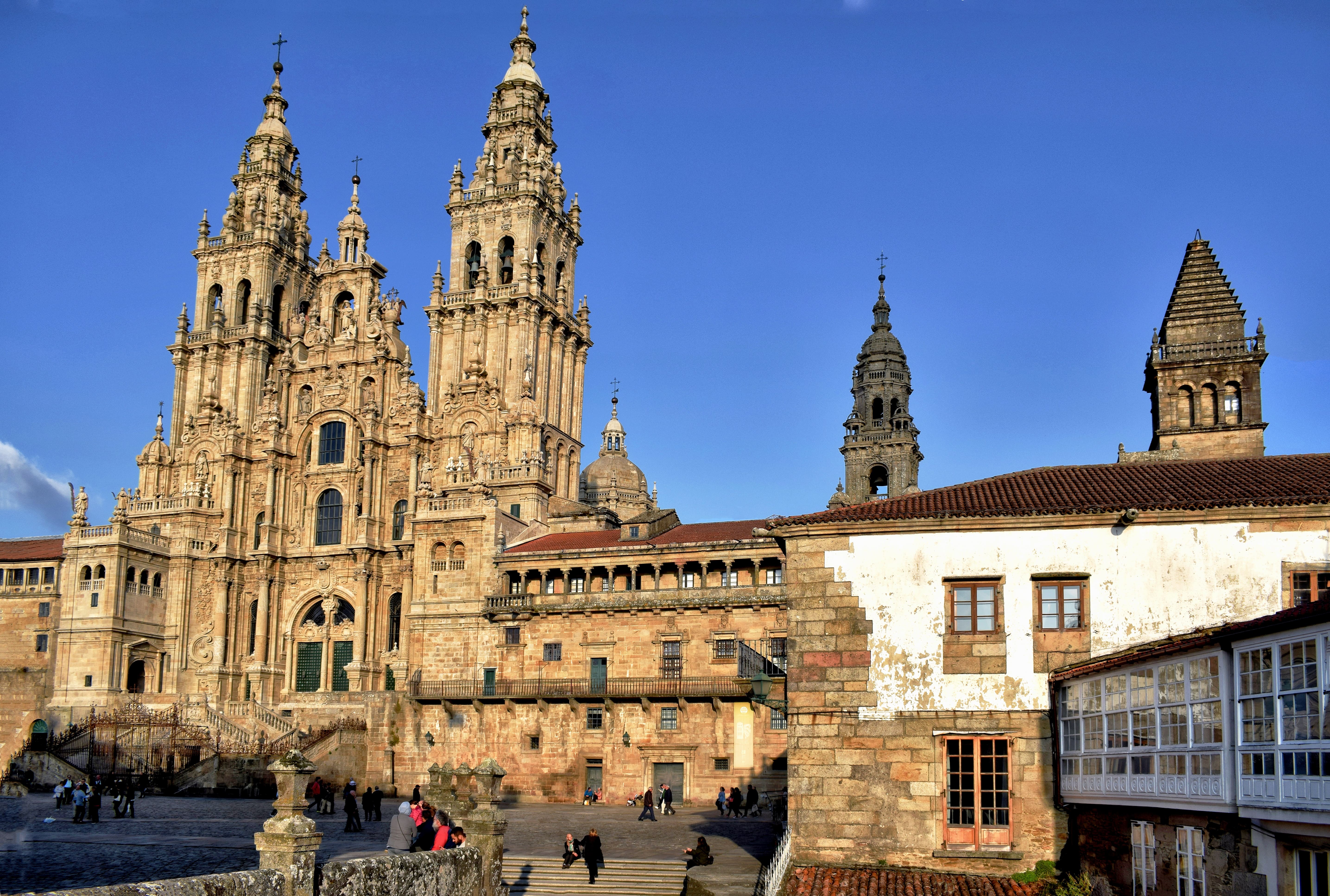
The Camino de Santiago pilgrimage route follows in the footsteps of the Apostle St. James. While there are now seven well-established Camino routes, some of which stretch as far as France and Portugal, the original route is believed to have been from Oviedo. Regardless, every route today ends at the tomb of St. James (Santiago in Spanish) at the Cathedral of Santiago de Compostela .
Whether you hike one of the many majestic trails that crisscross Northern Spain or just visit the town of Santiago de Compostela for the day, this amazing journey may just be one of the best experiences of your life—regardless of whether you are religious or not.
#10: Take in amazing art at the Guggenheim Museum Bilbao

If you’ve ever seen the Walt Disney Concert Hall in Los Angeles or the Museum of Pop Culture in Seattle, then you’ll recognize Frank Gehry’s architectural genius when you see it at the stunning Guggenheim Museum Bilbao .
The beauty of the sleek, angled, silver building is second only to the amazing collection of modern and contemporary art masterpieces it contains within its walls. The museum is especially beautiful when you see it reflected off of Bilbao’s sweeping waterfront.
#11: Discover the magnificence of La Sagrada Familia

Another one of Gaudí’s works that takes center stage in Barcelona is La Sagrada Familia, the iconic basilica that’s been under construction since the late 1800s. (But that doesn’t mean it hasn’t remained one of the places you must visit in Spain!) This fantasy world of stunning stained glass, “melting” columns, and mind-bending designs echoes Gaudí’s notion that the divine and the natural are inseparable.
This breathtaking Roman Catholic church is scheduled to become the tallest sacred site in Europe once it’s done, which is currently scheduled to be in 2026 and has been a long time coming. But at this rate, we’ll believe it when we see it!
Local tip: Use caution in crowded places like La Sagrada Familia that draw tourists. Barcelona is safe but beware of pickpockets.
#12: Get lost in the Moorish Halls of La Alhambra
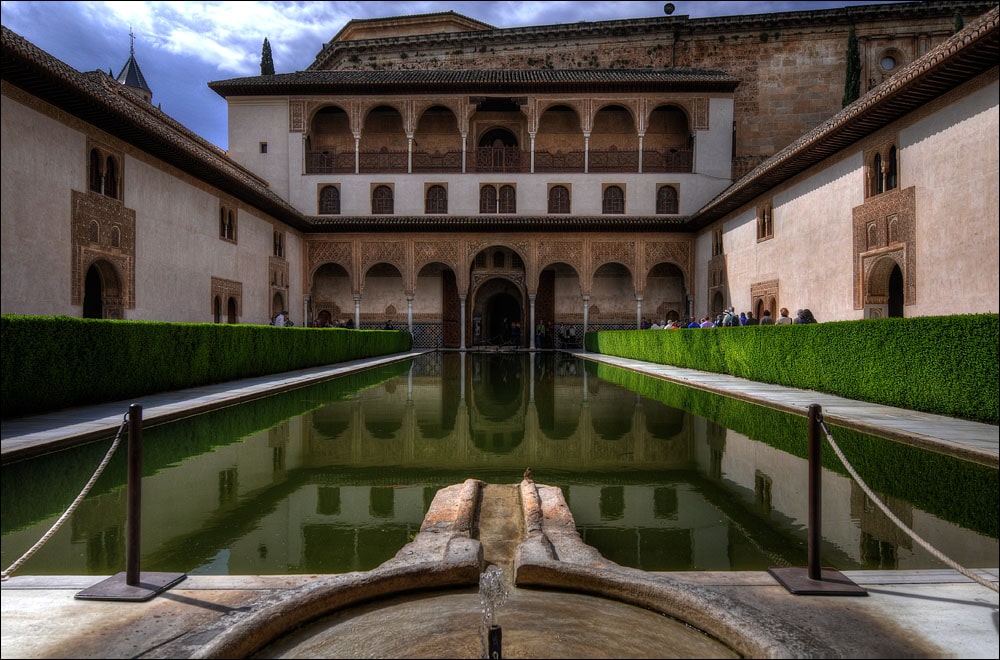
A trip to the hills of Granada will remind you of the impact that the Moors had in Iberia for 700 years. One of the most visible remnants of the Islamic influence on the Iberian Peninsula is the Alhambra Moorish fortress, a must-visit while in Spain.
This palace and fortress complex protected the city's inhabitants from invasion by the Christians during the last of the Muslim dynasties in Spain. You’ll feel like you’ve traveled back in time as you stroll through the Alhambra’s horseshoe-arched courtyards, beautiful gardens, and stunning arabesques.
#13: Stroll through Toledo's Jewish quarter
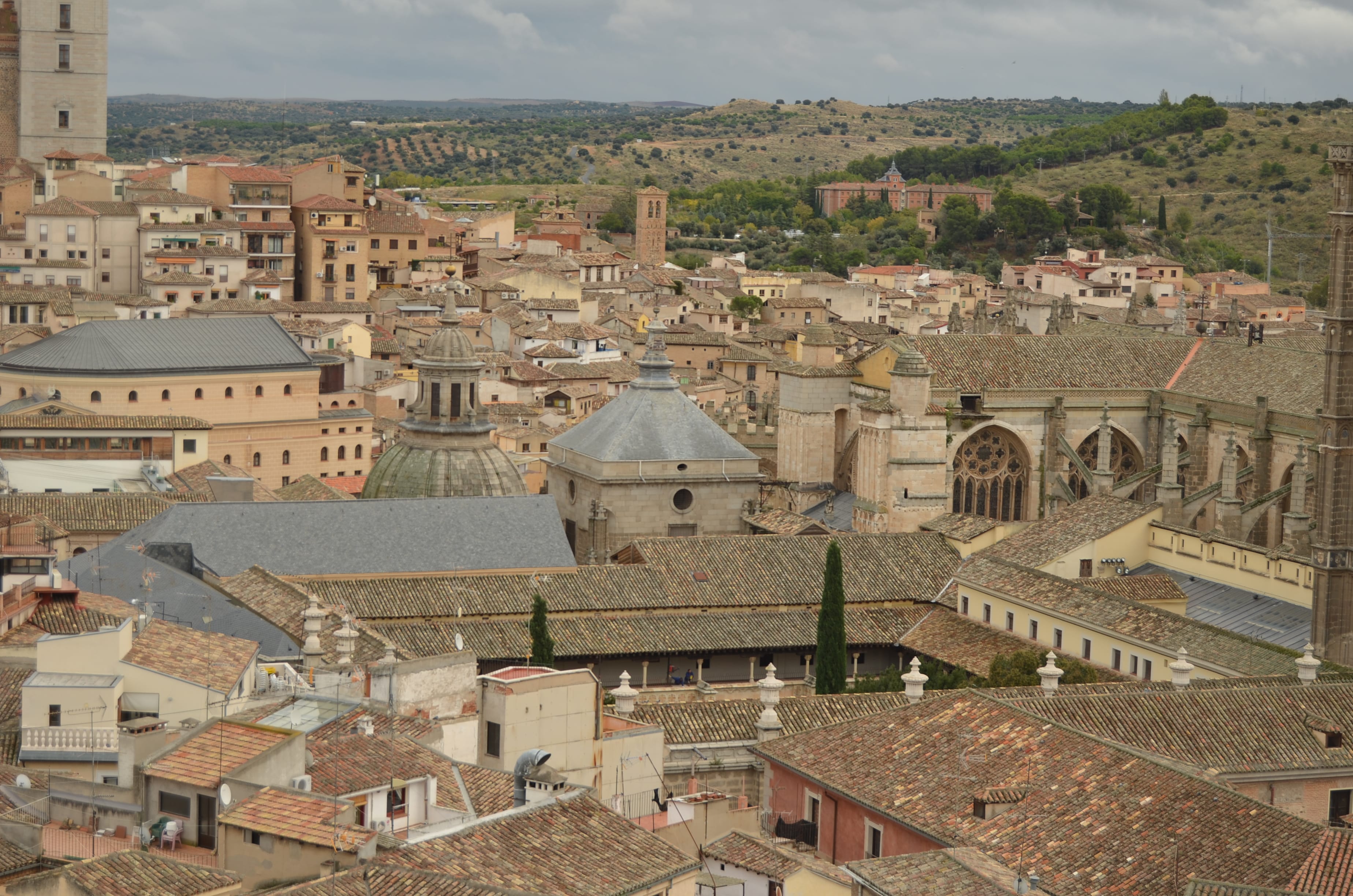
Just a short drive from Madrid is Toledo, a unique city where diverse cultures have historically lived in harmony. One of the best ways to learn about the storied multicultural history of Toledo is to wander through its historic walled neighborhoods, home to monuments from Jewish, Muslim, and Christian cultures.
One of the more fascinating parts of Toledo is the old Jewish quarter, with its narrow cobblestone streets and synagogues–one of which is possibly (it’s a contested fact) the oldest synagogue still standing in Europe.
Local tip: Toledo is also famous for making the best swords and shields on the planet, so stop by a steelsmith and check out their wares.
#14: Drink Spain’s most coveted wines in La Rioja

There’s no arguing that Spanish wines are among the best in the world, and the region of La Rioja is internationally known for vineyards that turn out some of the most sought-after bottles on the market.
If you head to the town of Haro (home of the world’s biggest wine fight—La Batalla del Vino–mentioned above) locals suggest taking a tour of Bodegas Muga. Bodegas Muga is not only a top-shelf winery but it is also one of the few wineries that still makes their own barrels.
Not going to make it to La Rioja? Check out the cava in Penedès instead.
#15: Bask in the sun on Ibiza
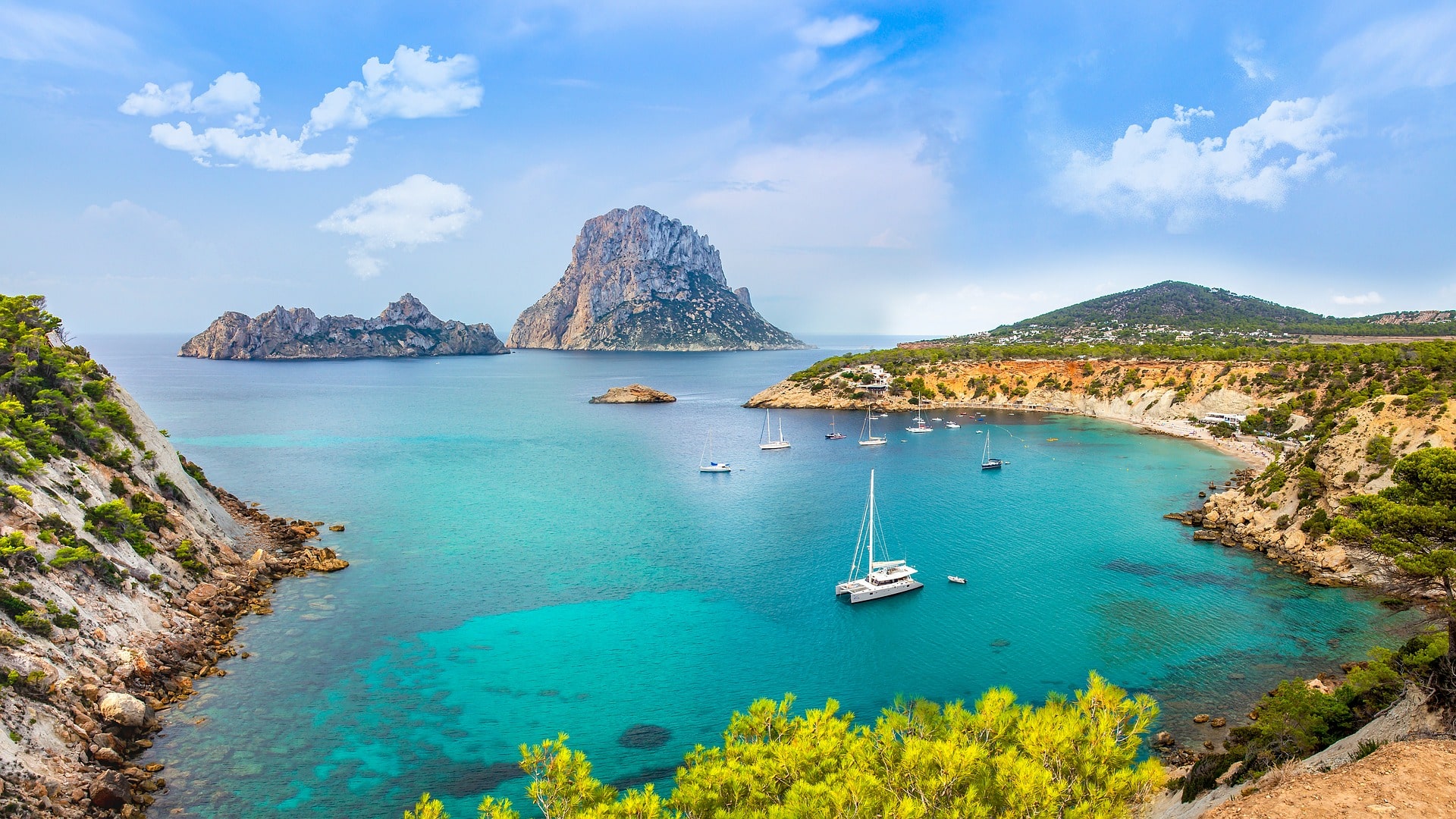
There’s much more to Ibiza than A-list celebs, glitz, and glam. Spend your days at the jaw-dropping beaches and take a tour of stunning whitewashed villages in Ibiza’s quiet rural interior.
Locals tell us that nature lovers will have a field day at Ses Salines, a huge wetland escape on the island’s southern coast. They suggest skipping the fancy overcrowded hotels and checking out the agroturismos—traditional farmhouses turned into stylish rural hotels. There, the pace of life is slower and meals are homemade.
Local tip: Visit in October, when the summer crowds have left. Hotel prices are cheaper and you might even get the beach to yourself.
#16: Catch a soccer match at Santiago Bernabeu or Camp Nou
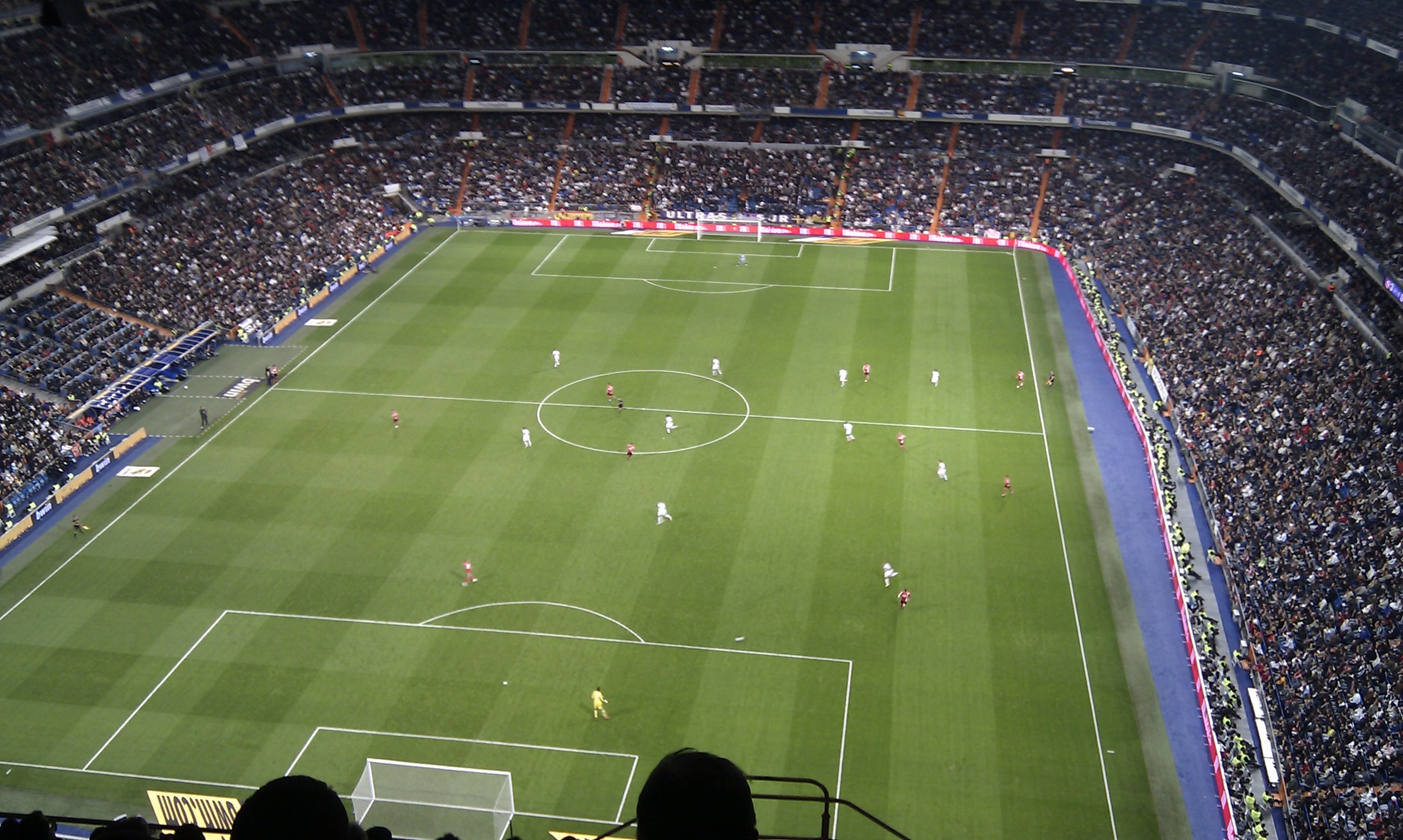
You won’t find more passionate sports fans anywhere in the world than the Spanish—and their sport of choice is, of course, fútbol (soccer). The two biggest clubs in Spanish soccer are FC Barcelona and Real Madrid and they play their home matches at two of the most famed venues in Europe: Camp Nou and Estadio Santiago Bernabeu.
If you want to learn about the history of these iconic Spanish teams, both stadiums offer tours and have museums that pay tribute to their glorious histories.
But we agree with our locals in Spain. The best way to experience this slice of Spanish culture is by throwing on a jersey and catching a game.
#17: Visit the Prado National Museum

The Prado (Museo Nacional del Prado) is the official national museum of Spain and home to the Spanish royal collection. In the Prado’s permanent collection are thousands of works of art by hundreds of artists including Bosch, Titian, El Greco, Rubens, Velázquez, and Goya.
Some of the most famous paintings in Prado’s permanent collection are Velázquez’s Las Meninas and the Garden of Earthly Delights by Bosch.
The Prado is in central Madrid and visits are ticketed at a cost, but you can also enter during some specific free access hours.
If you’re not headed to Madrid on your trip to Spain, you could also check out the Picasso Museum in Malaga or the Dalí Museum in Figueres so as not to miss the opportunity to see world-famous art in person.
#18: Visit the Real Alcazar de Seville
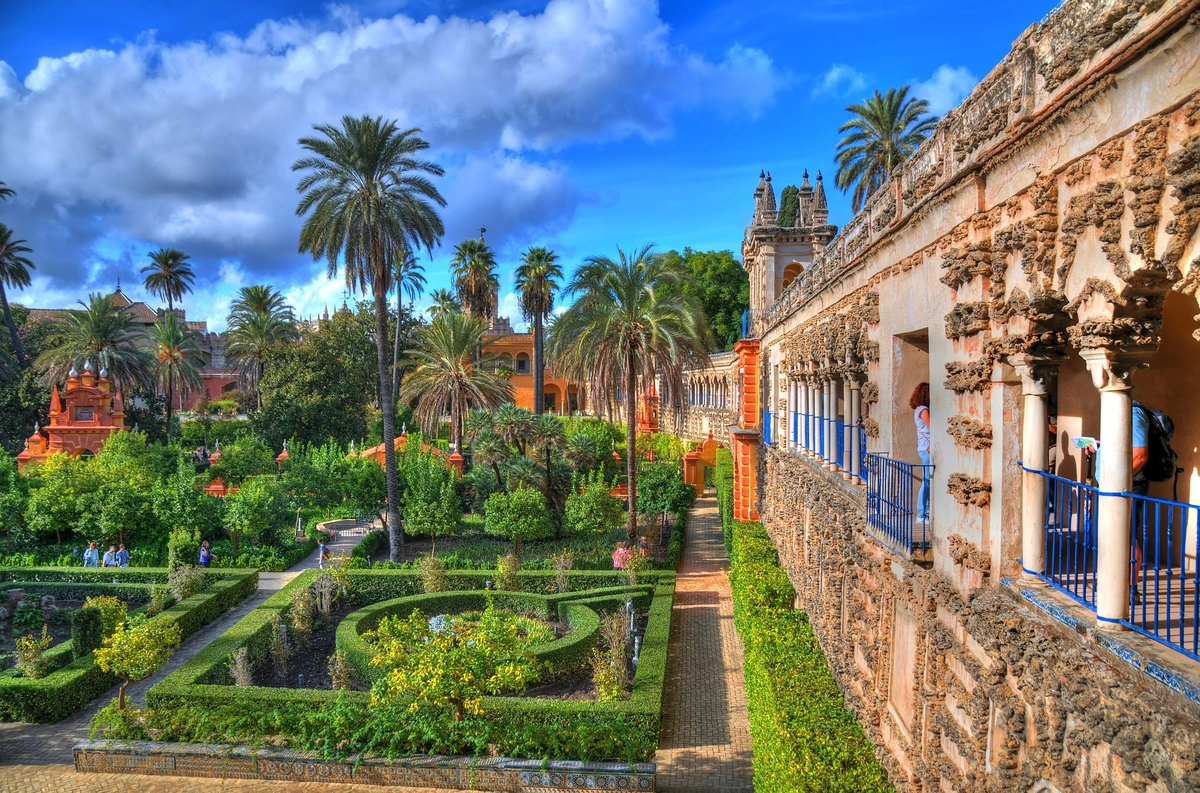
The Alcazar is an expansive property centered around the stunning palace and full of lush gardens–it’s definitely one of the spots that should be high on your list of places to visit in Spain! Originally a Muslim fortress, the Royal Palace that stands today was built over top of the original structure in the 1300s for the Christian king Pater of Castile.
Visiting the Alcazar is a great day (or half day) out in Seville, but to make sure you get the most out of it and aren’t just standing around in a ticket line in the sun, book online in advance and get straight to exploring the magnificent palace and the gardens surrounding it, which have been growing for more than a thousand years. Or, head over on a Monday when entrance is free.
#19: Enjoy all the local cuisine
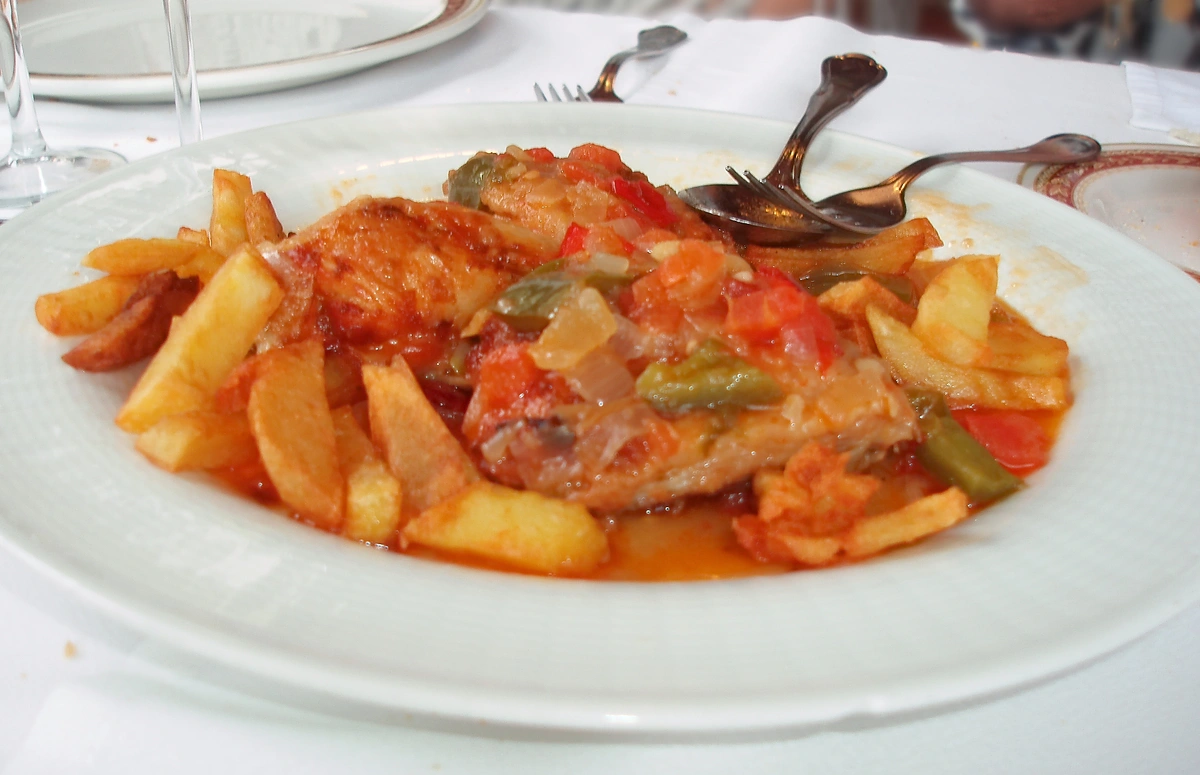
Paella in Valencia, tapas in Madrid, and pintxos in San Sebastian are all great gastronomical experiences. But there is so, so much more exceptional Spanish cuisine to be sampled and enjoyed. Some other highlights across a few of the country’s 17 regions are:
- Almadraba tuna in Cadiz–a tuna caught in a special way
- Chilindrones in the Pyrenees–a roasted red pepper stew
- Hormigos in La Rioja–a honey-based dessert
- Fabada in Asturias–a white bean stew
- Tetilla in Galicia–a soft cheese
#20: Find a spot of sun to sunbathe
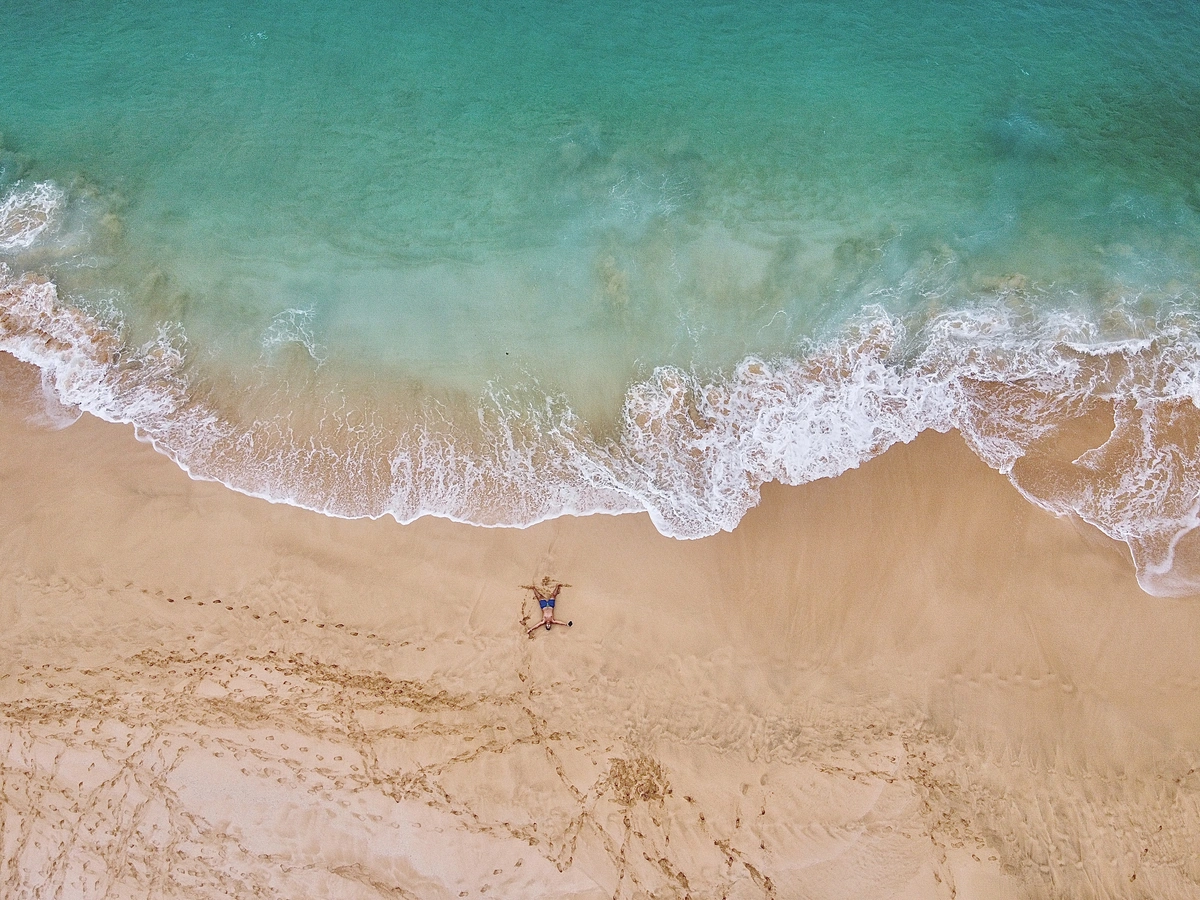
Ibiza is a great getaway with plenty of beaches to choose from, but with thousands of miles of coastline and plenty of other islands dotting the waters, it’s far from your only option in Spain for stunning stretches of sand or crashing waves.
The Mediterranean coastline provides calmer seas and warmer waters while the Atlantic coast offers a more wild and rugged ocean vibe.
Check out some of the best beaches across the entirety of the country, no matter which beach scene sounds ideal to you:
- La Concha Beach in San Sebastian
- Ses Illetes in Formentera
- Cala Agulla in Majorca
- Tossa de Mar on the Costa Brava
- Bogatell in Barcelona
If you’re a total beach bum, try and see how many unique beaches you can fit onto your perfect Spain itinerary, just don’t forget the sunscreen.
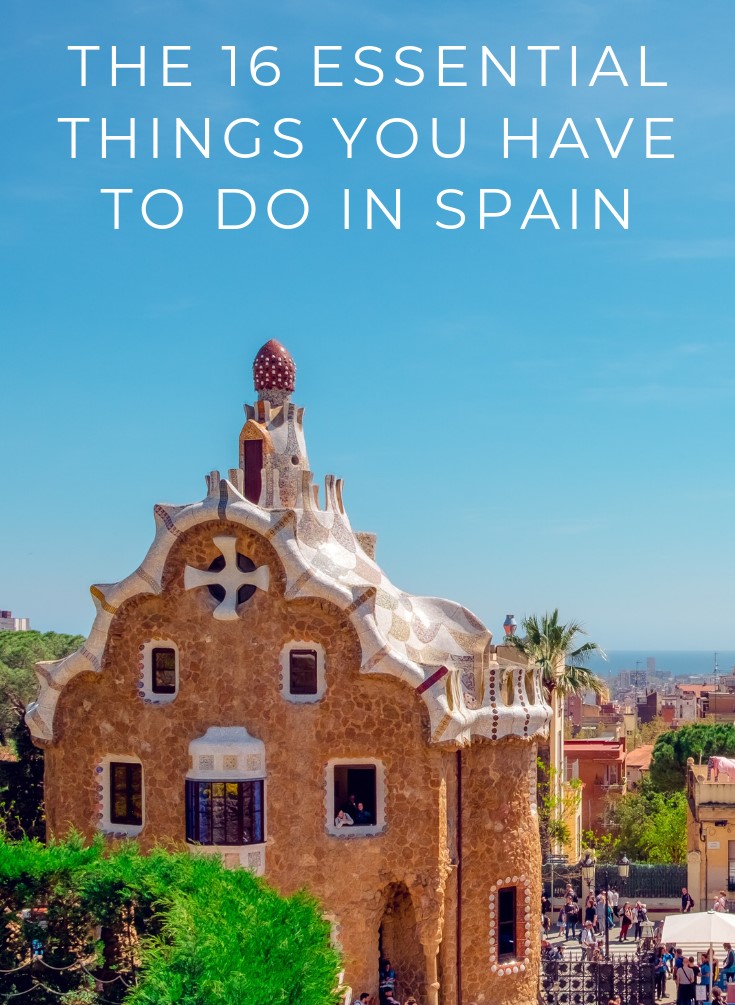
Leave a comment:

Select Account Type
Sign-up with
Almost there!
Find booking.
Promotional Title
How should we contact you?
Thank you! We'll get back to you as soon as possible!
Click to register and track your question !
If you would like to follow up with us:
+1 (855) 782-3006
Forgot your password?
Enter your email address below and we'll send you a reset link:

COMMENTS
Let's explore the best things to do in Córdoba: 1. Mosque-Cathedral of Córdoba. Source: flickr. Mosque - Cathedral of Córdoba. One of Spain's cultural wonders, this astounding complex dates to the 900s at a time when Córdoba was Europe's leading city for science and culture under the rule of Emir Abd-ar-Rahman.
History Museums. Historical residence featuring 12 themed courtyards and a sequence of 18th-century gardens, complete with orange trees and intricate mosaics. Offers garden tours and showcases art and antiques. See ways to experience (3) 2024. 6. Patios de Cordoba. 2,611. Points of Interest & Landmarks.
Visit Cordoba: The 15 Must-See Attractions. 1. Jewish Quarter of Cordoba (La Judería), the heart of the city. To enter the historic center of Cordoba, you will pass through the Almodovar Gate, surrounded by its high walls and battlements. It marks the entrance to La Judería, the old Jewish quarter of Cordoba.
Hermitage of San Roque, Torrox, Axarquía Costa del Sol, Malaga, Andalusia, Spain . It is a delightful 15-kilometer journey from Córdoba to Las Ermitas in the Sierra Morena foothills. This soul-inspiring place includes a complex of 13 hermitages founded in the 18th century, which, since 1957, have been managed by the Discalced Carmelites.
TABLE OF CONTENTS ». 1. Visit the famous Mezquita-Catedral de Córdoba. Mezquita-Catedral de Córdoba is a landmark tourist attraction in Córdoba and is one of the main reasons people visit this city. It is a spectacular cathedral that was once a mosque when Córdoba was under Islamic rule.
Bodegas Mezquita Ribera: Located next to the river between the Roman bridge and the Miraflores bridge, with outdoor seating, the Bodegas Mezquita Ribera is a great place to try typical Cordoba cuisine. Visit at lunchtime and order the Menu del Dia for less than 15€. Address: Calle Céspedes, 12. 14003.
See ways to experience (12) 2024. 10. Museo Arqueológico de Córdoba. 730. History Museums. Chronological exhibits trace the area's history, focusing on the Roman era with well-crafted displays and artifacts. Informative commentary available in English and Spanish.
Noria de la Albolafia. Córdoba. This ancient, much-restored water wheel on the edge of the Río Guadalquivir was originally built by emir Abd ar-Rahman II in the 9th century to send water…. Discover the best attractions in Córdoba including Mezquita, Palacio de Viana, and Medina Azahara.
This building of incredible architectural beauty reveals the city's Visigothic, Christian and Arab past. - Cordoba Patios Festival: the people of Cordoba decorate their courtyards (patios) with beautiful flowering plants, and a competition is held in May to find the best. - Historic Centre of Cordoba: the main places to discover in Cordoba ...
Torre Campanario (Mezquita Bell Tower) The bell tower of the Mezquita, known as Torre Campanario, stands tall and proud over Cordoba, and is visible from several places in the city. You can climb to the top of the tower for views over the Mezquita, the river and old Roman Bridge, and the rest of the city of Cordoba. Hours: 9:30-6:30. Cost: 3 euro.
Great Mosque of Cordoba. Medina Azahara. Alcázar fortress of the Christian Monarchs. Roman Bridge and Bridge Gate. Calahorra Tower. Plaza de la Corredera Square. Calleja de las Flores Alley. Palace of the Marquises of Viana. Roman temple.
Here are the best things to do in Córdoba, Spain: #1 Be Awed by the Mezquita de Córdoba! Córdoba's spectacular Mezquita, its mosque-cathedral, is easily the city's top attraction, the one sight you just cannot miss in Cordoba. Place a visit to the Mezquita at the top of your list of the best things to do in Córdoba!
Painting in Cordoba's Julio Romero Museum. Córdoba's most visited museum is devoted to the beloved local painter Julio Romero de Torres (1874-1930). Housed in a former hospital, the museum (4€ entrance fee) exhibits the work of Romero de Torres, including some of his famous paintings of Andalusian female beauty. 9.
Spring is the absolute best time to visit Cordoba, Spain, thanks to its gorgeous blooms and milder temperatures. However, the best things to do in Cordoba can be enjoyed year-round! Categories Spain. 25 Bucket List Worthy Things to Do in Iceland. 19 Charming Charleston Photo Spots (Perfect For Instagram!)
Admire the Iconic Mezquita-Cathedral. Most visitors make a beeline for the Mezquita, and little wonder. The Mezquita-Cathedral is the most famous monument in Córdoba and a UNESCO World Heritage Site and a visit to Cordoba wouldn't be complete without coming here.
Best Time to Visit Cordoba As it lies right in the south of Spain in the center of Andalusia, the historic city of Cordoba is extremely hot from June through September. Searing temperatures of 31 to 36°C (88 to 99°F) make sightseeing a challenge with July and August being particularly bad.
The Holy Week of Cordoba. Getting around in Cordoba. Family tourism. Natural environment and active tourism. Self-guided tours. Guided tours and routes. Shopping and crafts. Cordoba, World Heritage Site. Practical information.
A Brief History of Cordoba, Spain; BEST THINGS TO DO IN CORDOBA, SPAIN. 1. Explore the Mosque-Cathedral of Cordoba (Mezquita) 2. Cross the Roman Bridge (Puente Romano) 3. Pass Through the Bridge Gate (Puerta del Puente) 4. Discover the Remains of the Roman Temple (Templo Romano) 5. Visit the Castle of the Christian Kings (Alcázar de los ...
Medina Azahara. Córdoba's Mosque-Cathedral takes some beating as a historical attraction, but Medina Azahara - situated some 8km (5 miles) outside the city - is just as intriguing. In the middle of the 10th century, 'The Shining City' was the adminstrative capital of Al-Andalus, as Moorish-ruled Spain was then known.
Explore Córdoba: the city of flowers, located in beautiful Andalusia, Spain. Discover the top things to do with this complete travel guide. ... Costs of Traveling in Cordoba. Travel on a budget in Cordoba, from $300 − $340 USD weekly per person, mid-range $650 − $1550 USD, and high-end from $1530 − $2130 USD. However, costs depend on ...
What to See in Cordoba. 1. Marvel at the Mezquita - Mosque-Cathedral. The Mezquita Mosque-Cathedral is Cordoba's most famous sight. It was originally built as a Mosque in the 700s when Cordoba and many towns, in what is now southern Spain's Andalusia region, were under Islamic control.
25 Top Places To Visit in Cordoba. Mezquita-Catedral: Explore the stunning mosque-cathedral, a masterpiece of Islamic and Christian architecture. Alcazar de los Reyes Cristianos: Visit this historic palace with beautiful gardens and panoramic views of the city.
Updated September 19, 2023With more than 3,500 miles of coastline, tens of islands, 17 regions, and a population of close to 50 million people who speak five unique languages, it should go without saying that there are countless possibilities of things to do in Spain: from lounging on beaches to indulging in incredible food to exploring architectural wonders.